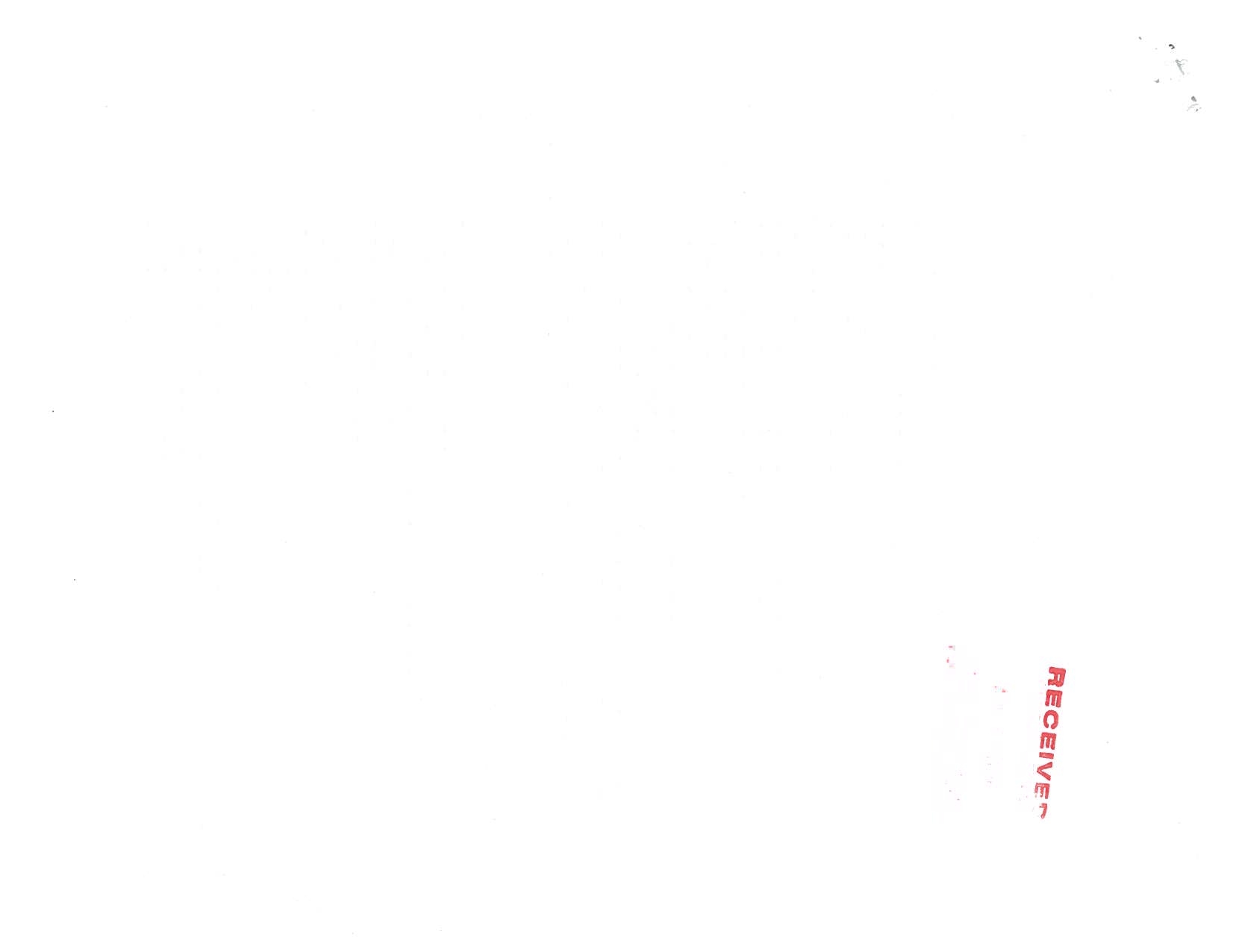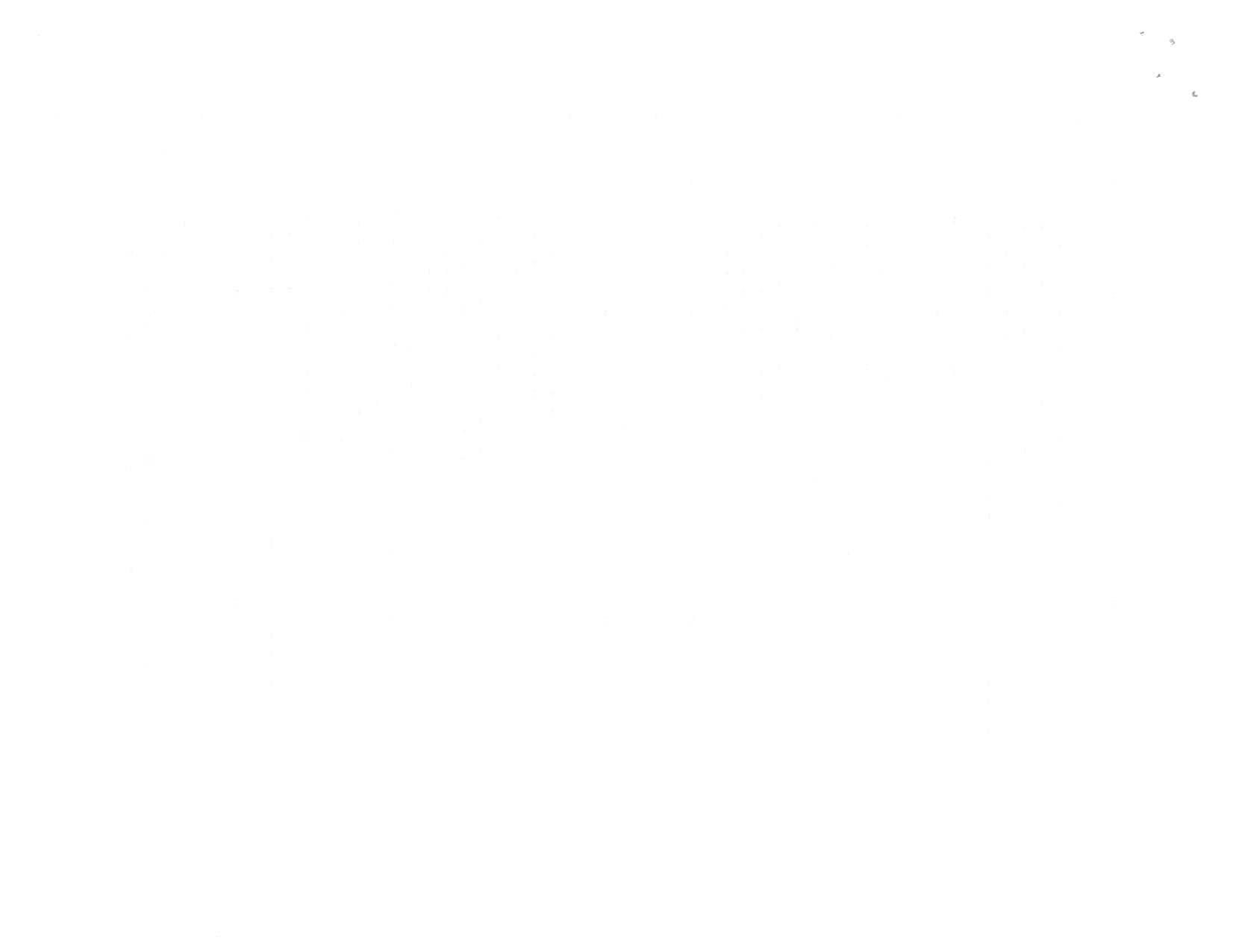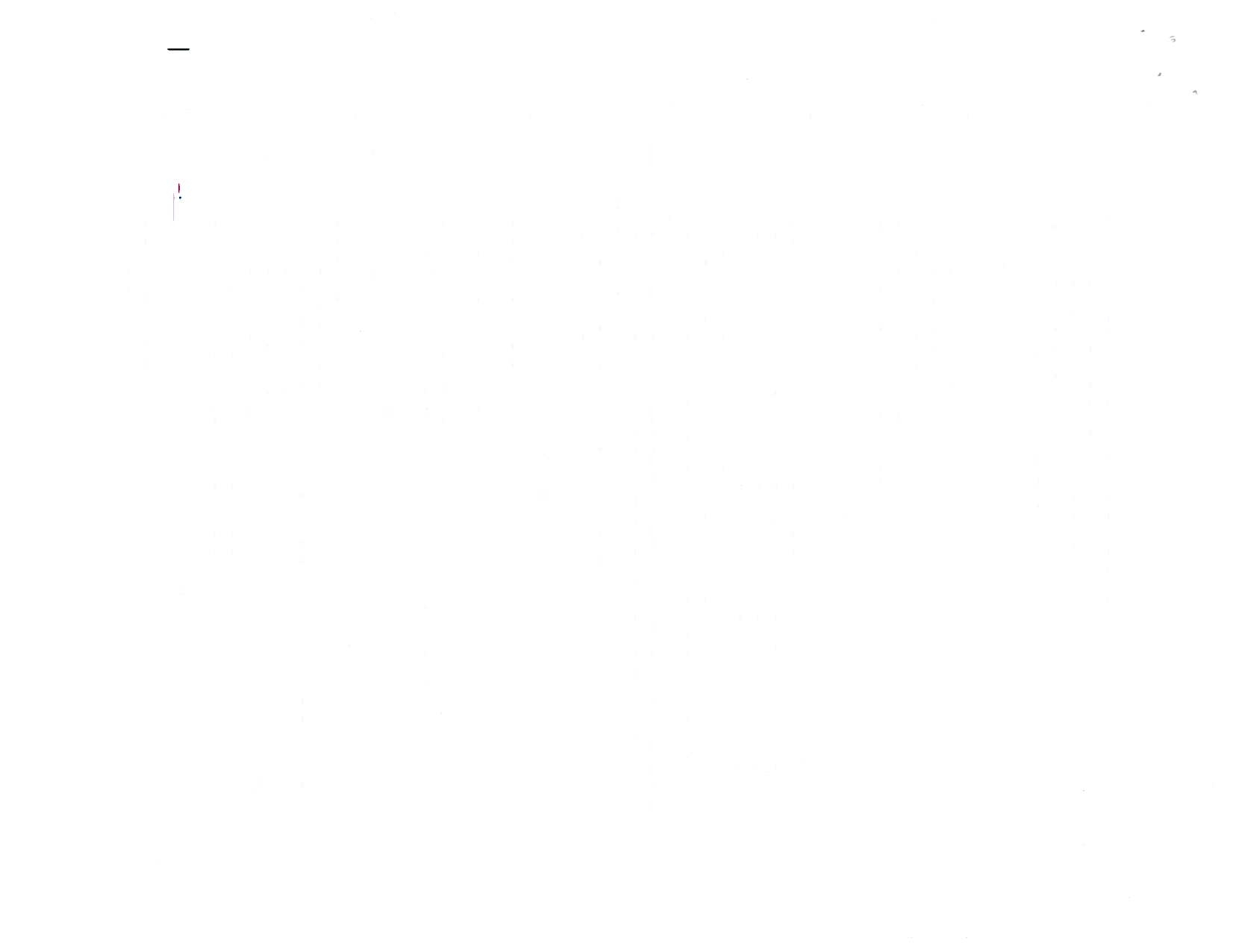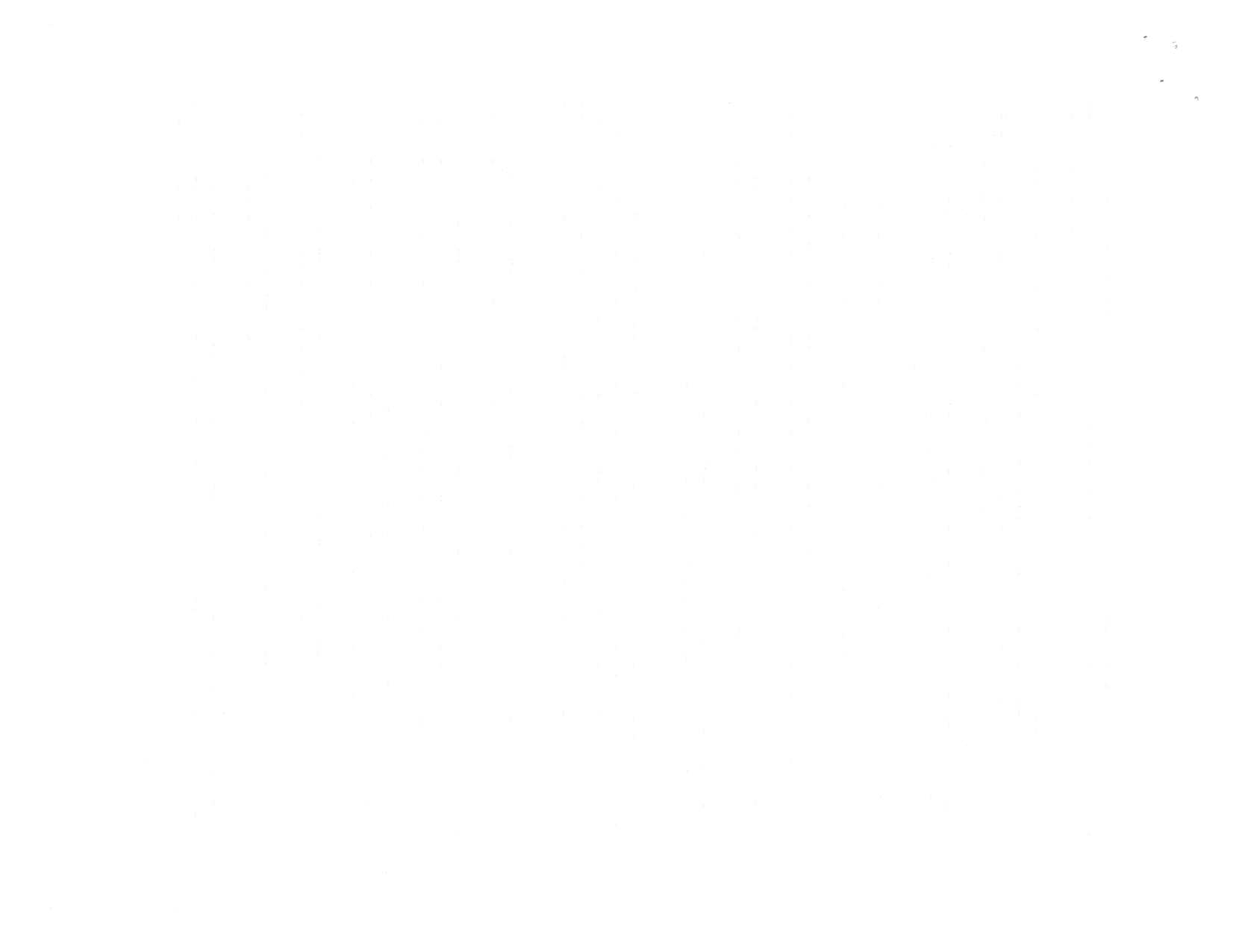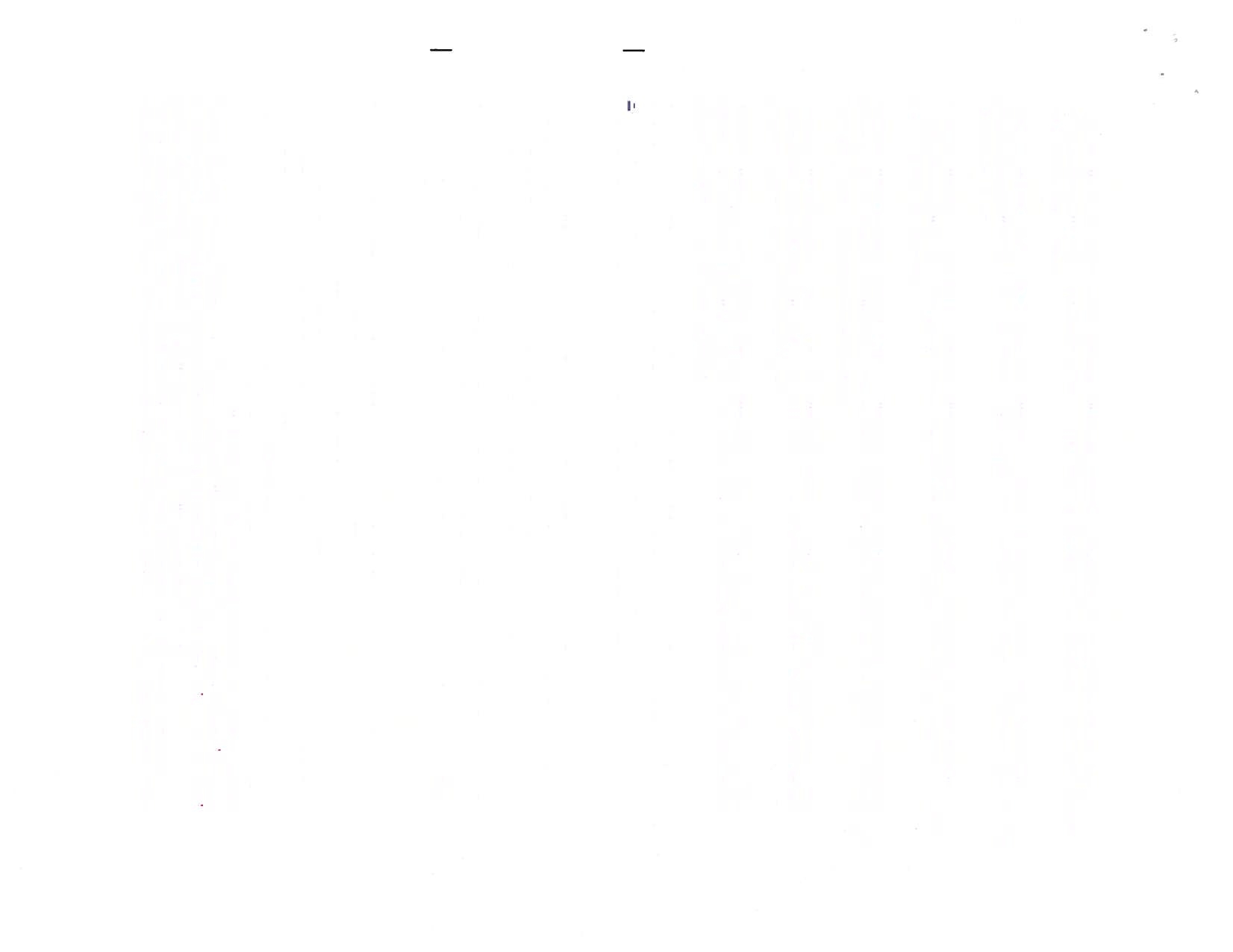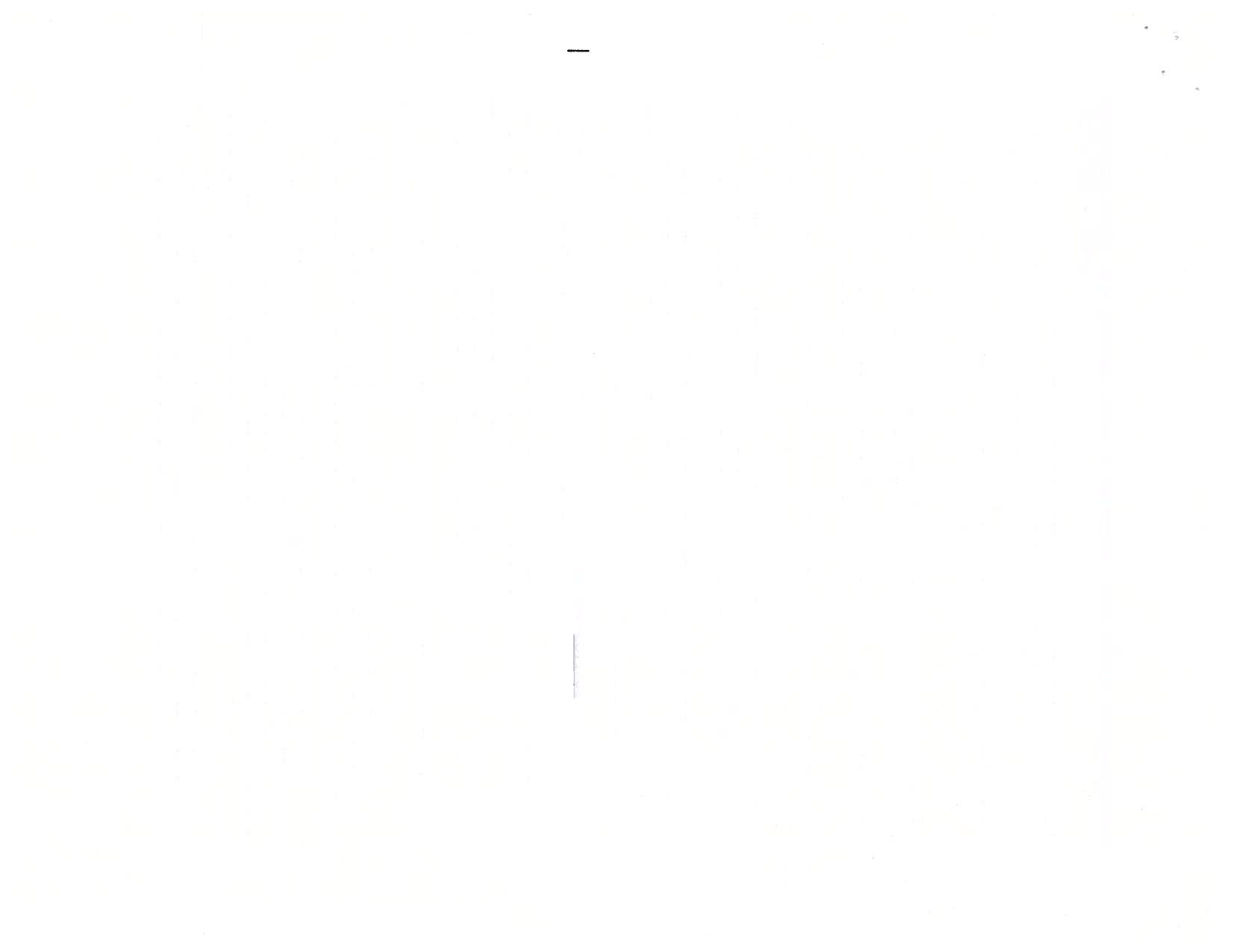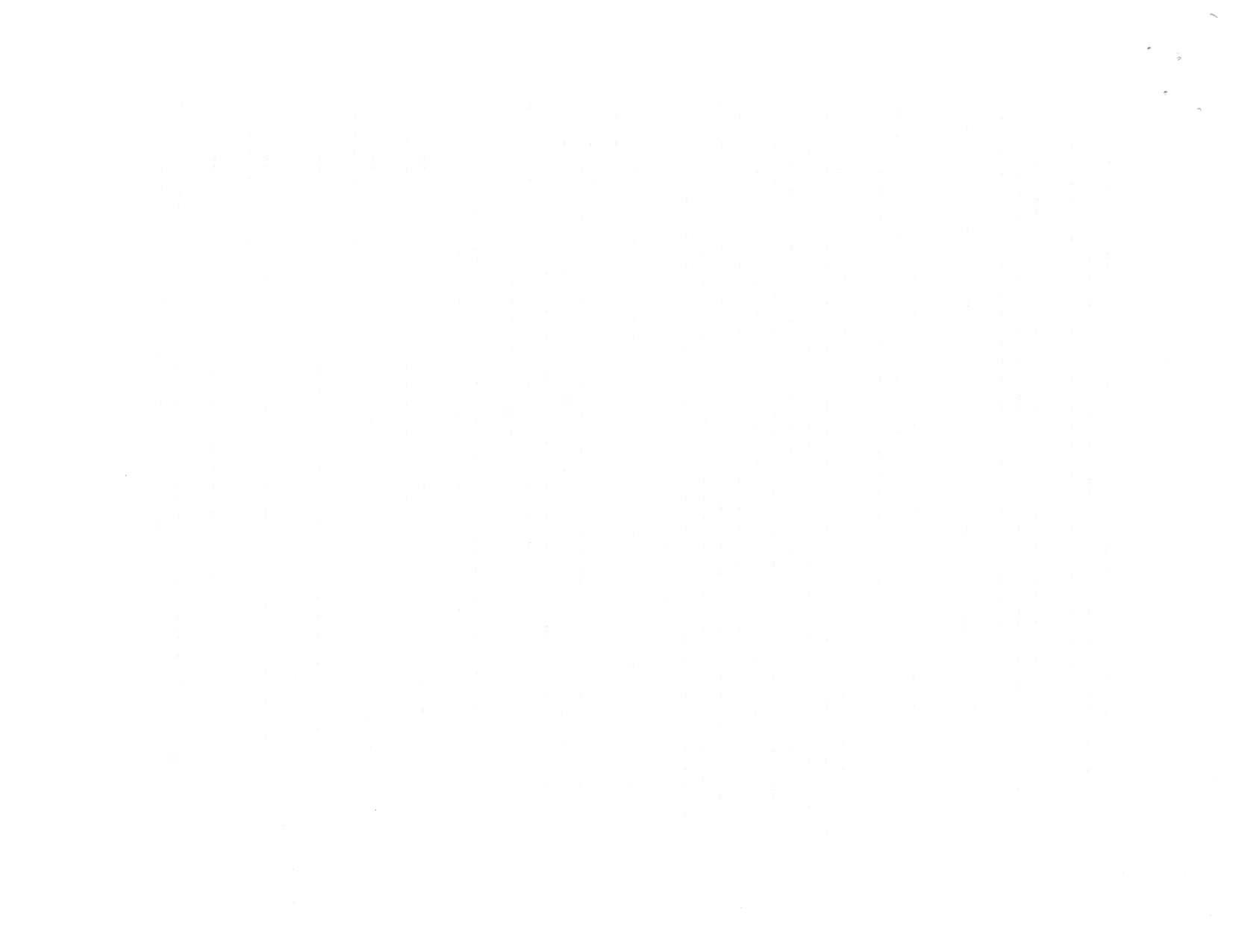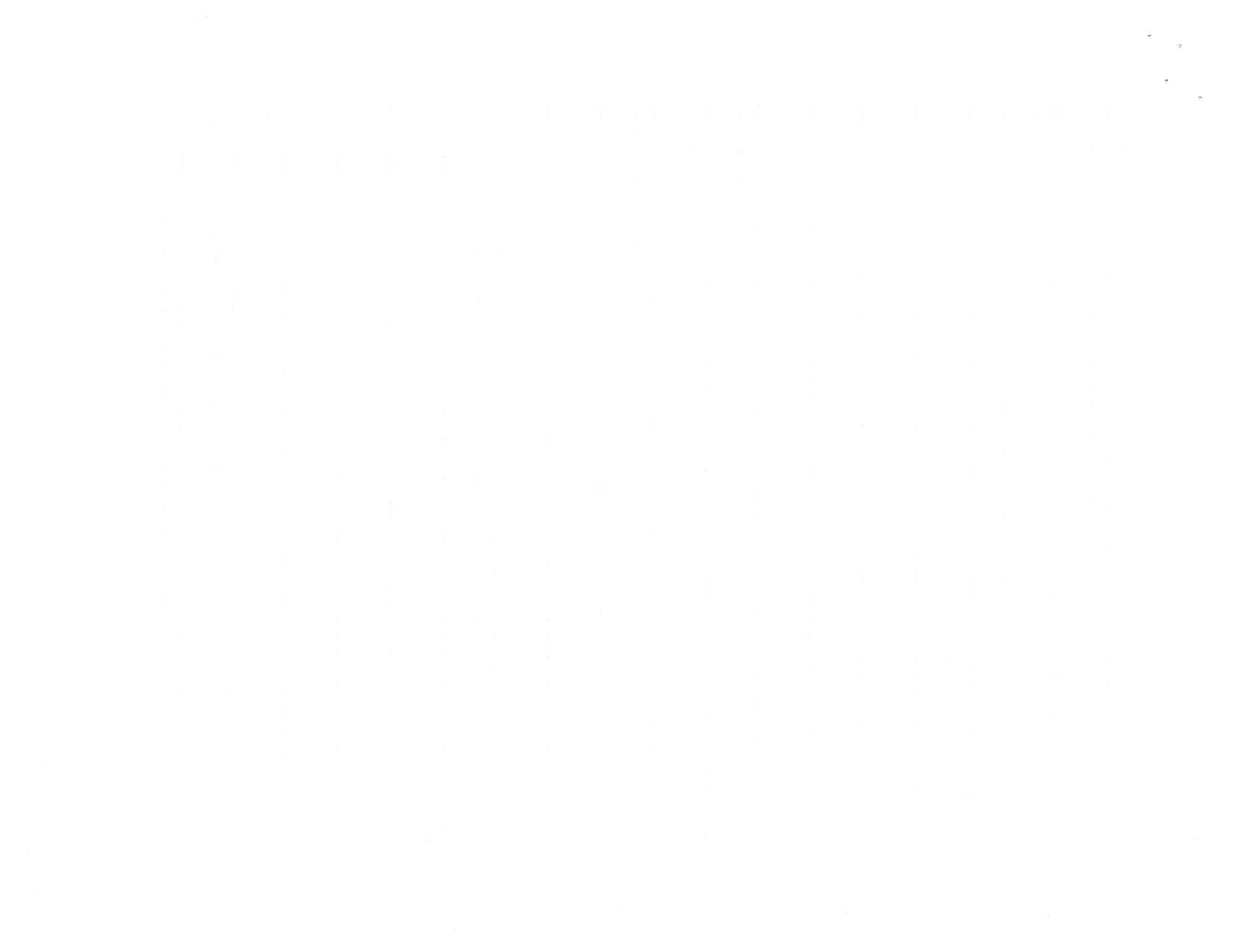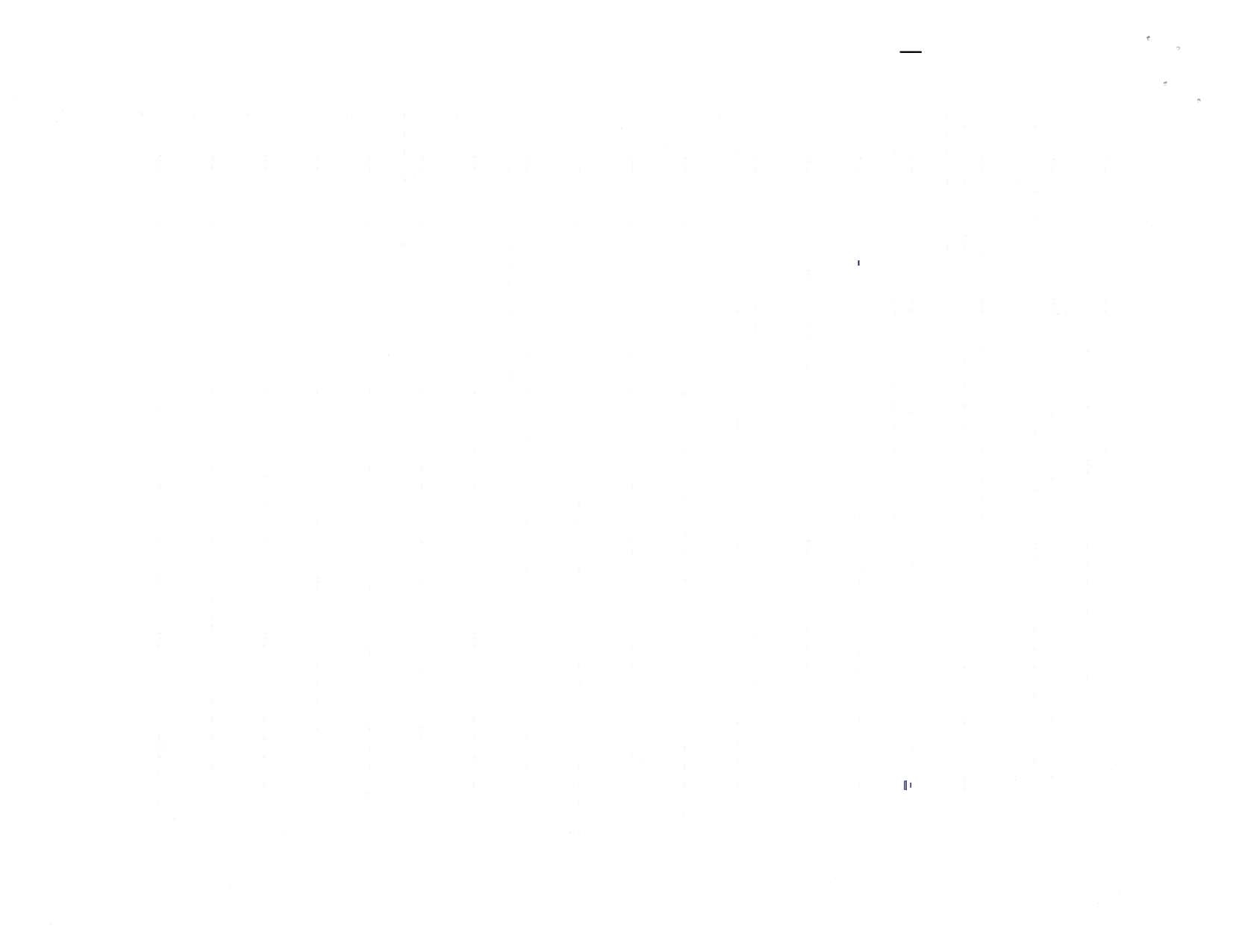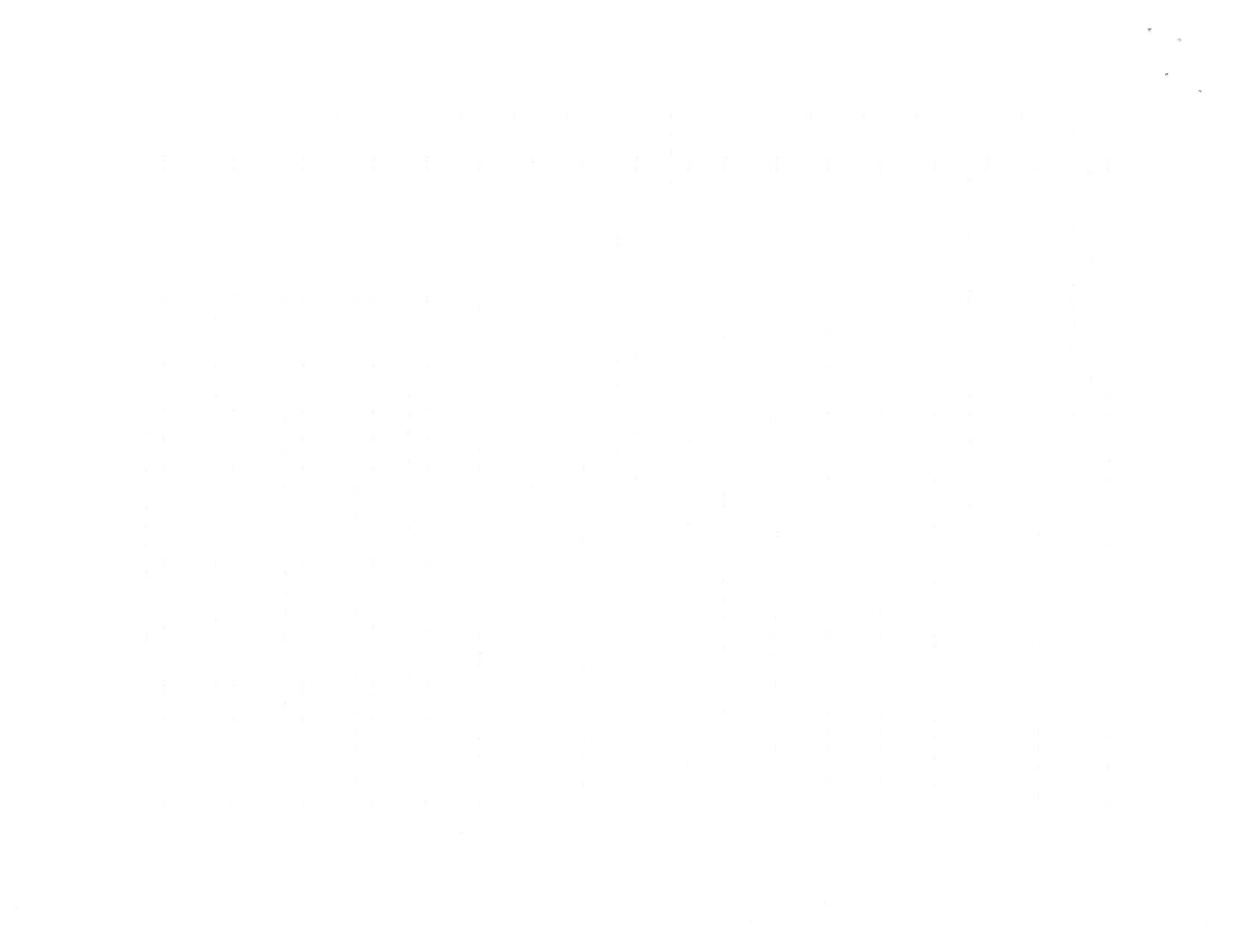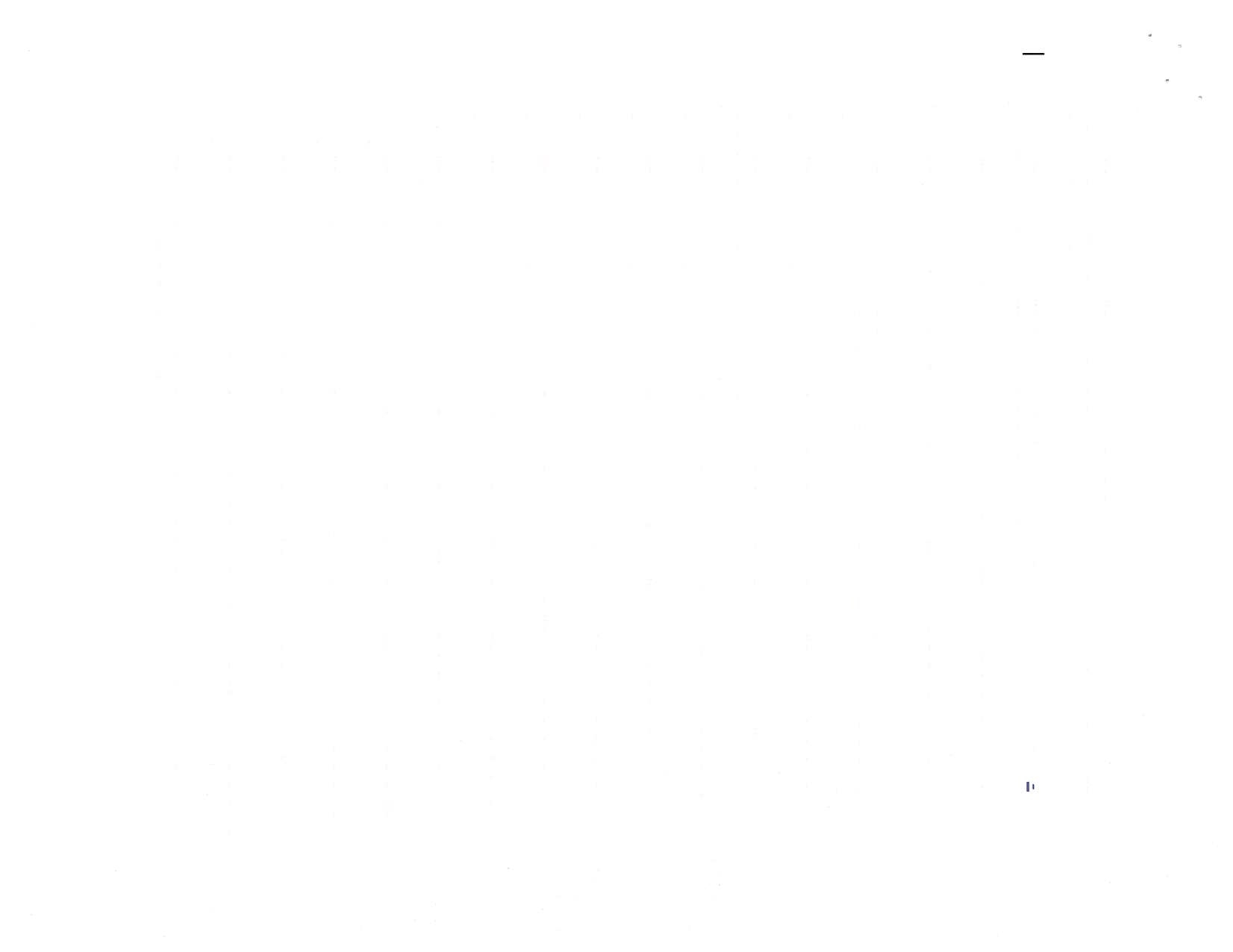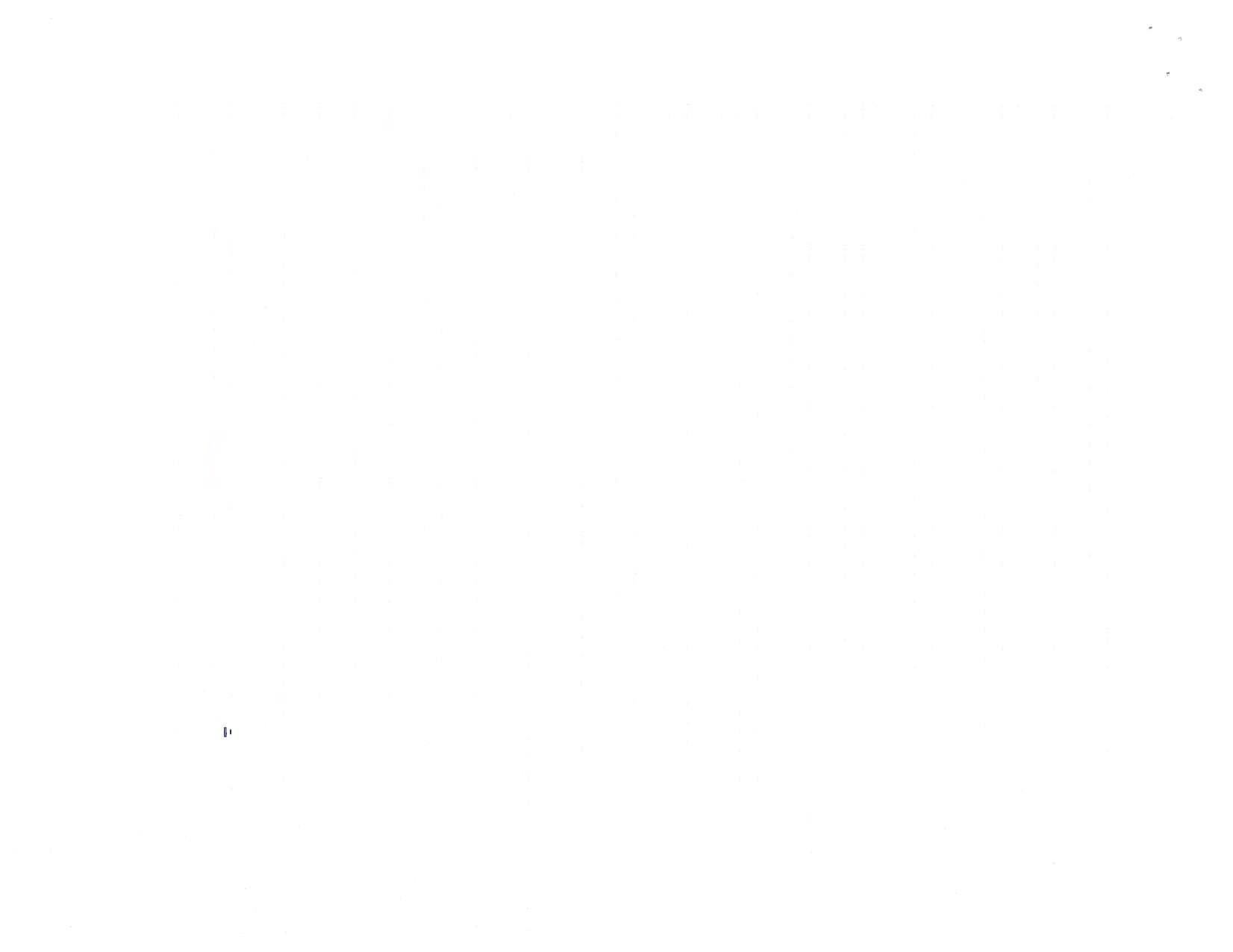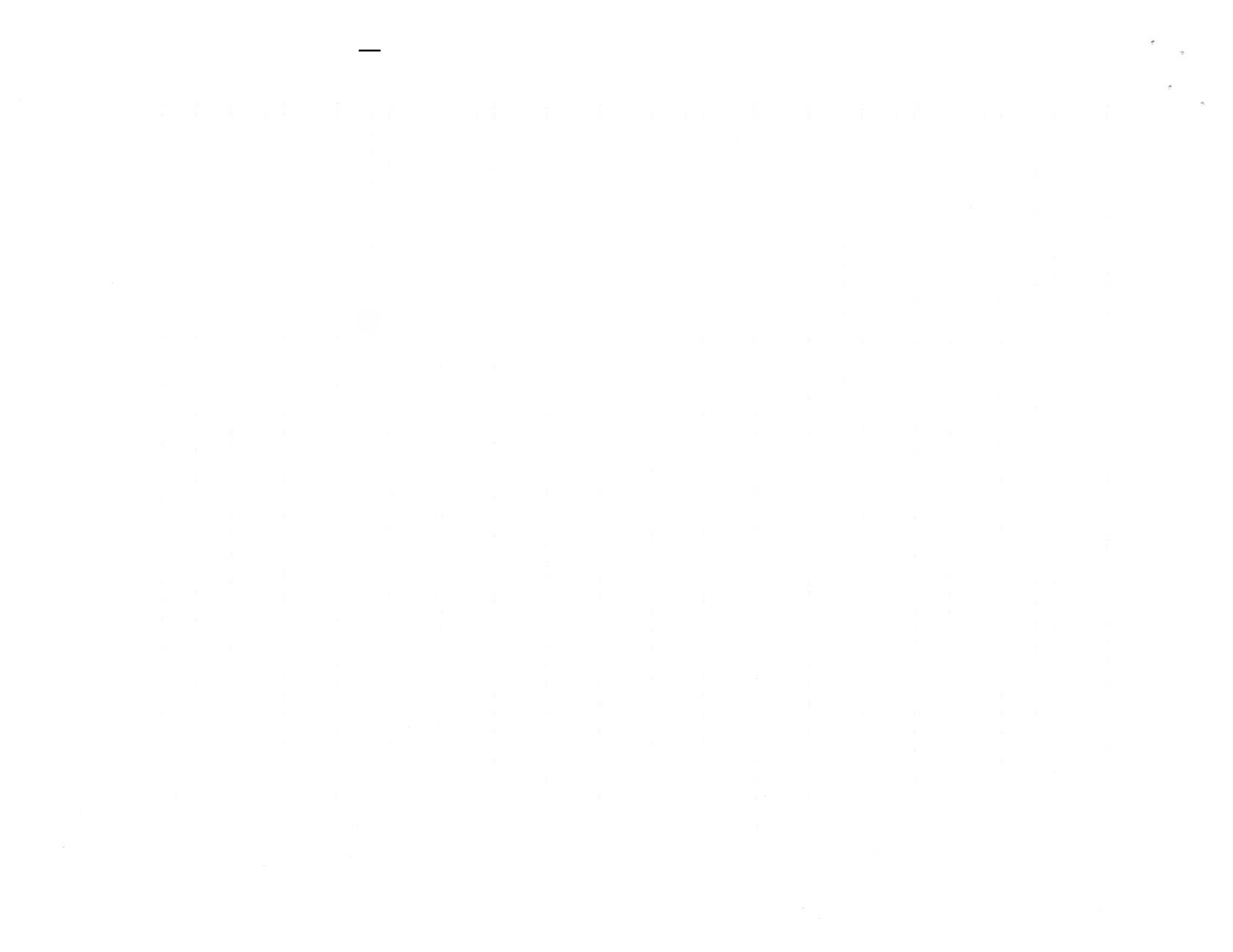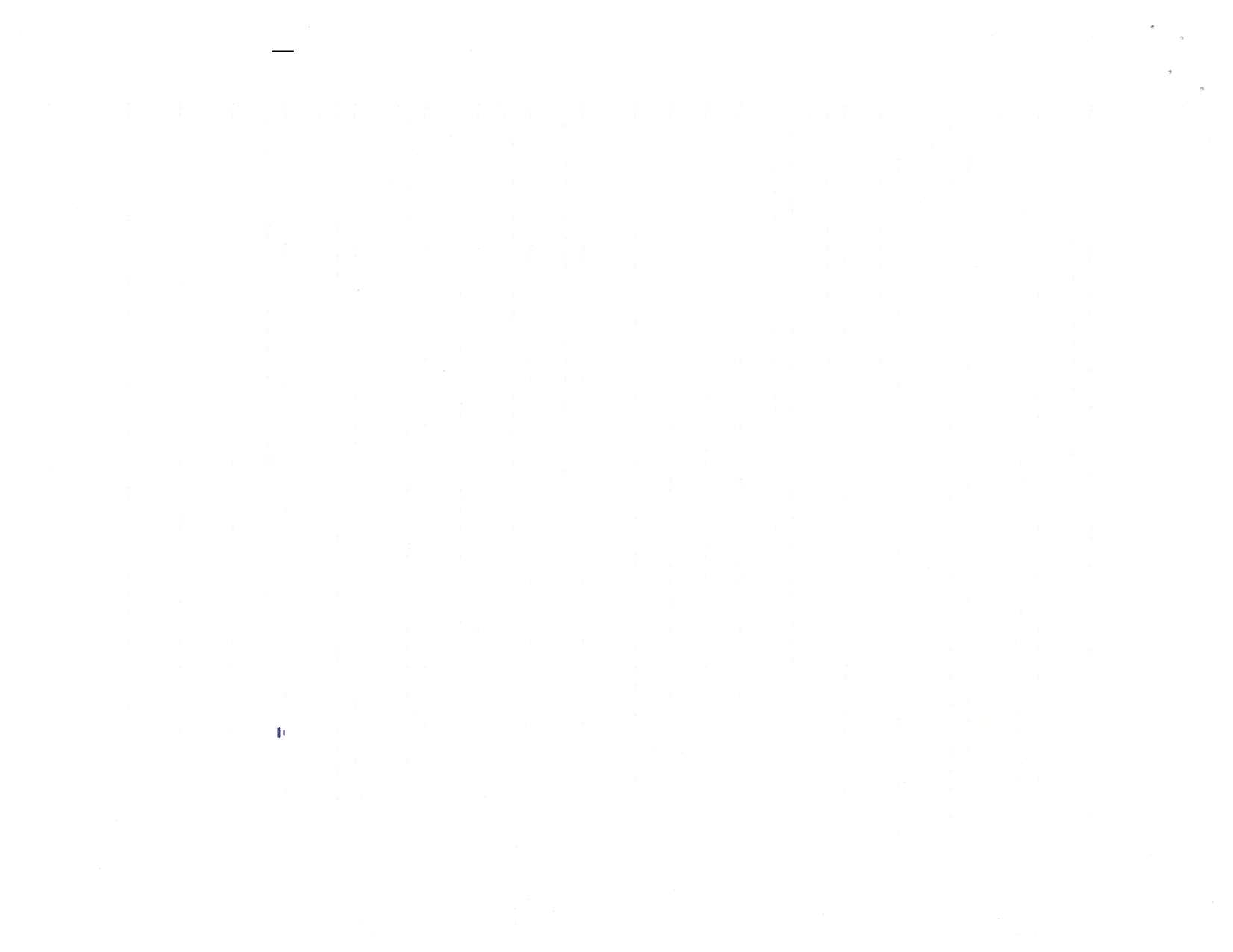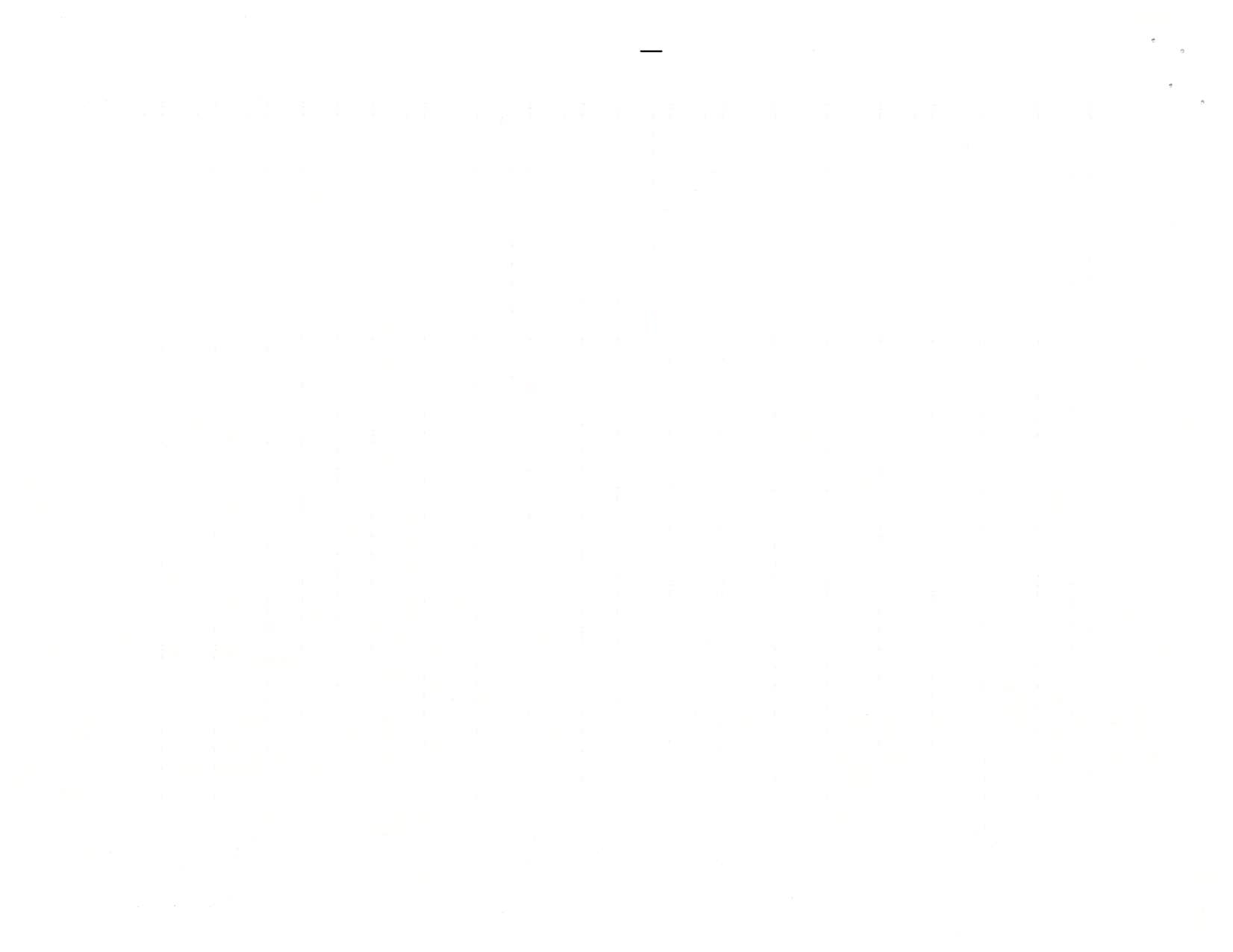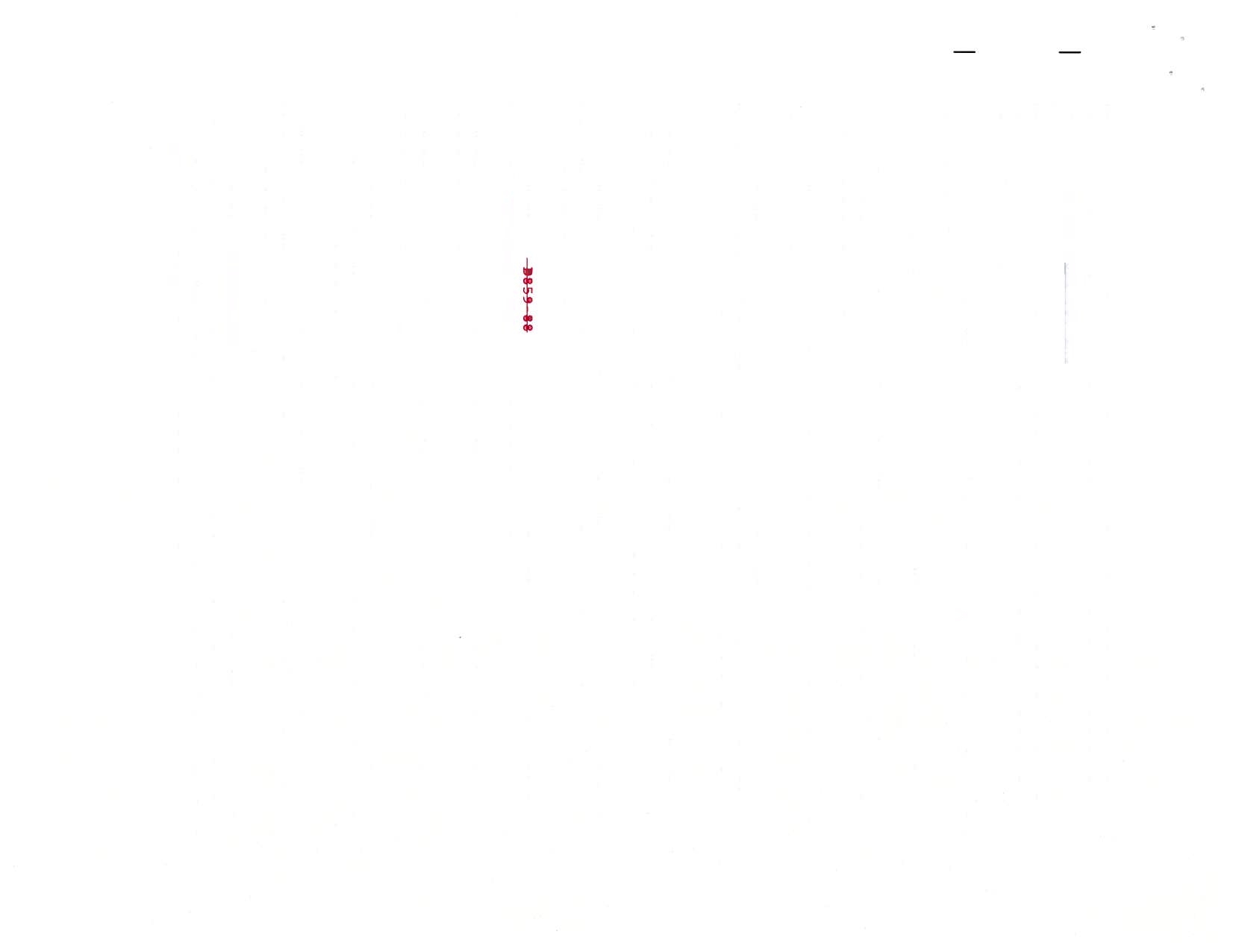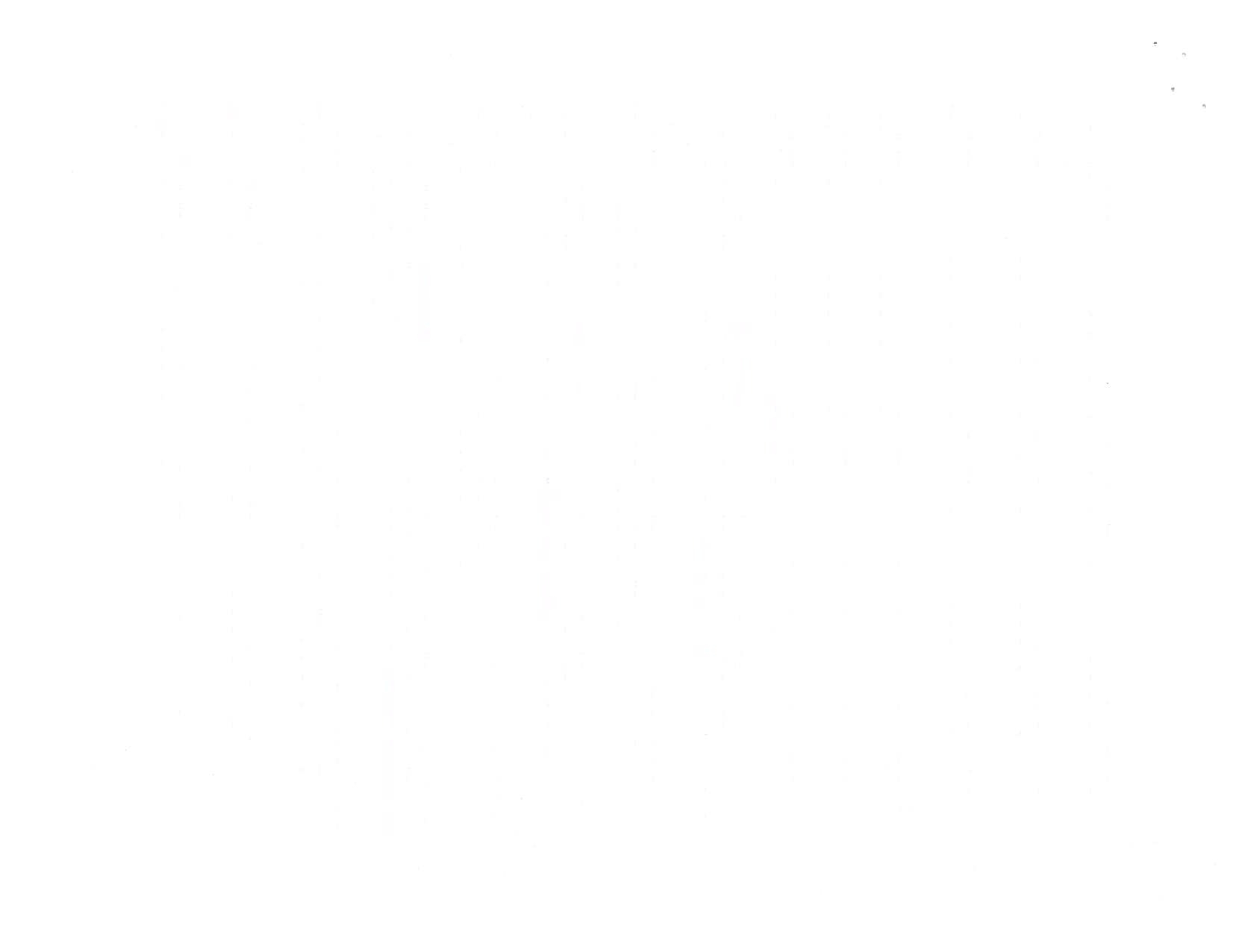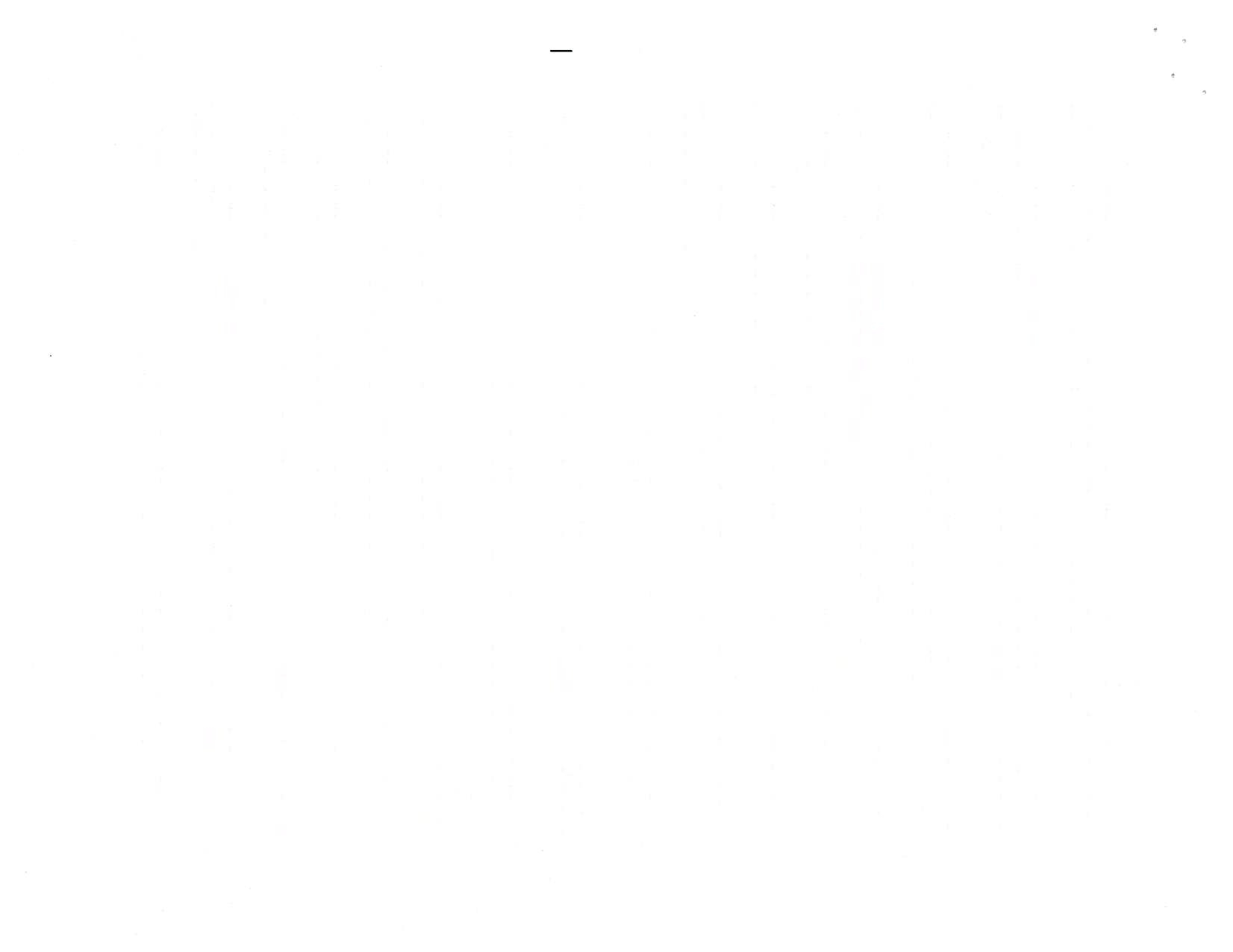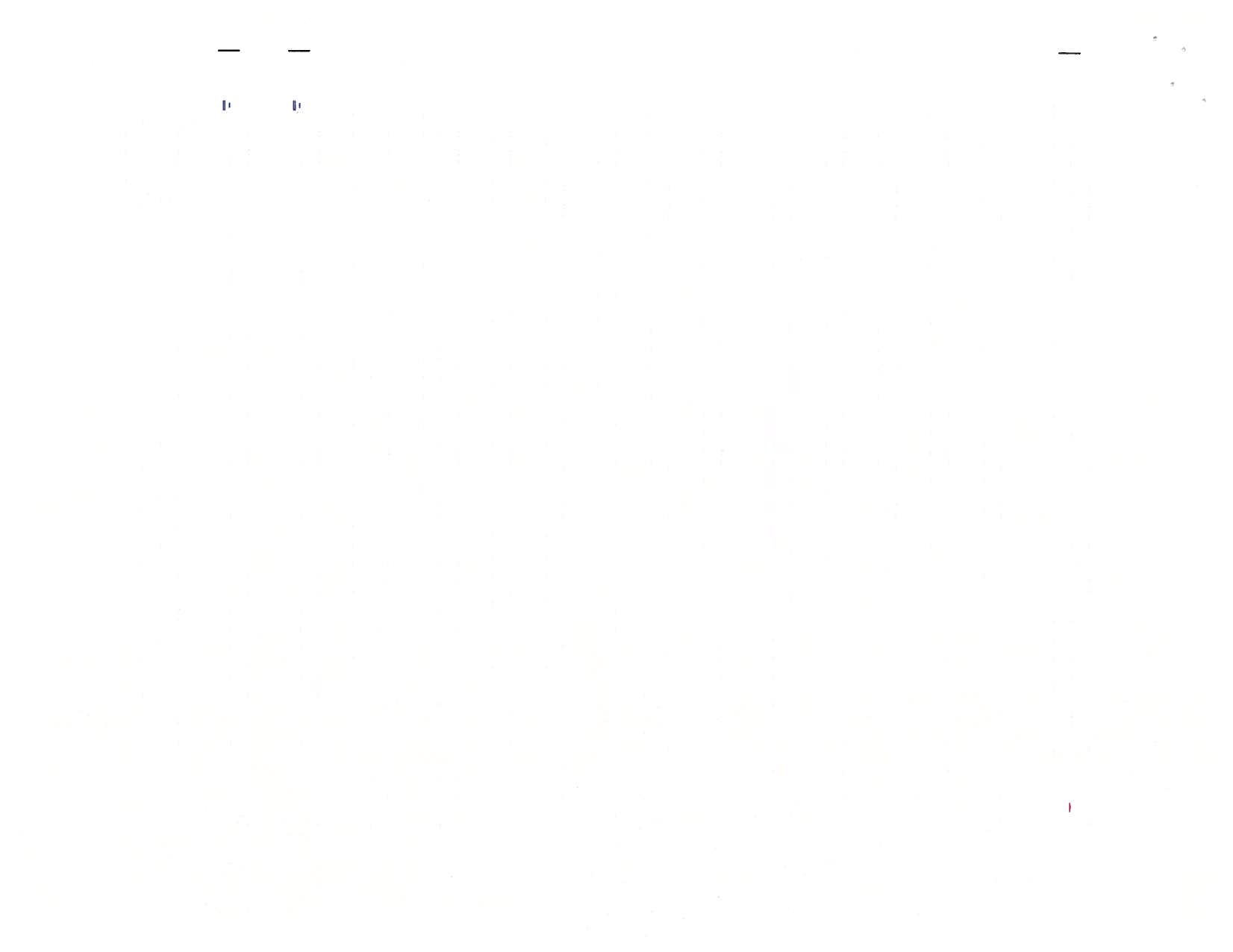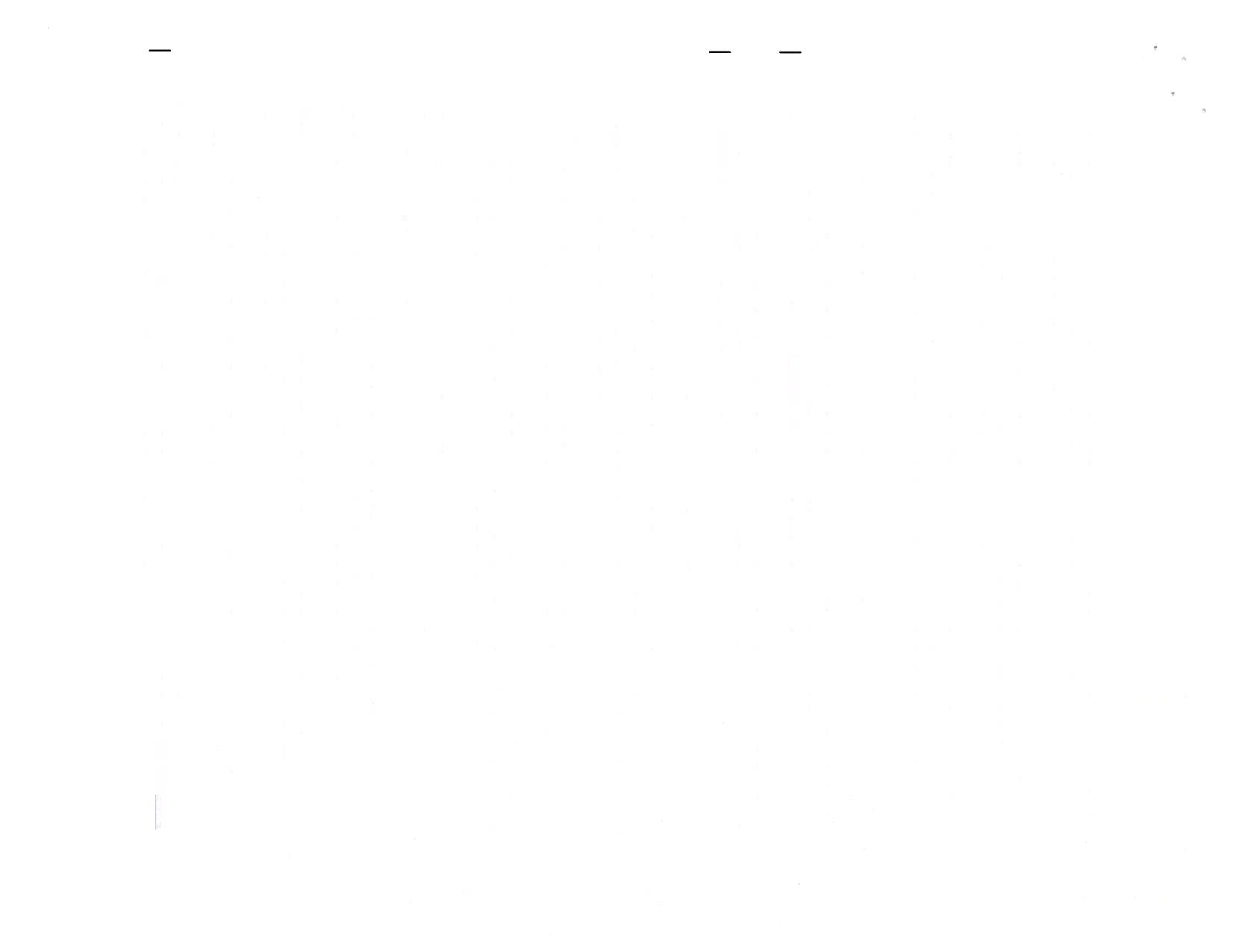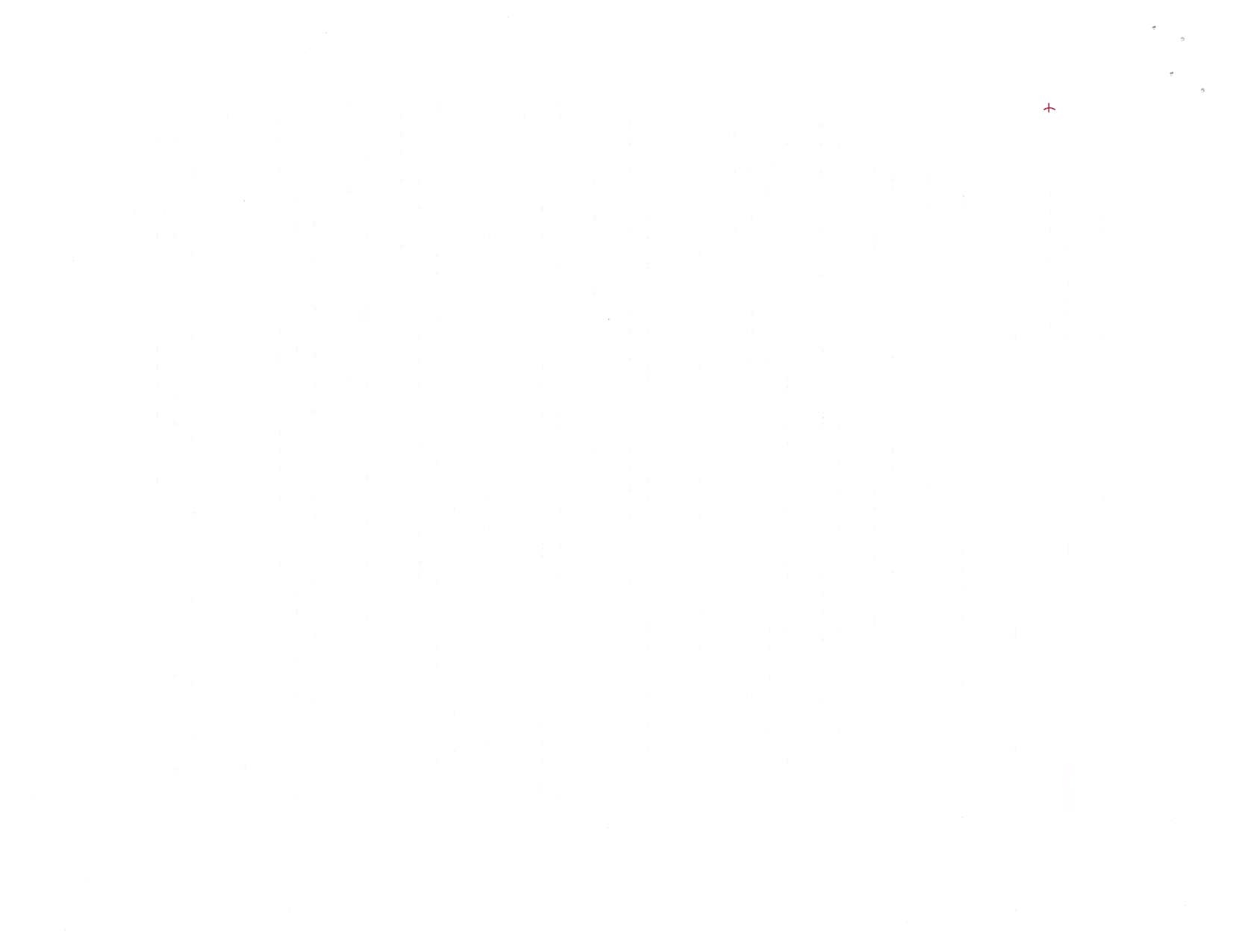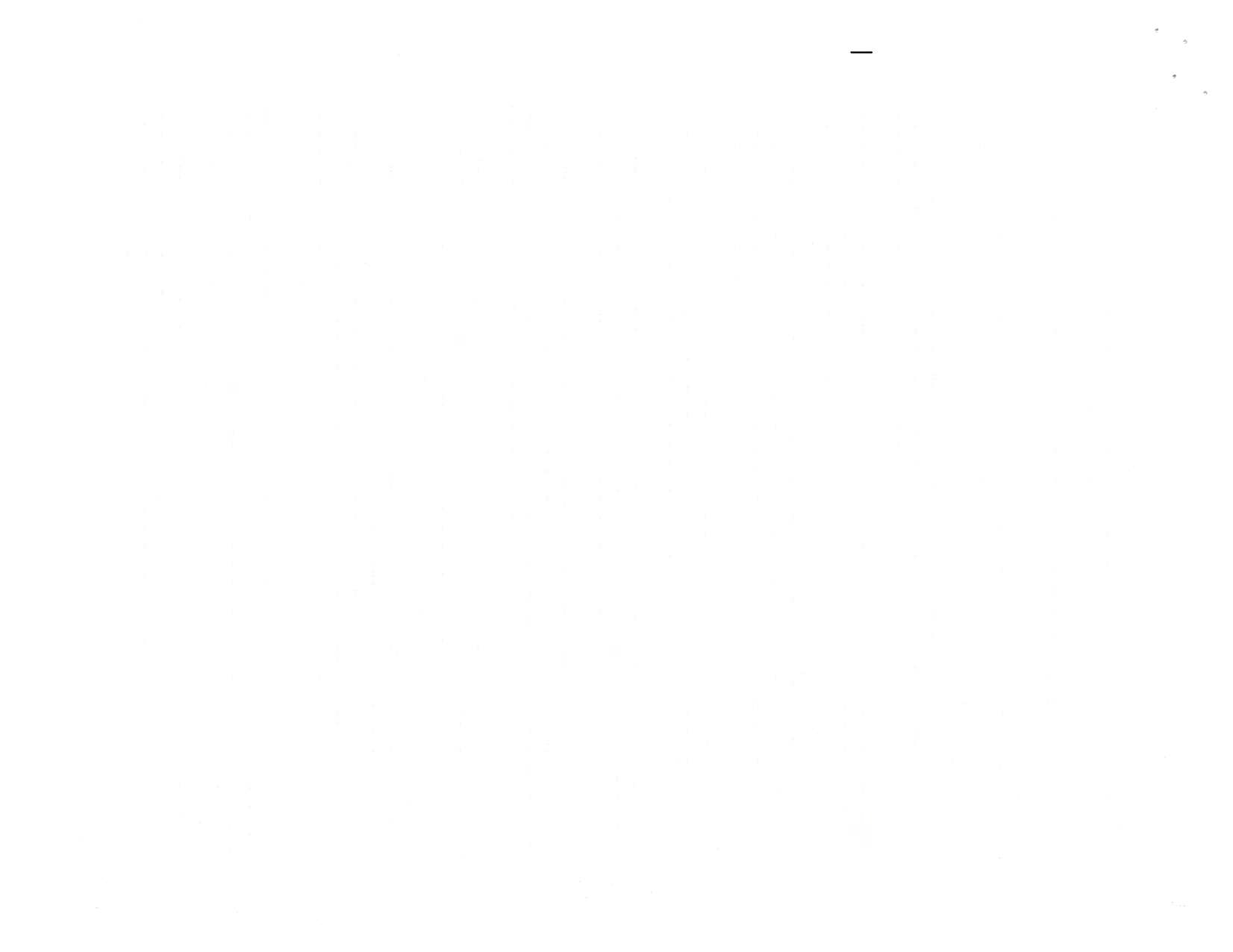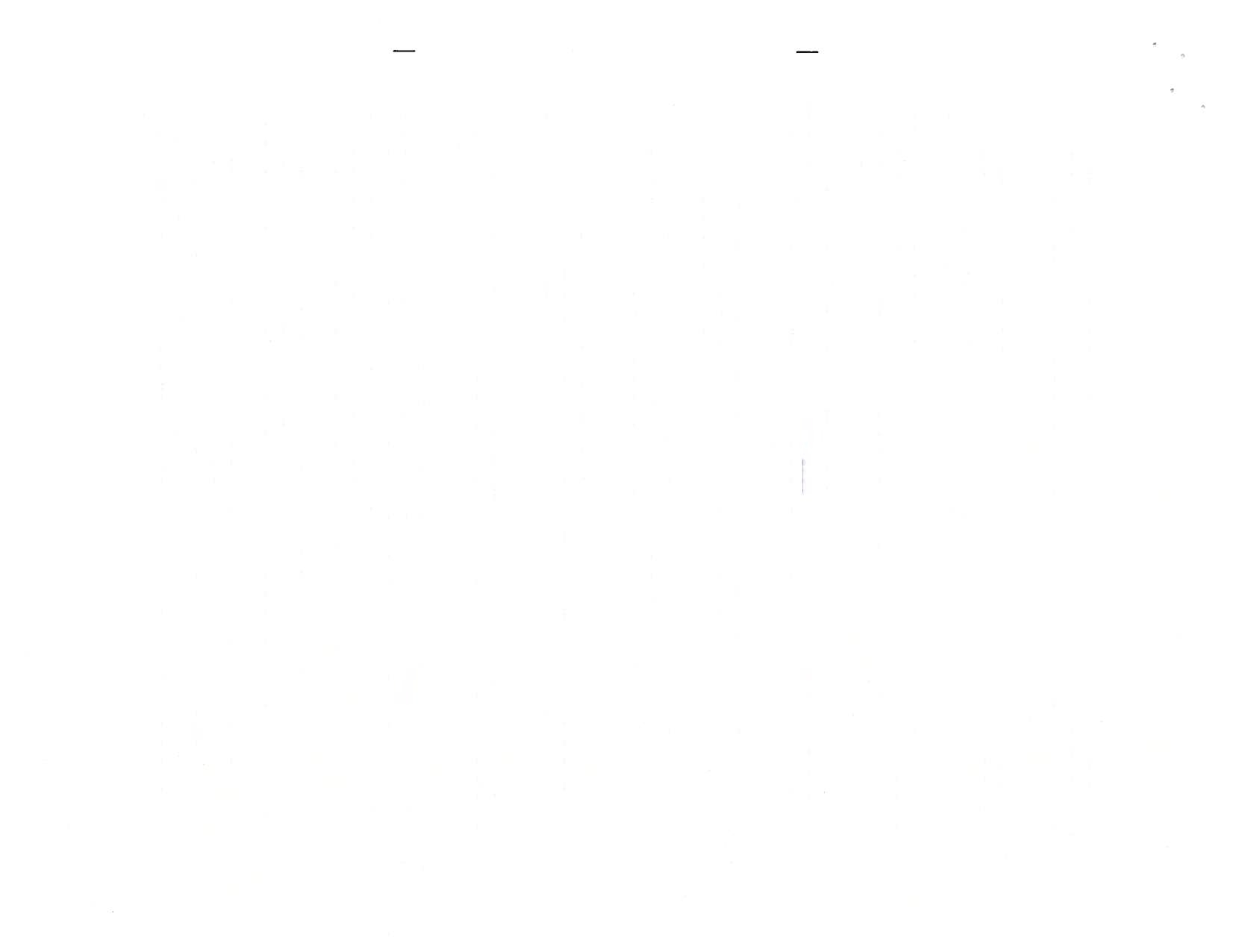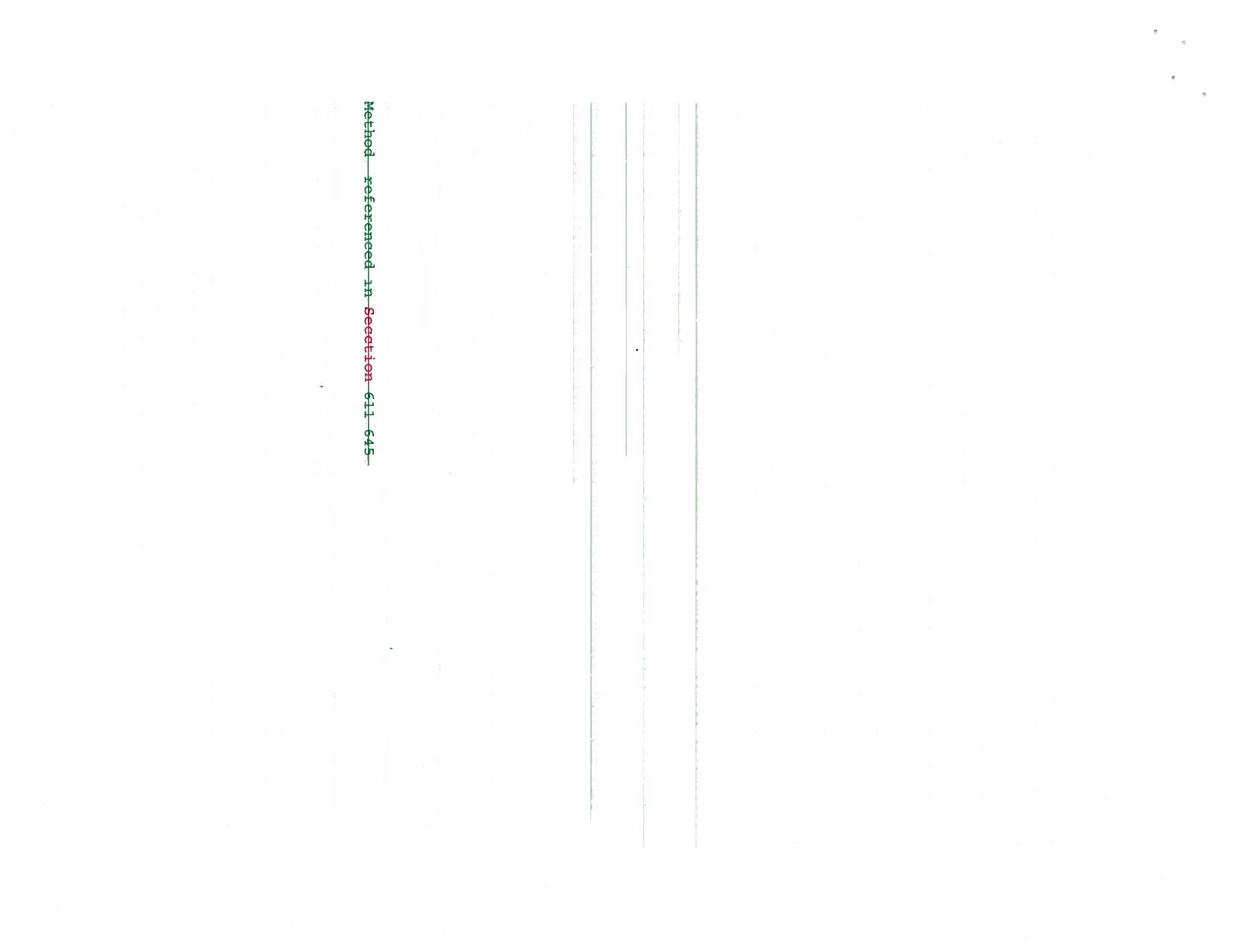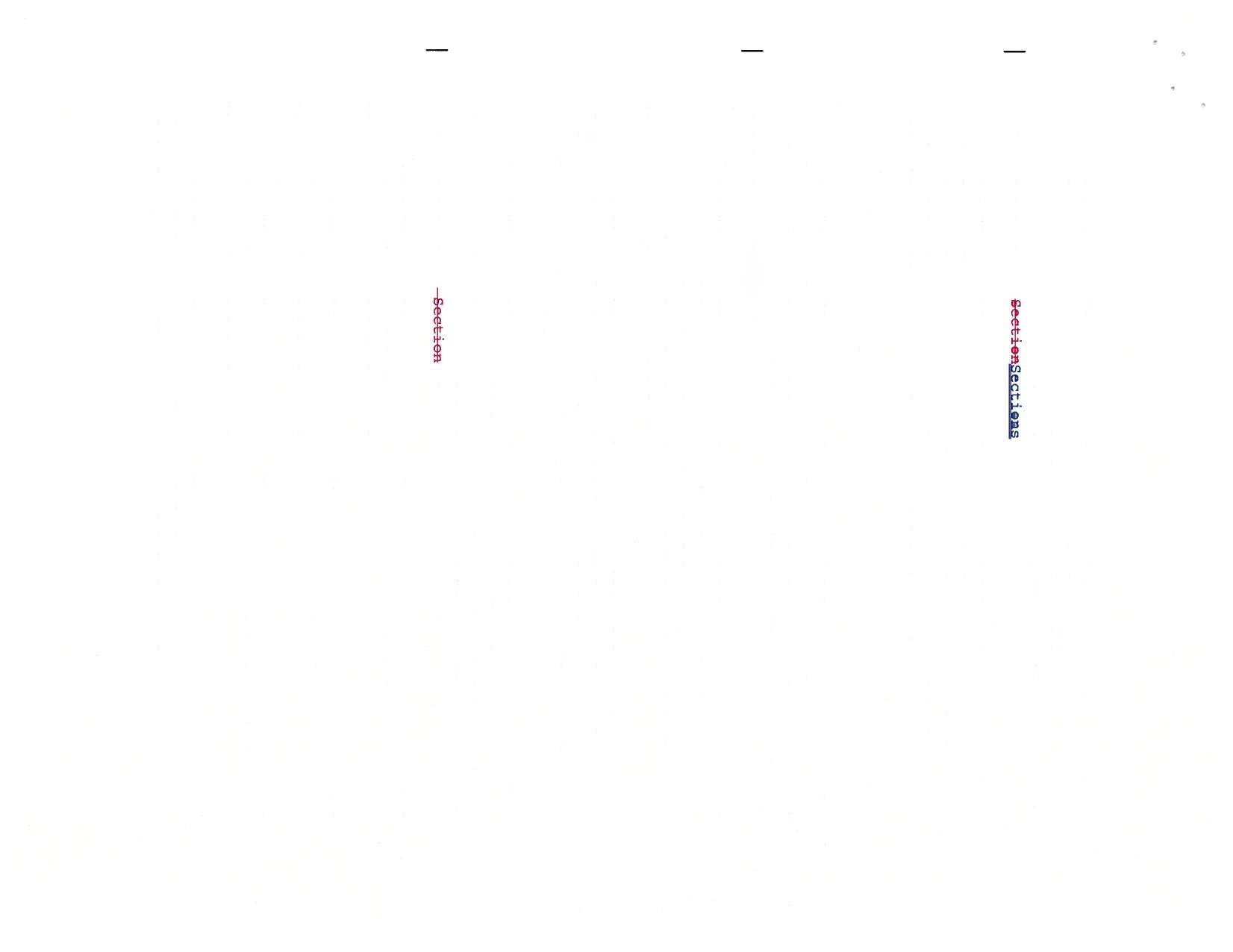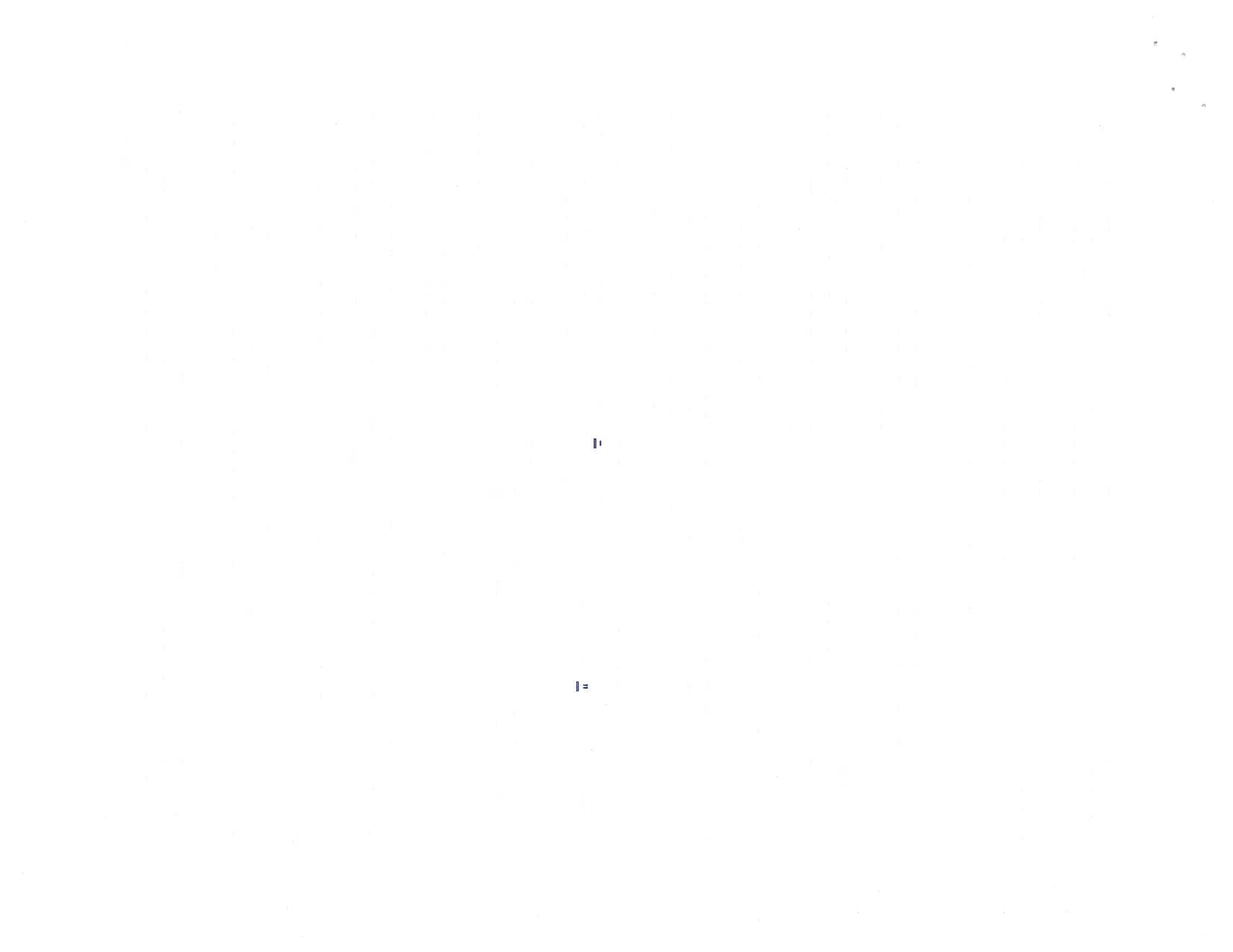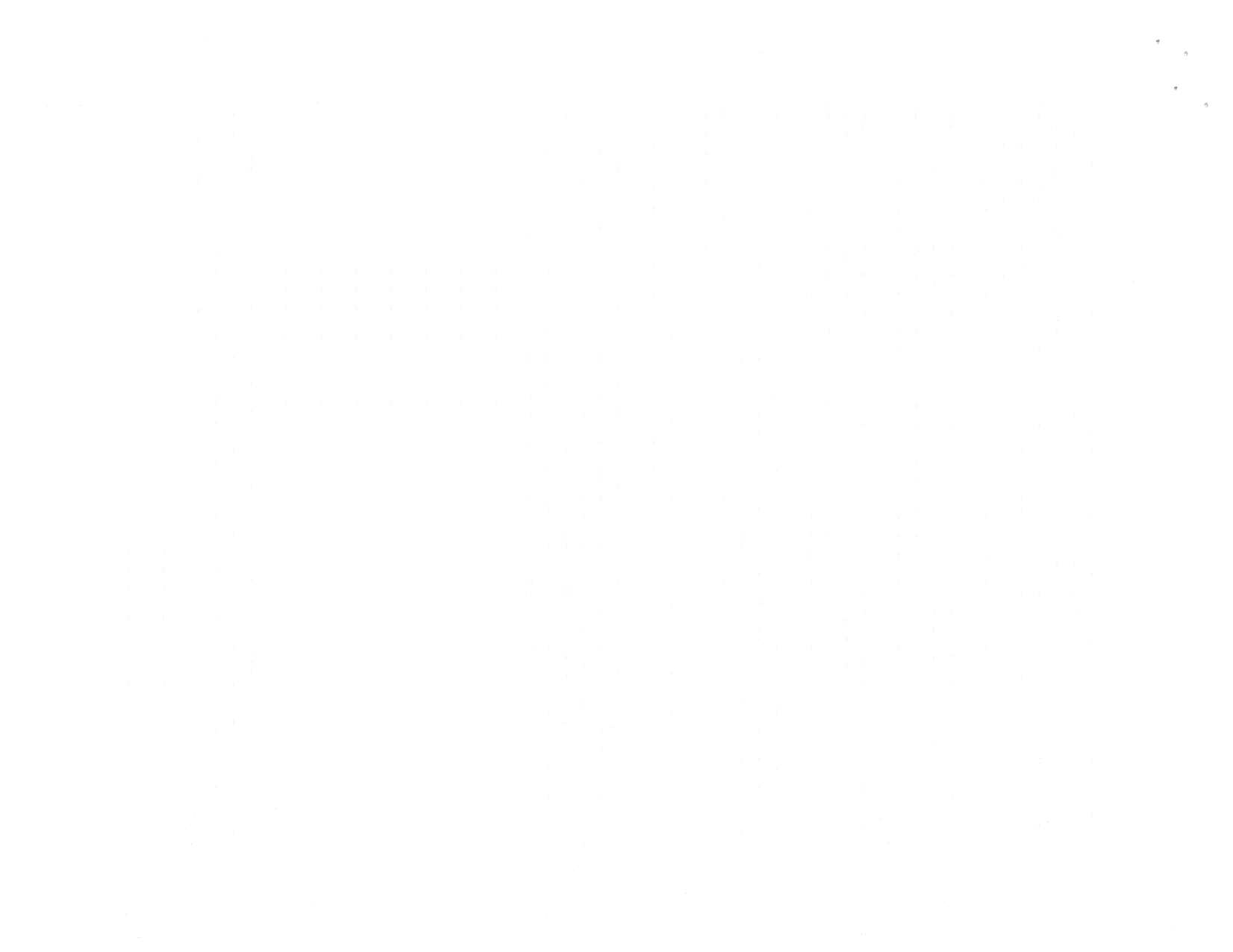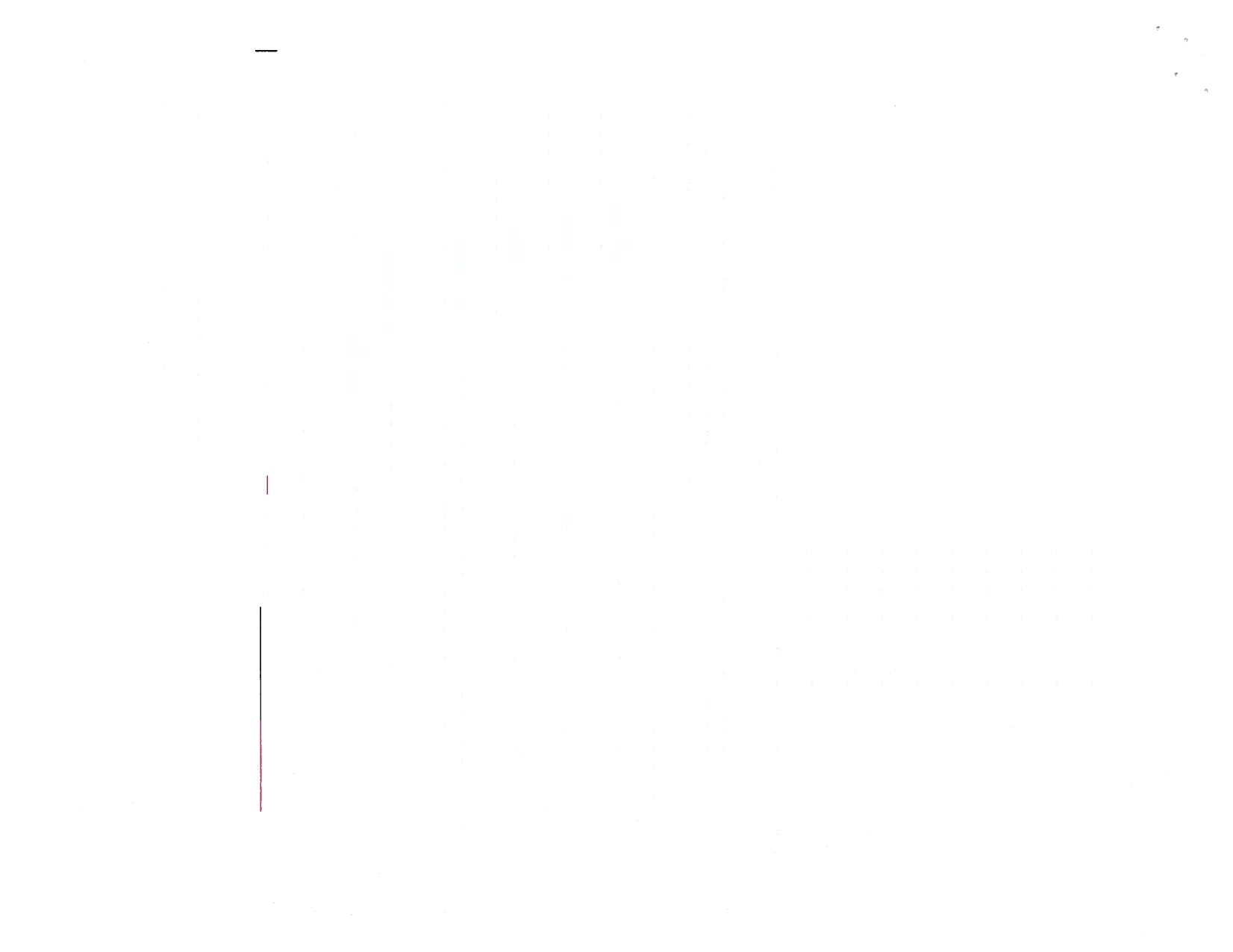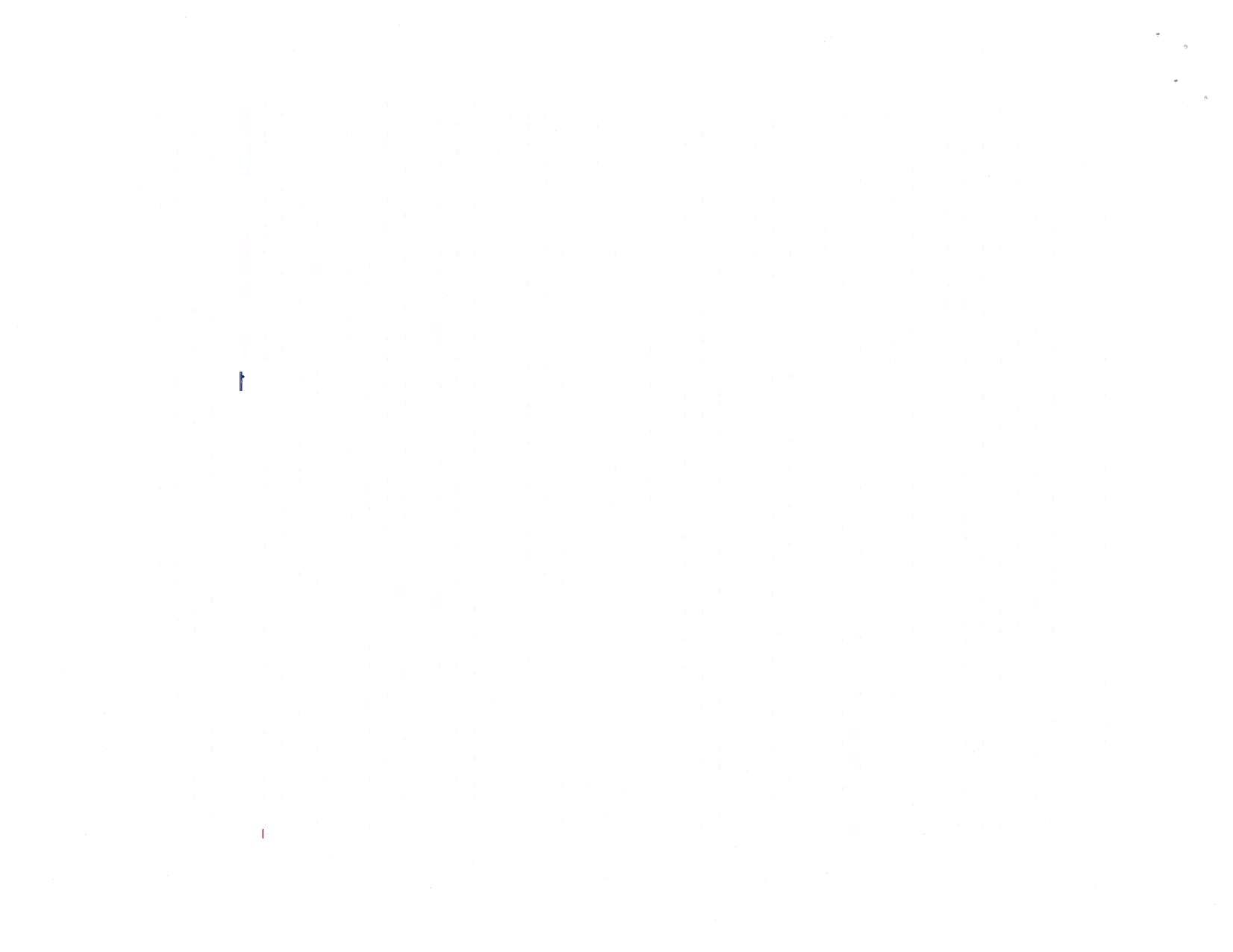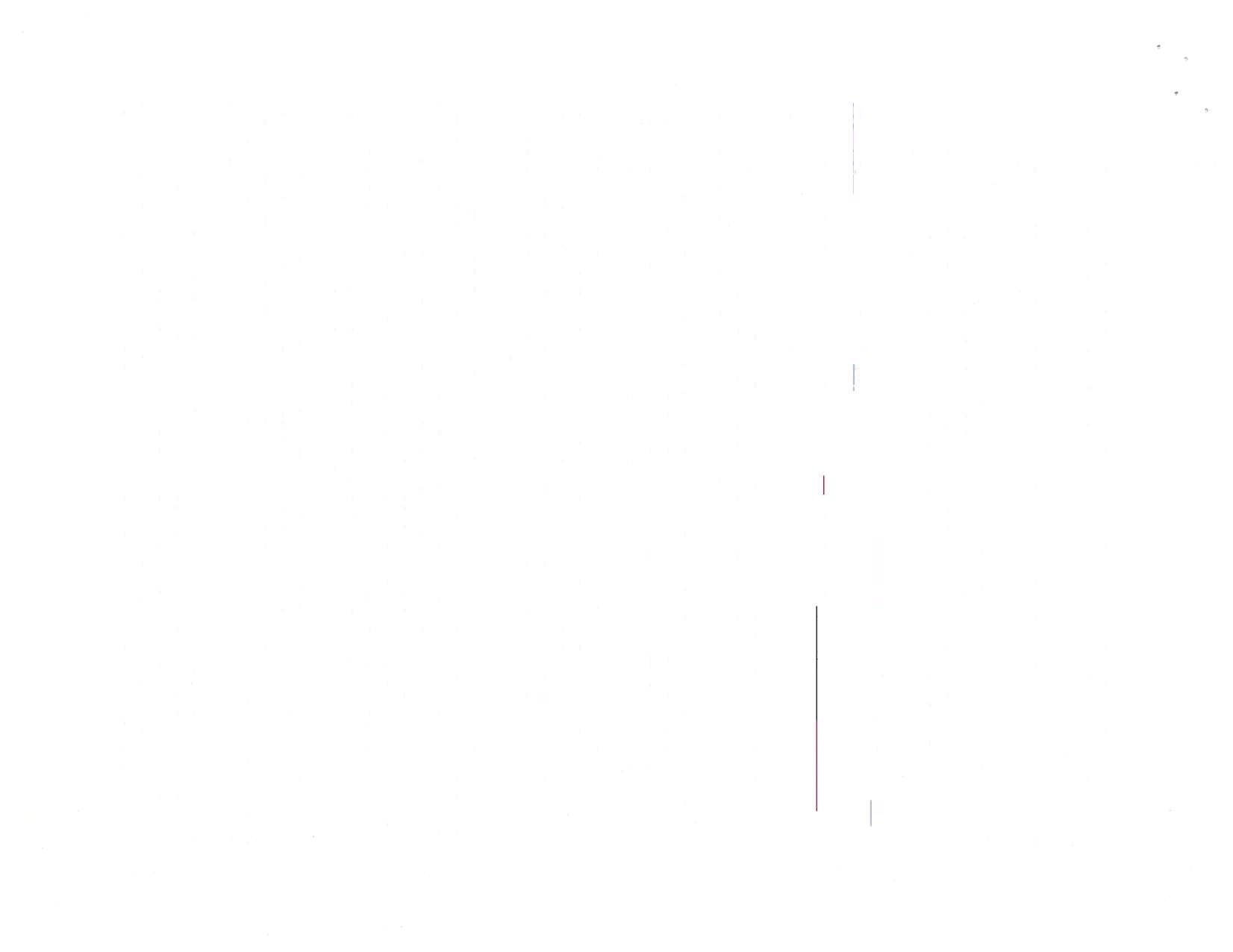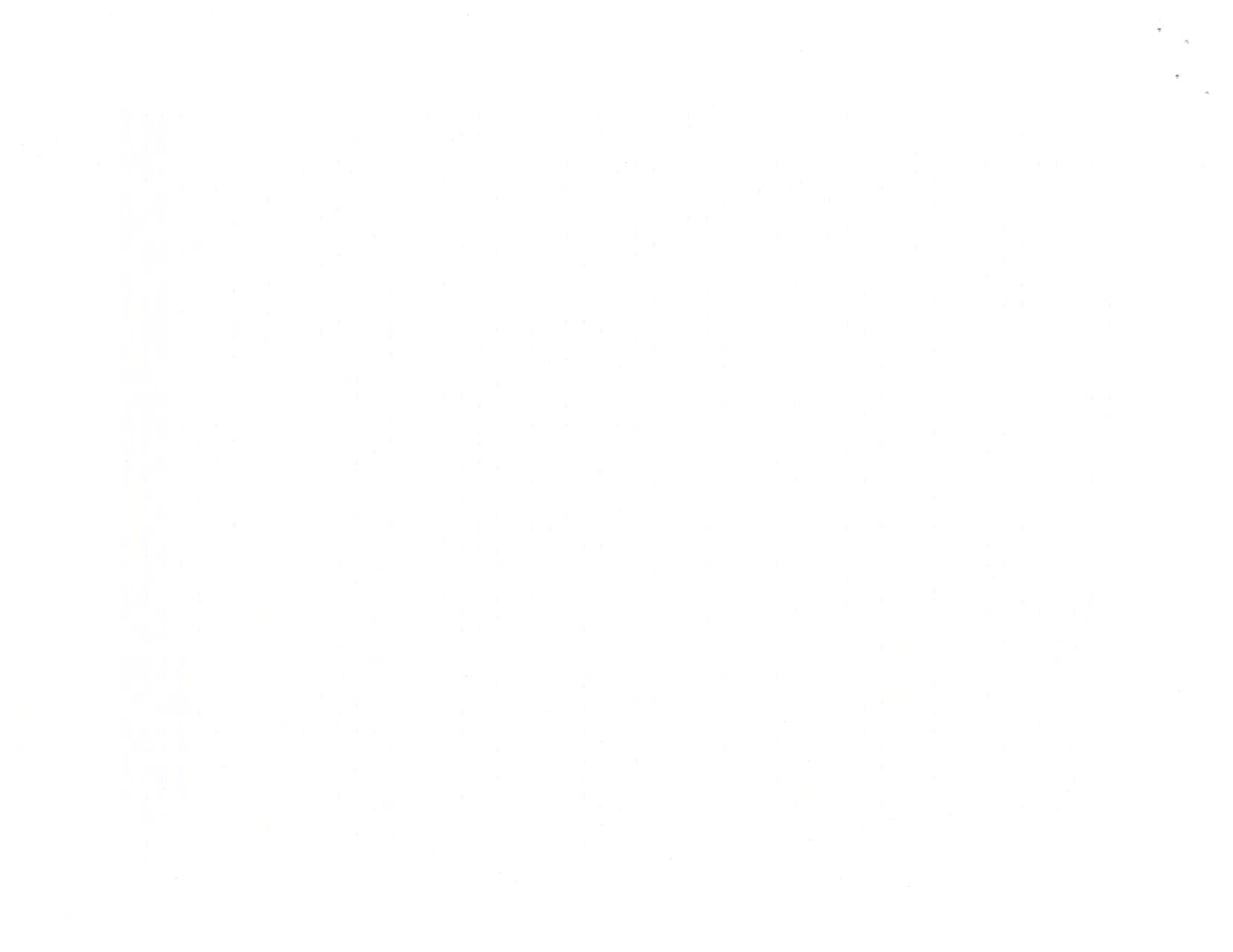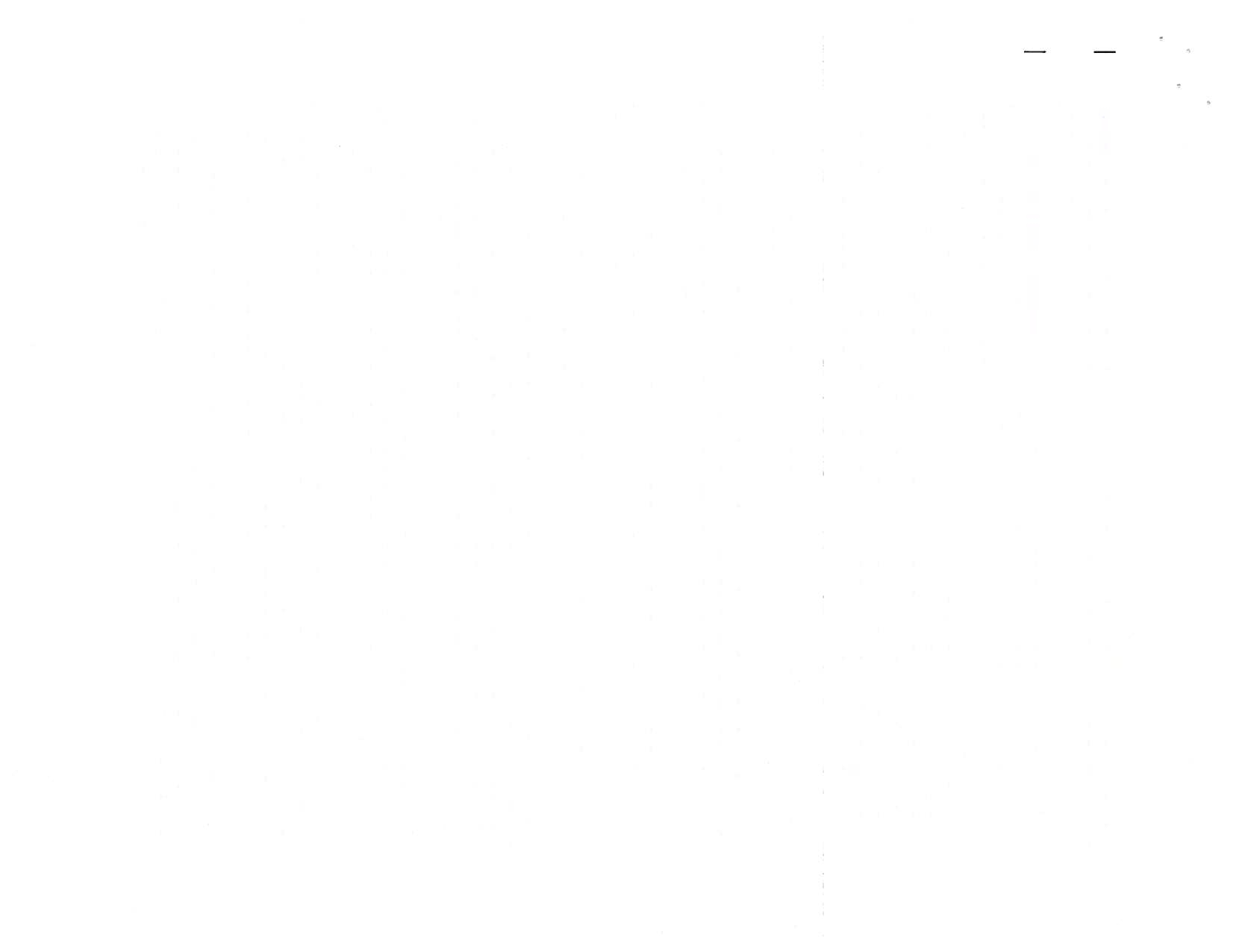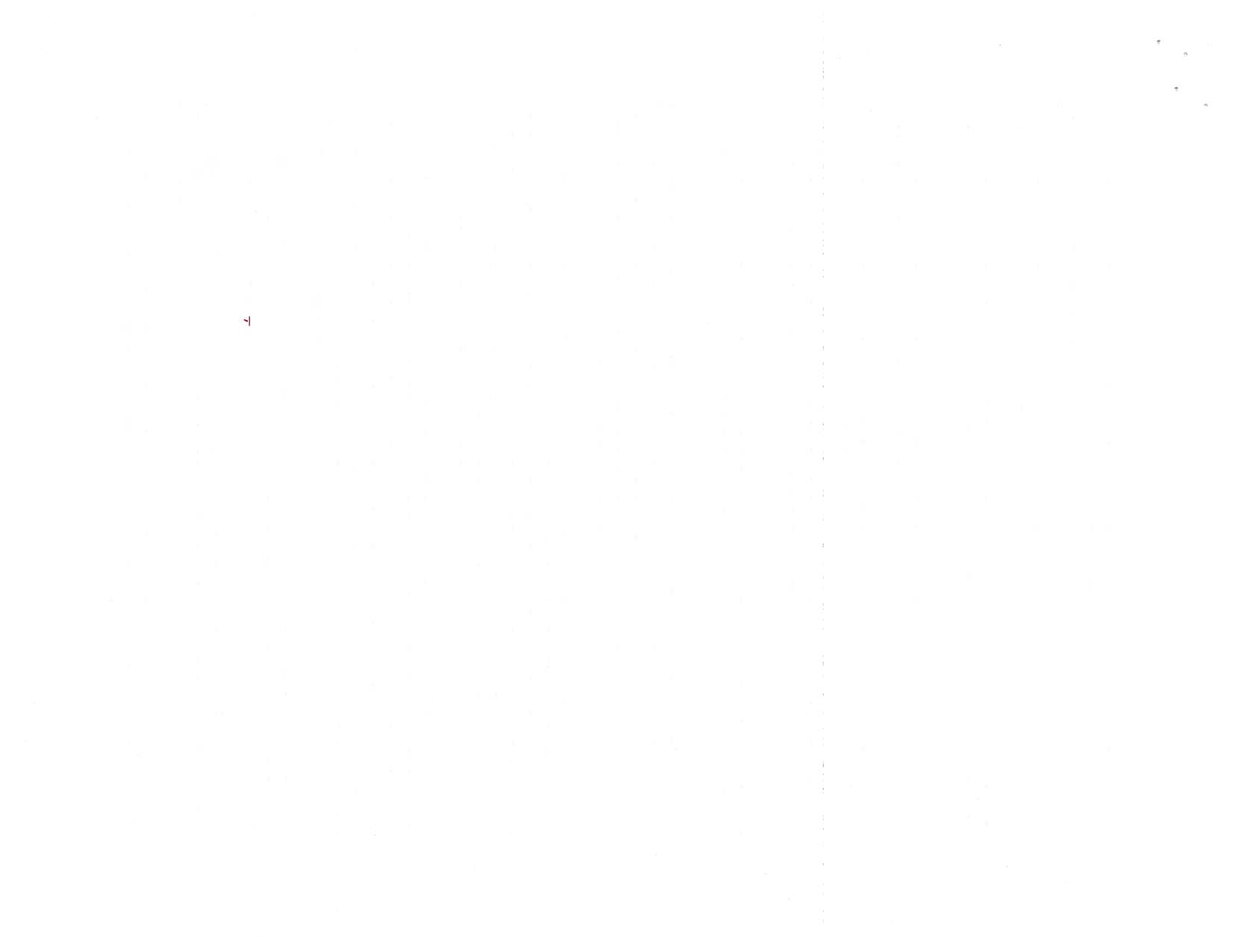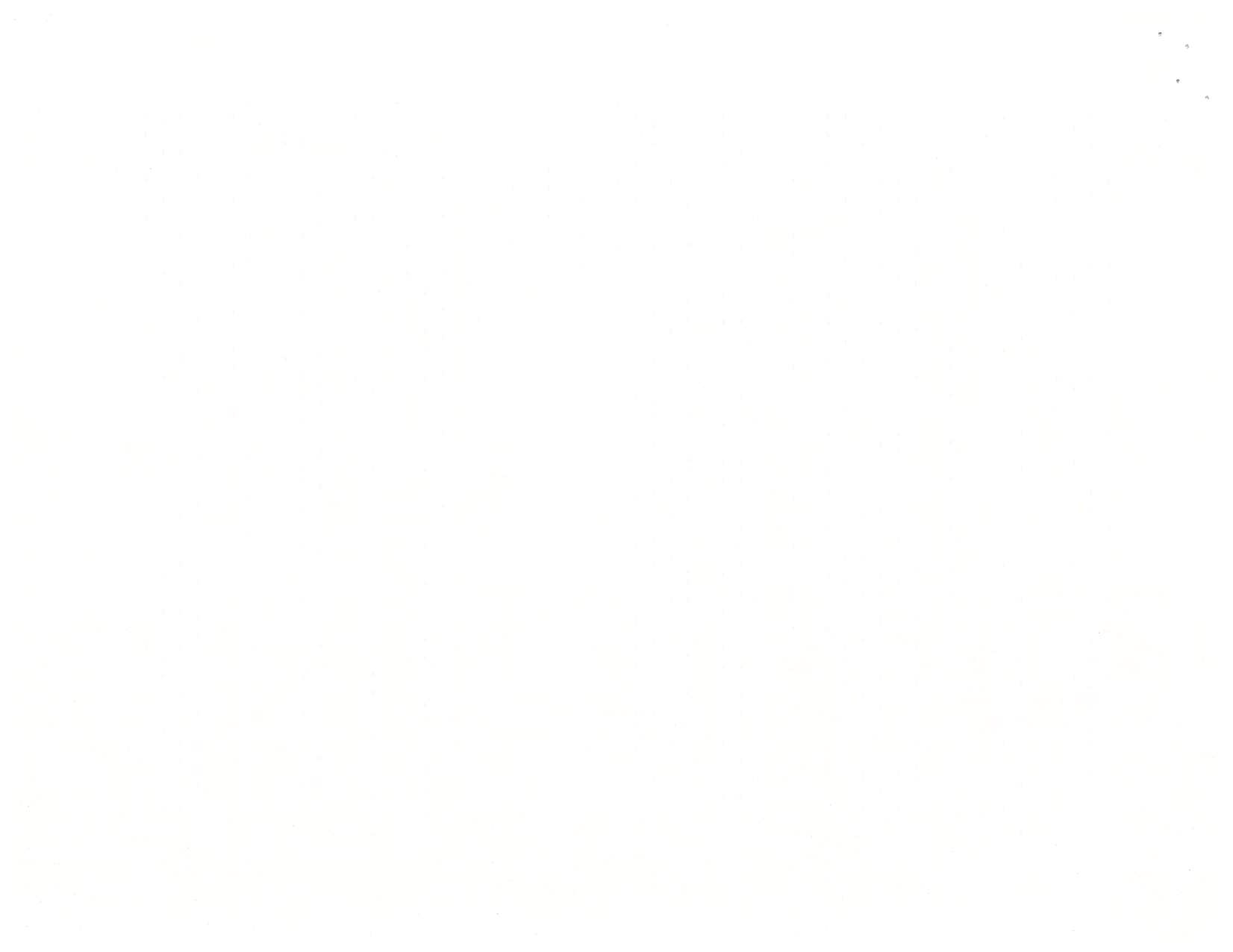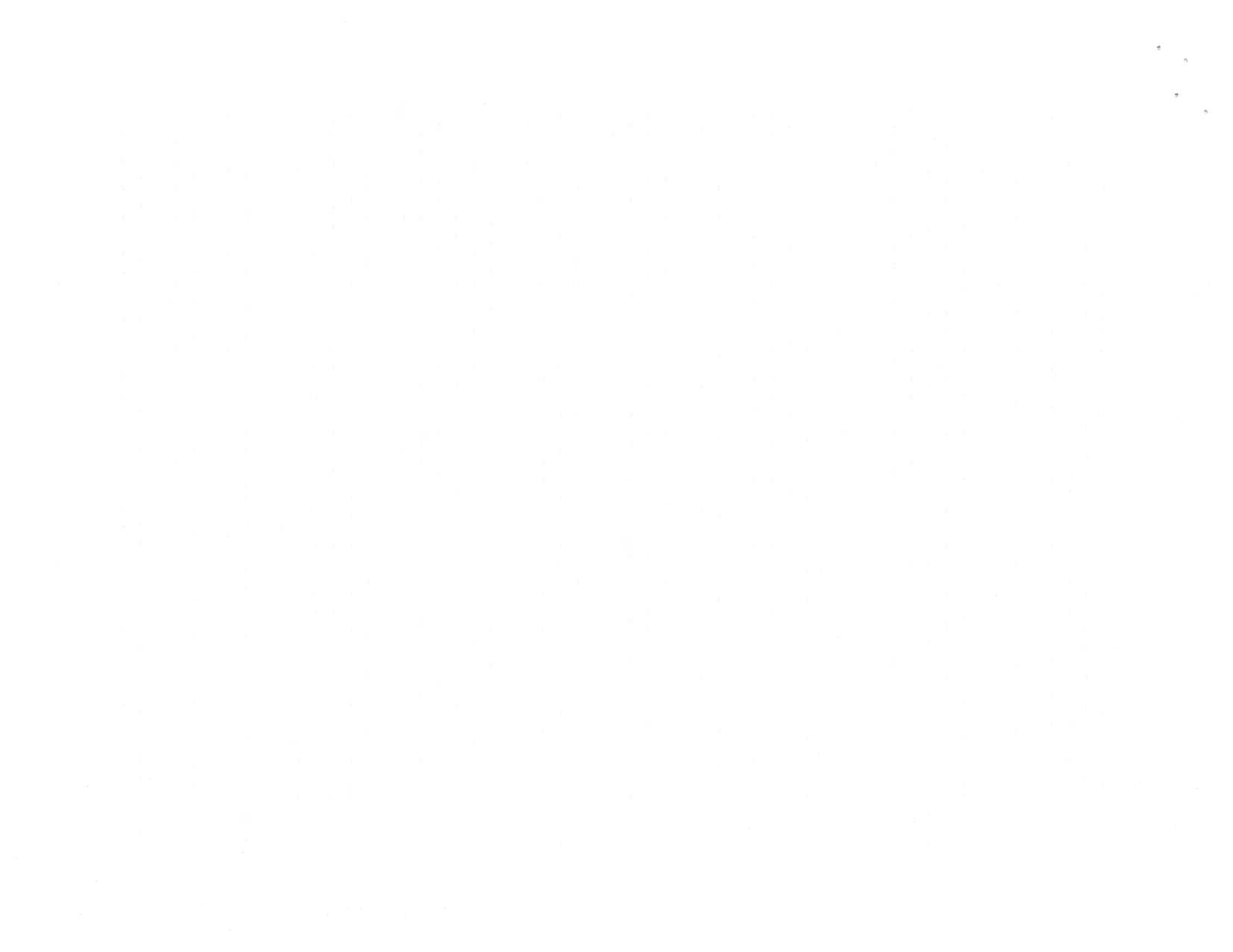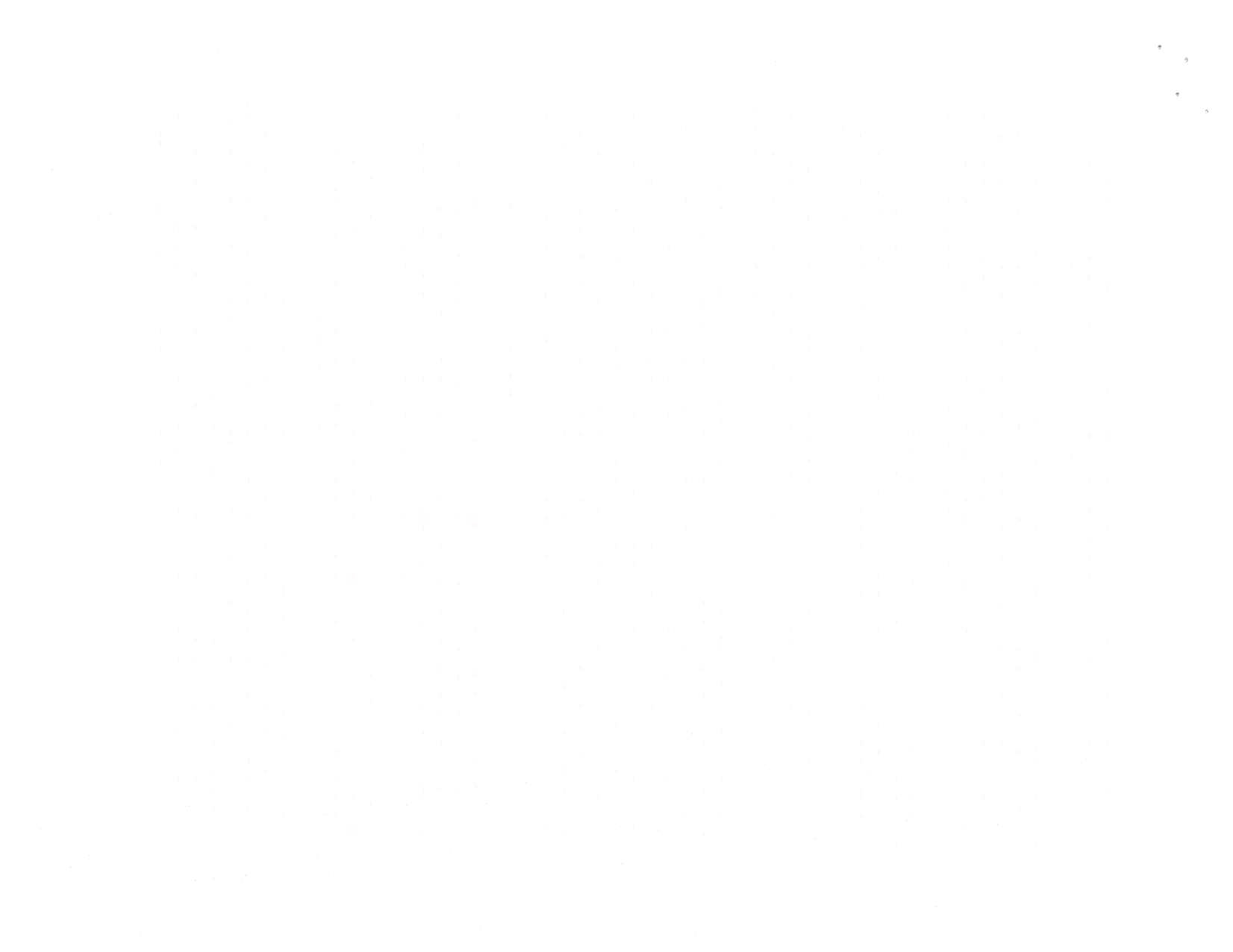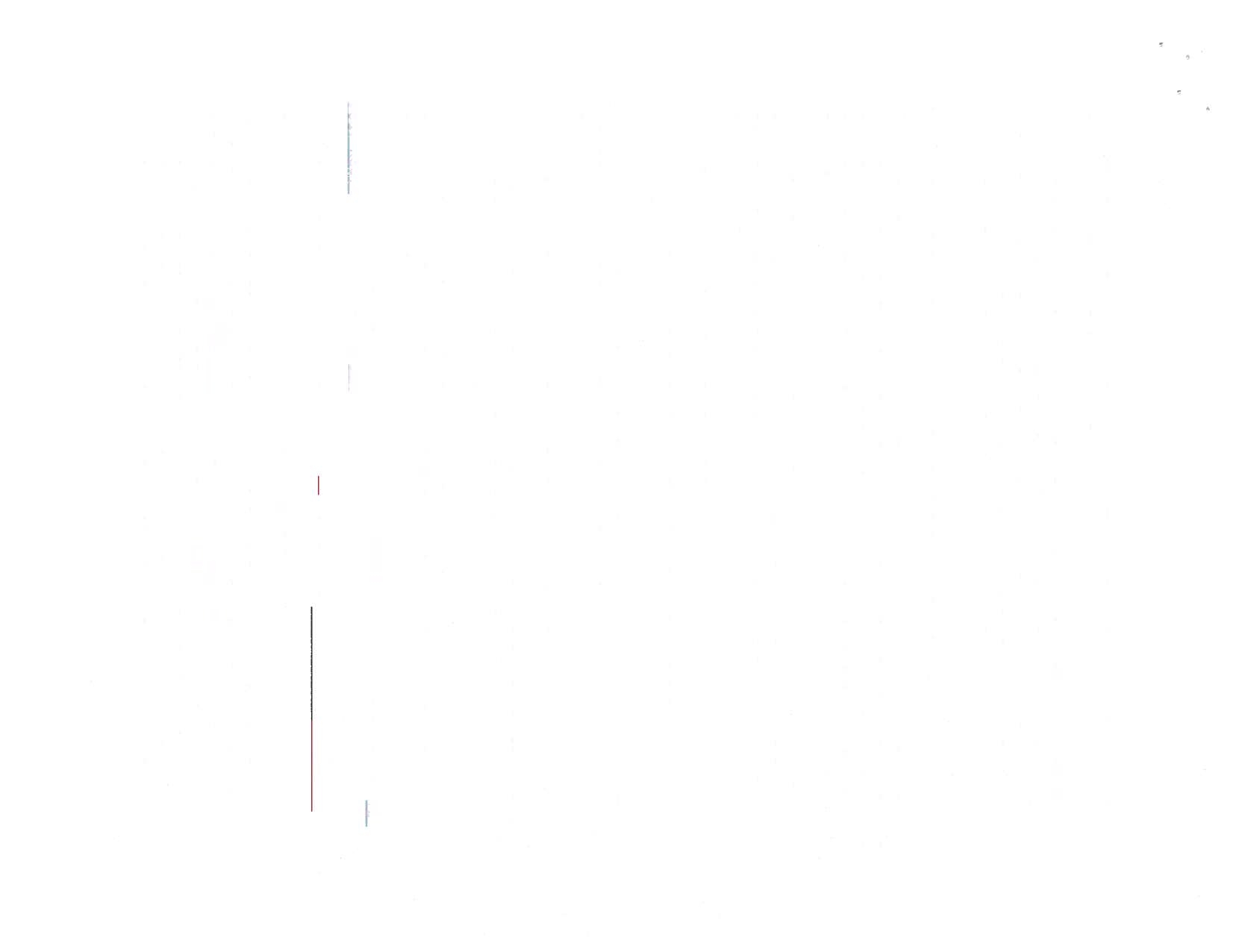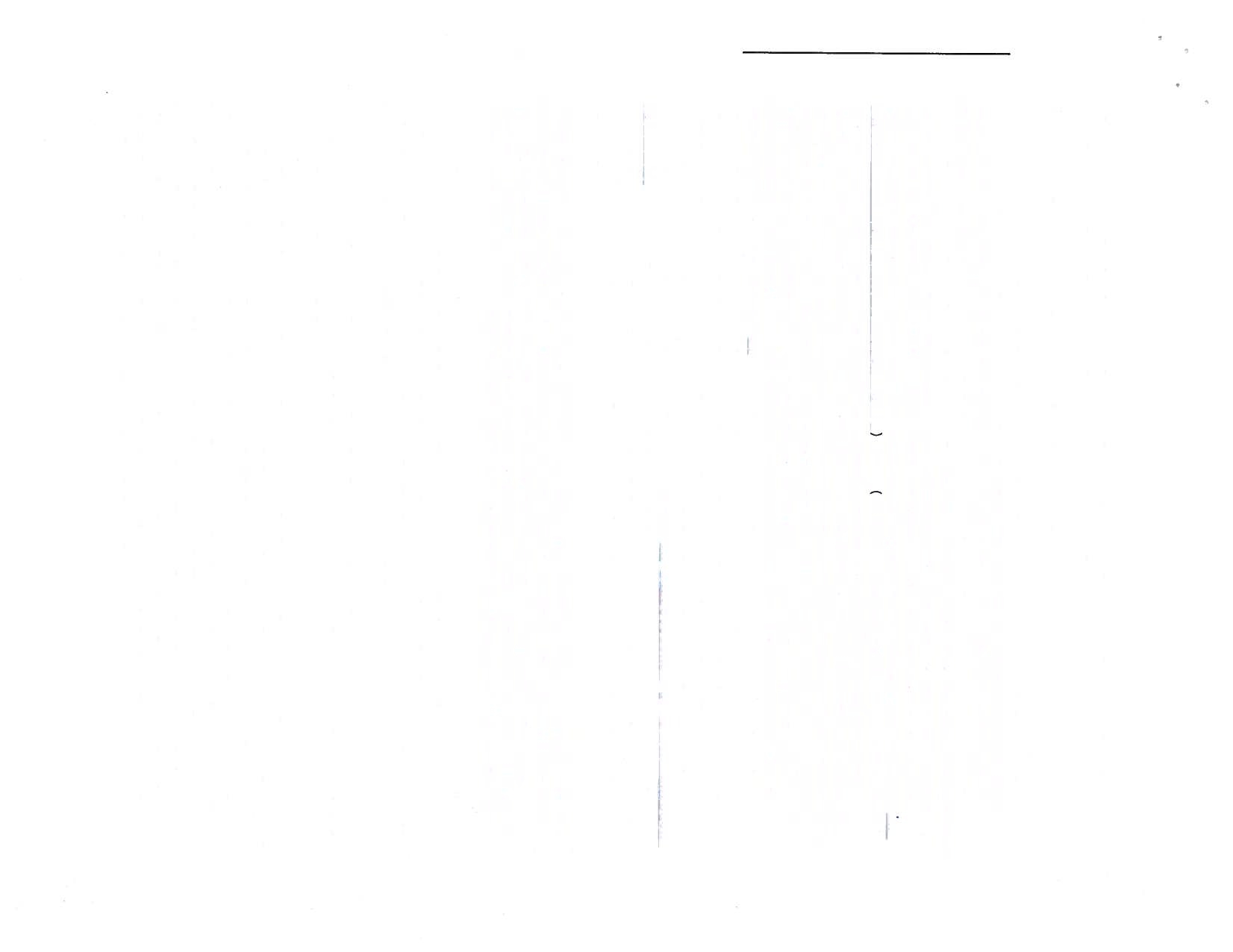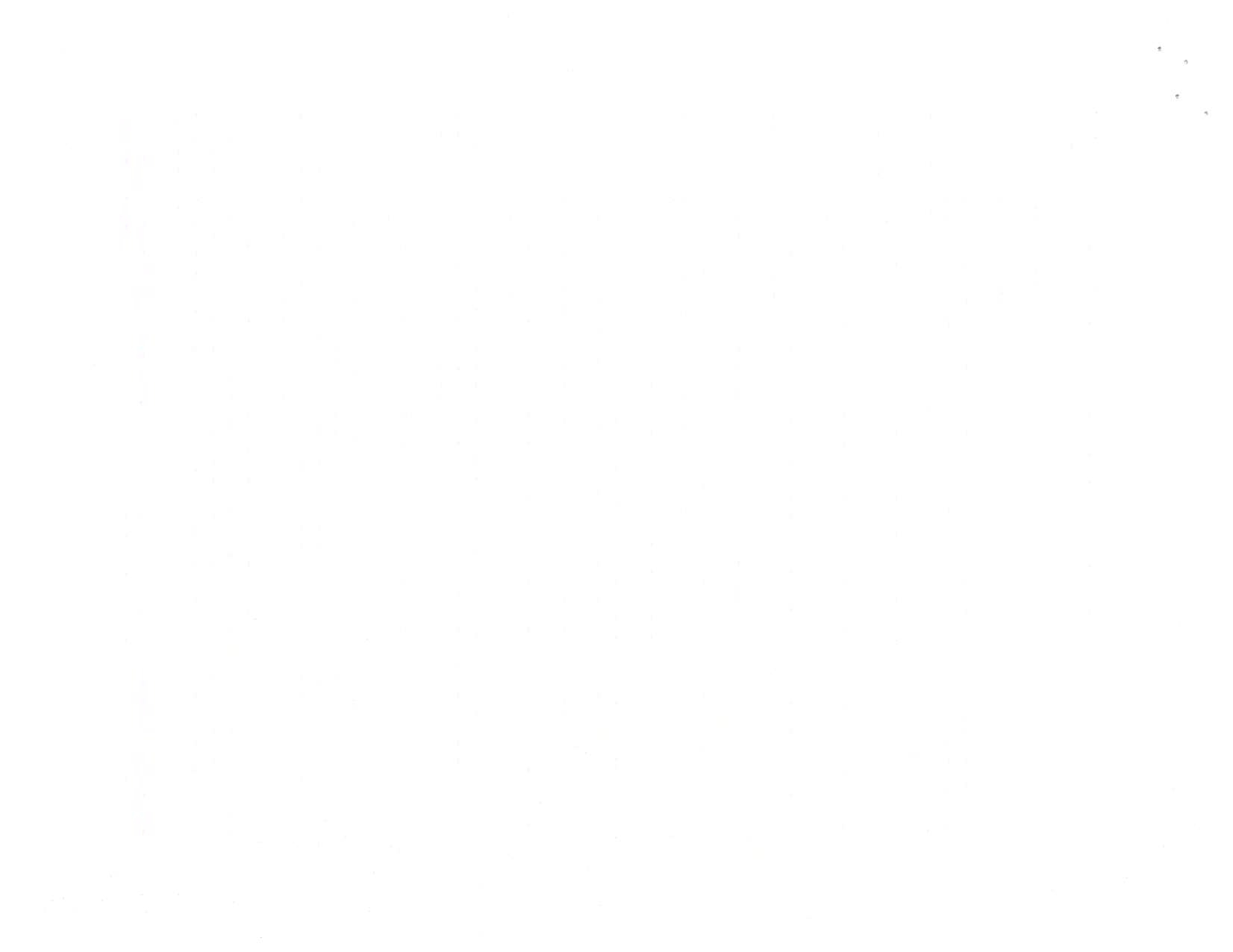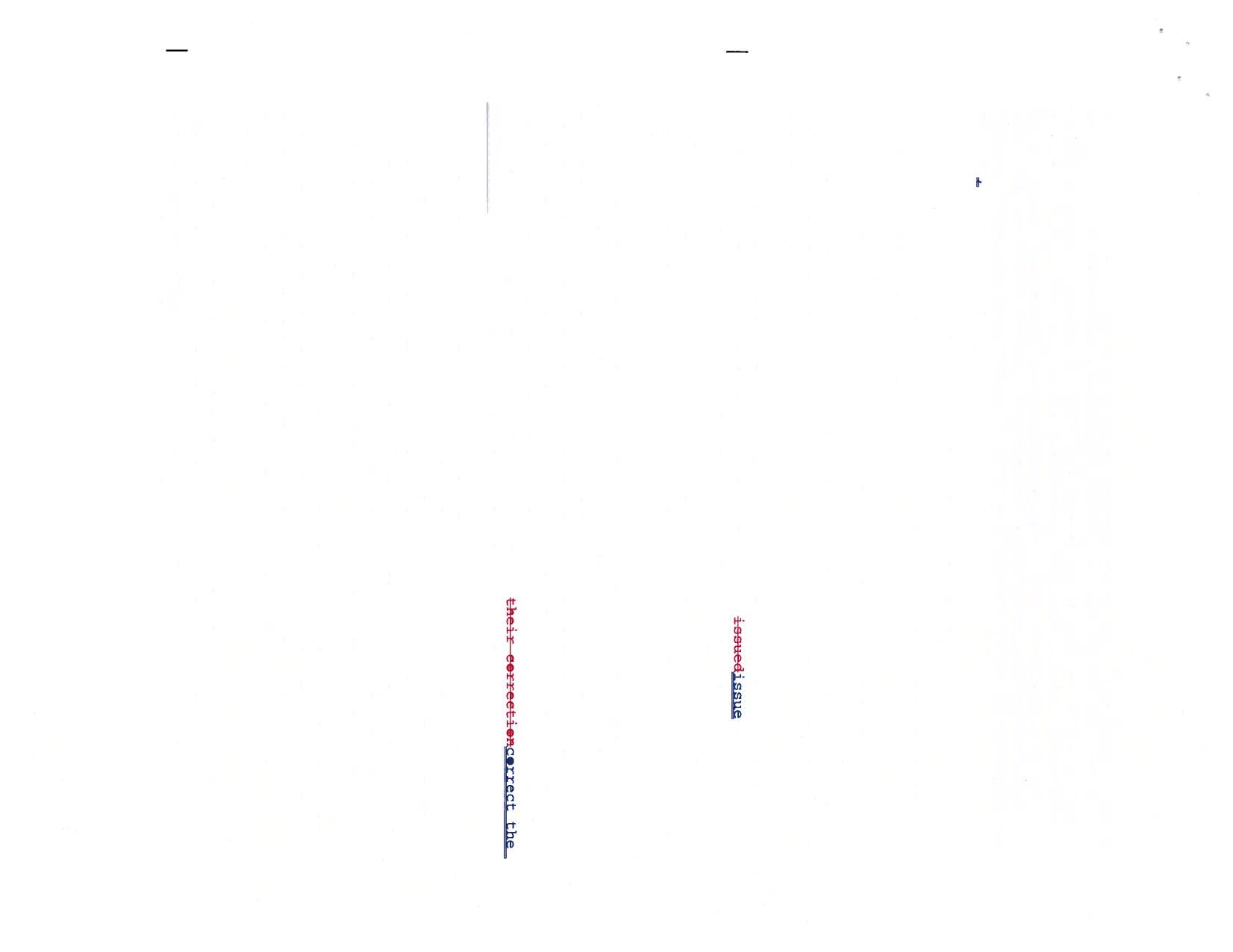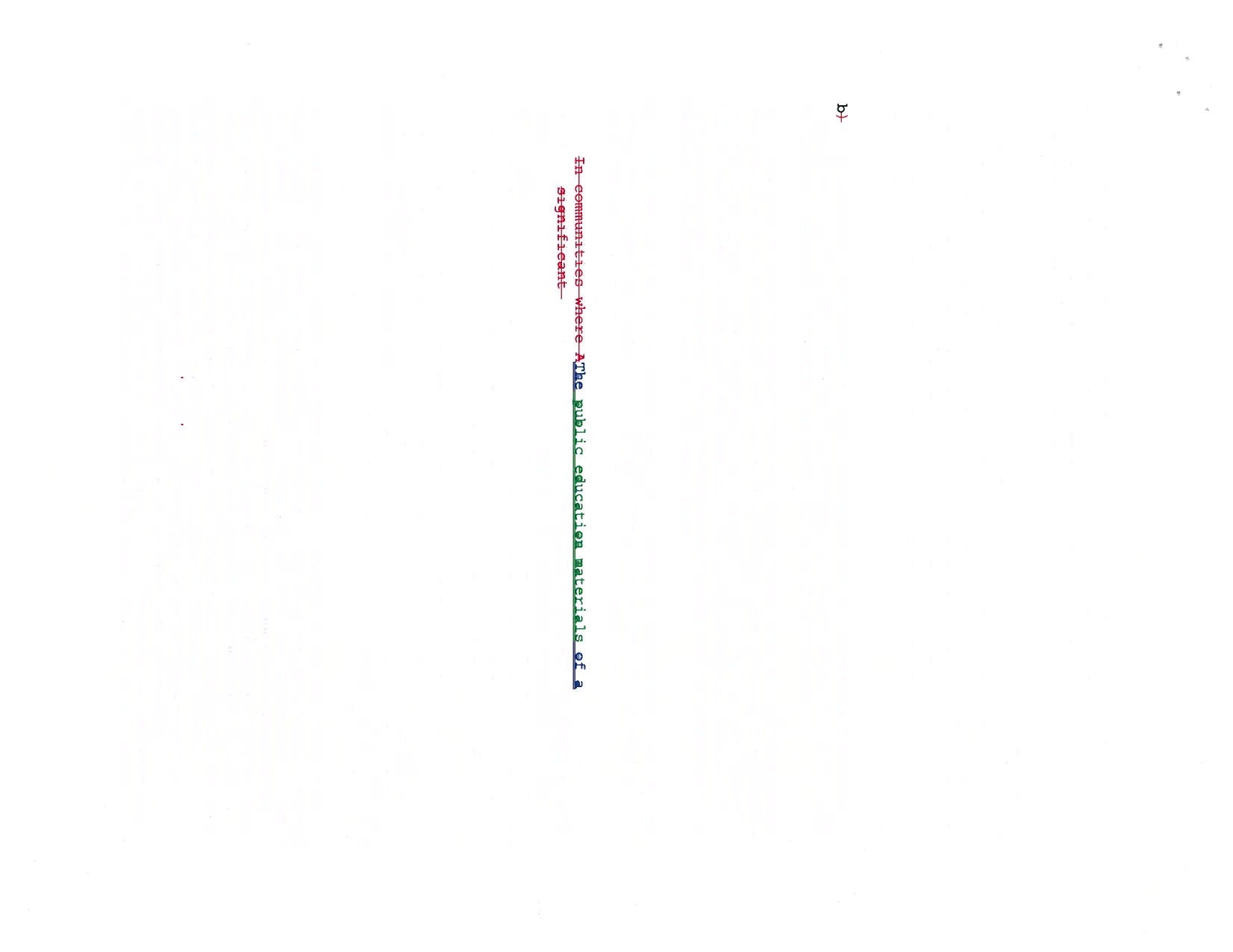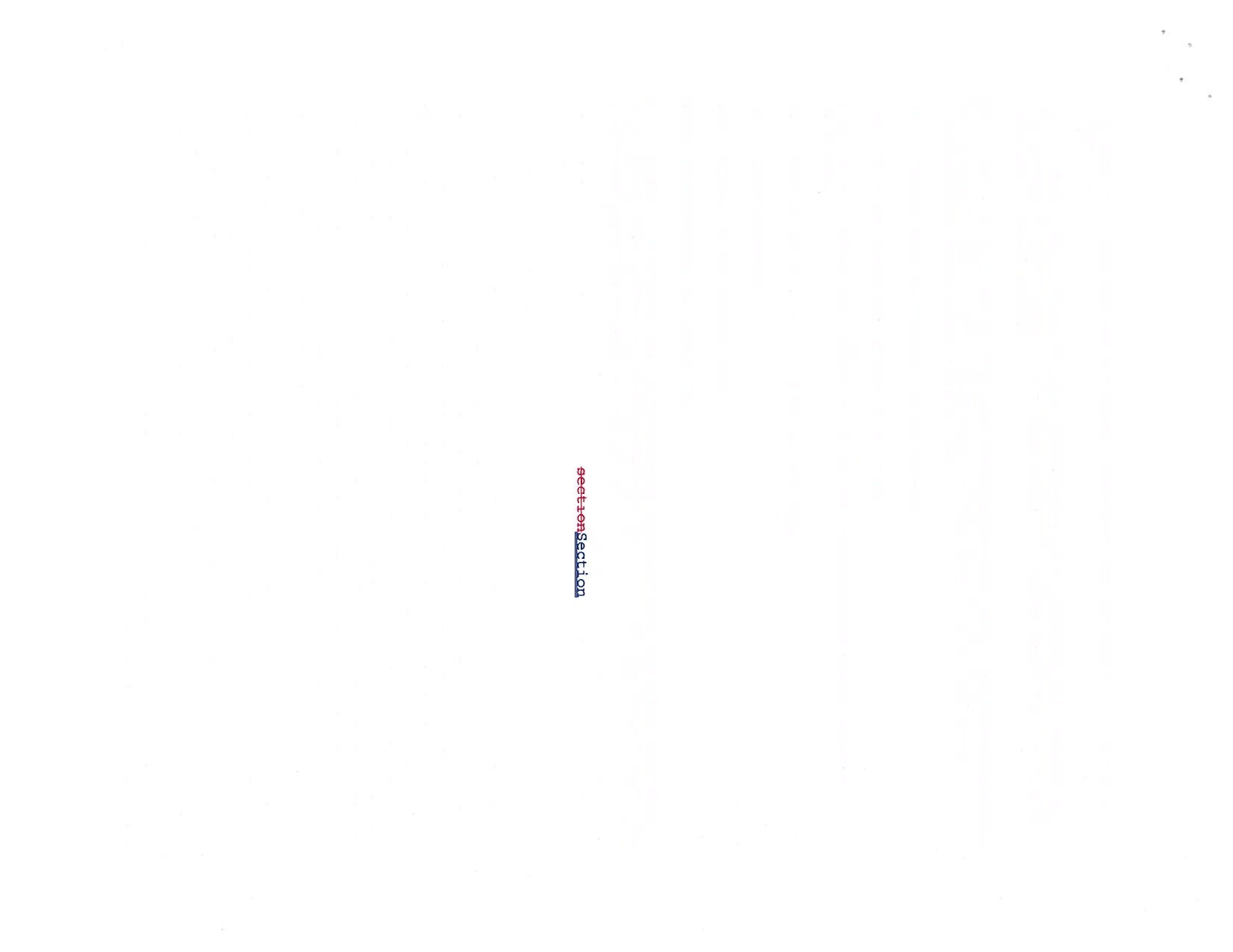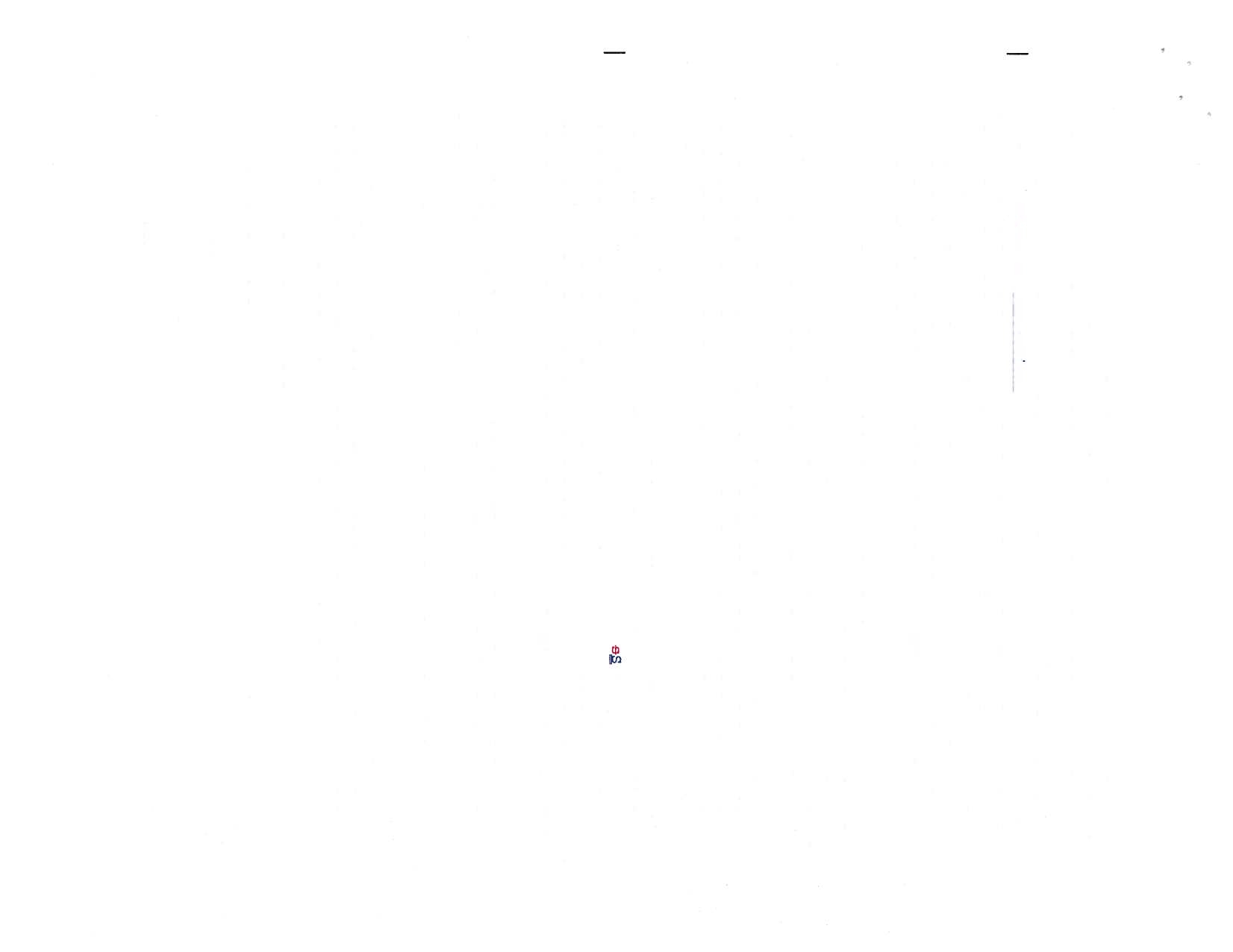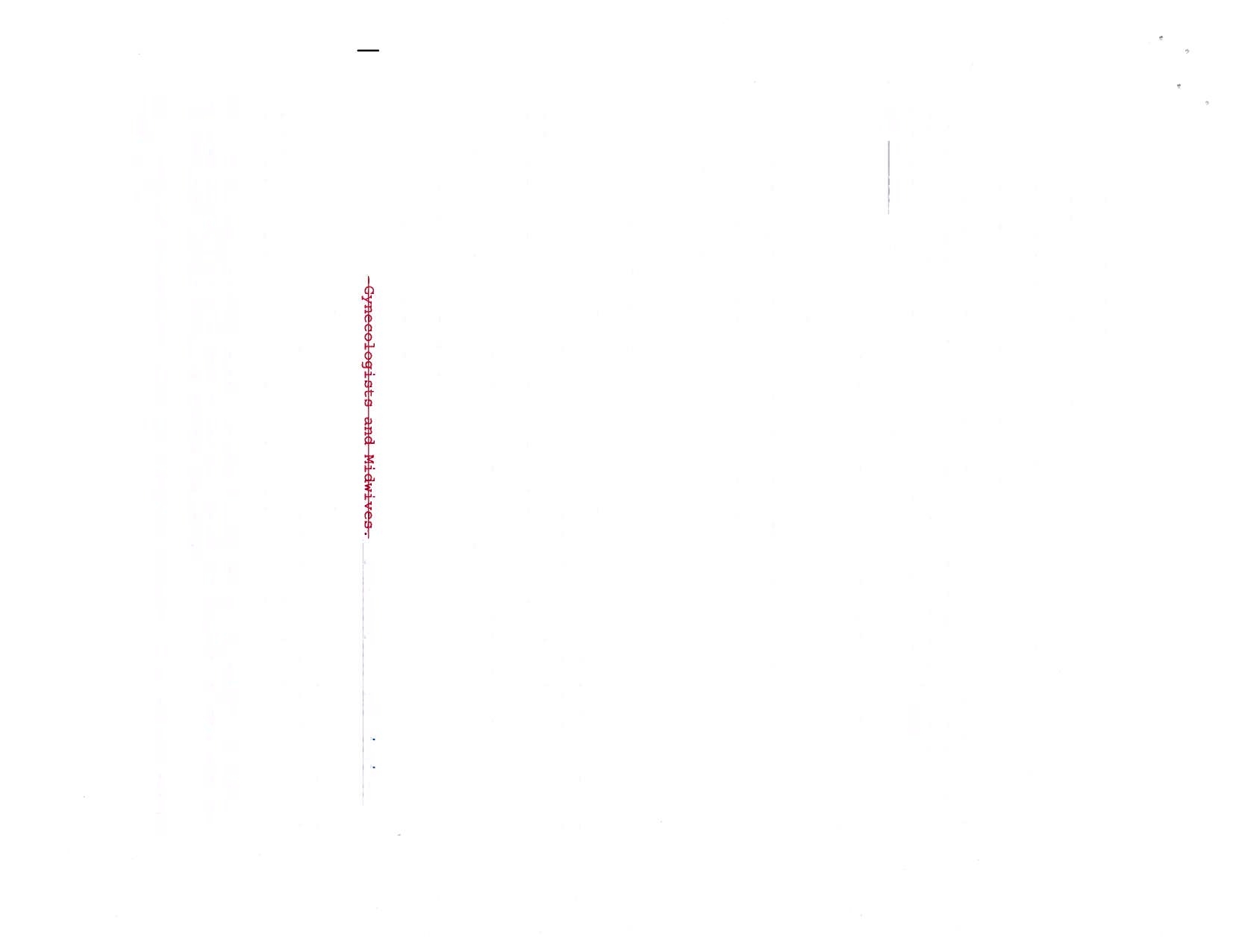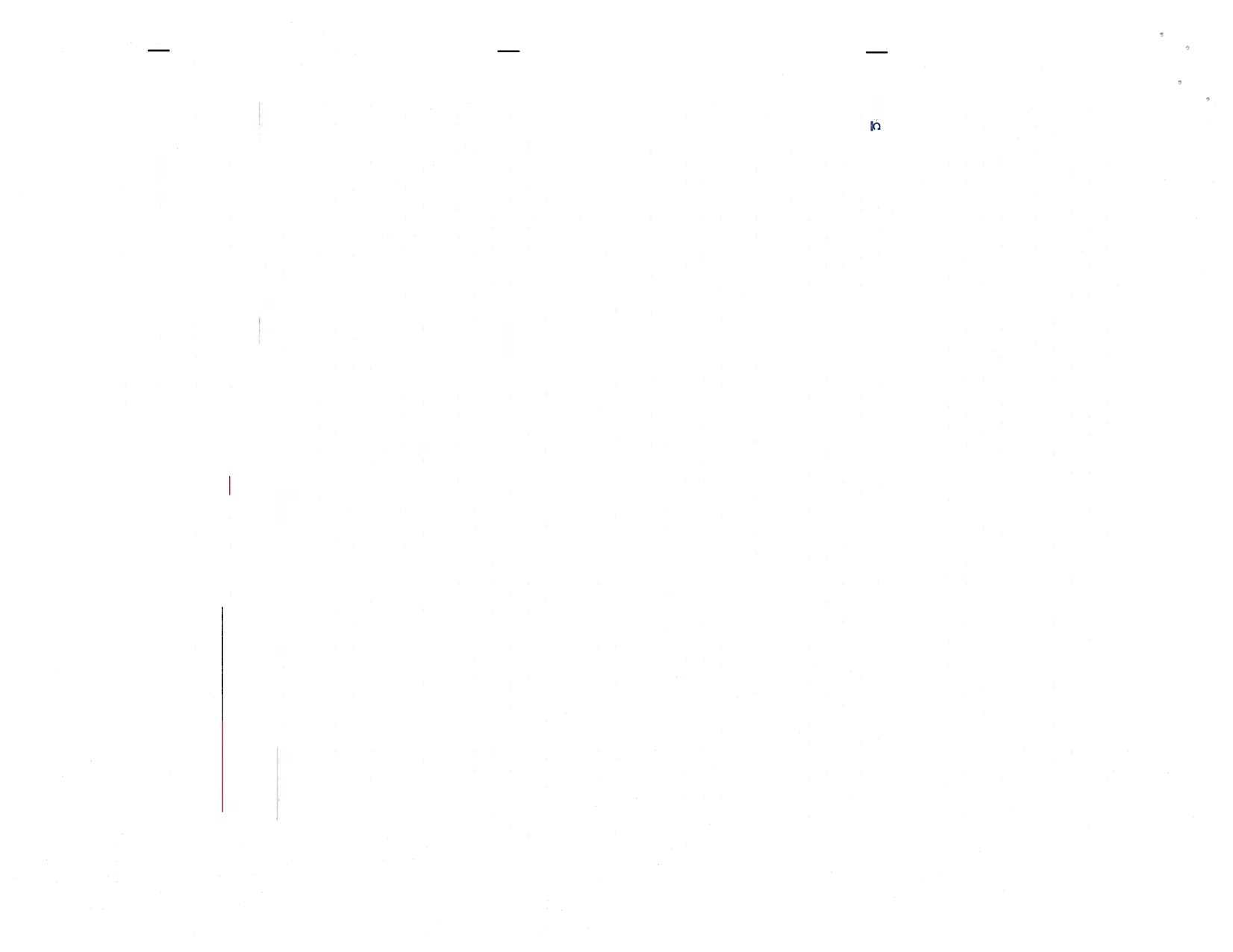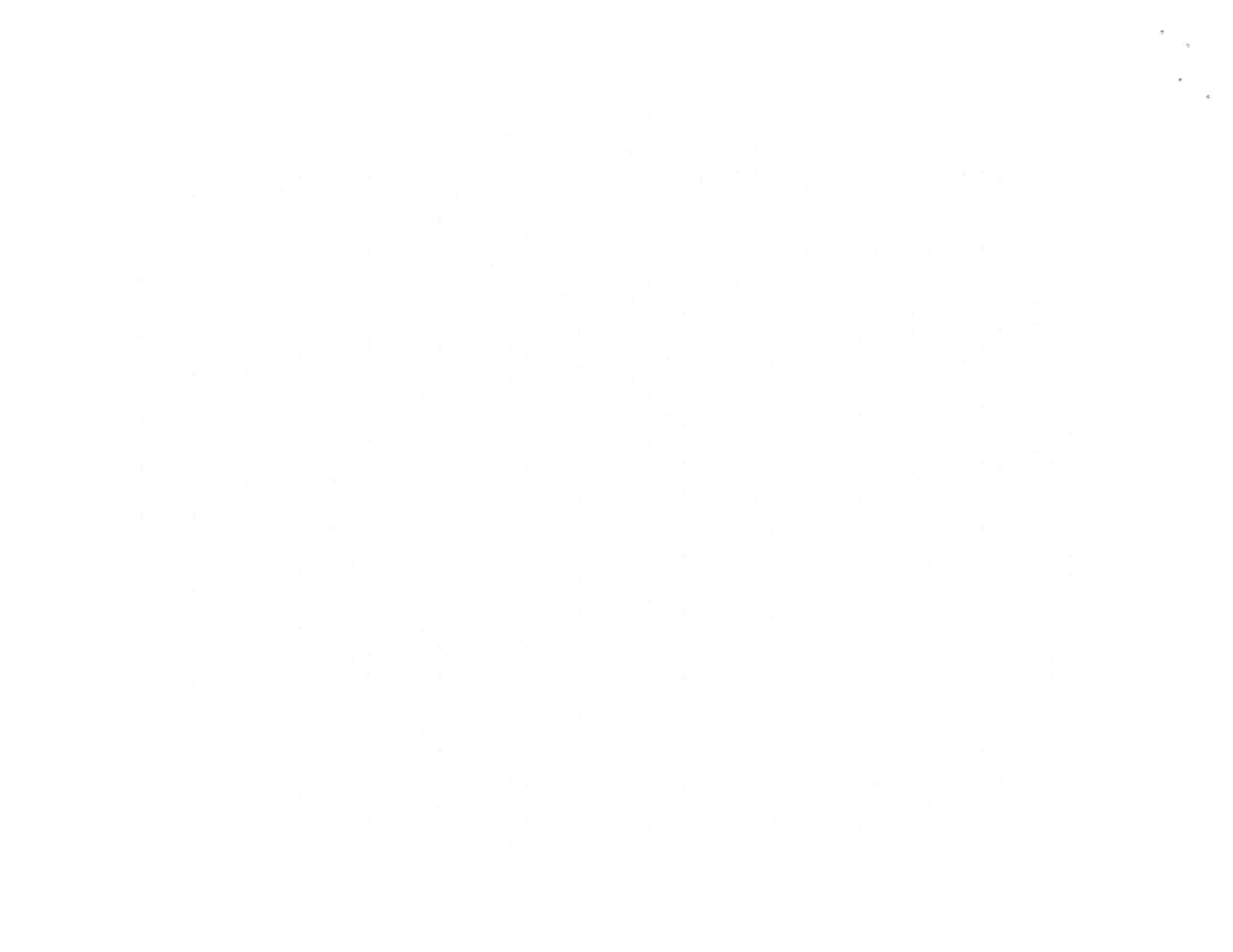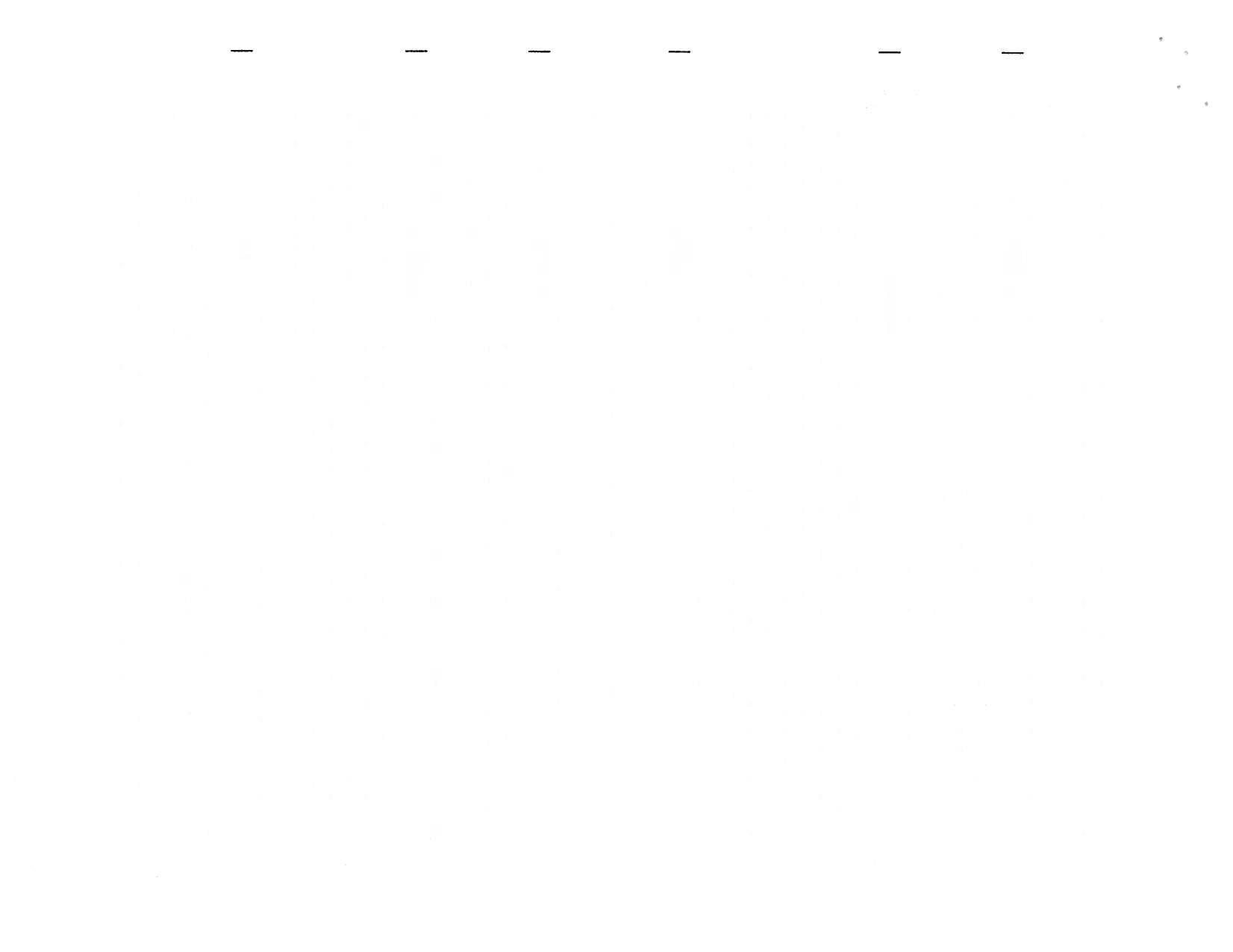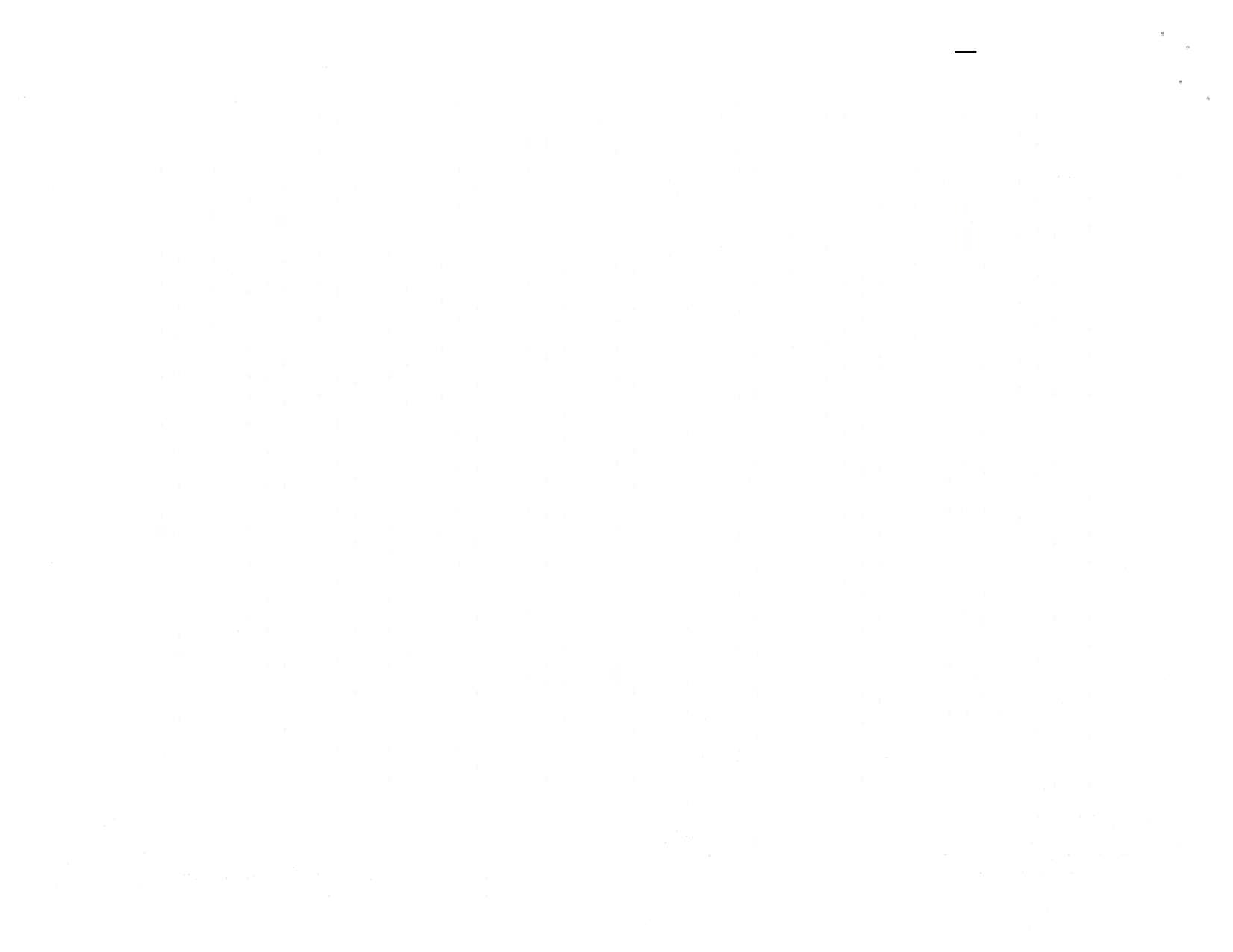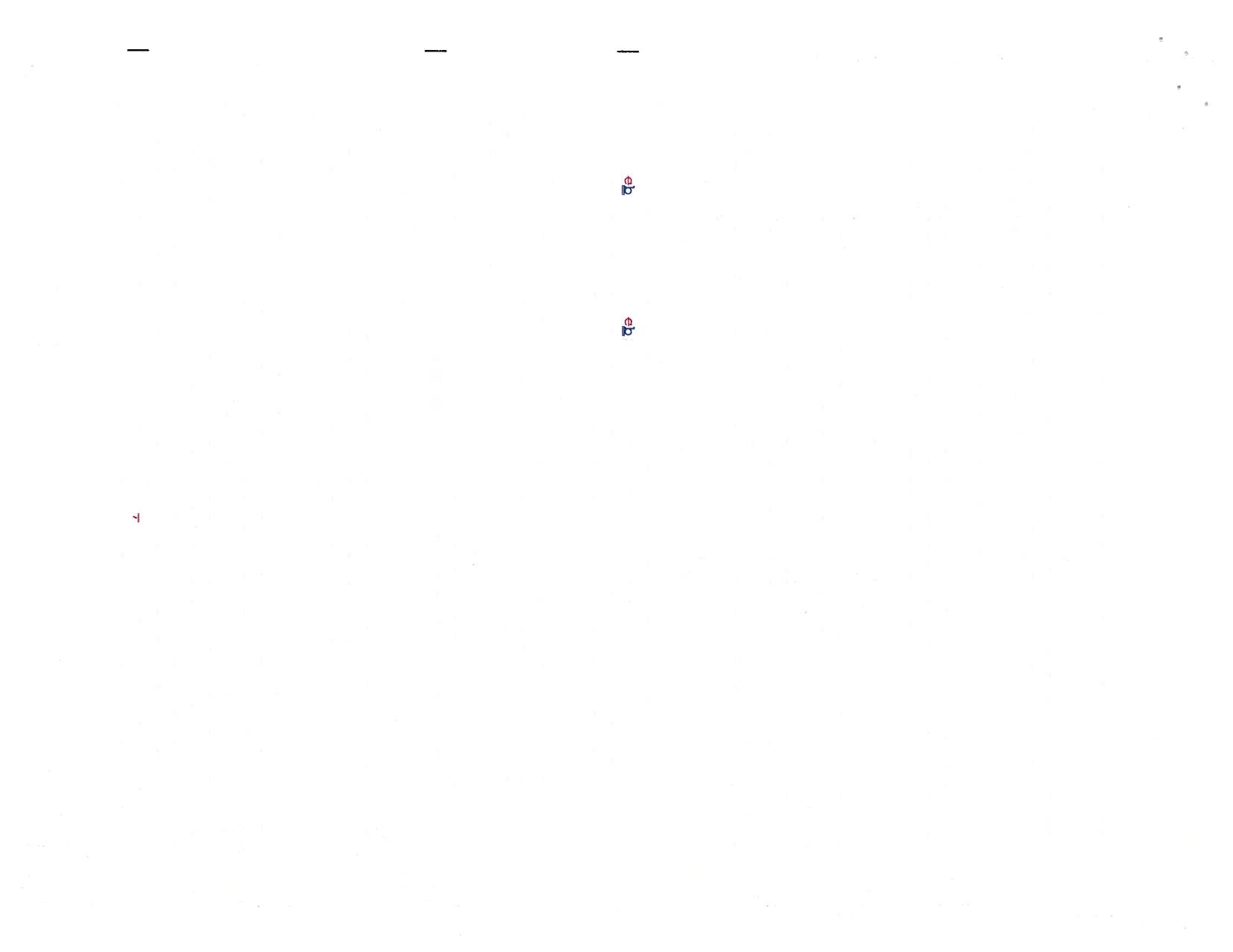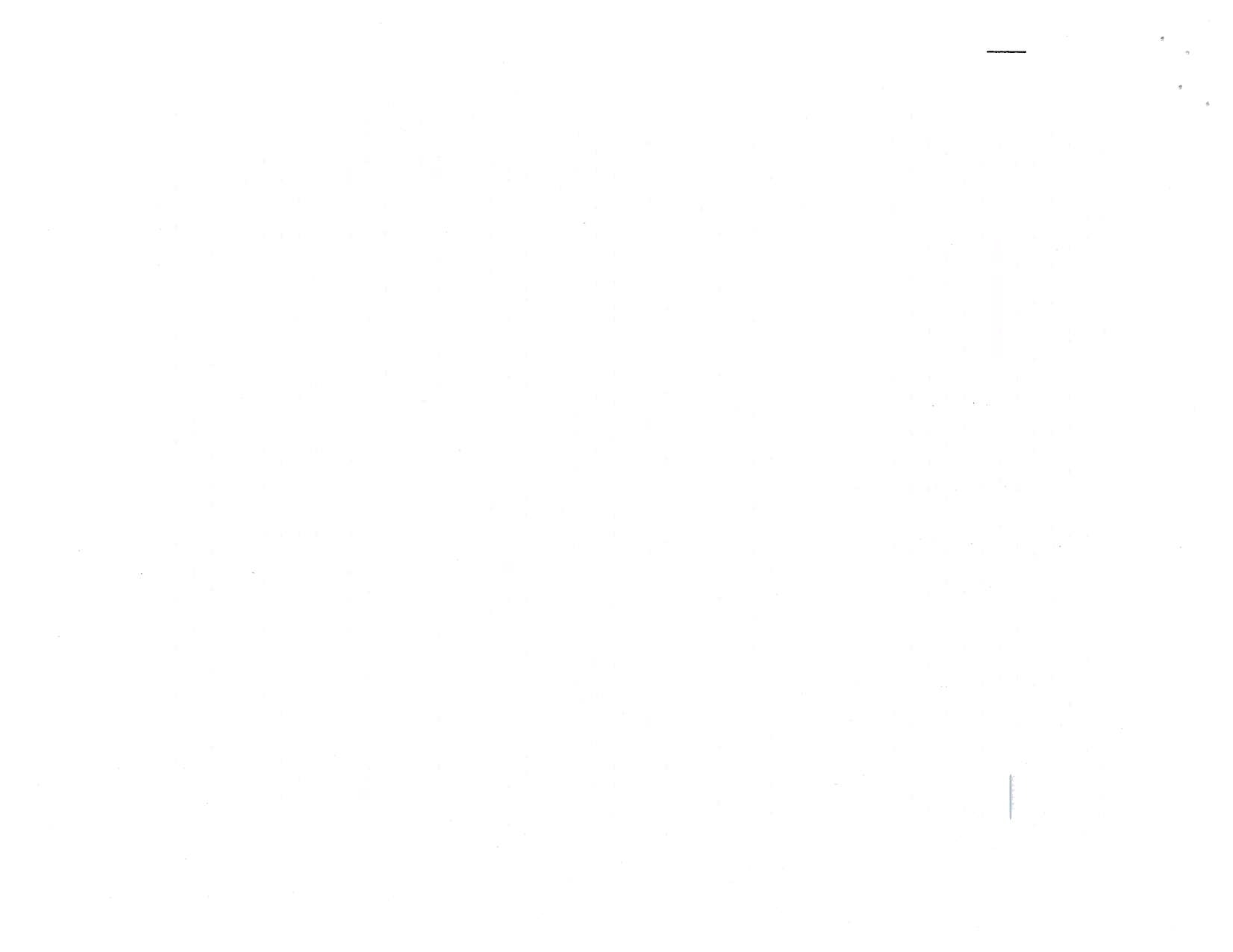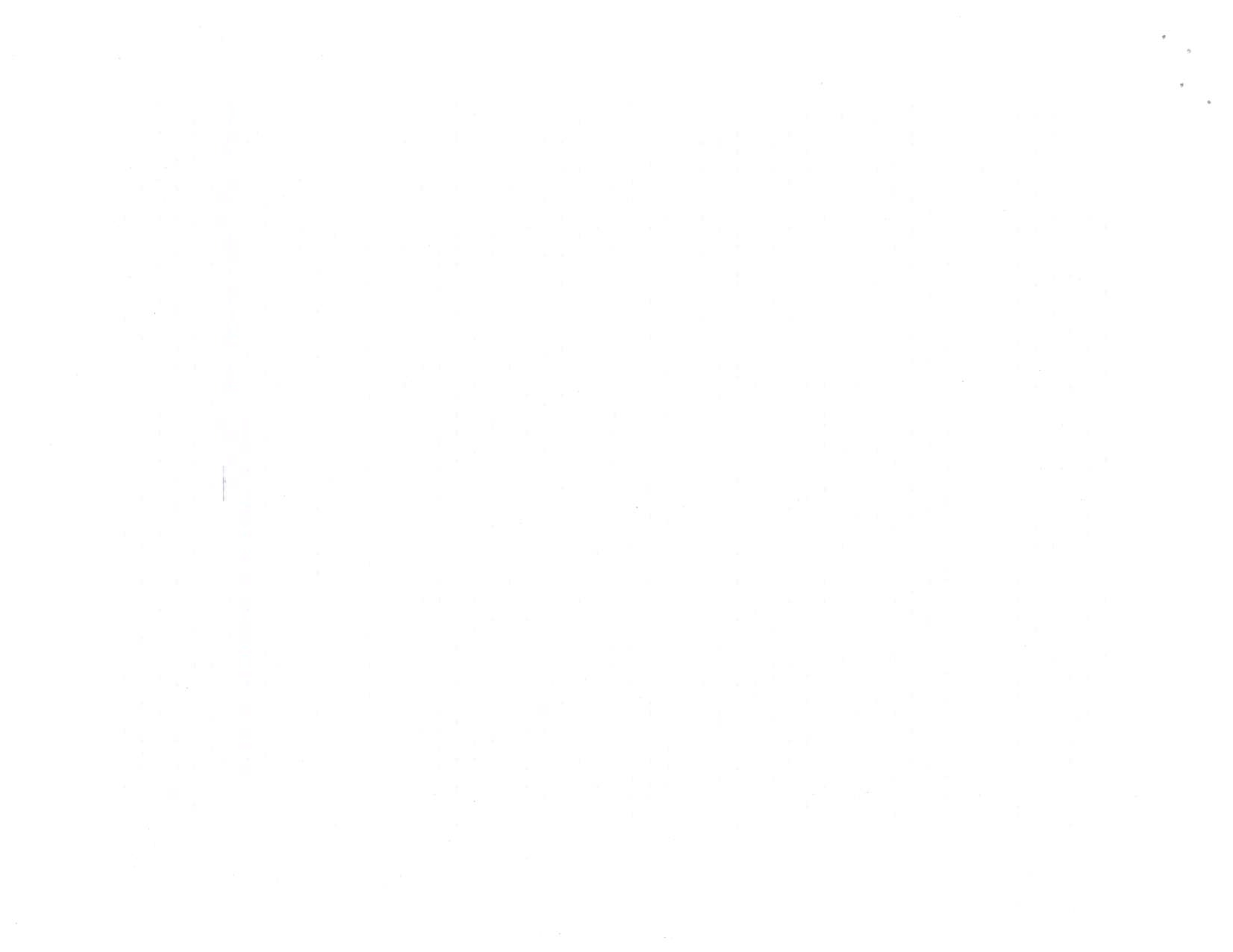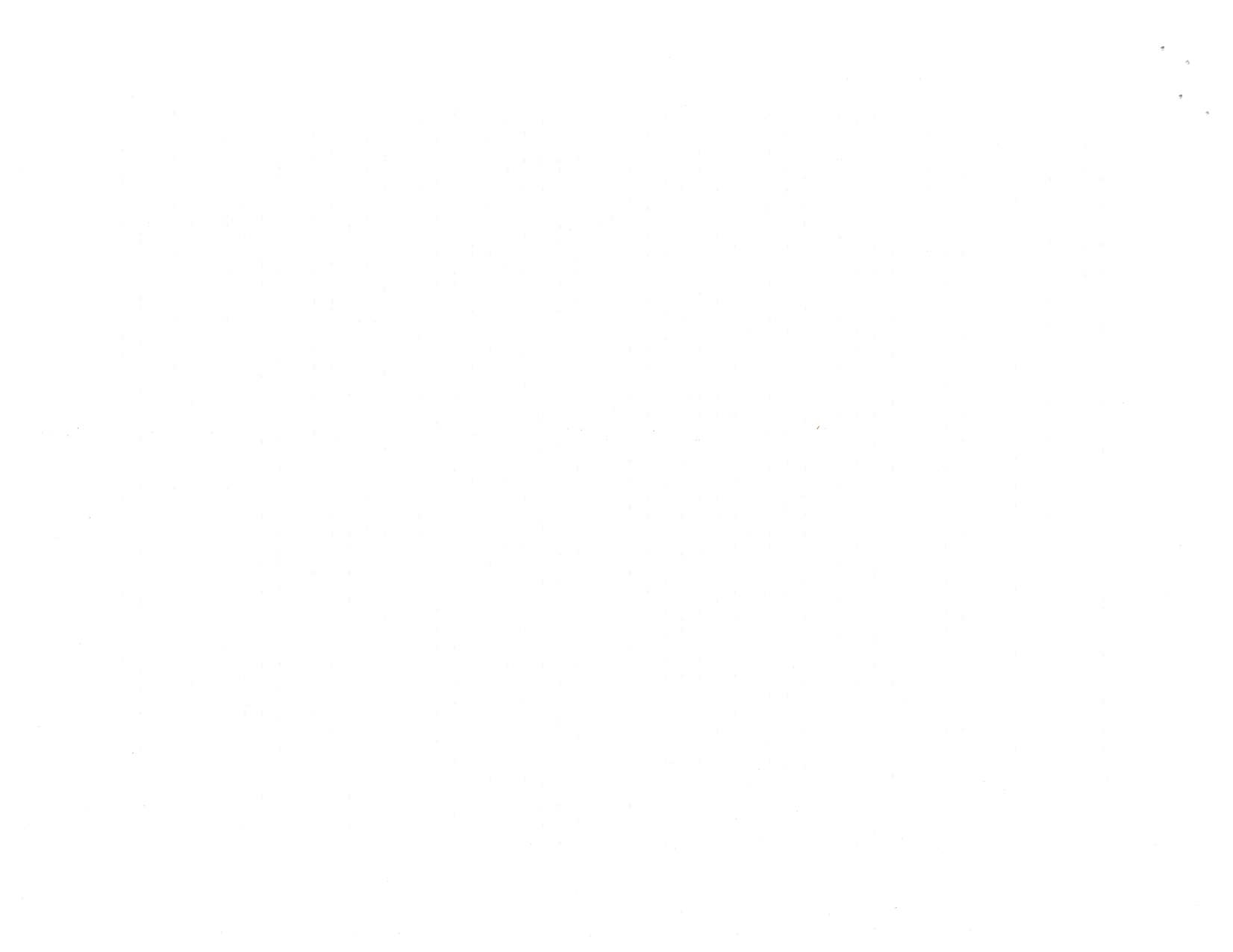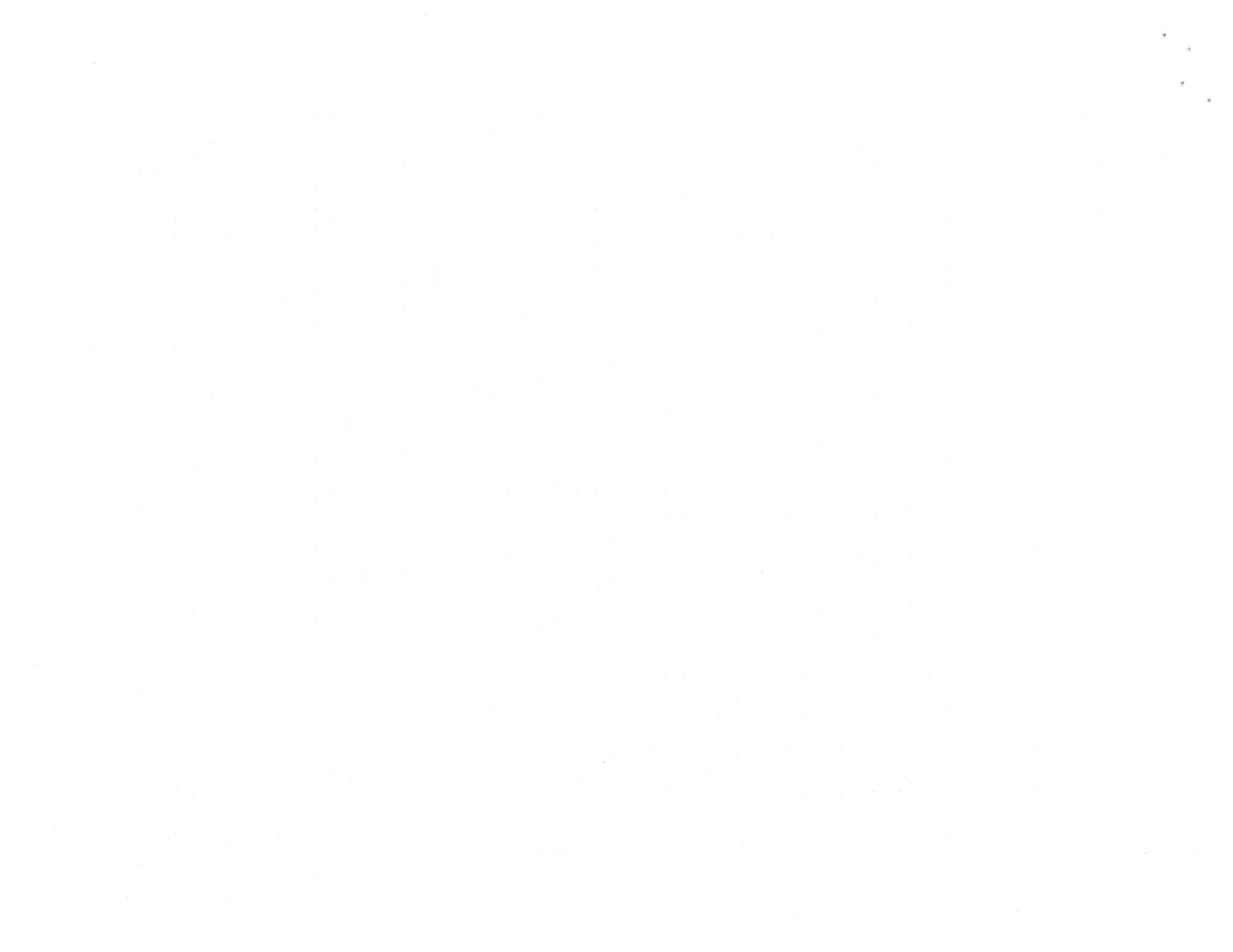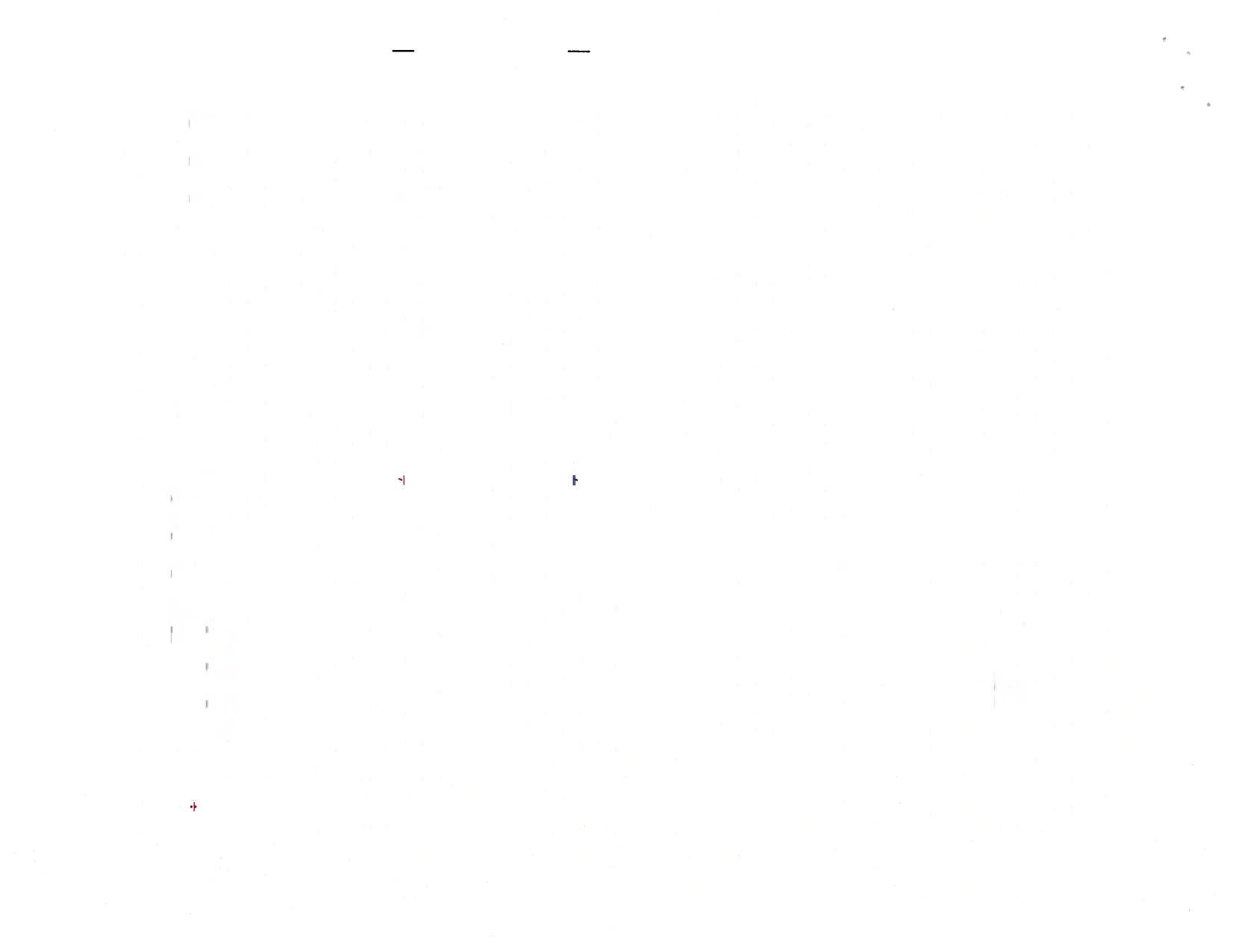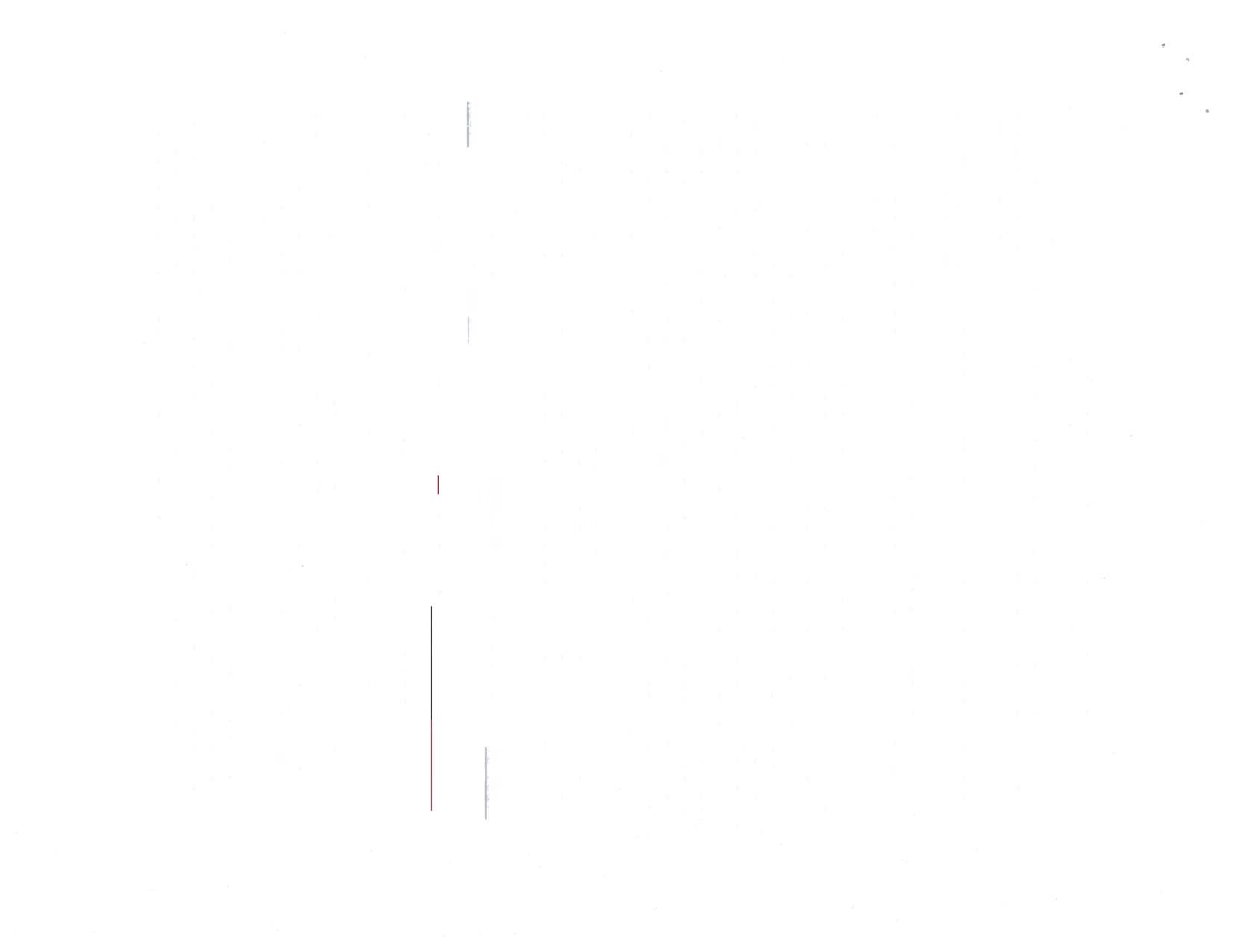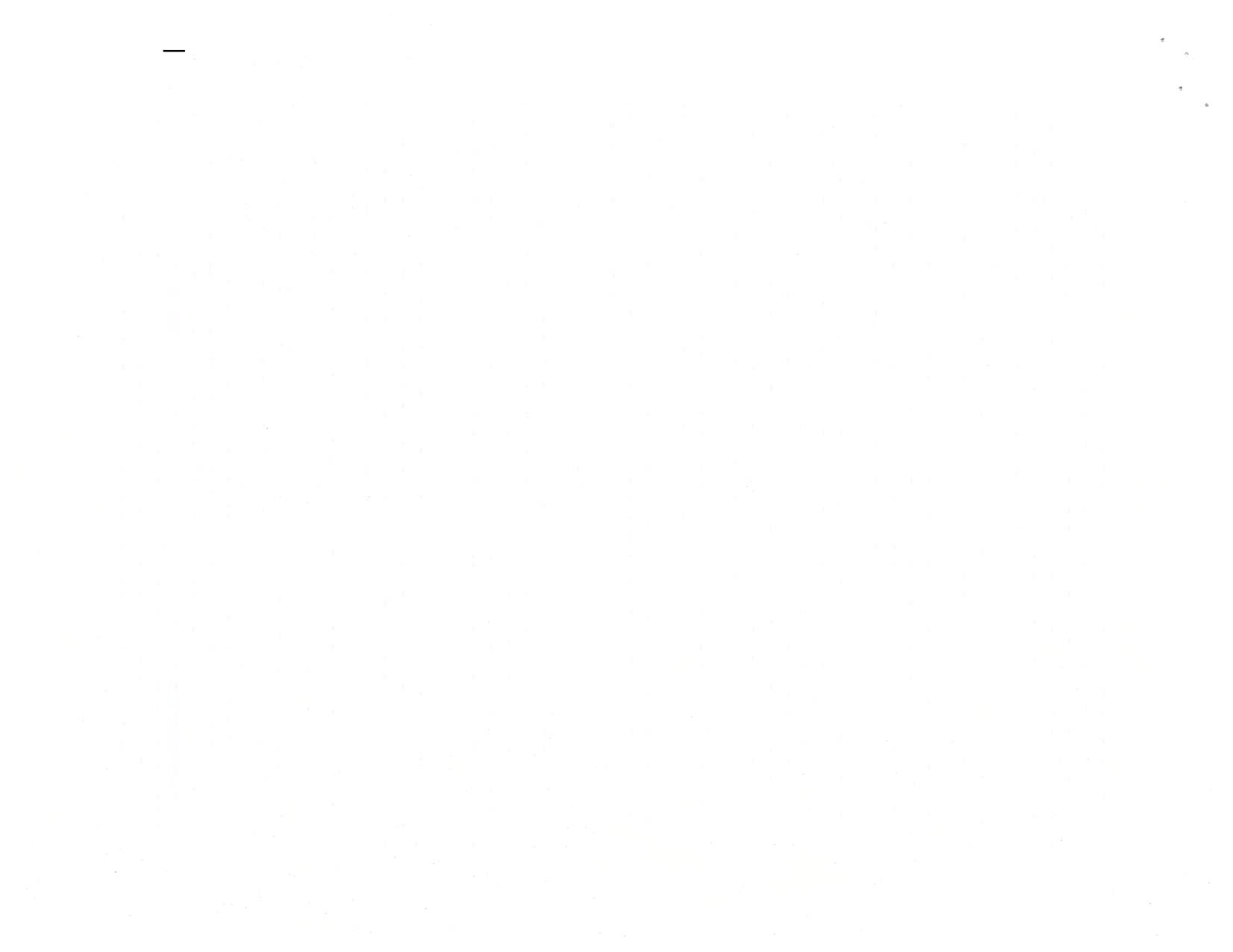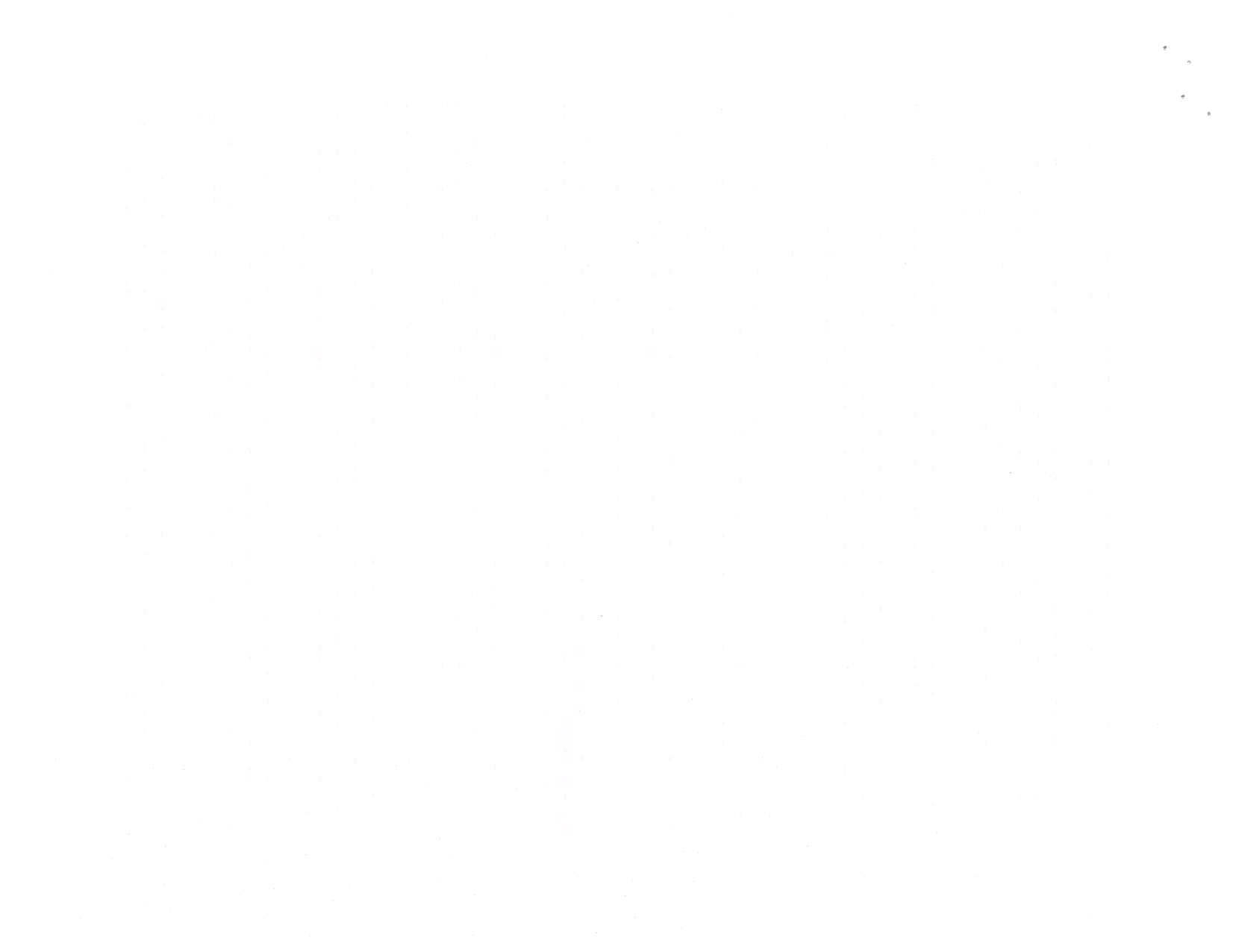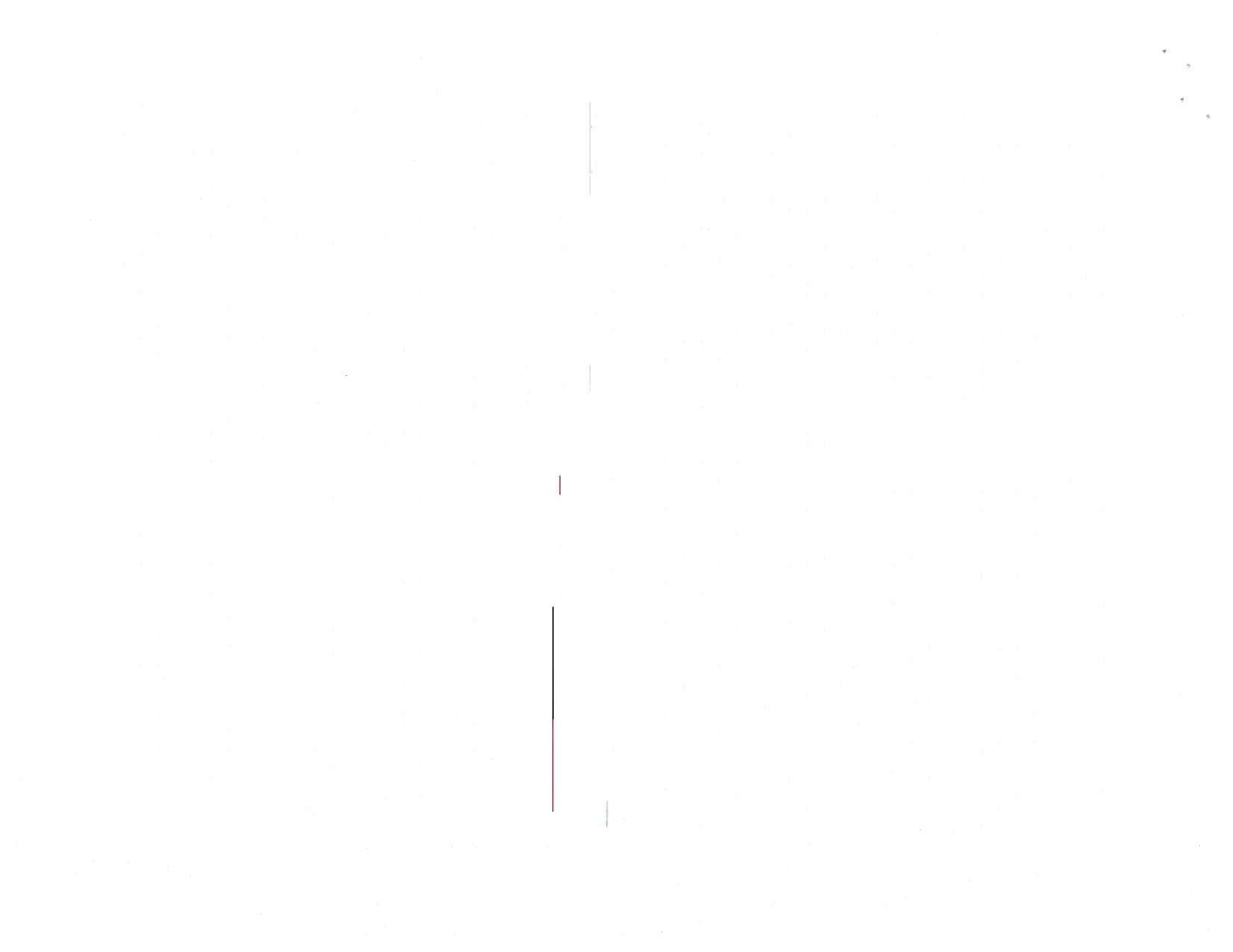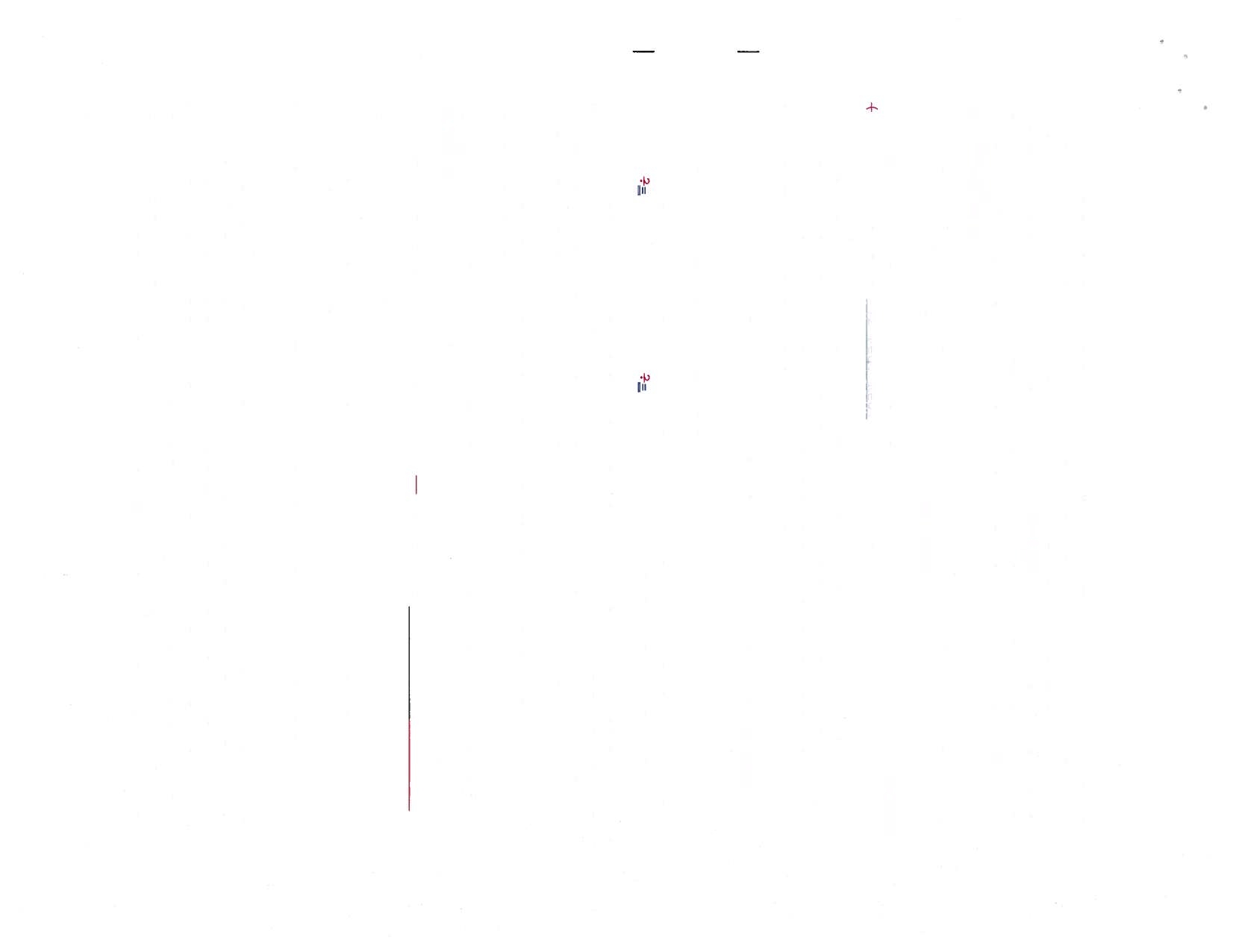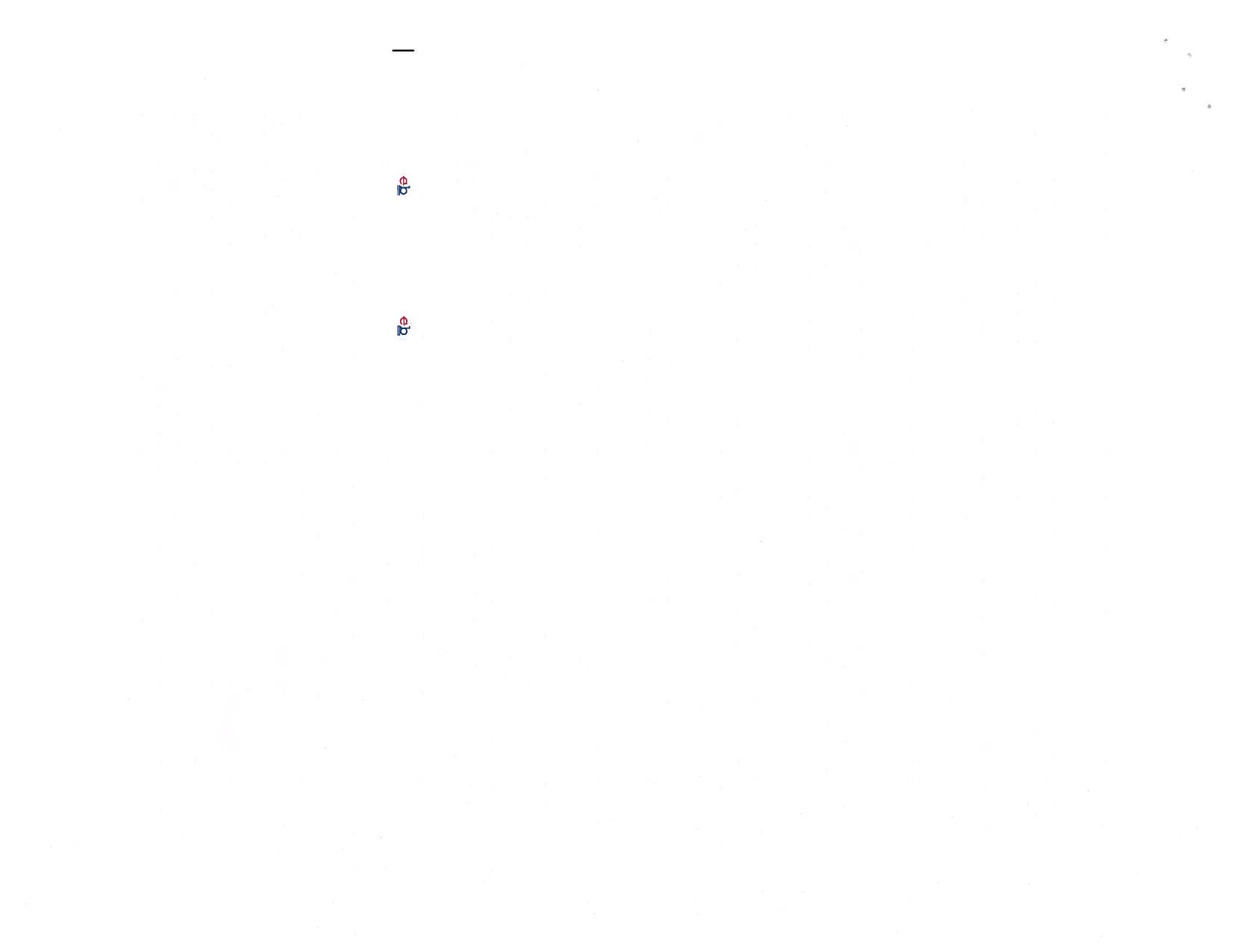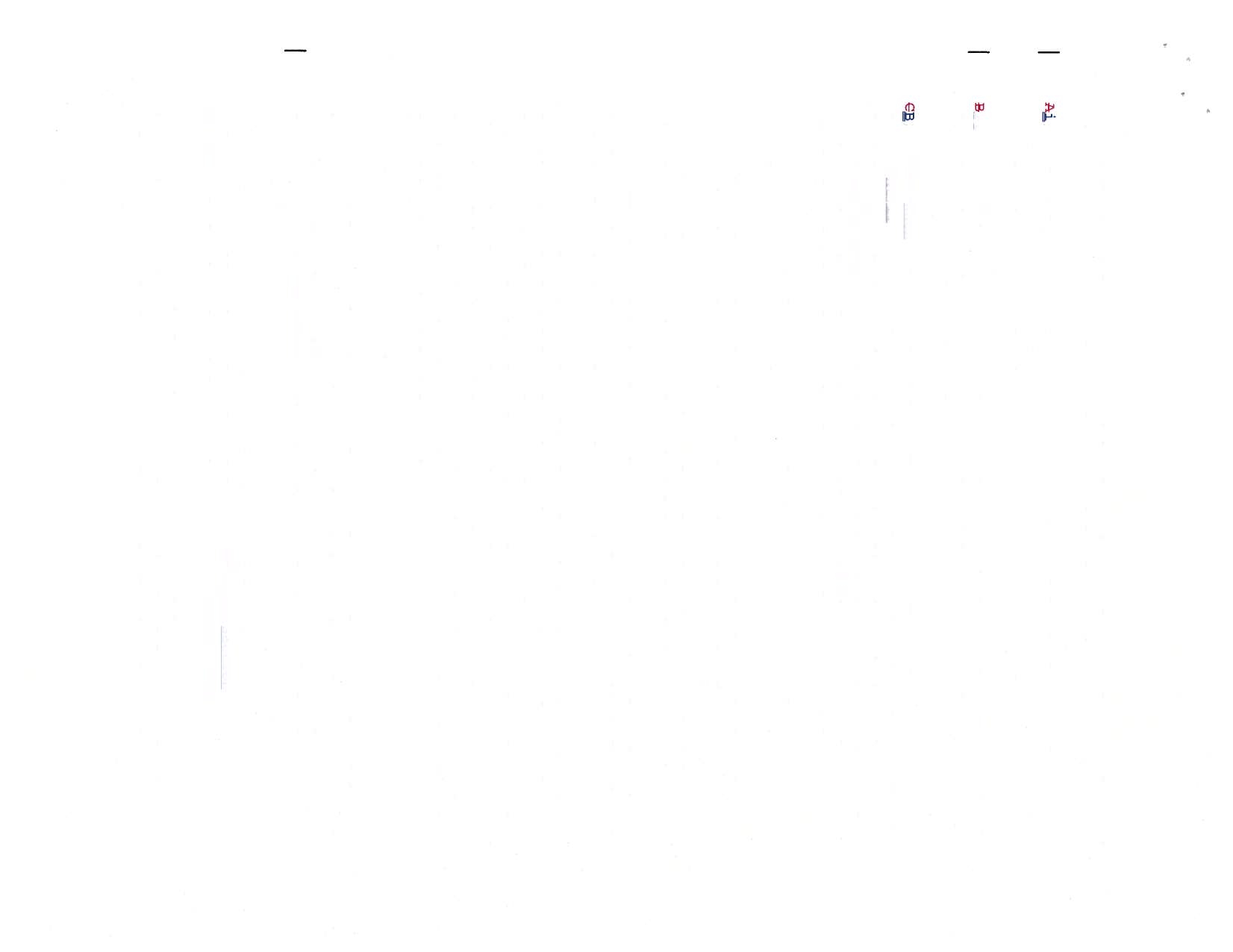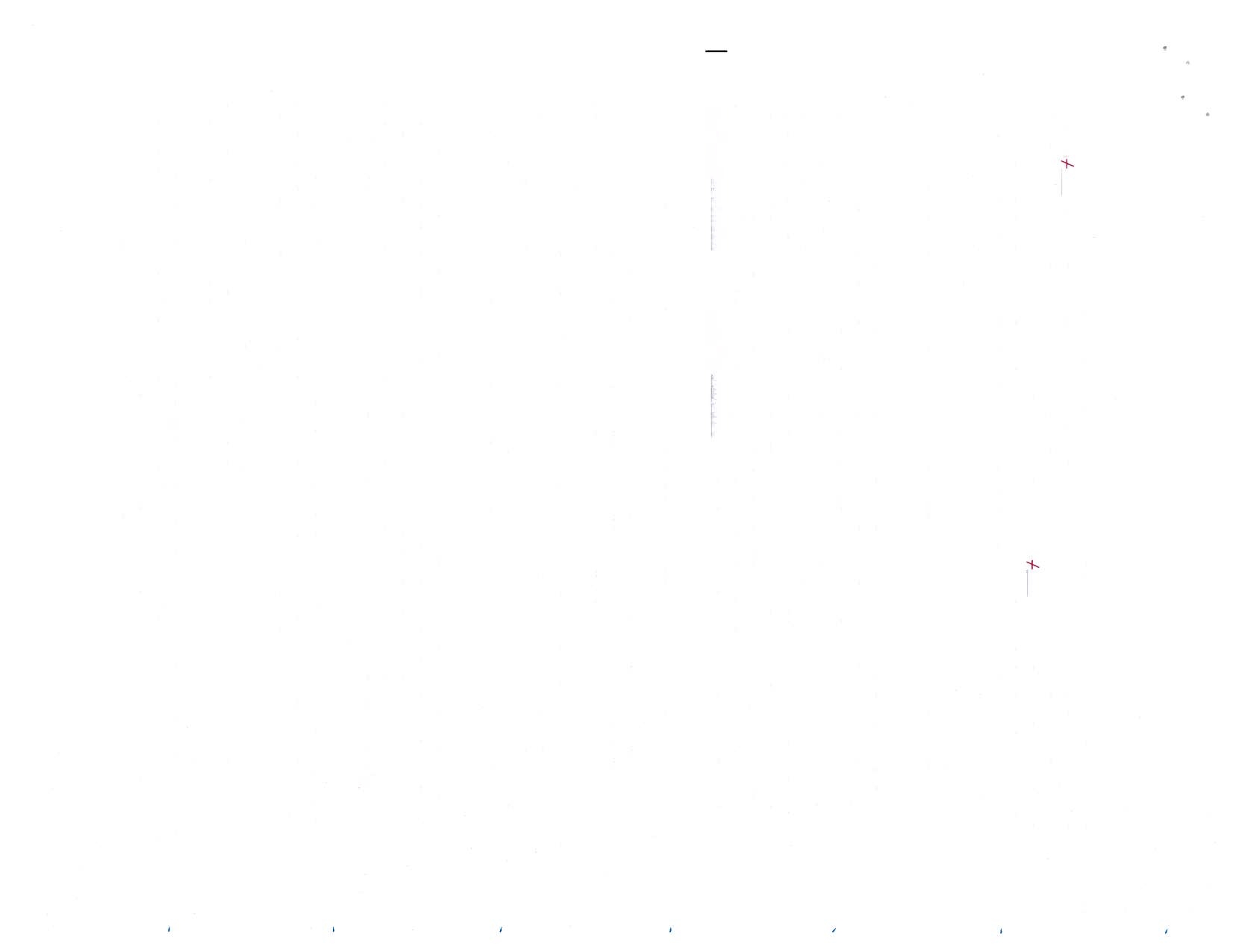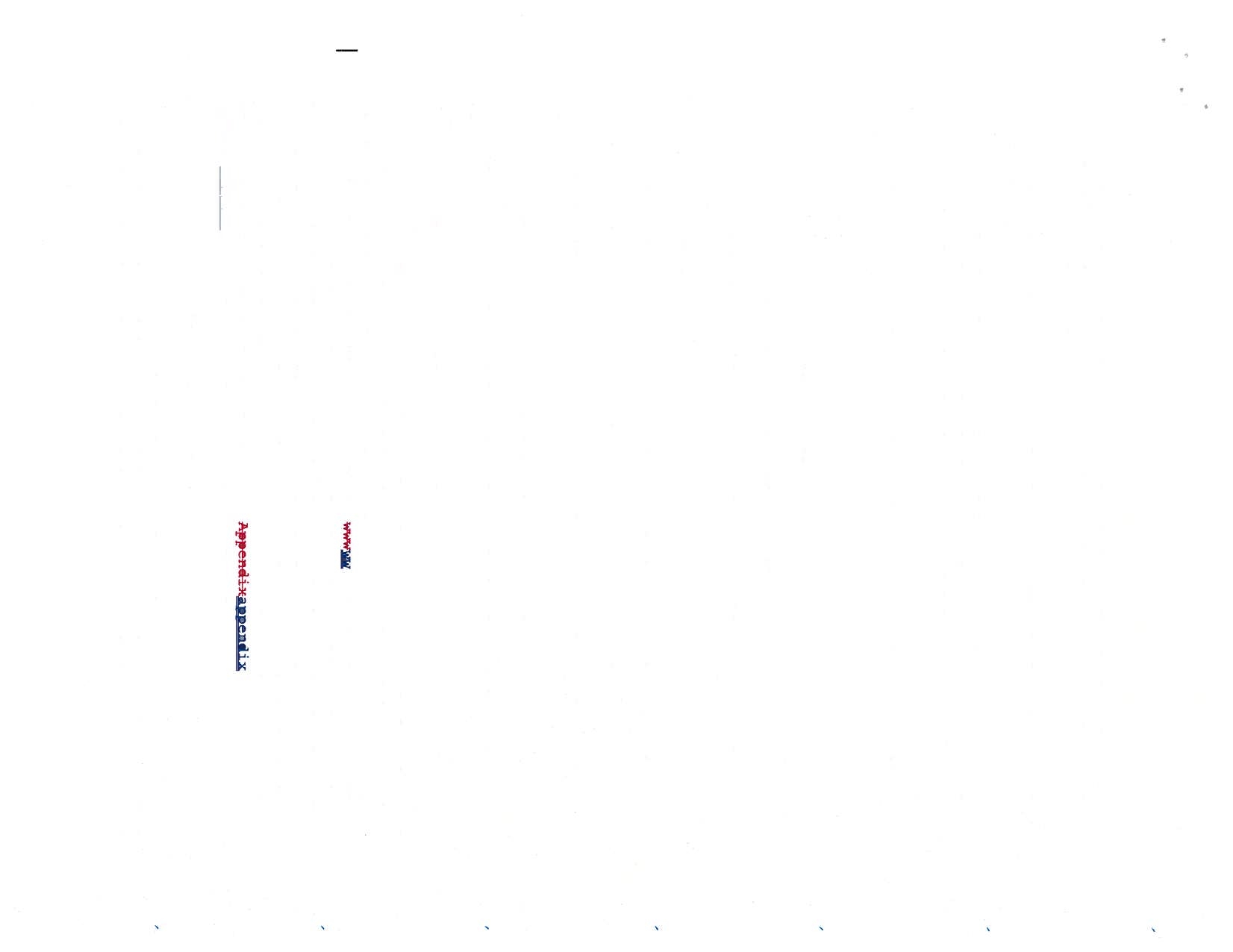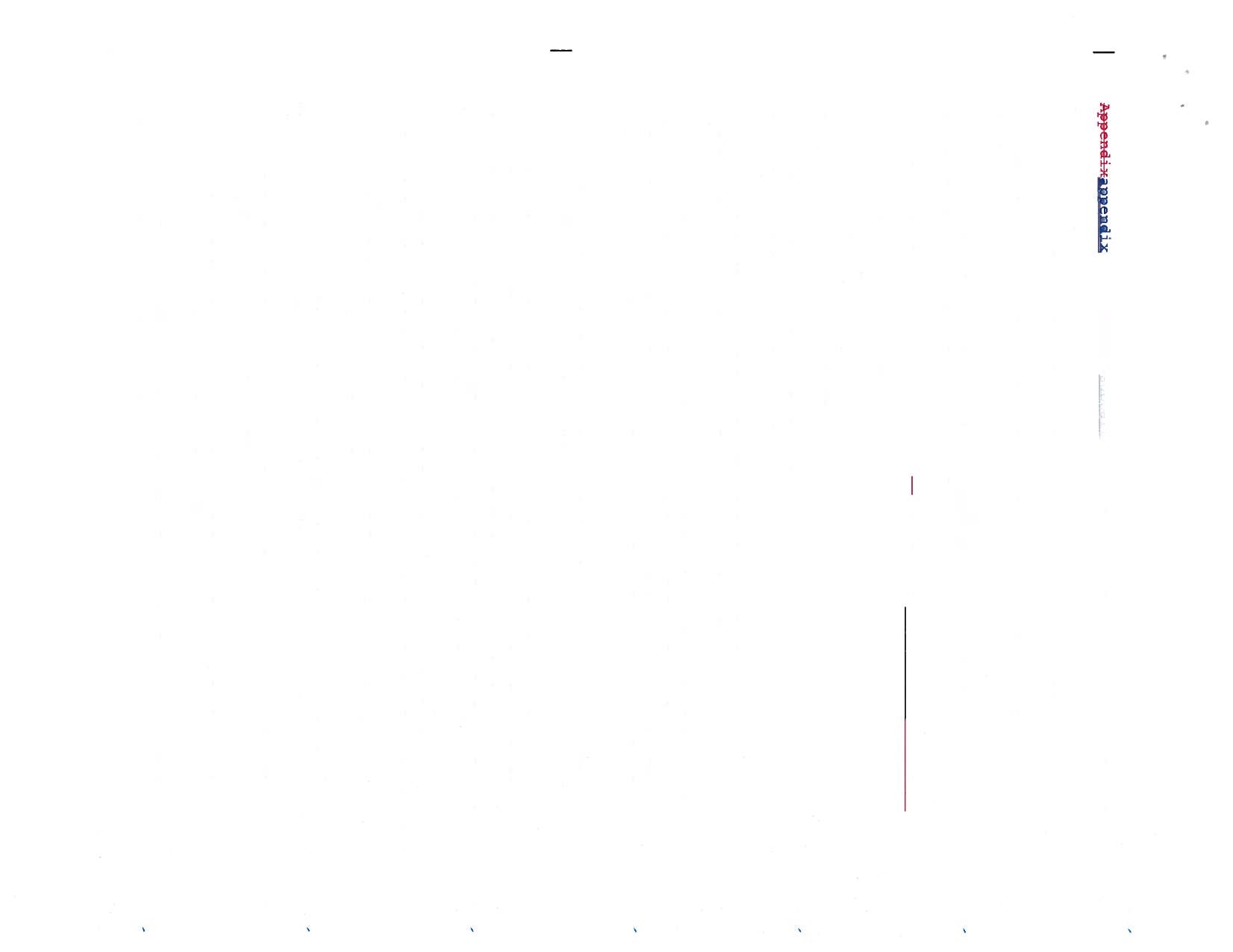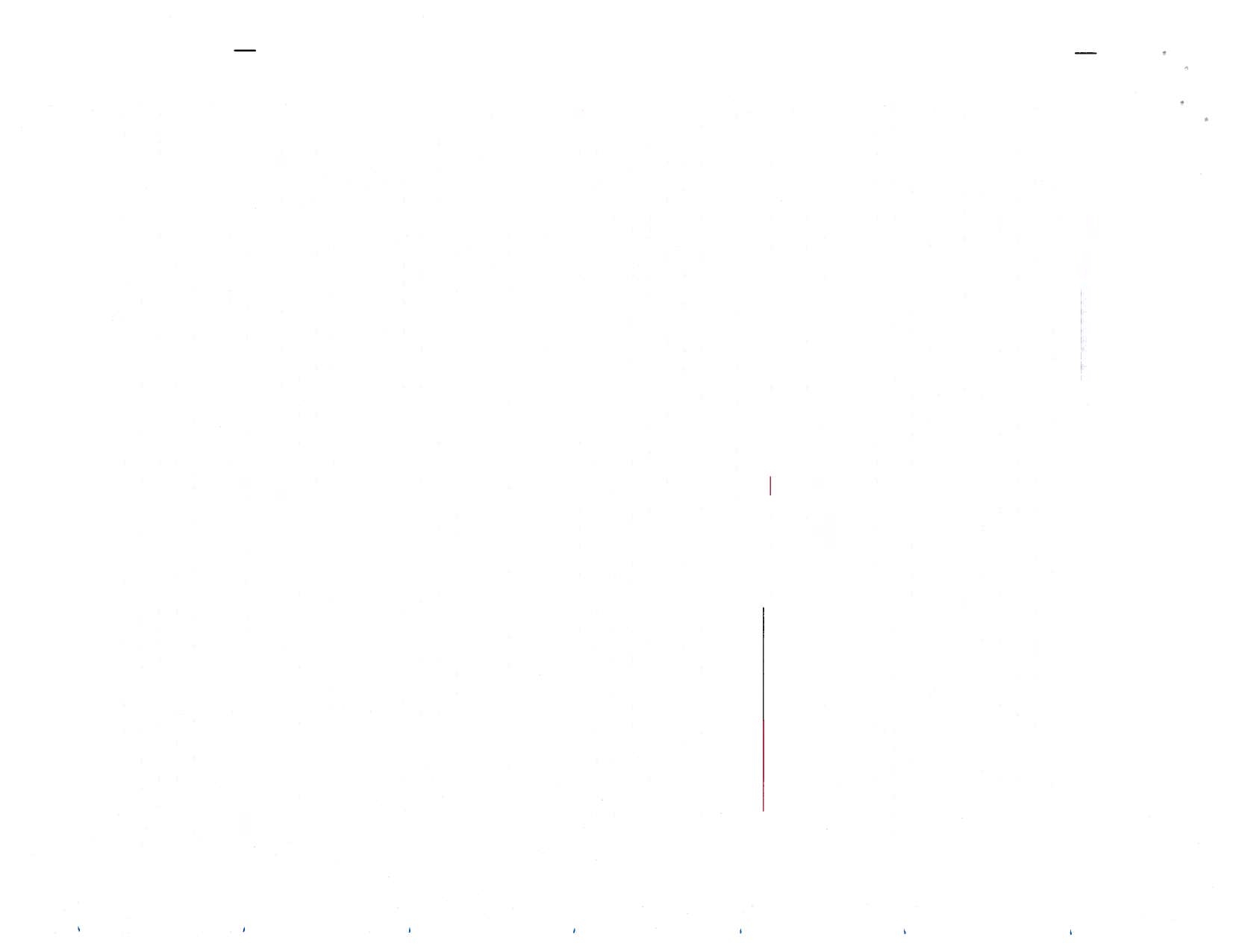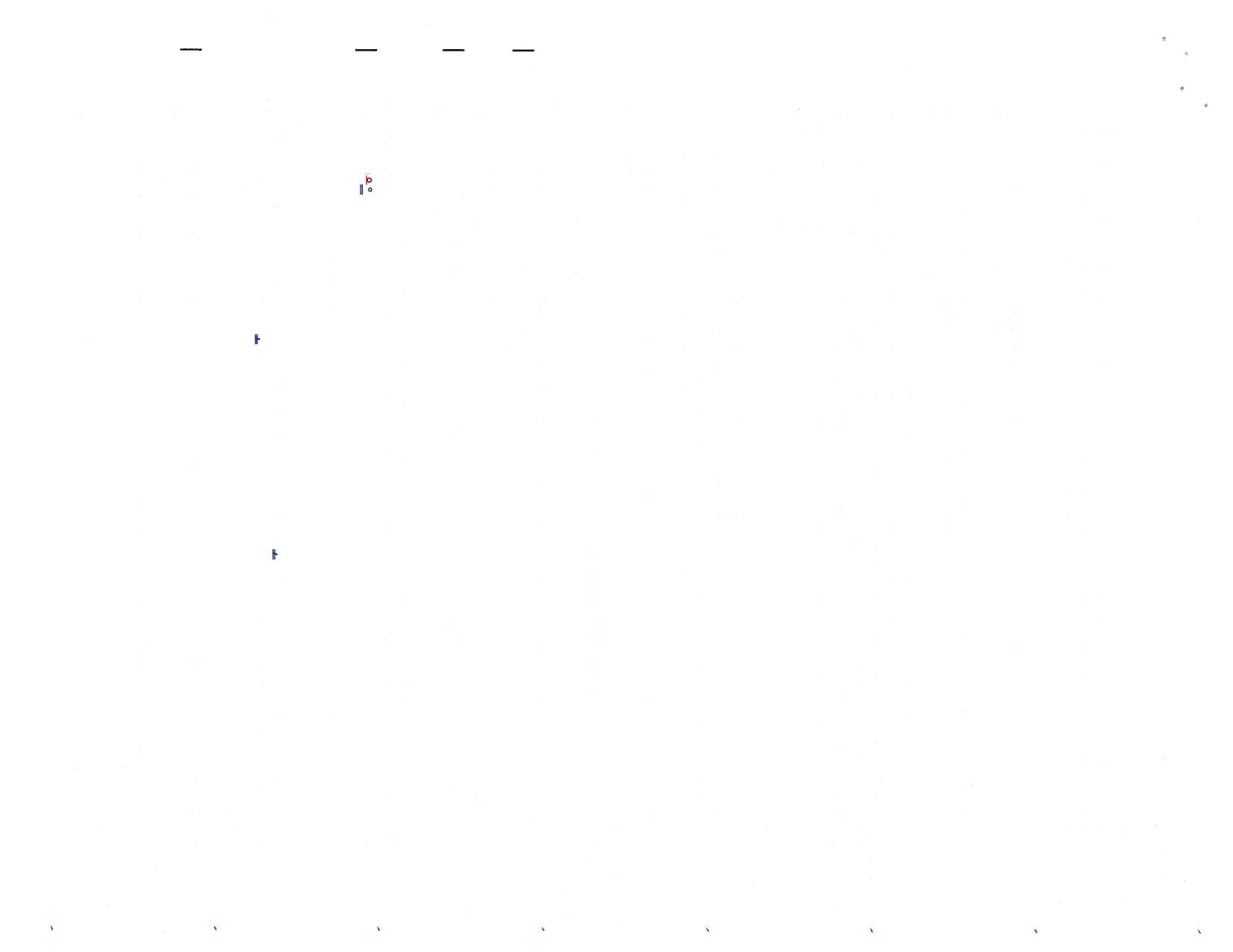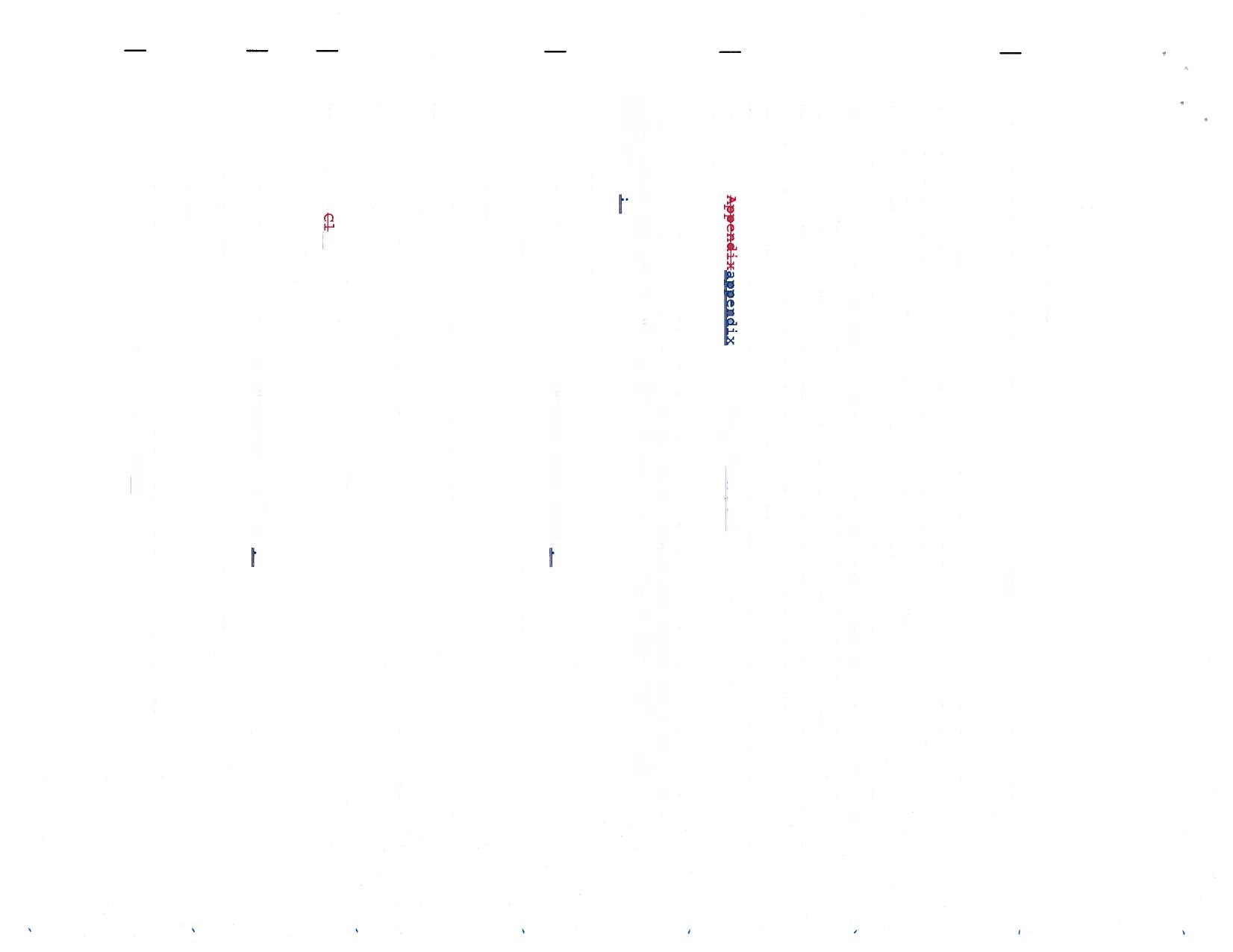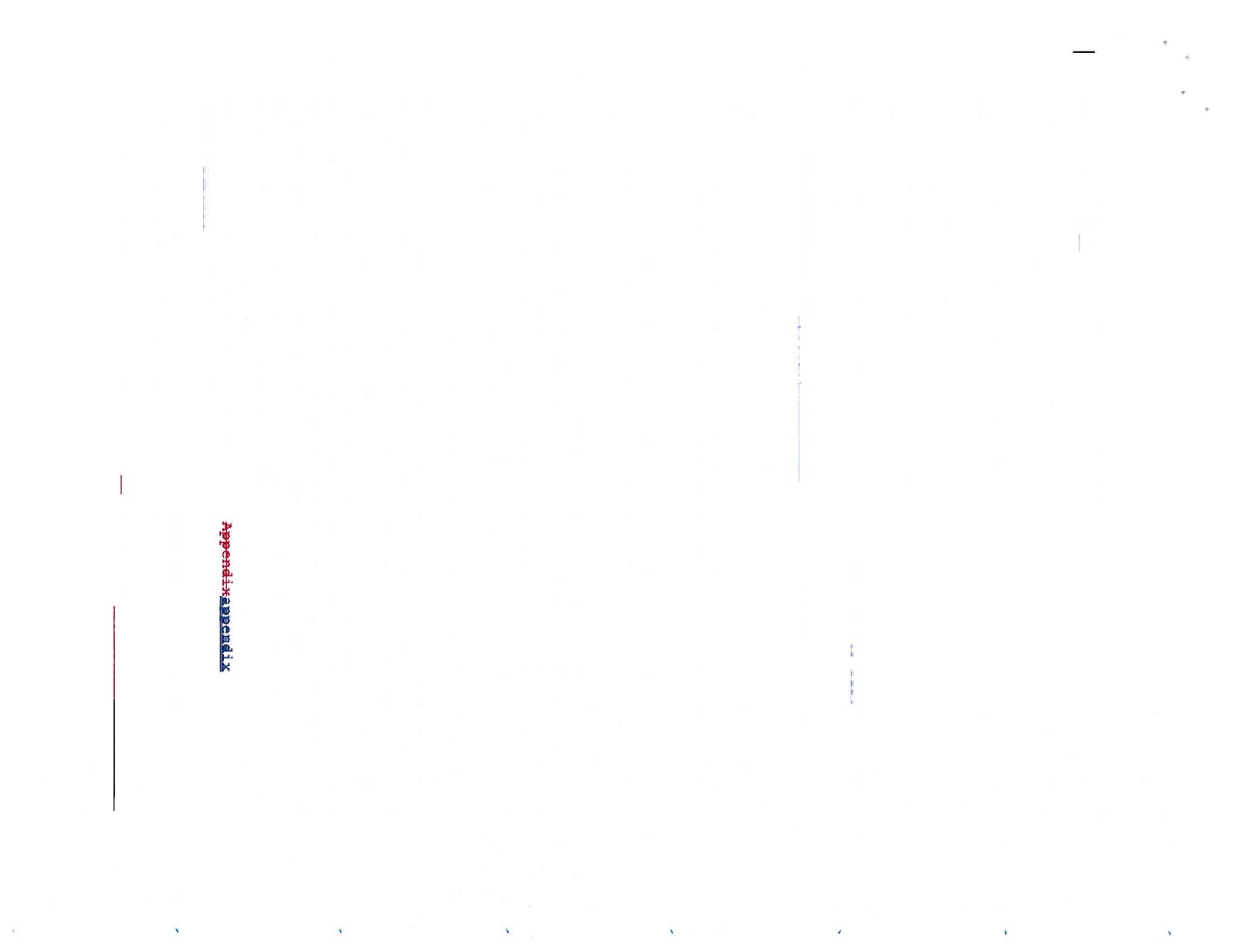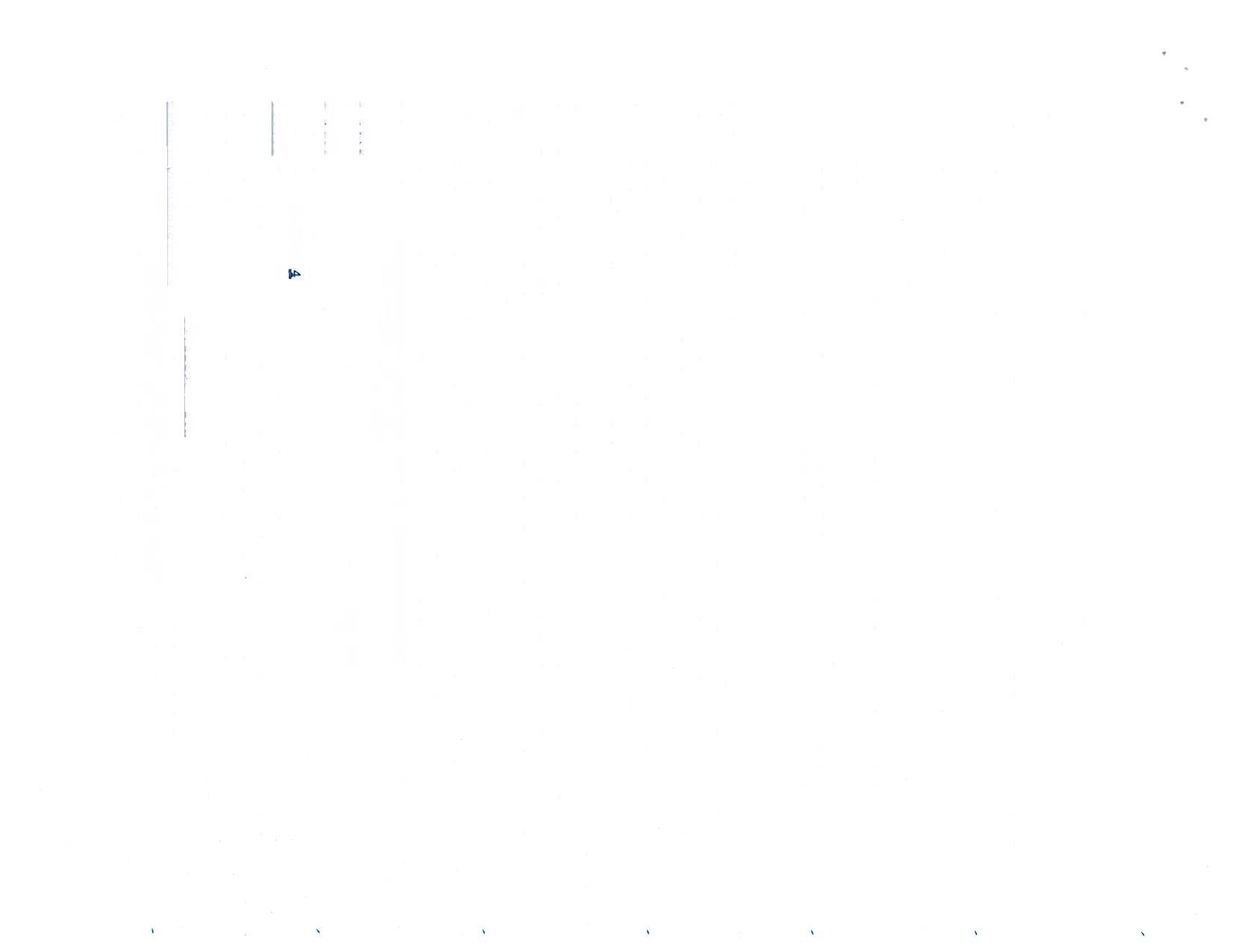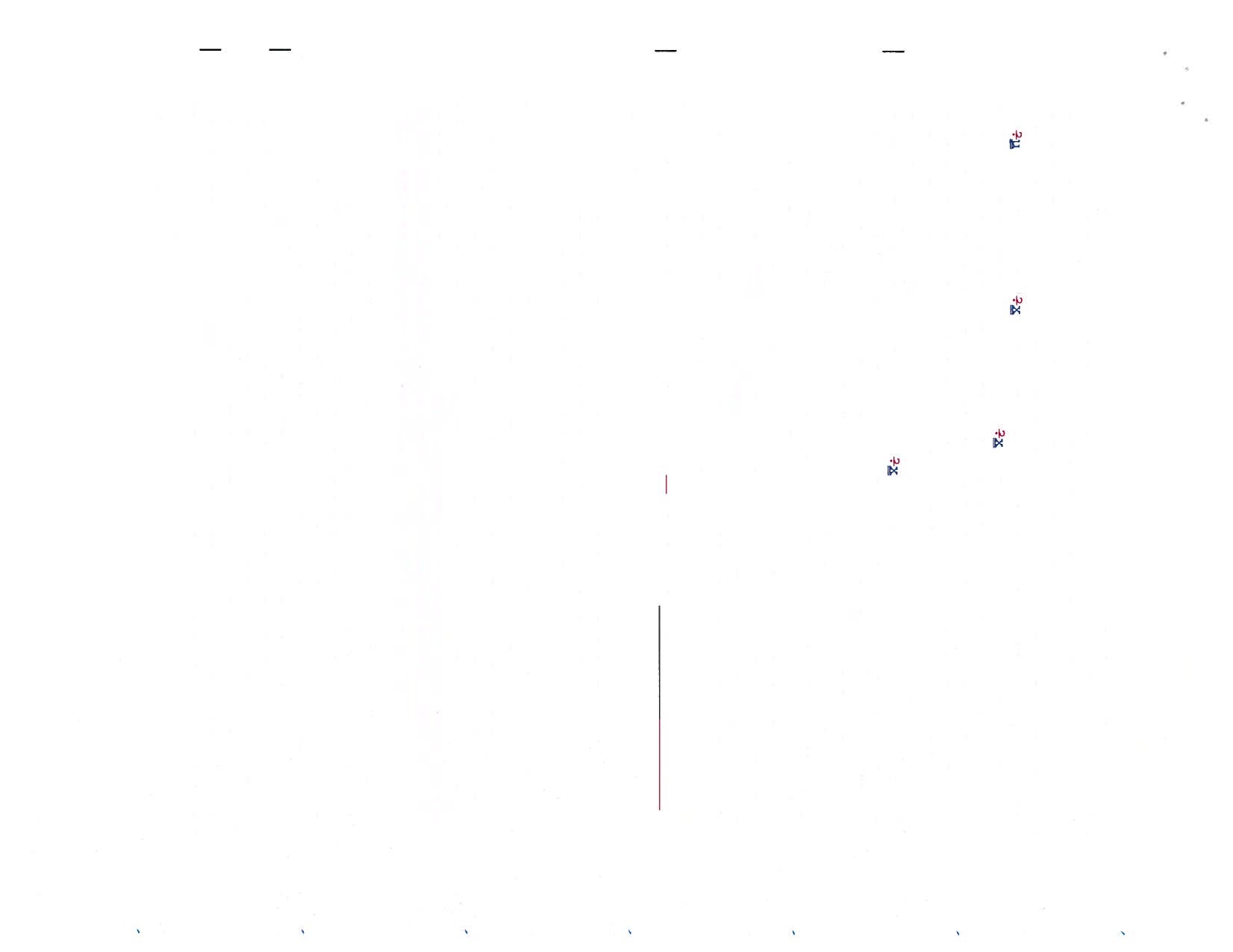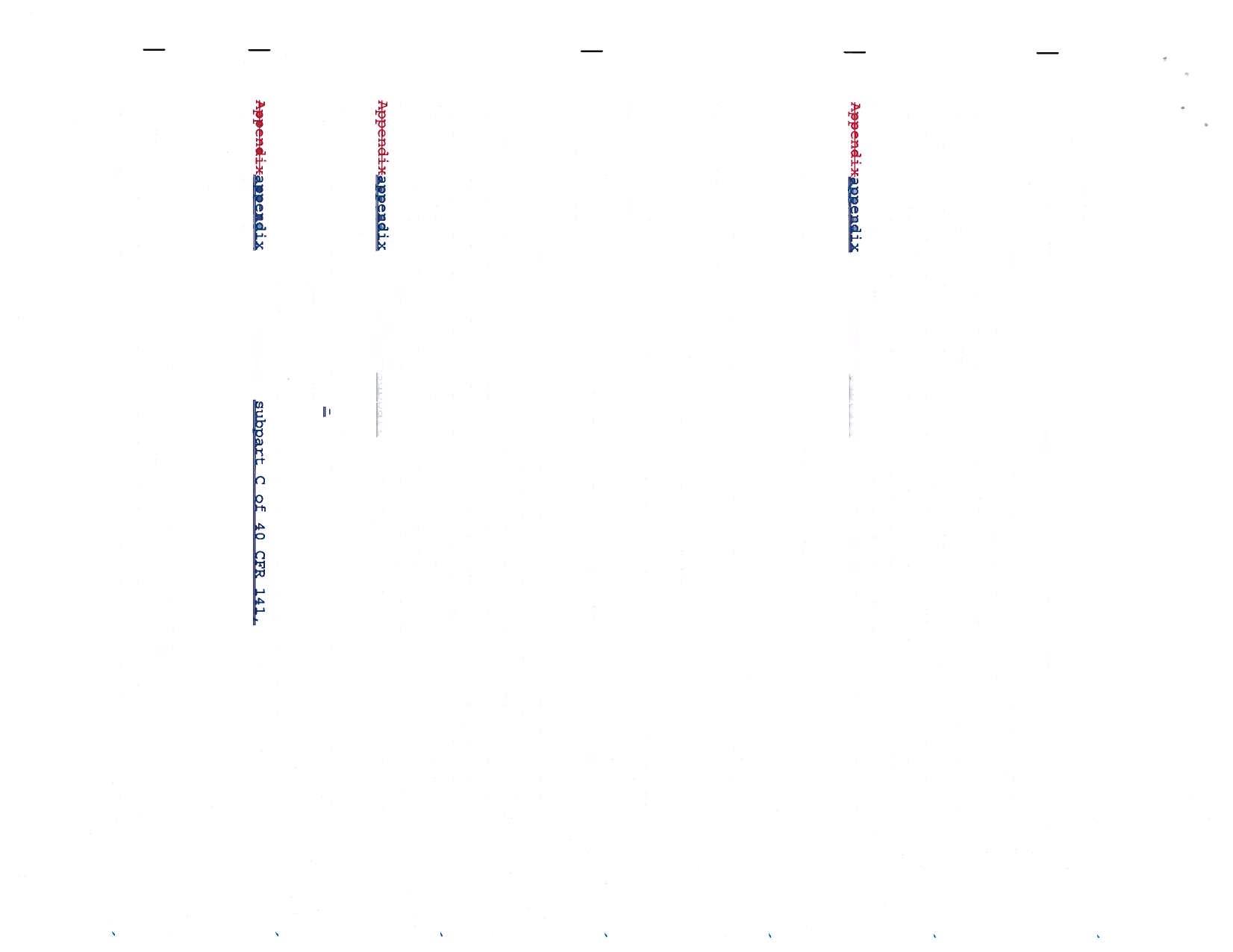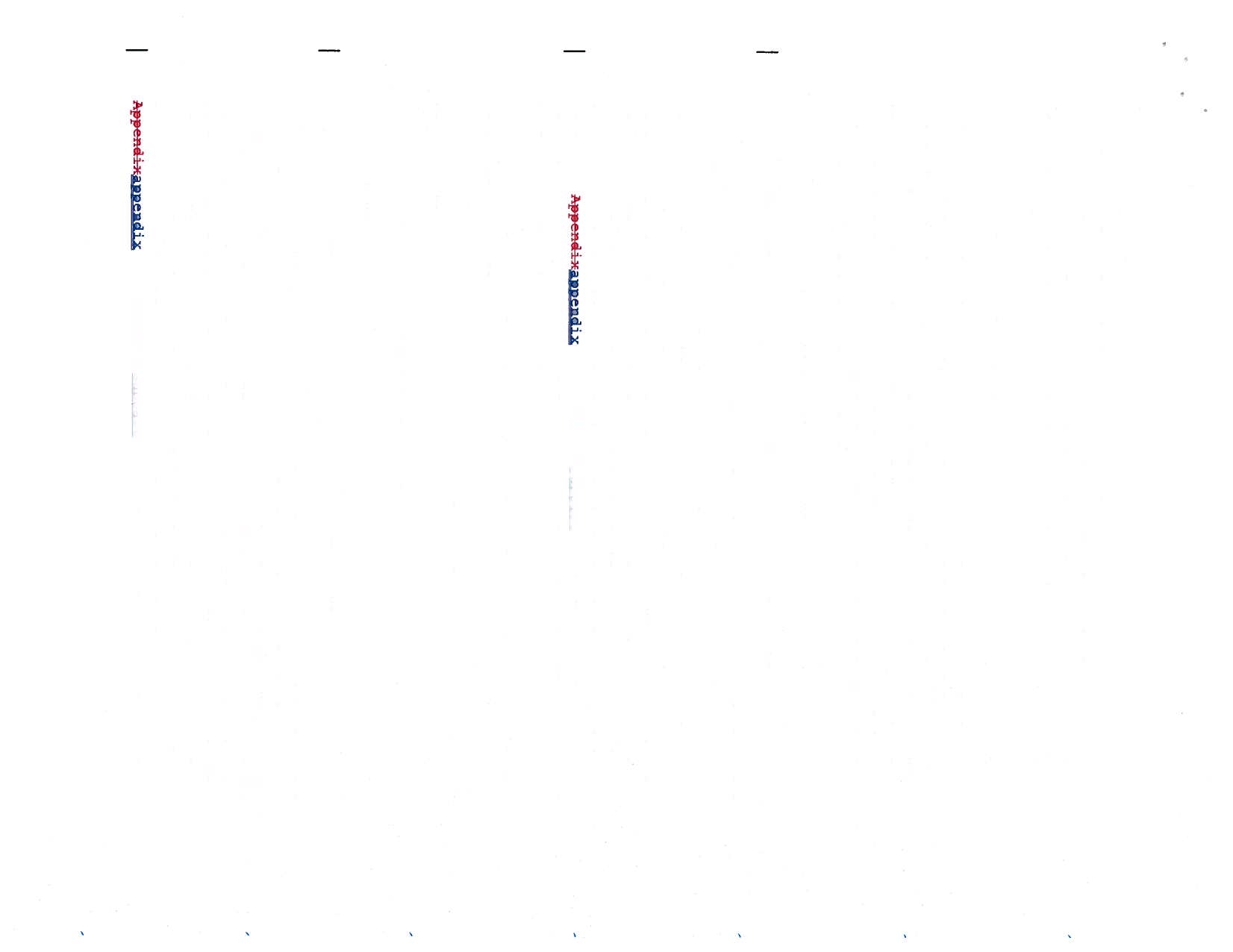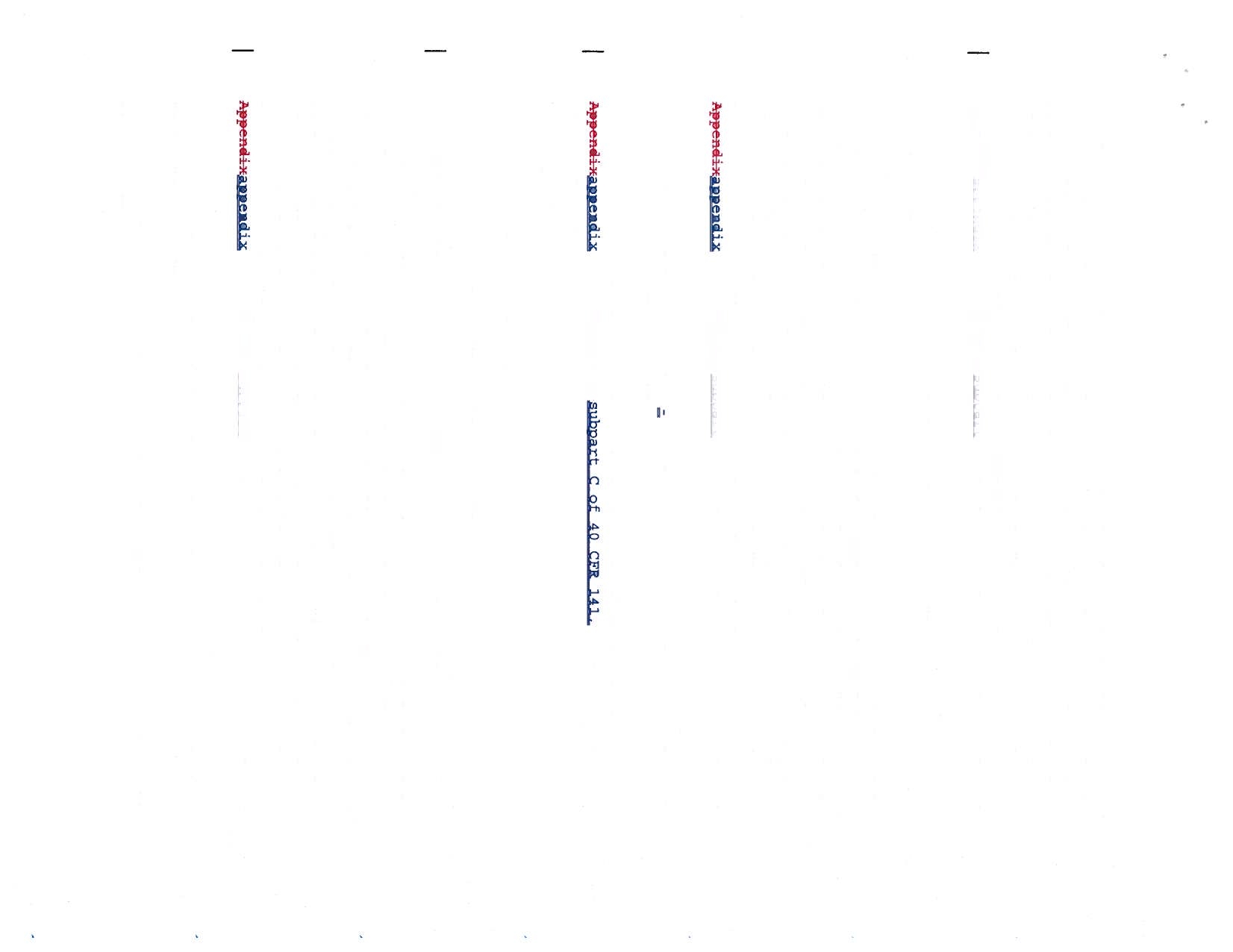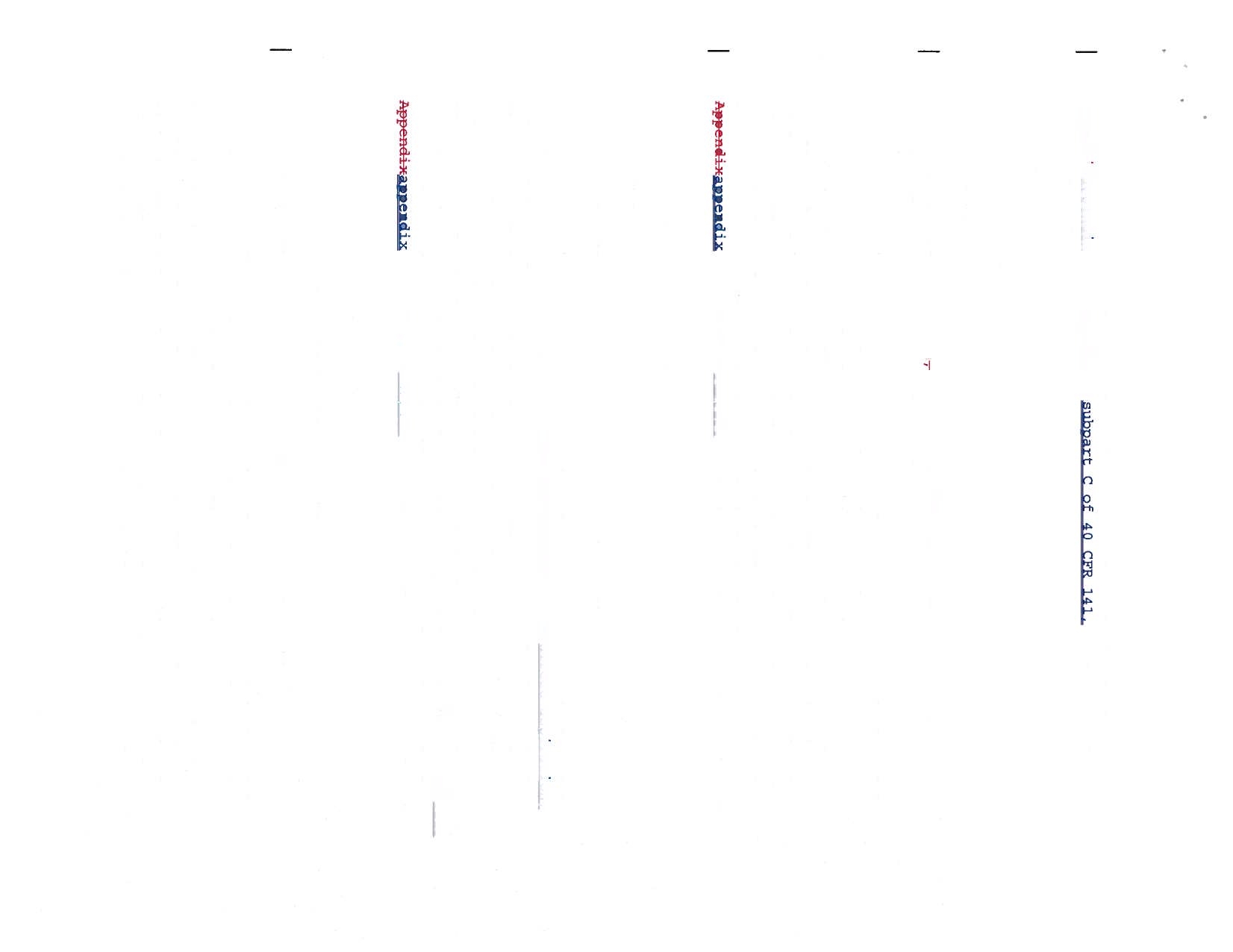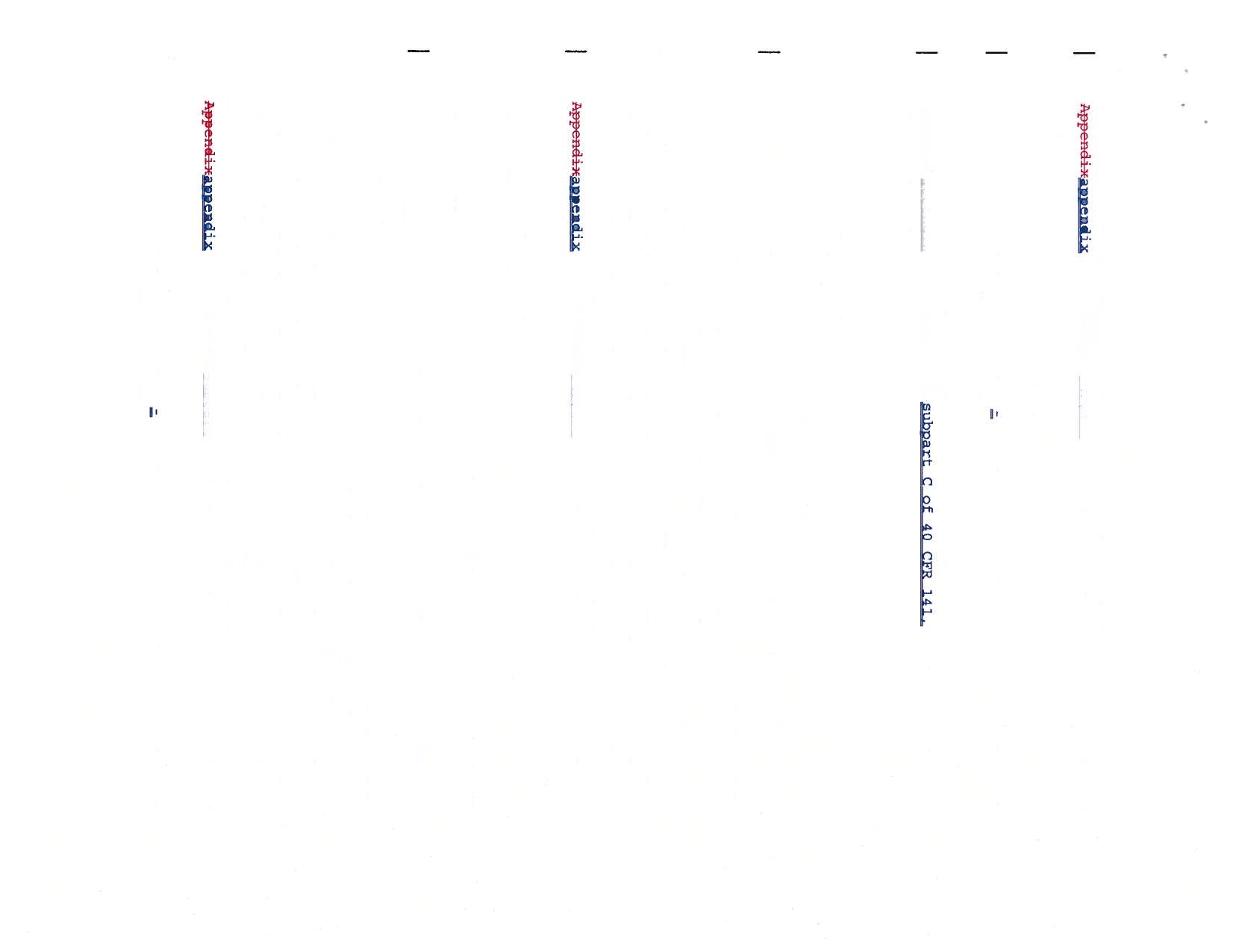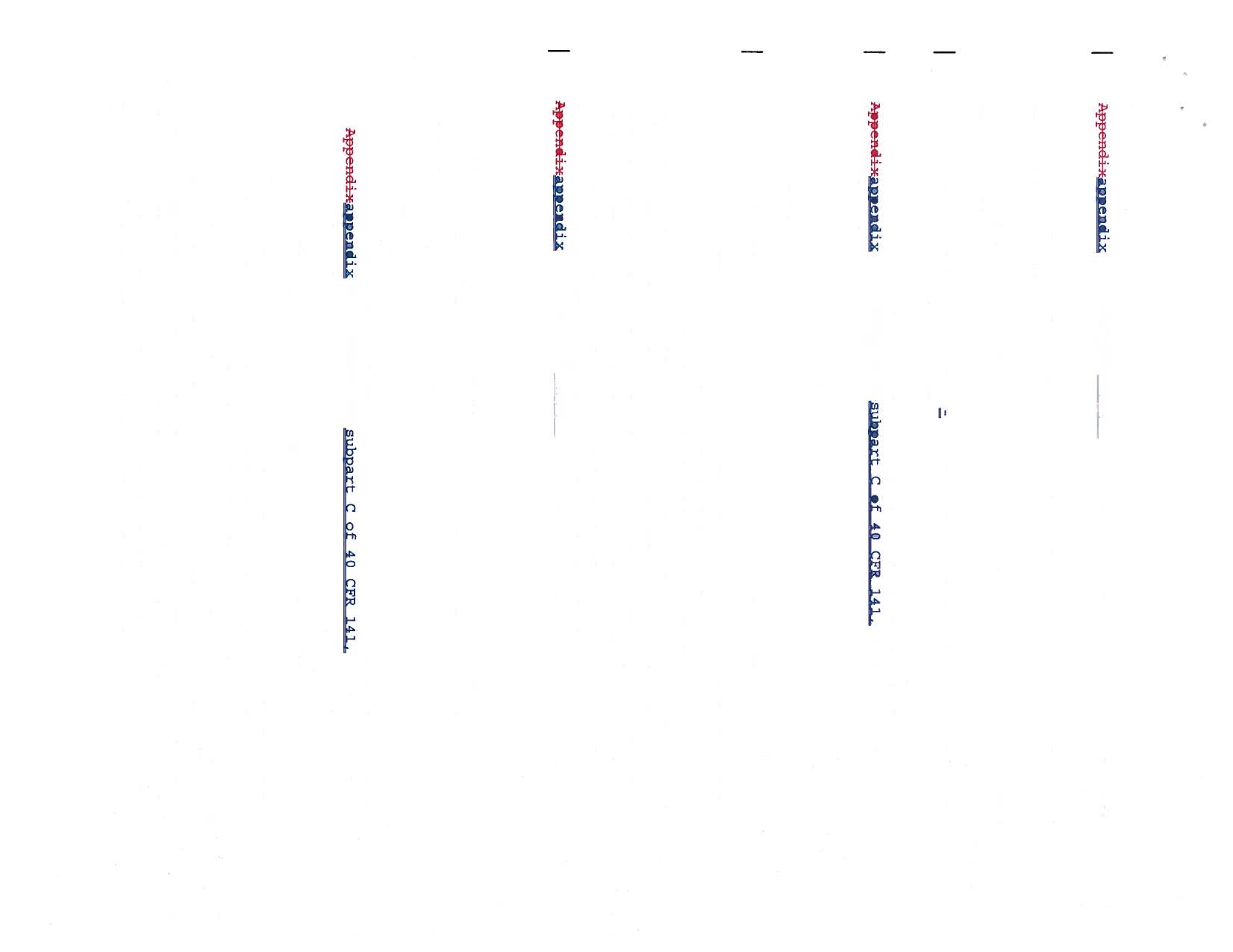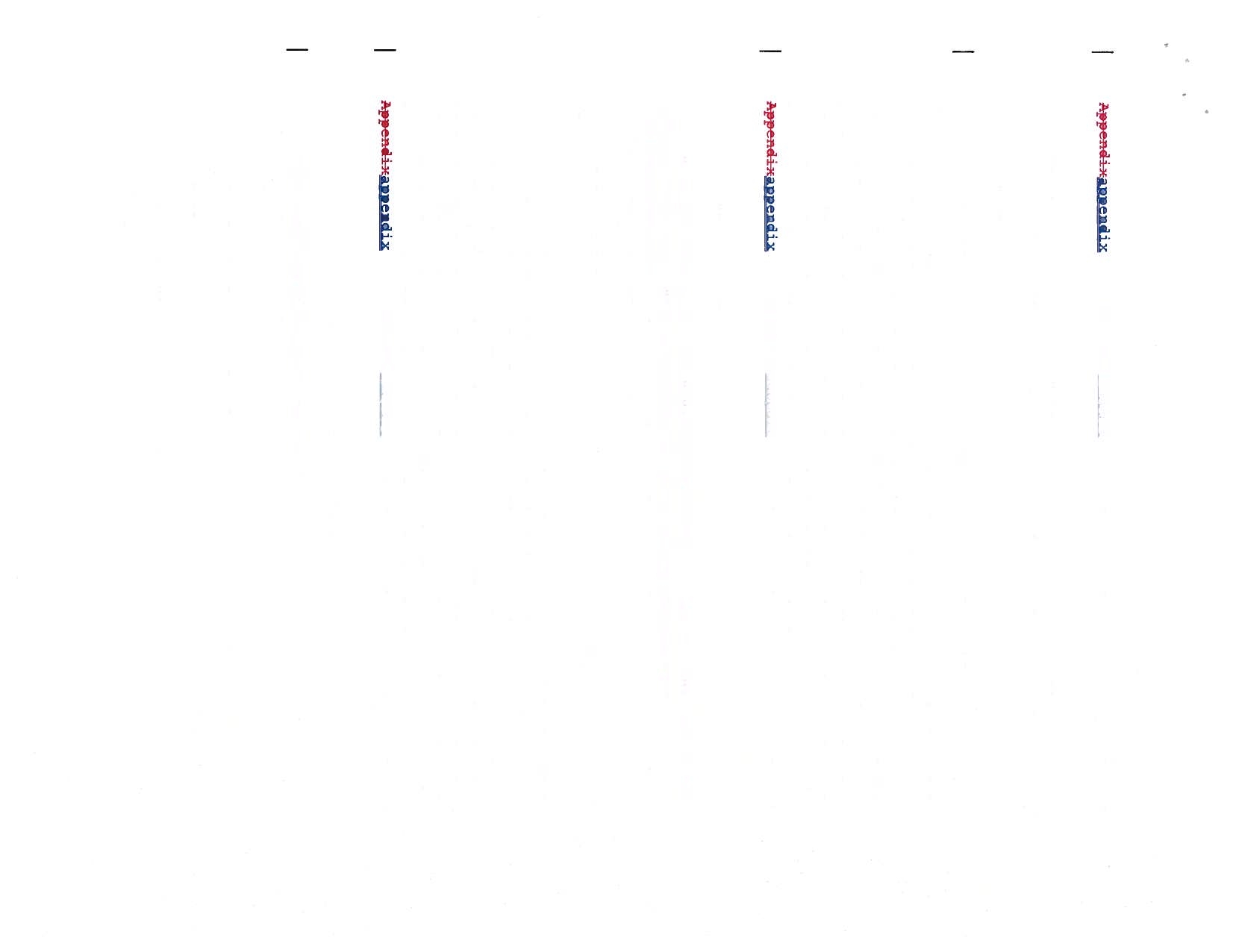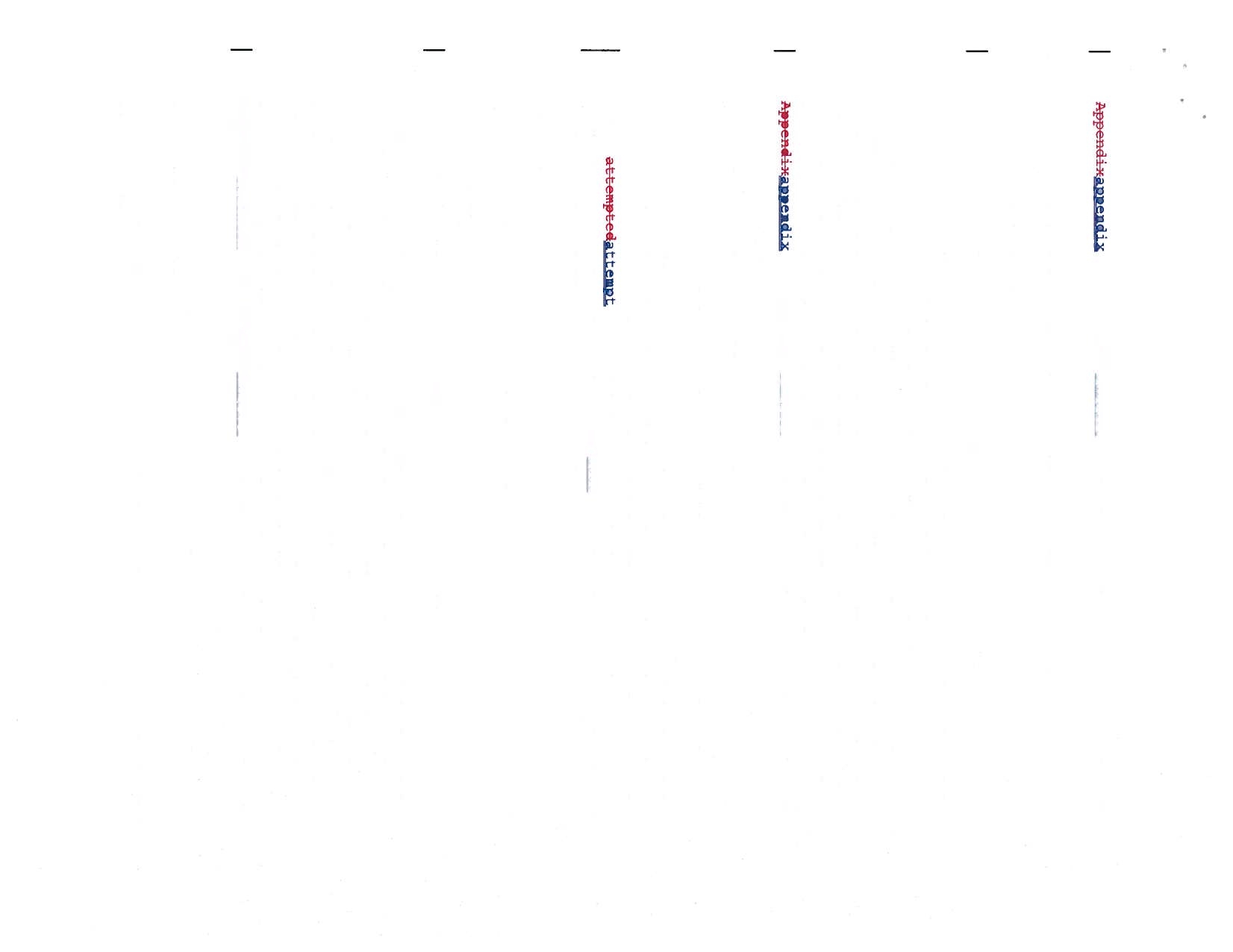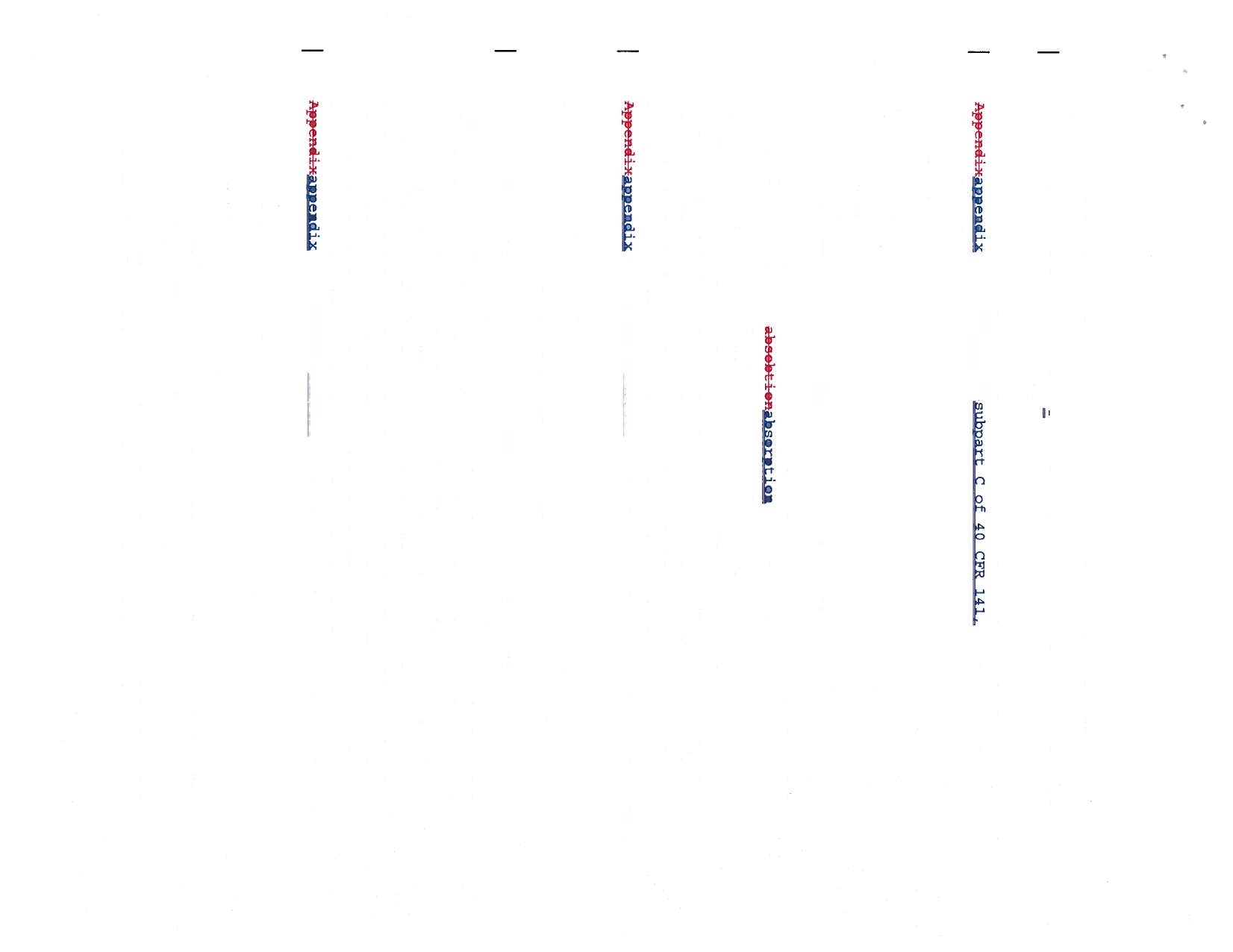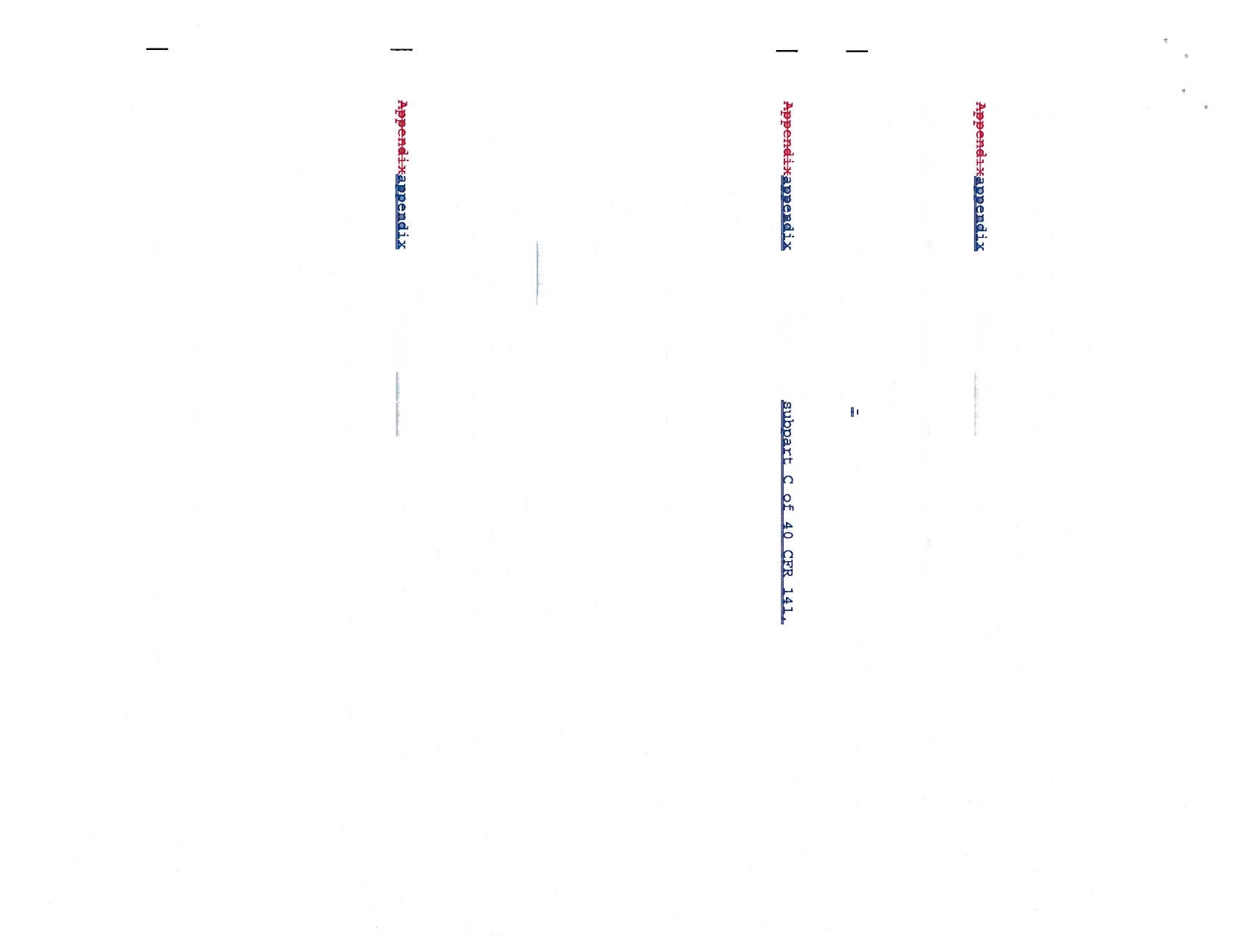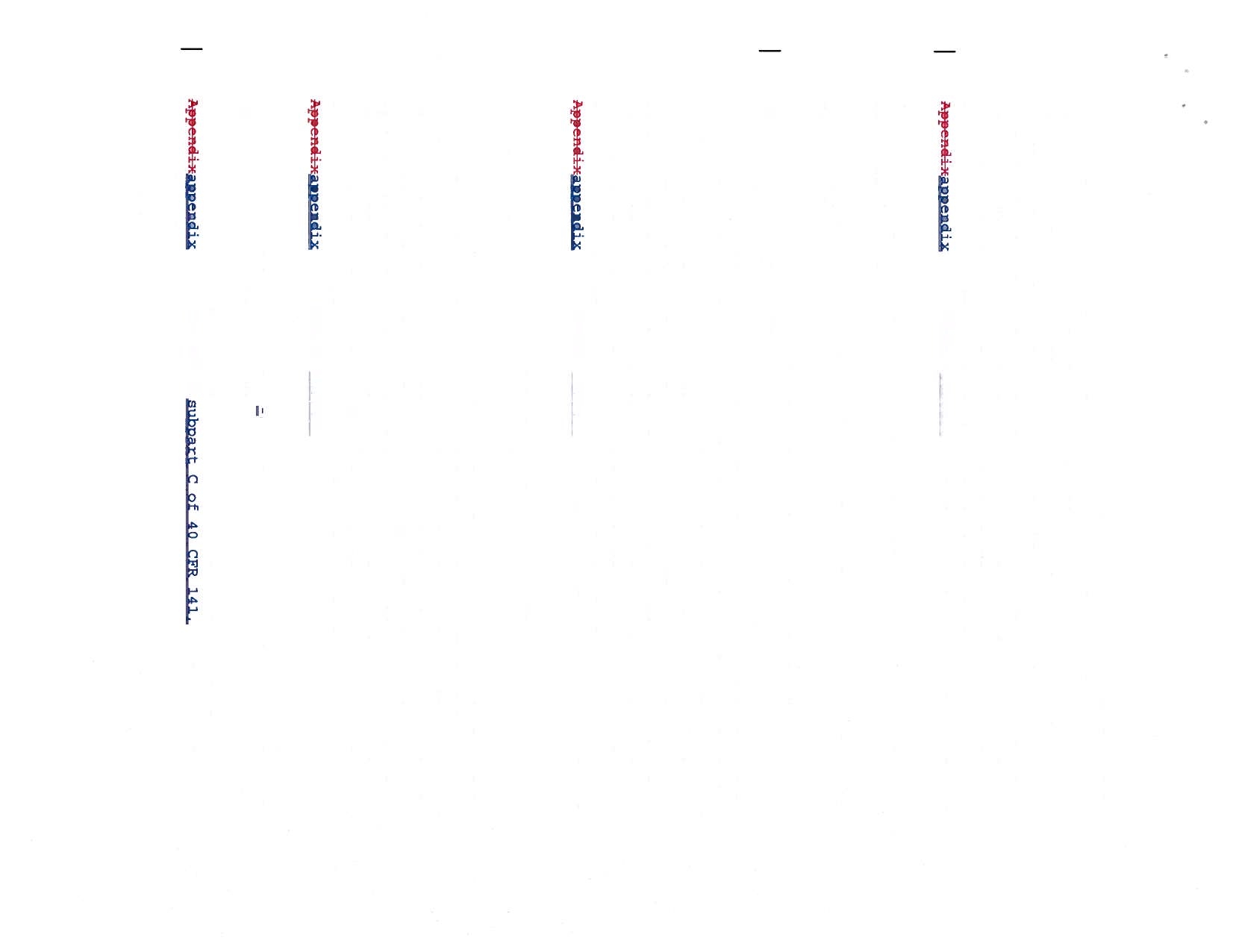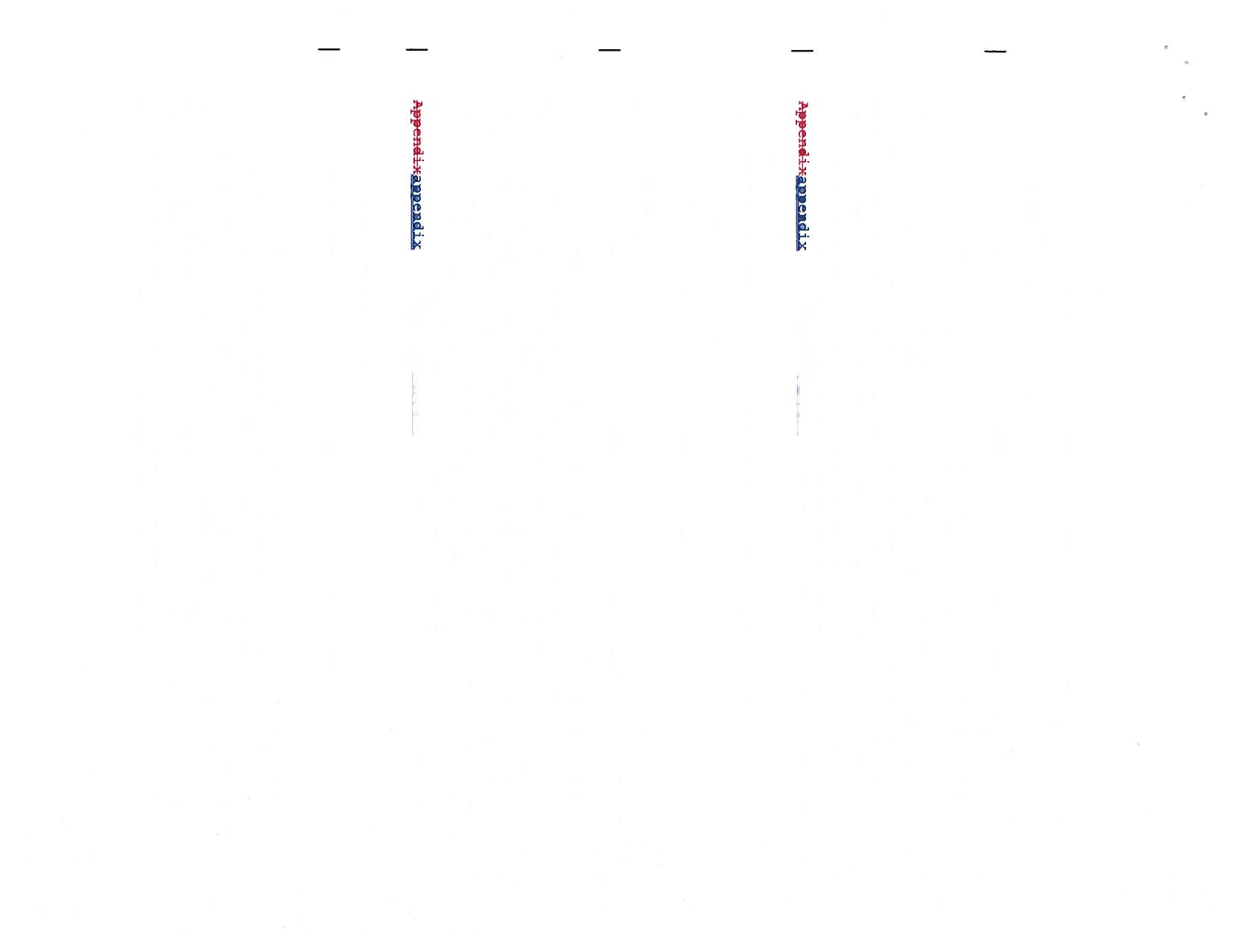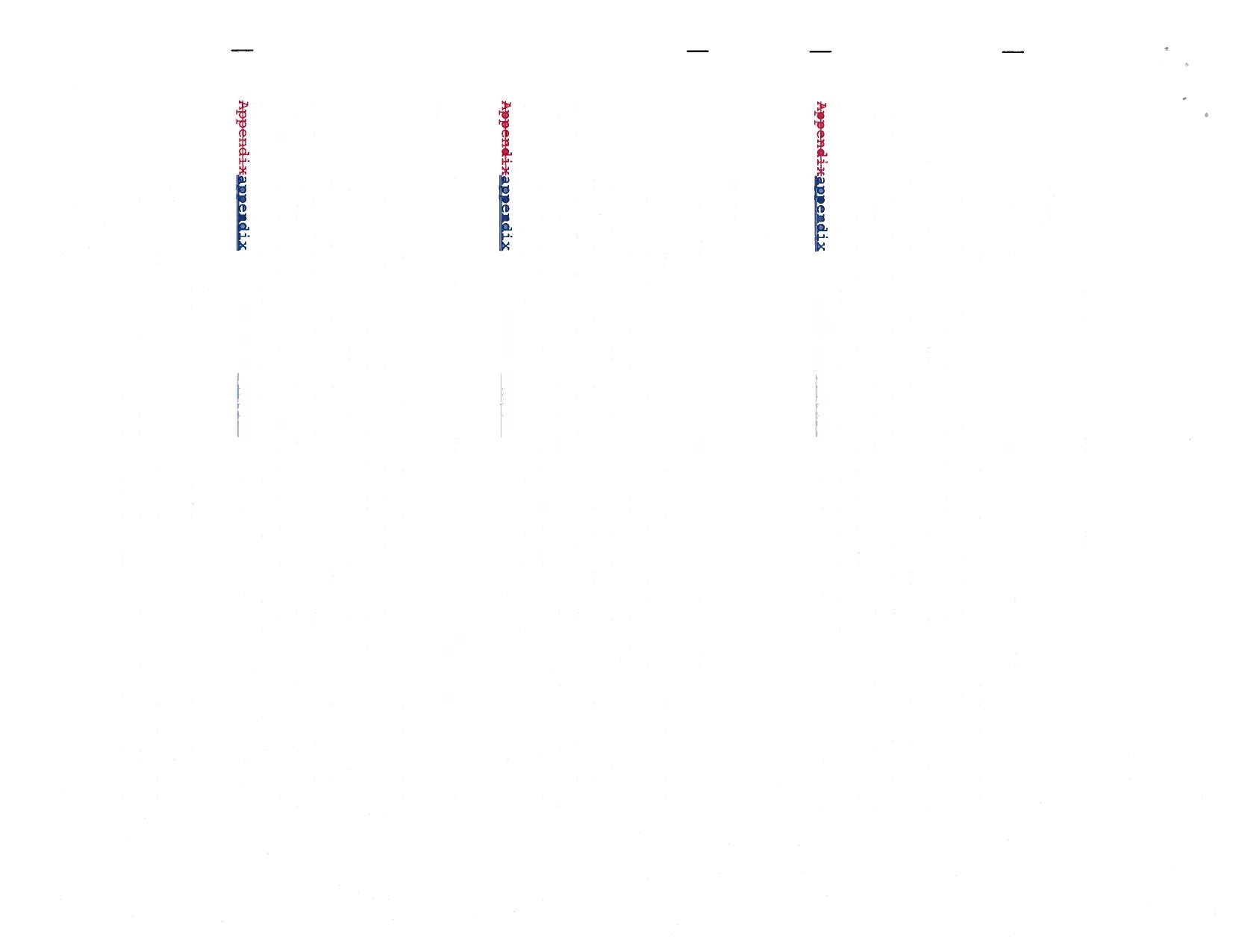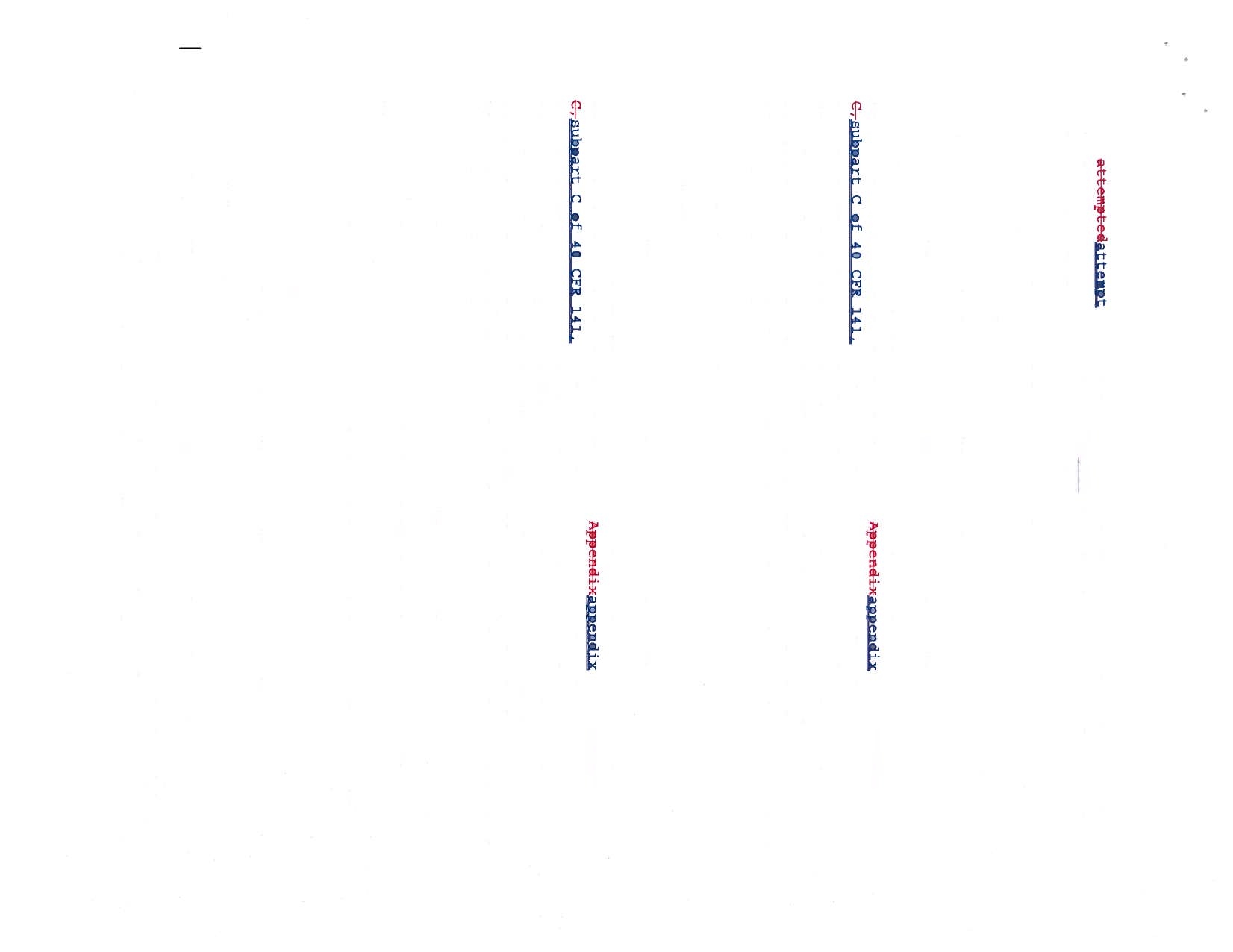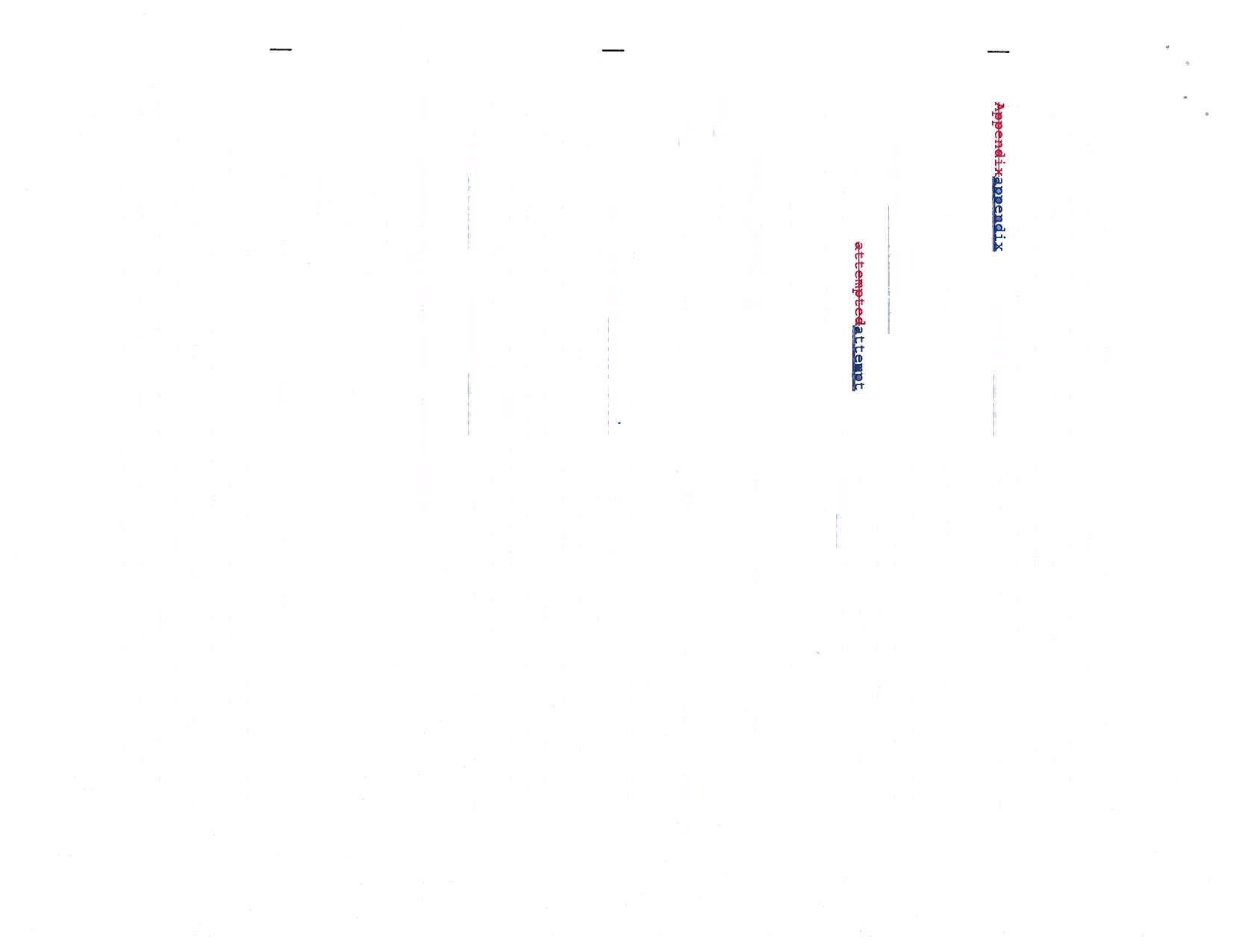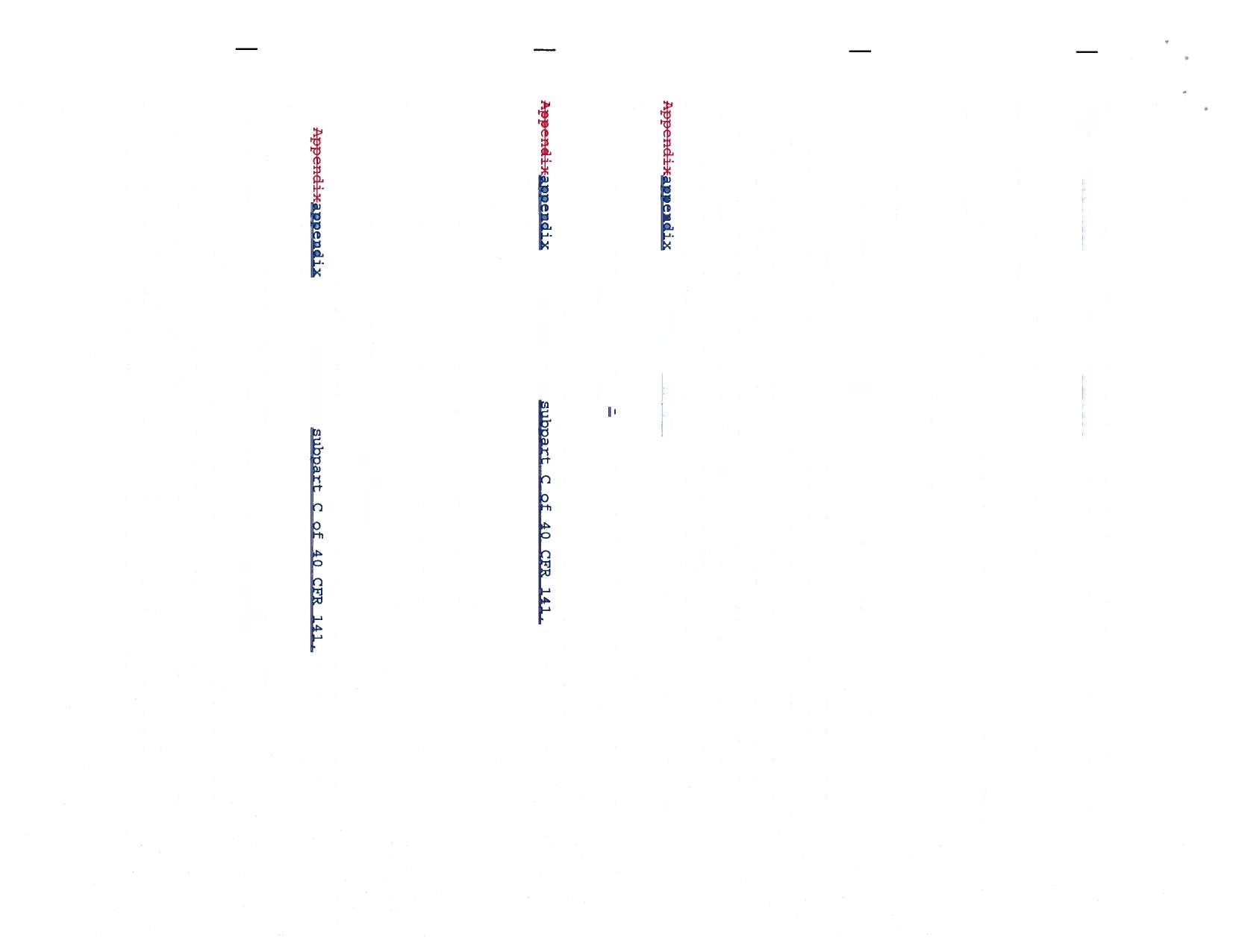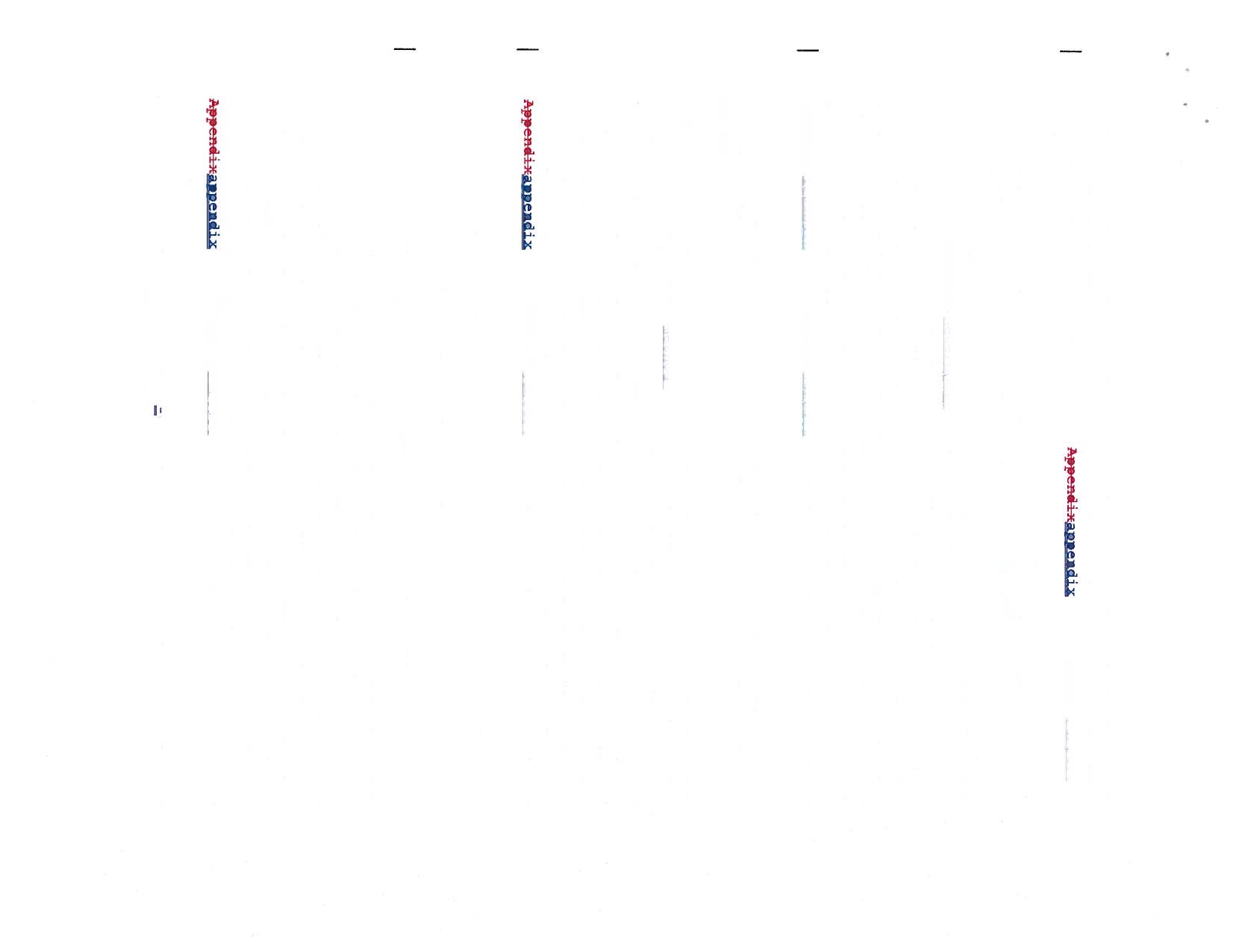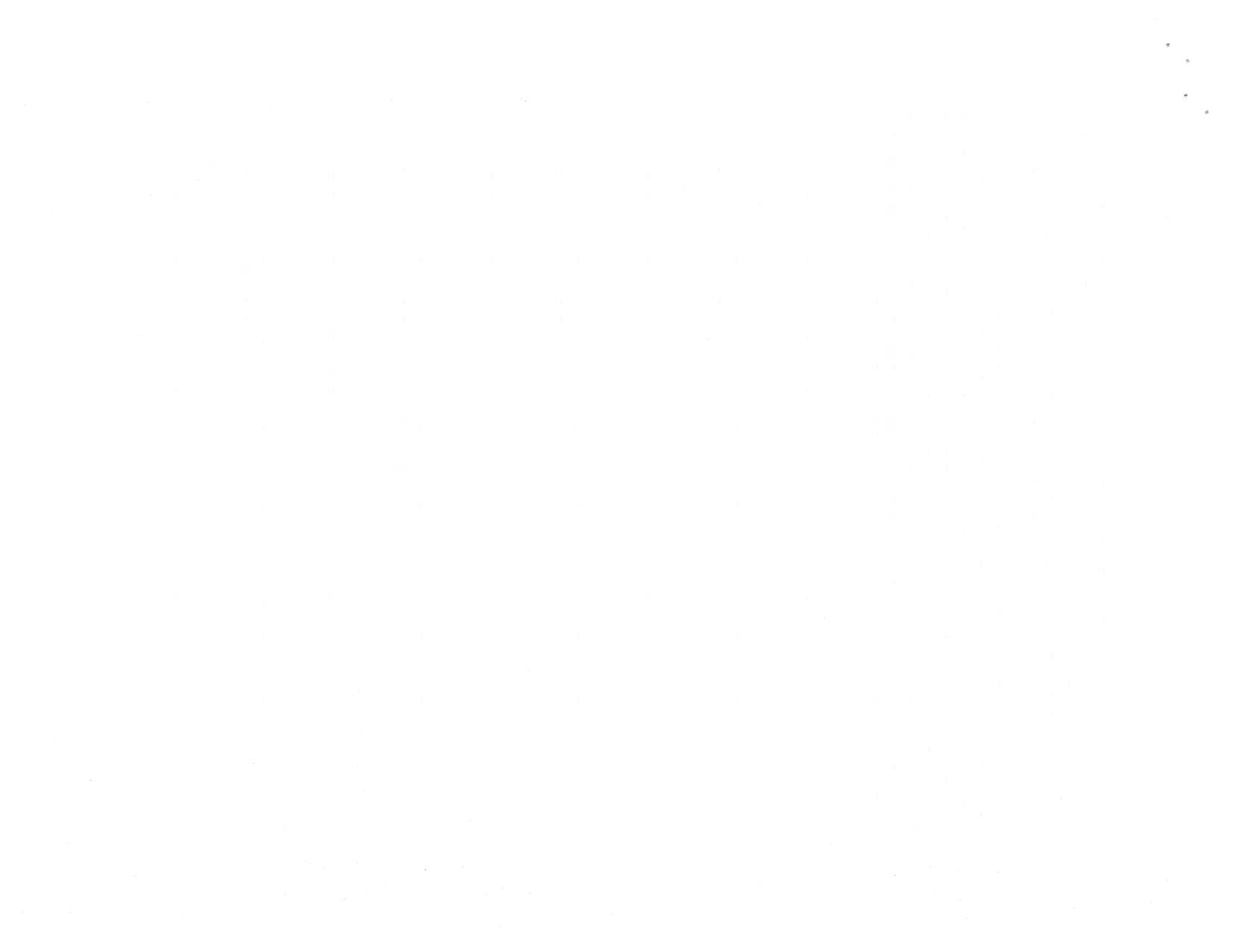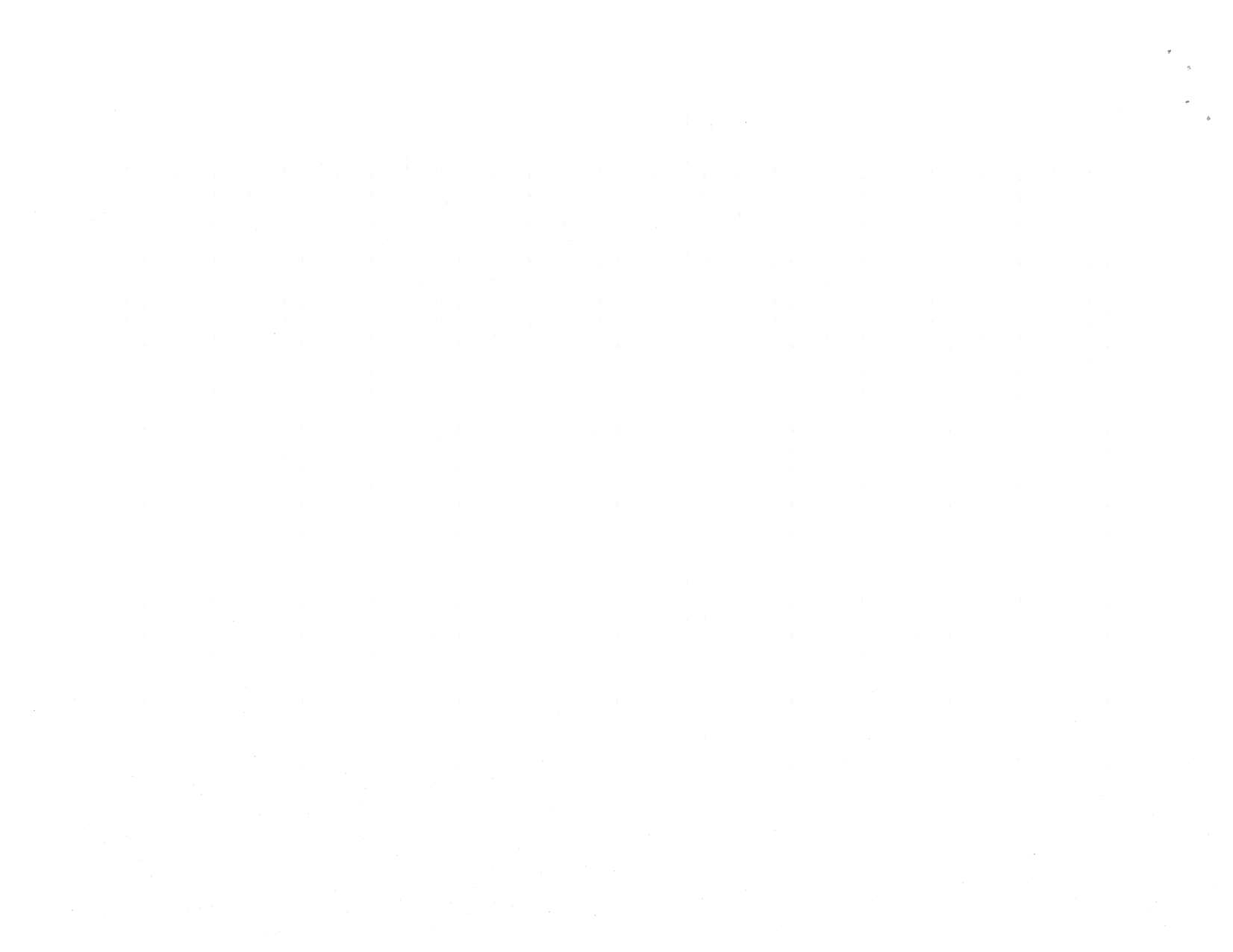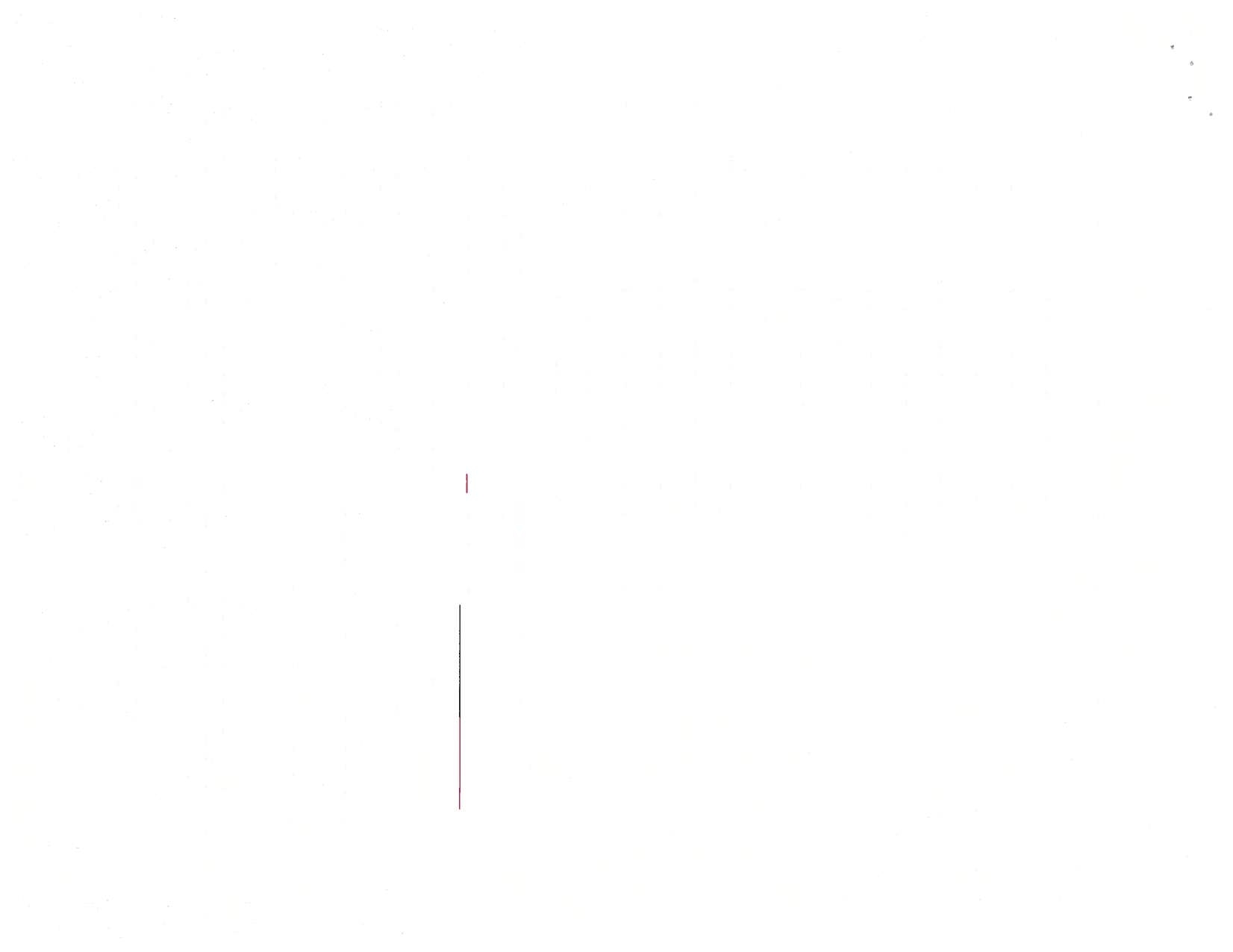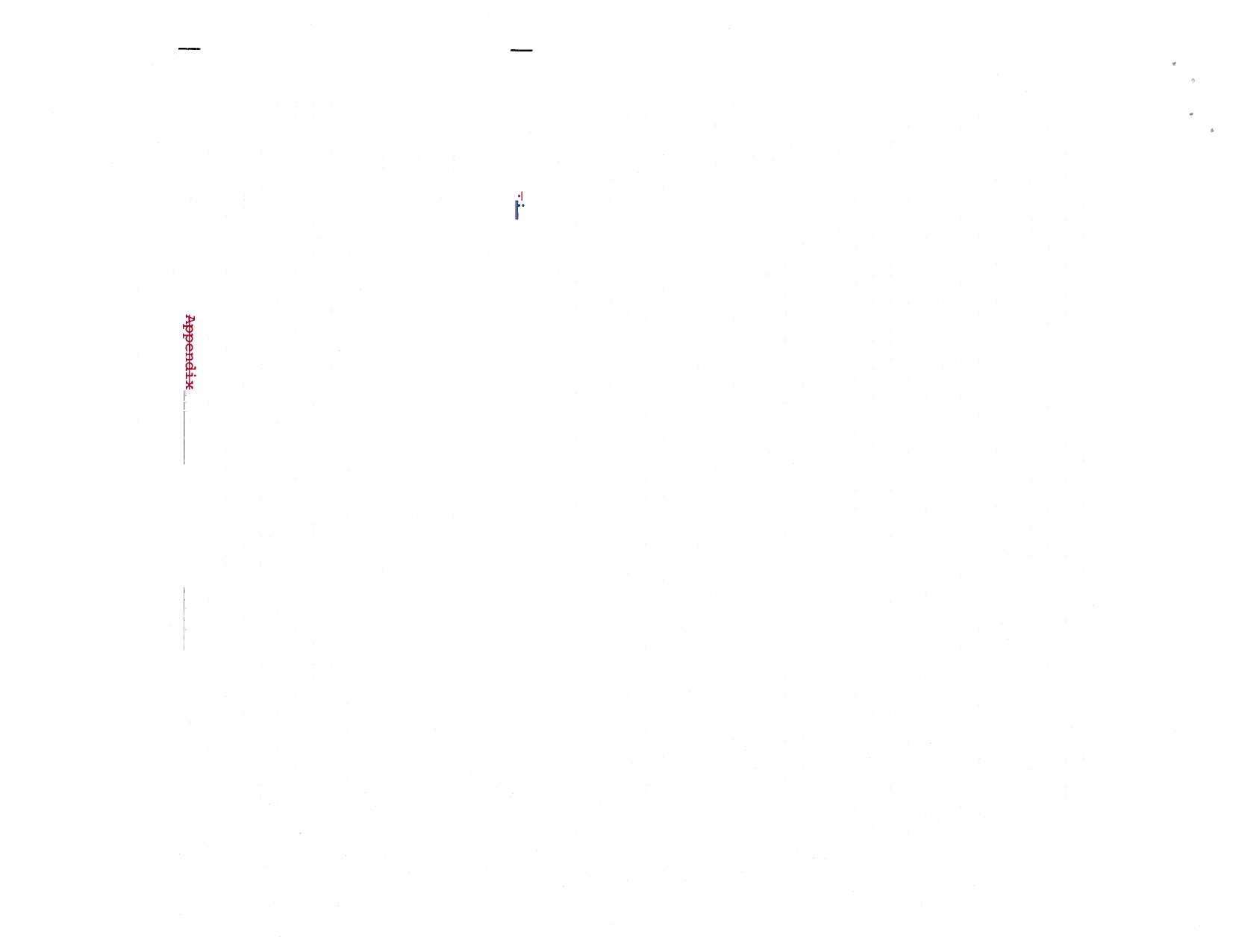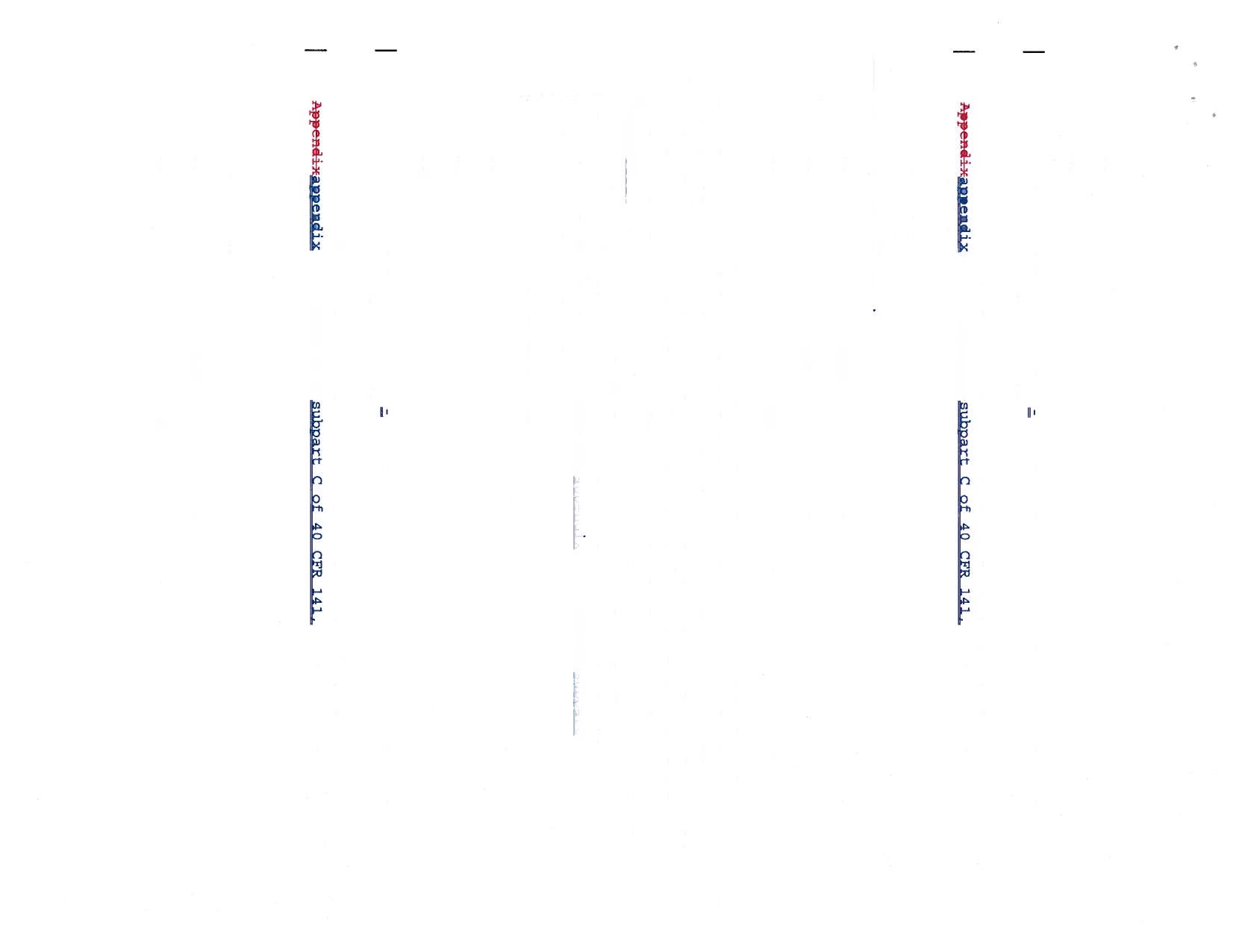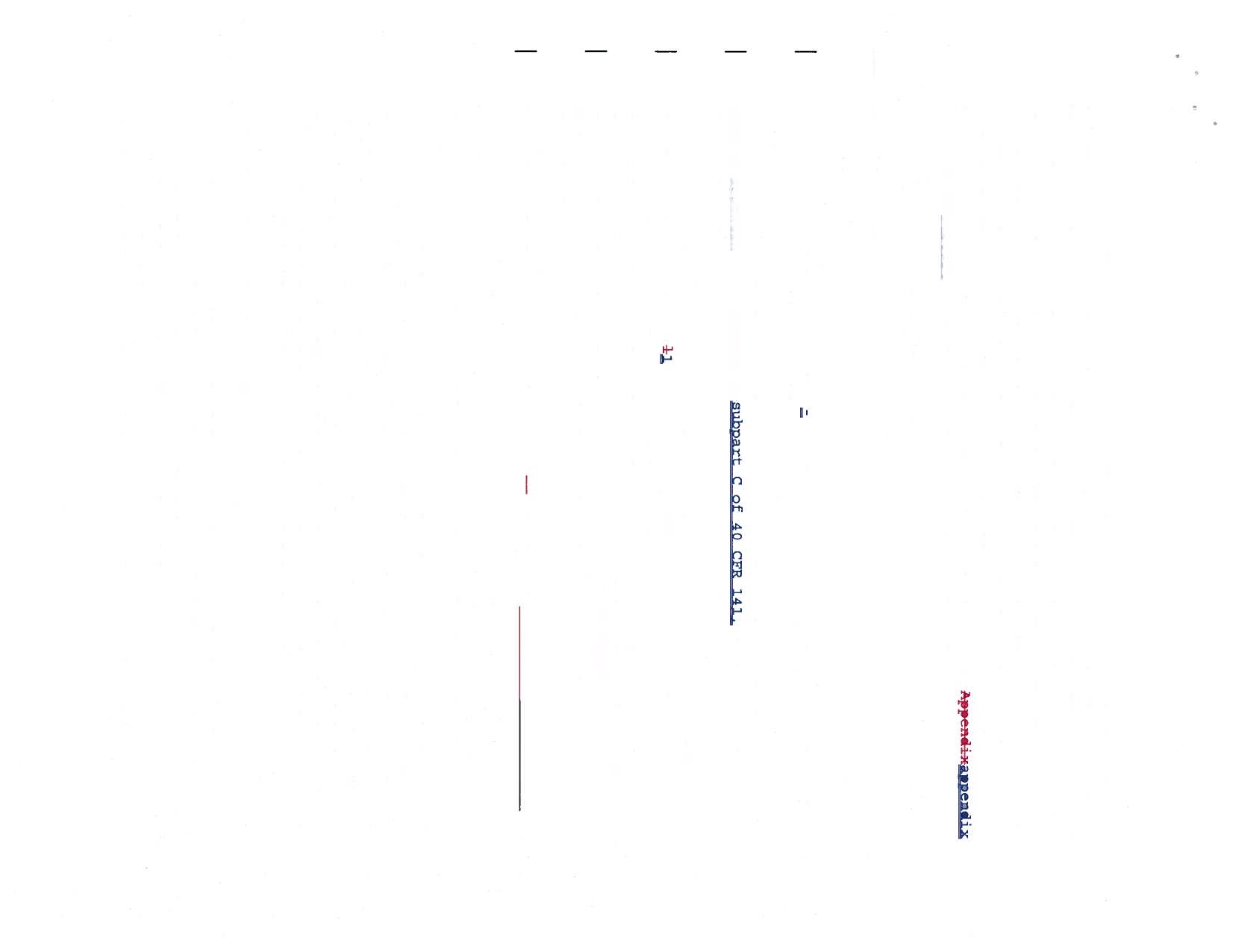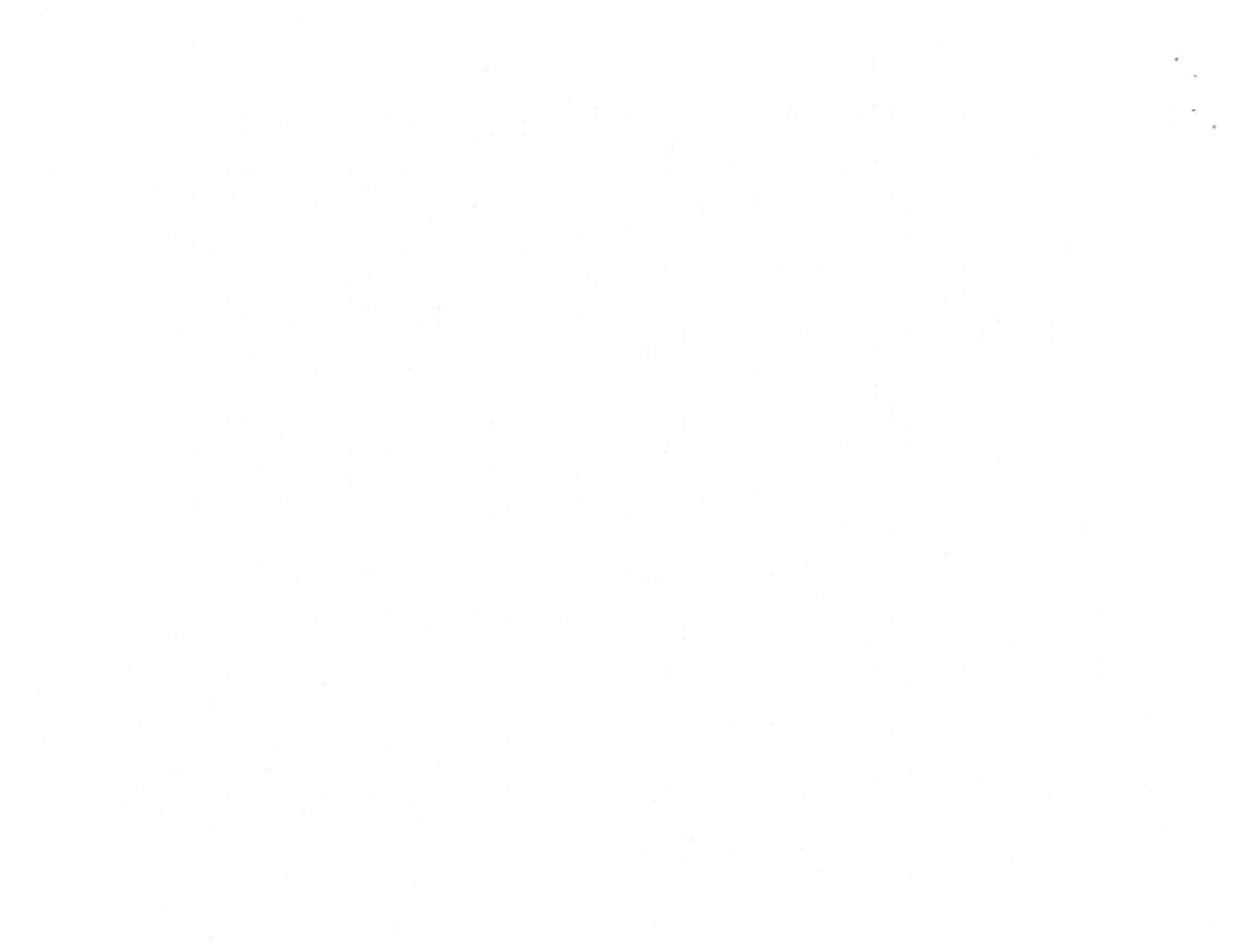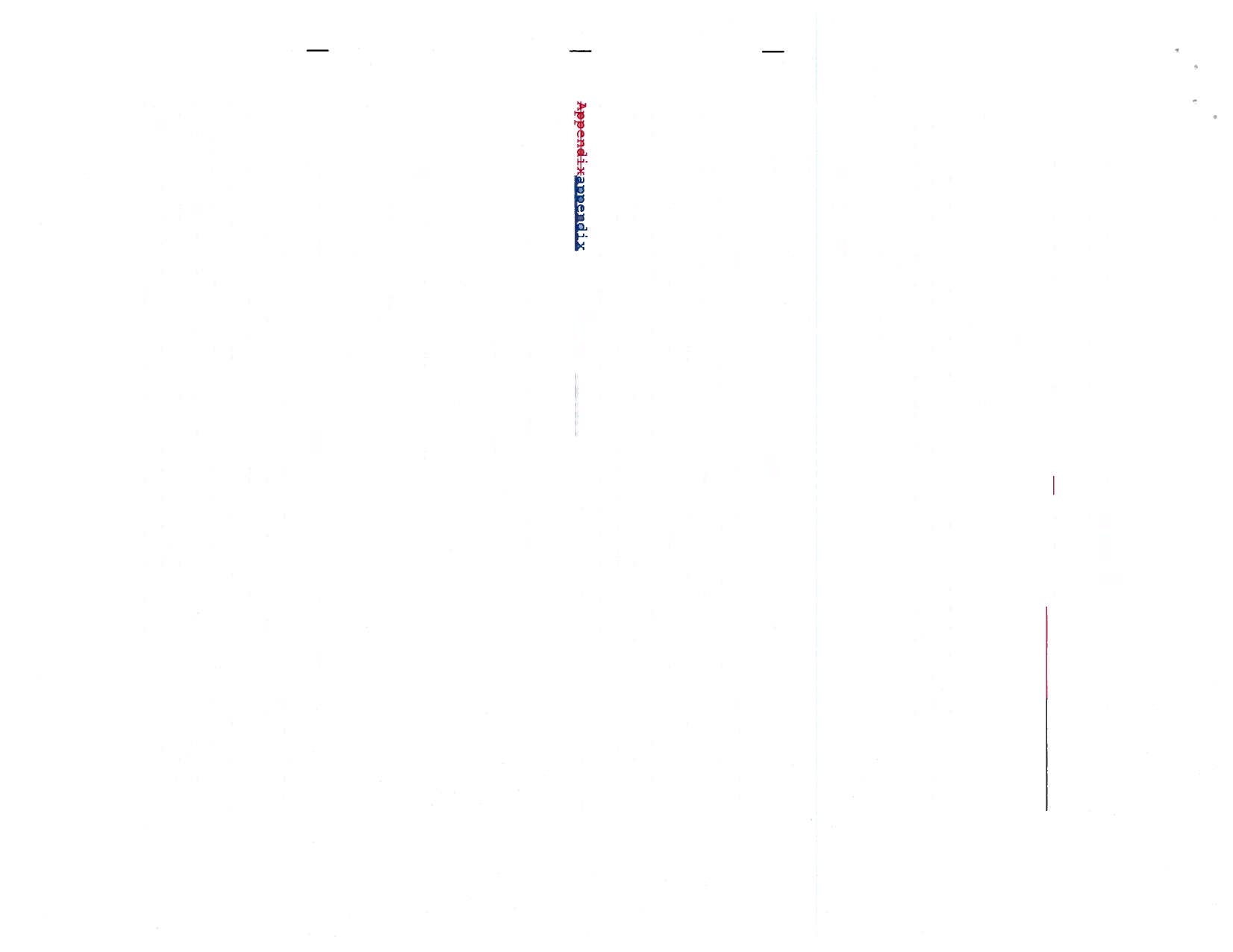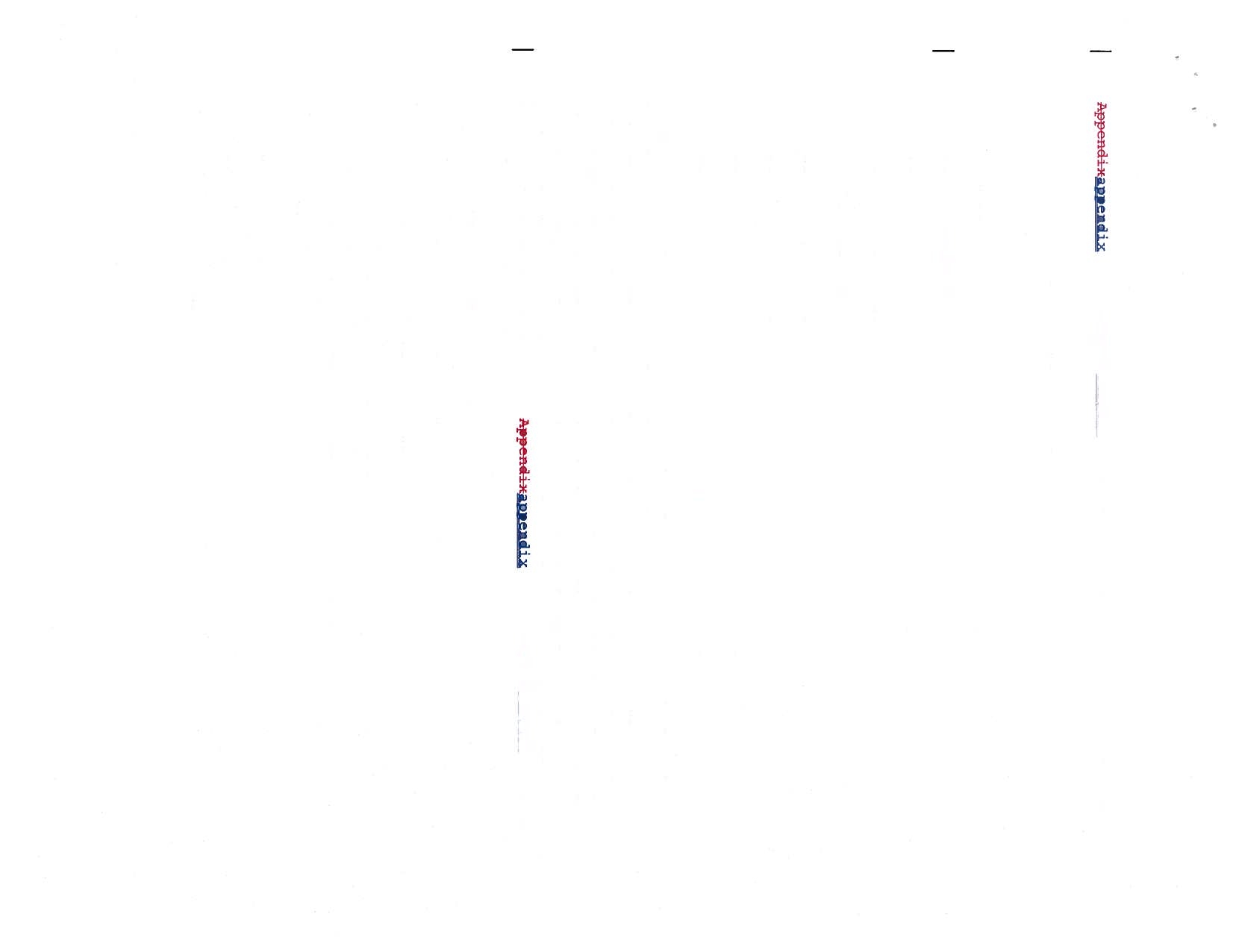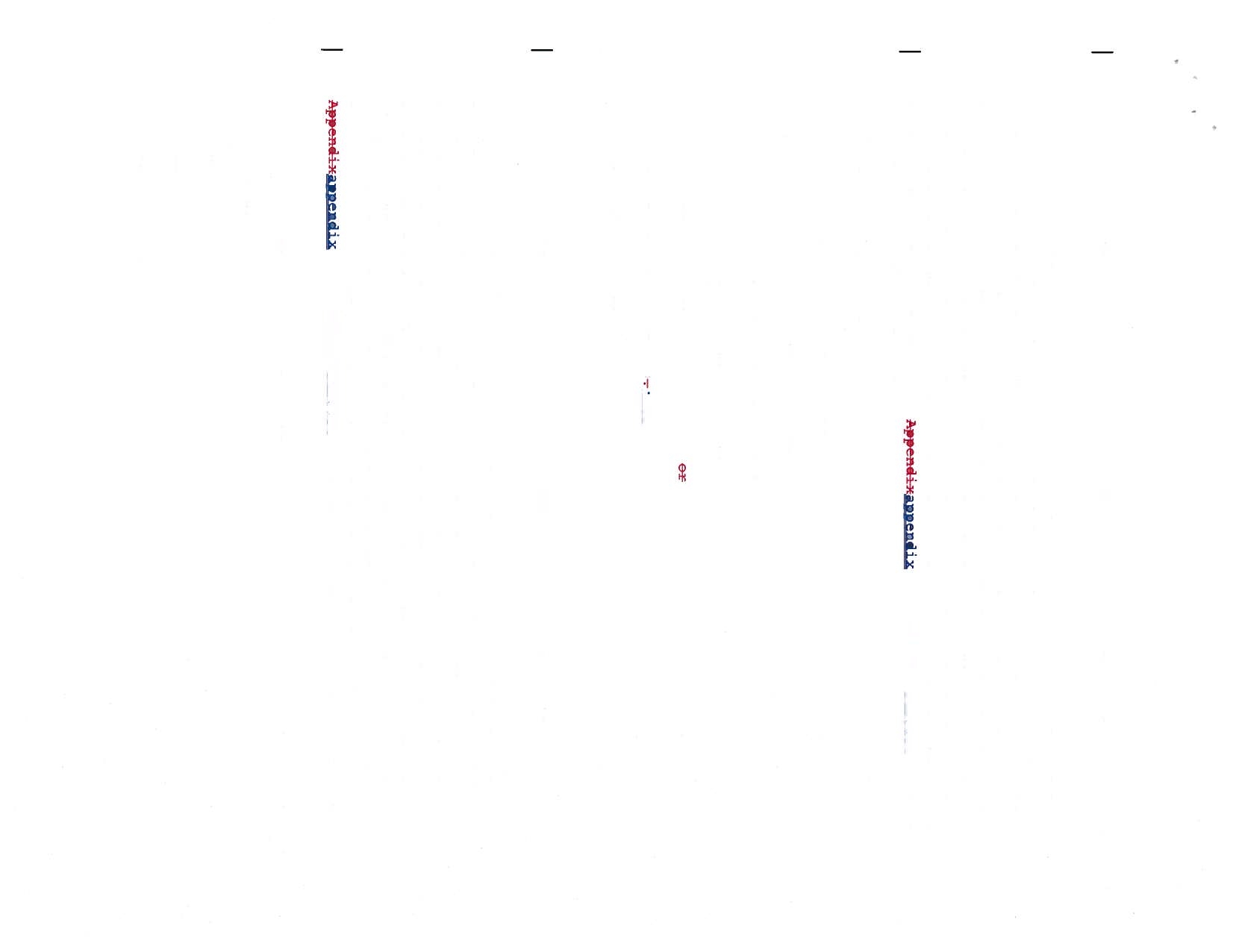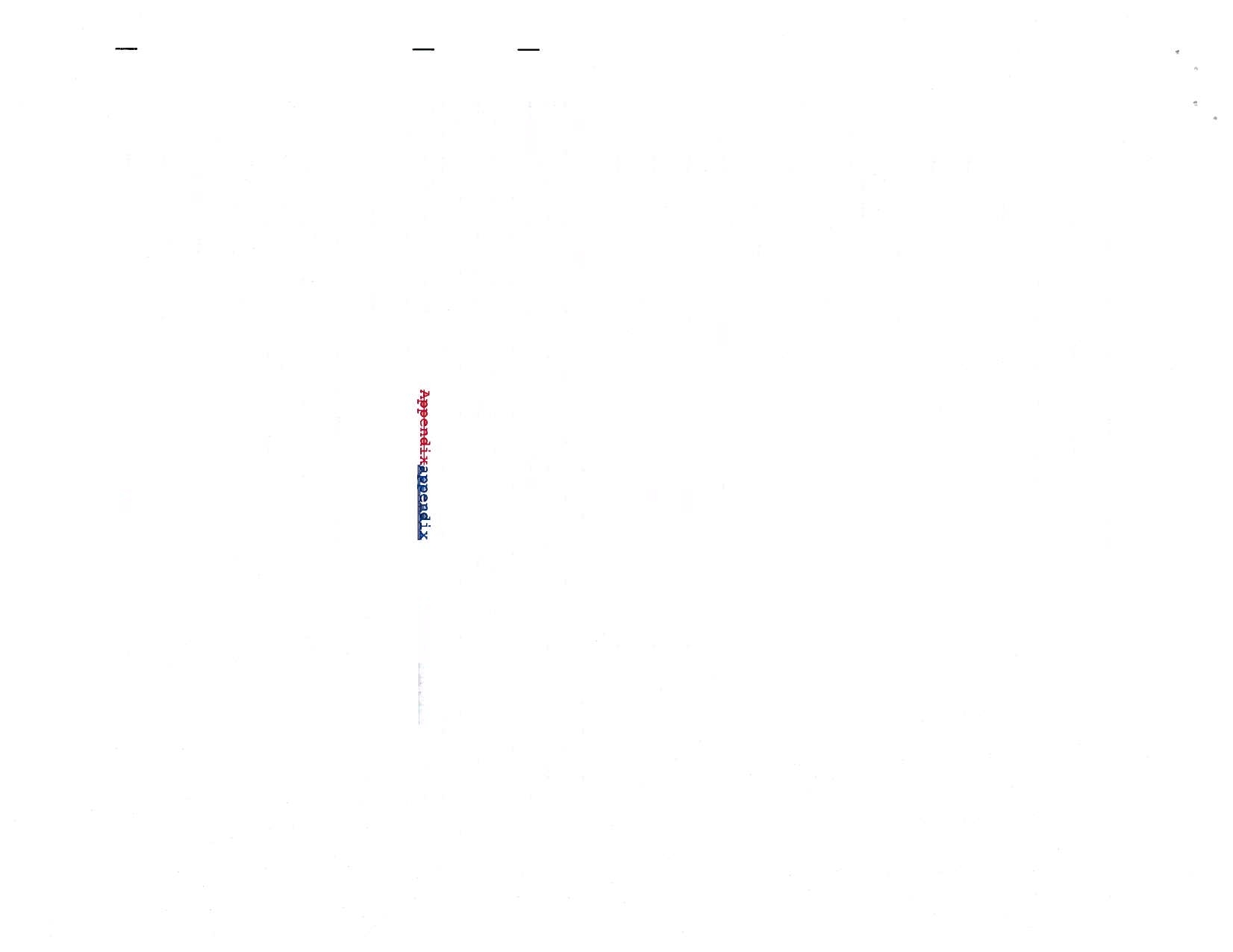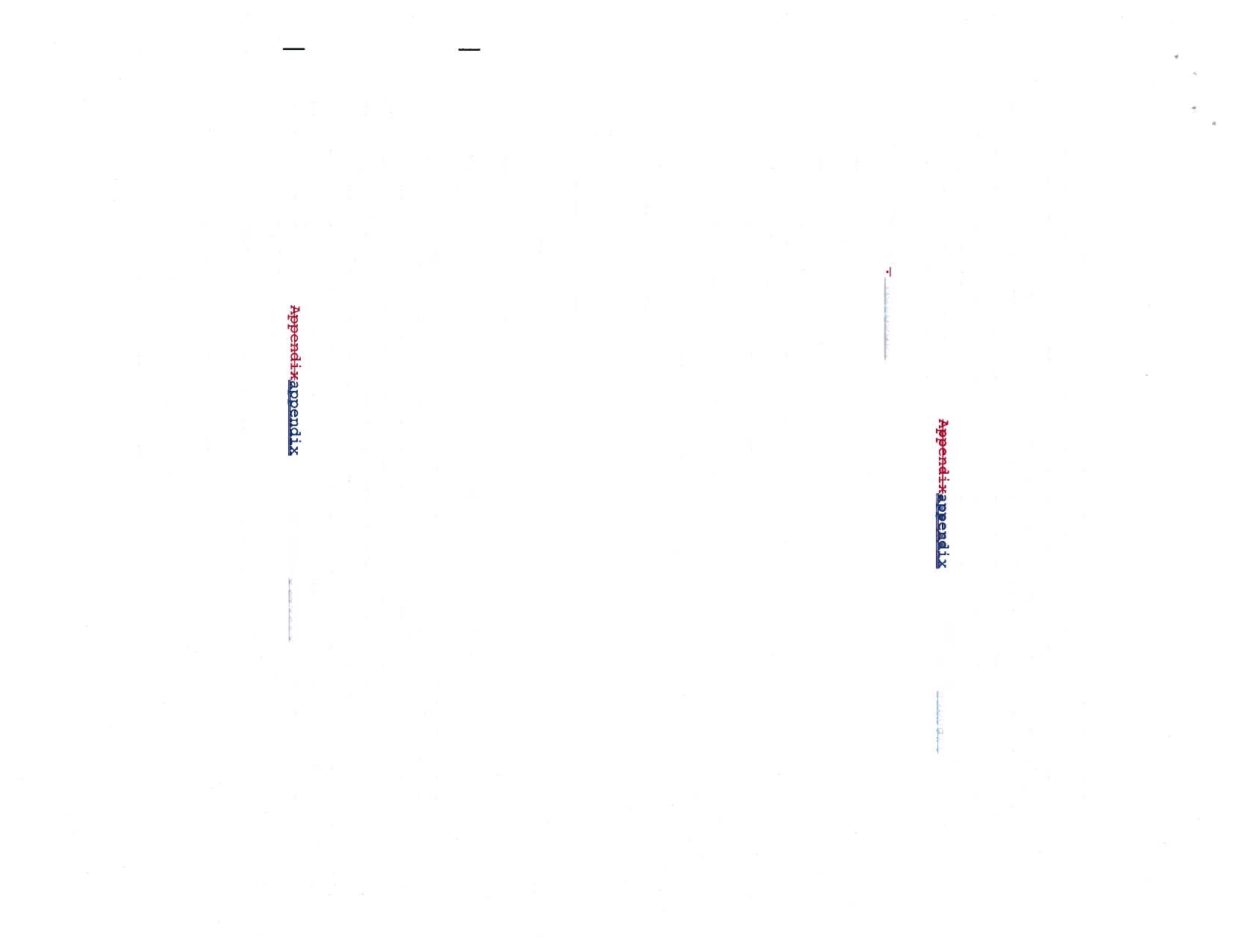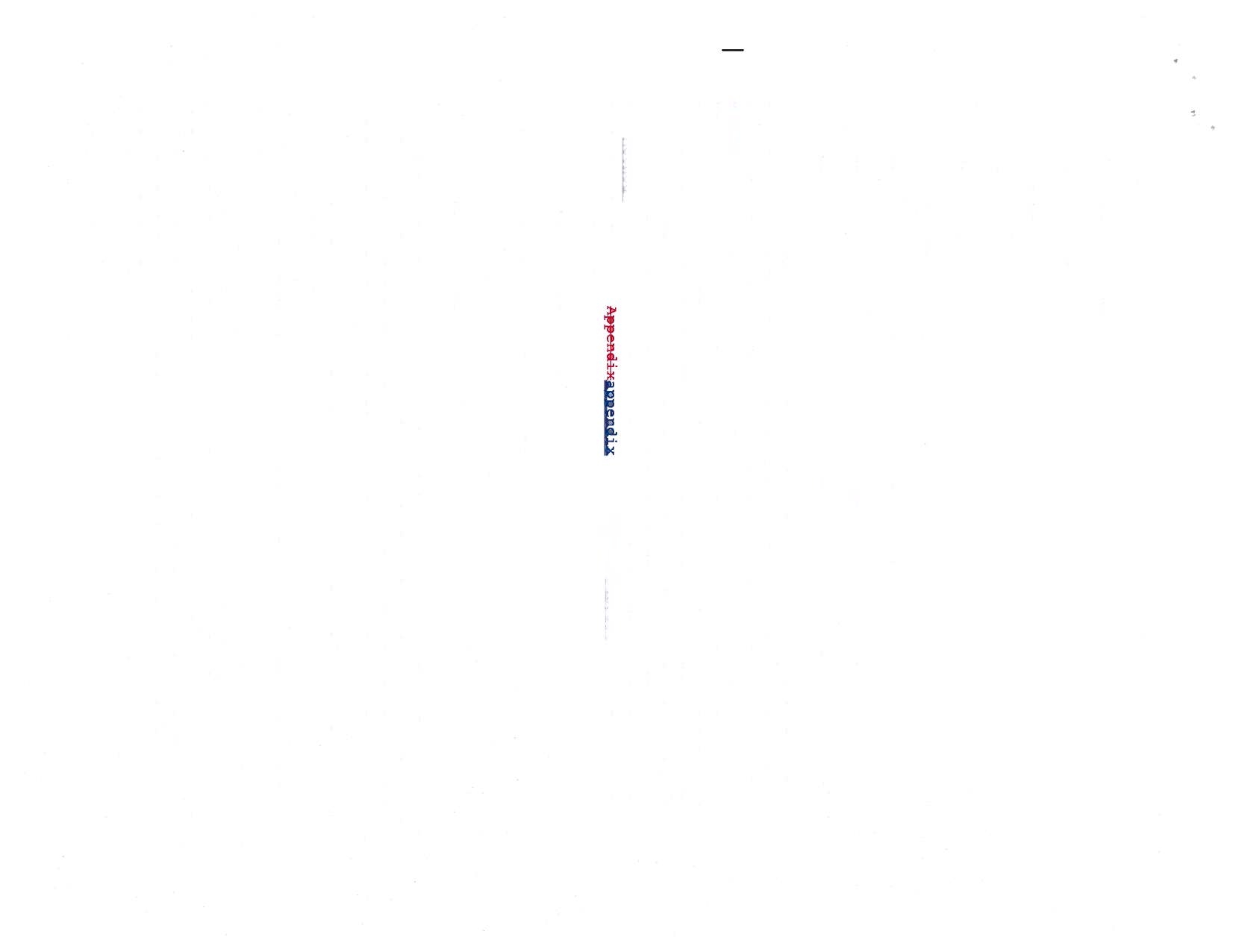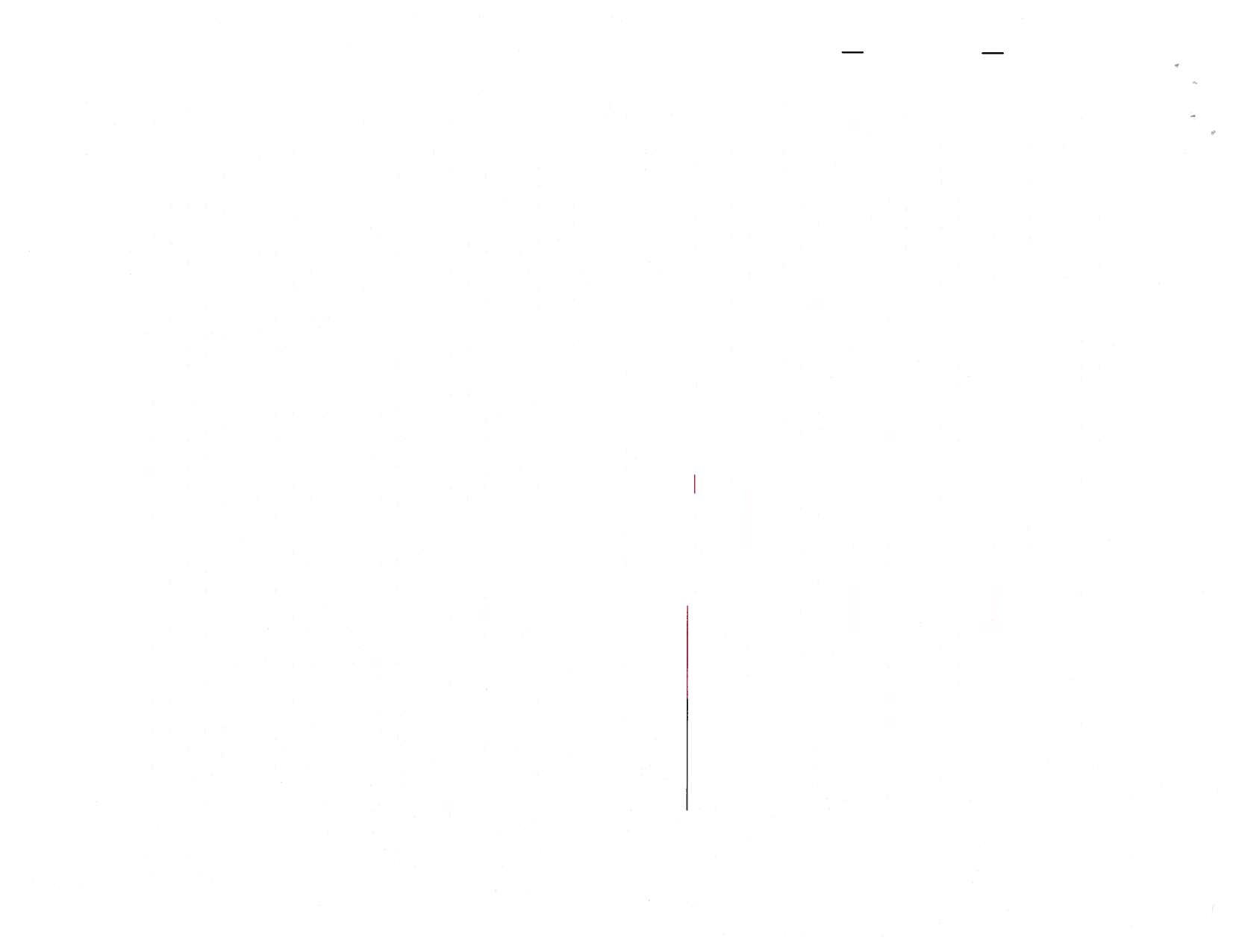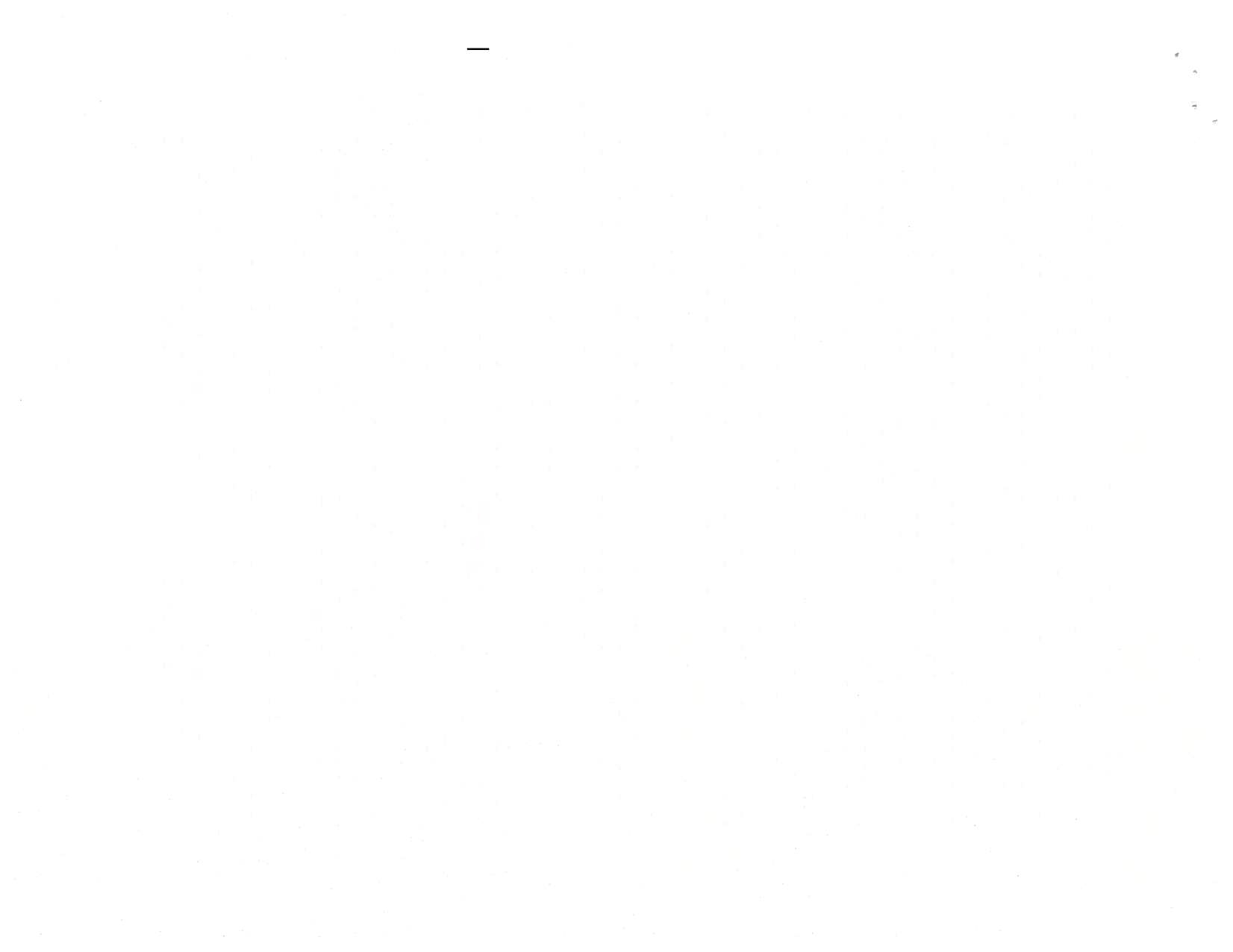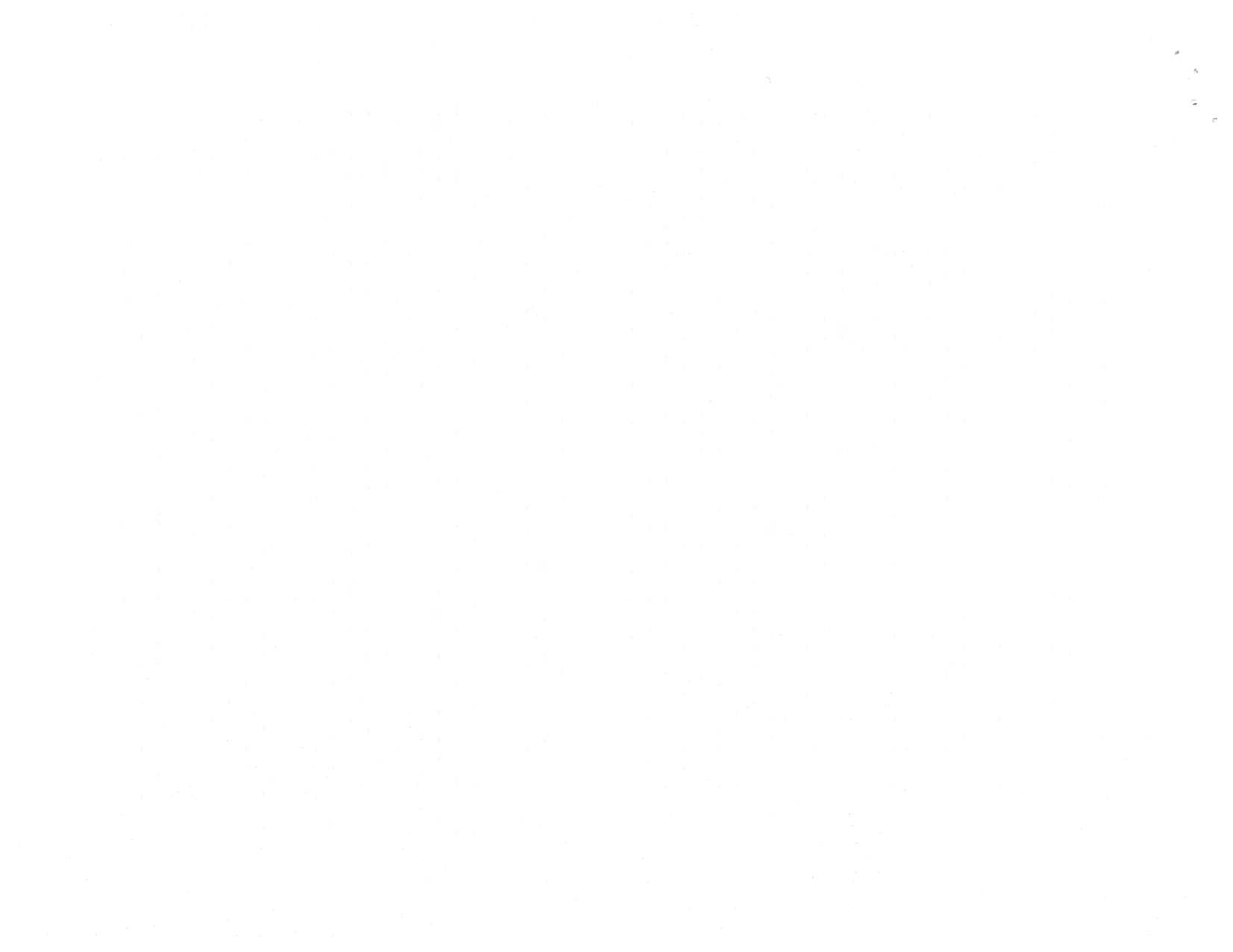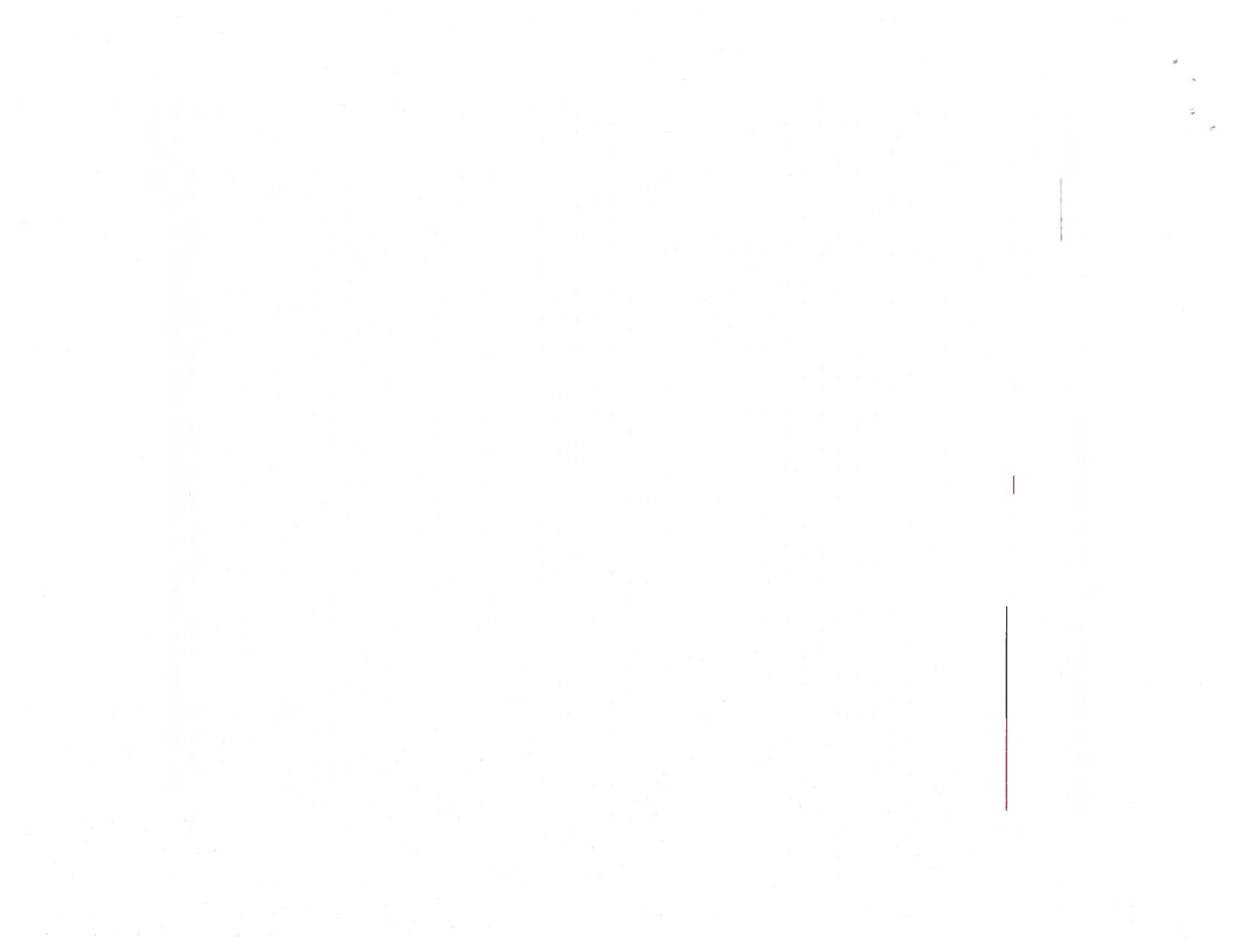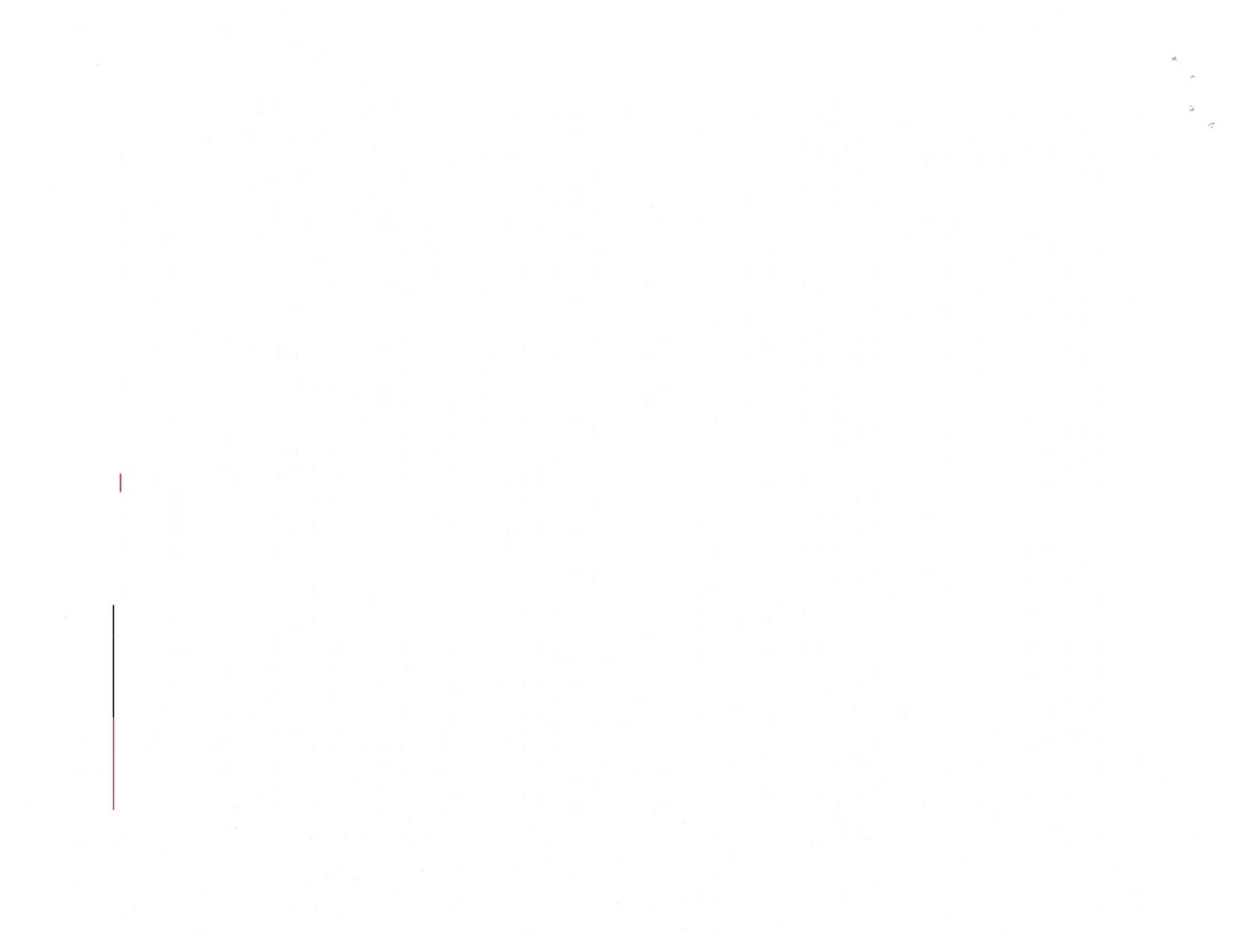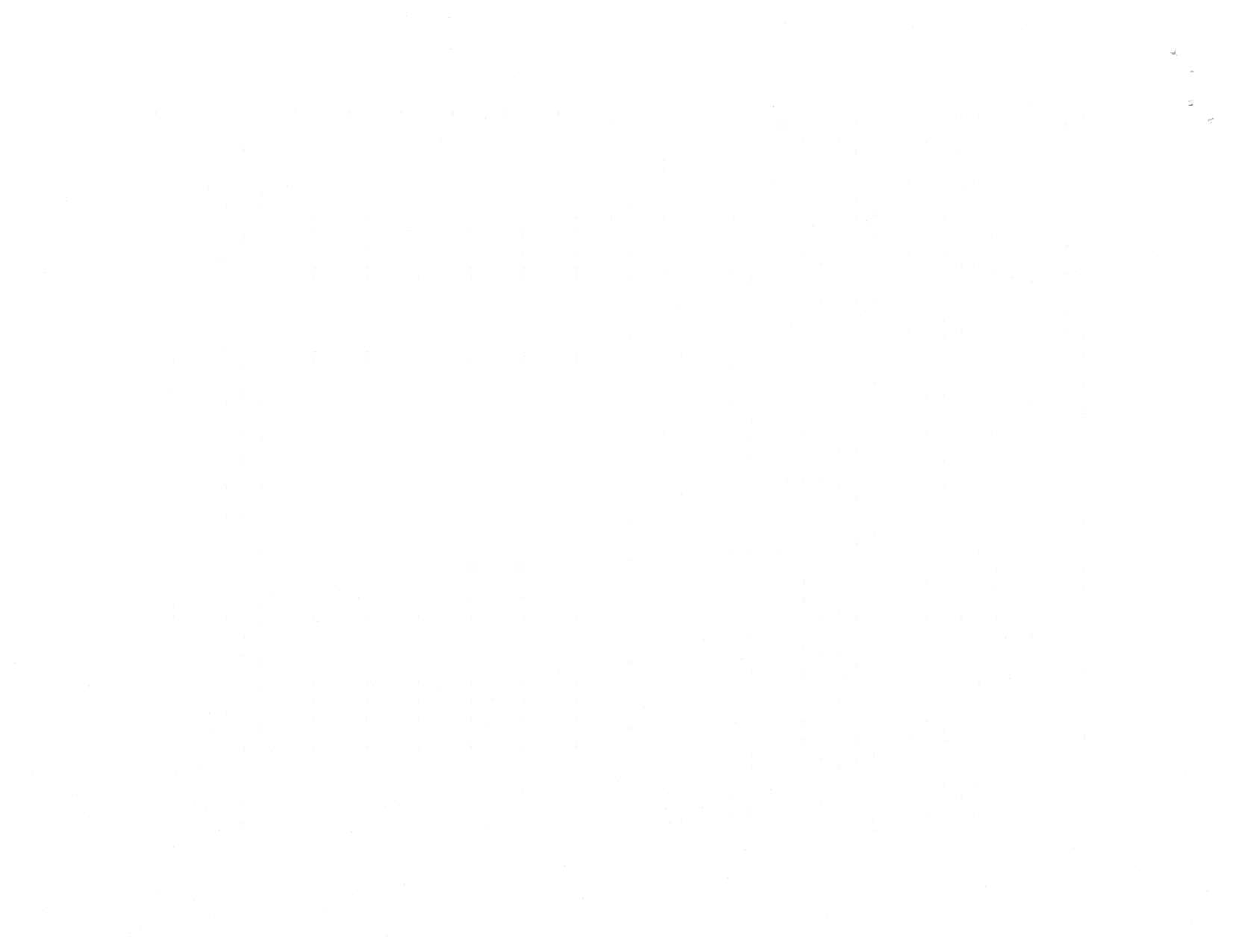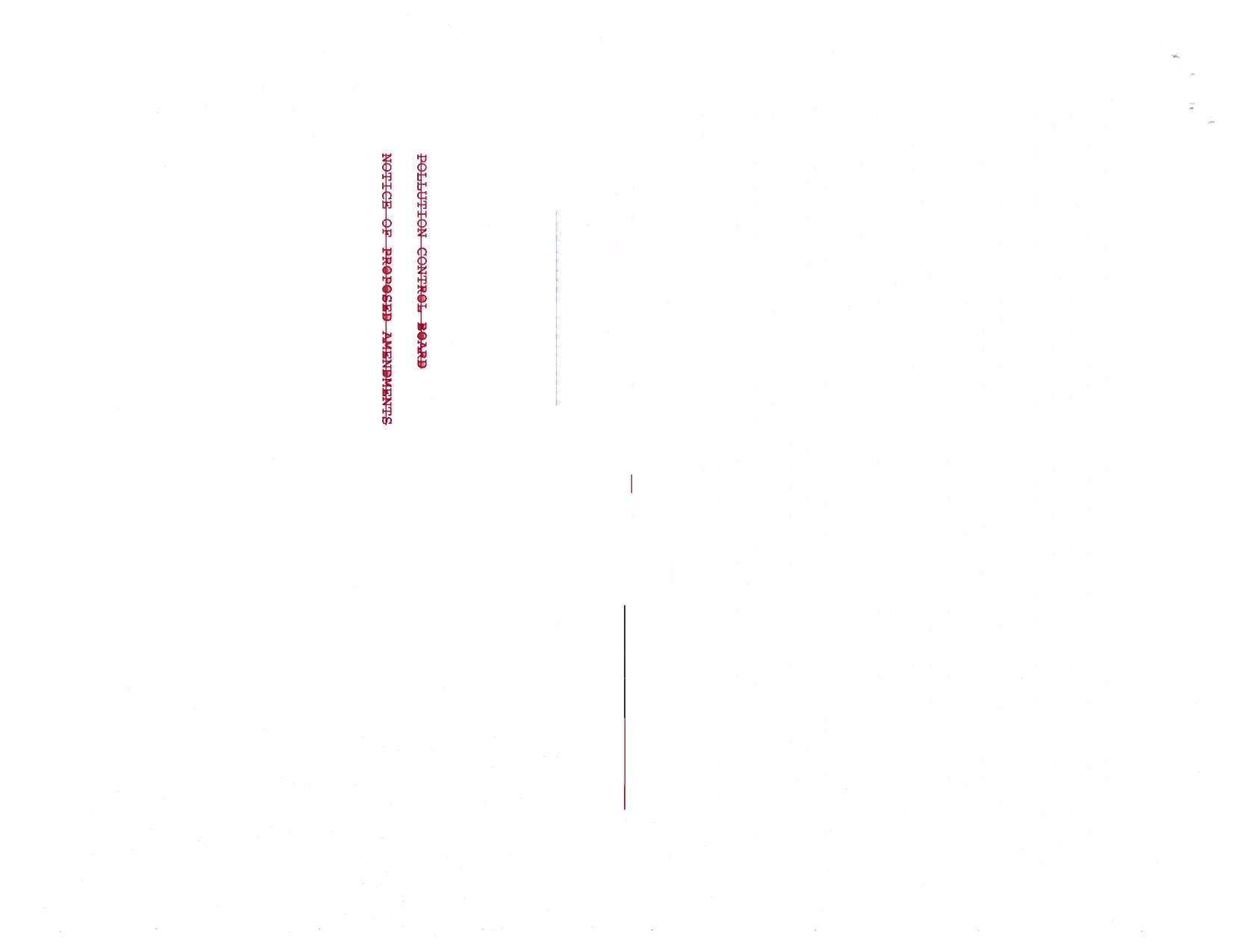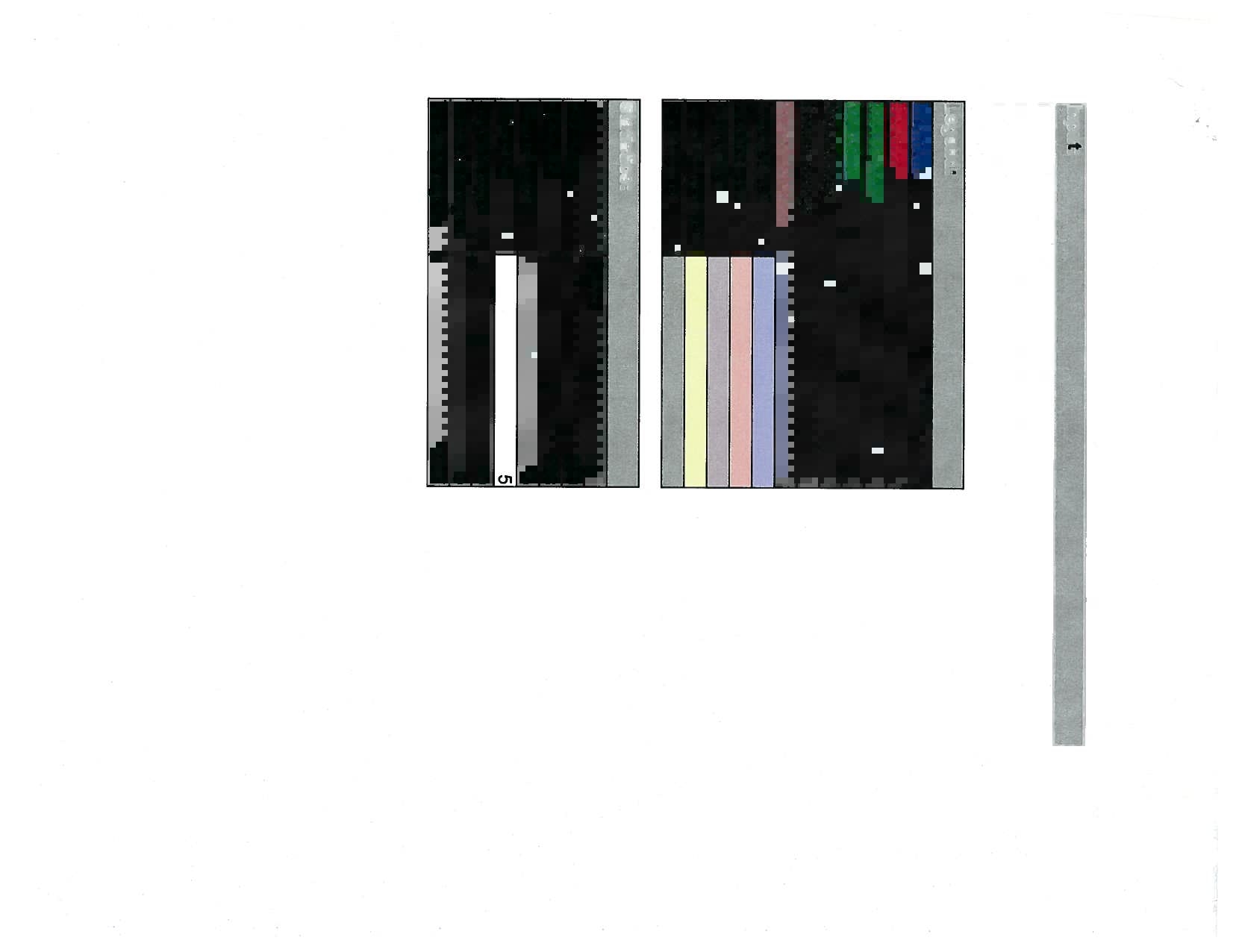TITLE
35:
ENVIRONMENTAL
PROTECTION
SUBTITLE
F:
PUBLIC WATER SUPPLIES
CHAPTER
I:
POLLUTION CONTROL BOARD
Purpose,
Scope, and Applicability
Definitions
Incorporations
by
Reference
Severability
Electronic Reporting
Agency Inspection of PWS
Facilities
Delegation to Local Government
Enforcement
Special Exception
Permits
Relief Equivalent
to SDWA Section 1415(a) Variances
Relief Equivalent
to
SDWA Section 1416 Exemptions
Alternative Treatment
Techniques
Siting Requirements
Source Water
Quantity
Effective Dates
Maximum
Contaminant Levels and Finished
Water Quality
Fluoridation
Requirement
Prohibition
on Use of Lead
Special
Requirements for Certain Variances
and Adjusted Standards
Relief Equivalent
to SDWA Section 1415(e)
Small
System
Variance
Composite
Correction Program
Case-by-Case Reduced Subpart Y Monitoring
for Wholesale and
Systems
Requiring
a Demonstration
Procedures
for Agency Determinations
Filtration Required
Groundwater under Direct
Influence of Surface
Water
No Method of HPC Analysis
General
Requirements
Filtration
Effective Dates
Source Water
Quality Conditions
Site-Specific
Conditions
Treatment
Technique Violations
Disinfection
Unfiltered
PWS5
Filtered
PWS5
Filtration
Unfiltered PWS5:
Reporting and
Recordkeeping
Filtered PWS5:
Reporting and Recordkeeping
Protection during
Repair Work
Disinfection
Following Repair
Recycle Provisions
4
DRINKING WATER STANDARDS
CLtç
o
GENERAL
27r
,.,
Pollu0
o
Co(irvd
PART
611
PRIMARY
SUBPART
A:
Section
611.100
611.101
611.102
611.103
611.105
611.107
611.108
611.109
611.110
611.111
611.112
611.113
611.114
611.115
611.120
611.121
611.125
611.126
611.130
611.131
611.160
611.161
Consecutive
SUBPART
B:
FILTRATION AND DISINFECTION
Section
611.201
611.202
611.211
611.212
611.213
611.220
611.230
611.231
611.232
611.233
611.240
611.241
611.242
611.250
611.261
611.262
611.271
611.272
611.276
SUBPART C:
USE OF NON-CENTRALIZED
TREATMENT
DEVICES
Point-of-Entry
Devices
Use of Point-of-Use
Devices or
Bottled
Water
SUBPART F:
MAXIMUM CONTAMINANT
LEVELS
(MCLs)
AND
MAXIMUM RESIDUAL DISINFECTANT
LEVELS
(MRDLs)
Section
611.300
611.301
611.310
Contaminants
611.311
611.312
611.313
611.320
611.325
611.330
611.331
SUBPART
G:
Old MCLs for Inorganic
Chemical Contaminants
Revised
MCL5 for Inorganic
Chemical
Contaminants
State-Only
Maximum Contaminant
Levels
(MCL5)
for Organic Chemical
Revised MCLs
for Organic Chemical
Contaminants
Maximum Contaminant
Levels (MCLs)
for
Disinfection
Byproducts (DBPs)
Maximum
Residual Disinfectant
Levels
(MRDLS)
Turbidity
(Repealed)
Microbiological
Contaminants
Maximum
Contaminant
Levels for
Radionuclides
Beta Particle
and Photon
Radioactivity (Repealed)
LEAD AND COPPER
Section
611.350
611.351
611.352
611
.353
611.354
611.355
611.356
611.357
611.358
611.359
611.360
611.361
SUBPART
I:
General Requirements
Applicability of
Corrosion Control
Corrosion
Control
Treatment
Source
Water Treatment
Lead Service
Line Replacement
Public Education
and Supplemental
Monitoring
Tap Water Monitoring
for Lead and
Copper
Monitoring
for Water
Quality Parameters
Monitoring
for Lead and
Copper
in Source
Water
Analytical
Methods
Reporting
Recordkeeping
DISINFECTANT
RESIDUALS,
DISINFECTION BYPRODUCTS,
AND
DISINFECTION BYPRODUCT
PRECURSORS
Section
611.380
611.381
611.382
611.383
611.384
611.385
Precursors
General Requirements
Analytical Requirements
Monitoring Requirements
Compliance
Requirements
Reporting
and Recordkeeping
Requirements
Treatment Technique
for
Control
of
Disinfection Byproduct
(DBP)
Section
611.280
611.290
SUBPART
D:
TREATMENT
TECHNIQUES
Section
611.295
611.296
611.297
General
Requirements
Acrylamide
and Epichiorohydrin
Corrosion Control
J
SUBPART
K:
GENERAL
MONITORING
AND ANALYTICAL REQUIREMENTS
Section
611.480
Alternative
Analytical
Techniques
611.490
Certified
Laboratories
611.491
Laboratory
Testing
Equipment
611.500
Consecutive
PWS5
611.510
Special Monitoring
for Unregulated
Contaminants (Repealed)
SUBPART
L:
MICROBIOLOGICAL
MONITORING
AND
ANALYTICAL
REQUIREMENTS
Section
611.521
Routine Coliform
Monitoring
611.522
Repeat Coliform
Monitoring
611.523
Invalidation
of Total
Coliform Samples
611.524
Sanitary
Surveys
611.525
Fecal Coliform and
E. Coli Testing
611.526
Analytical
Methodology
611.527
Response
to Violation
611.531
Analytical
Requirements
611.532
Unfiltered
PWS5
611.533
Filtered
PWS5
SUBPART M:
TURBIDITY MONITORING
AND ANALYTICAL
REQUIREMENTS
Section
611.560
Turbidity
SUBPART N:
INORGANIC MONITORING
AND ANALYTICAL
REQUIREMENTS
Section
611.591
Violation
of a State MCL
611.592
Frequency
of State Monitoring
611.600
Applicability
611.601
Monitoring Frequency
611.602
Asbestos
Monitoring
Frequency
611.603
Inorganic
Monitoring Frequency
611.604
Nitrate Monitoring
611.605
Nitrite Monitoring
611.606
Confirmation
Samples
611.607
More Frequent
Monitoring and
Confirmation Sampling
611.608
Additional Optional
Monitoring
611.609
Determining Compliance
611.610
Inorganic
Monitoring
Times
611.611
Inorganic
Analysis
611.612
Monitoring Requirements
for
Old Inorganic
MCLs
611.630
Special
Monitoring for
Sodium
611.631
Special
Monitoring for
Inorganic Chemicals
(Repealed)
SUBPART
0:
ORGANIC
MONITORING AND
ANALYTICAL
REQUIREMENTS
Section
611.640
Definitions
611.641
Old MCL5
611.645
Analytical
Methods for
Organic
Chemical
Contaminants
611.646
Phase
I, Phase II, and
Phase V
Volatile Organic
Contaminants
Sampling for Phase I Volatile Organic Contaminants
(Repealed)
Phase
II, Phase IIB, and Phase V Synthetic
Organic Contaminants
Monitoring for
36
Contaminants
(Repealed)
Analytical
Methods for
36 Contaminants (Repealed)
Special
Monitoring
for Organic Chemicals (Repealed)
SUBPART P:
Section
611.680
611.683
611.684
611.685
611.
686
611. 687
611.688
SUBPART
Q:
SUBPART
R:
SUBPART 5:
Section
611.800
611.801
611.802
611.
803
611. 804
611.805
SUBPART
T:
THM
MONITORING
AND
ANALYTICAL
REQUIREMENTS
Sampling,
Analytical,
and other Requirements
Reduced
Monitoring
Frequency (Repealed)
Averaging (Repealed)
Analytical Methods (Reoealed)
Modification to System (Repealed)
Sampling for THM Potential (Repealed)
Applicability
Dates
(Repealed)
RADIOLOGICAL MONITORING AND ANALYTICAL
REQUIREMENTS
Analytical Methods
Gross Alpha
Beta
Particle
and
Photon
Radioactivity
General Monitoring and Compliance
Requirements
ENHANCED FILTRATION AND DISINFECTION:
General Requirements
Standards for Avoiding Filtration
Disinfection Profiling and Benchmarking
Filtration
Filtration
Sampling Requirements
Reporting and Recordkeeping Requirements
GROUNDWATER RULE
General Requirements and Applicability
Sanitary Surveys for GWS Suppliers
Groundwater Source Microbial Monitoring and Analytical Methods
Treatment
Technique
Requirements for GWS Suppliers
Treatment Technique Violations
for
GWS
Suppliers
Reporting and Recordkeeping for GWS Suppliers
REPORTING AND RECORDKEEPING
Applicability
Monthly Operating Report
Notice by Agency (Repealed)
Cross
Connection
Reporting
Reporting
Reporting
MCL,
MRDL, and other Violations
Reporting other Violations
(Repealed)
Notice to New Billing Units
(Repealed)
General Content of Public
Notice (Repealed)
611.647
611. 648
611.650
611.657
611. 658
Section
611.720
611.731
611.732
611.733
SYSTEMS THAT SERVE 10,000 OR MORE PEOPLE
Section
611.740
611. 741
611.742
611.743
611. 744
611. 745
Section
611.830
611.831
611. 832
611.833
611.840
611.851
611.852
611. 853
611.854
(Repealed)
Mandatory Health Effects Language (Repealed)
Fluoride Notice (Repealed)
Fluoride Secondary Standard (Repealed)
Record Maintenance
List of 36 Contaminants (Repealed)
SUBPART U:
SUBPART V:
Section
611. 901
611. 902
611.903
611.904
611. 905
611. 906
611.907
Monitoring
611.908
611.909
Community
611. 910
611.911
CONSUMER
CONFIDENCE REPORTS
Purpose and Applicability
Compliance
Dates
Content
of the
Reports
Required
Additional Health Information
Report Delivery and Recordkeeping
PUBLIC NOTIFICATION OF DRINKING WATER VIOLATIONS
General Public Notification Requirements
Tier 1
Public Notice: Form, Manner,
and Frequency of Notice
Tier 2
Public
Notice: Form, Manner, and Frequency of Notice
Tier 3
Public Notice: Form,
Manner, and Frequency of Notice
Content of the Public Notice
Notice
to
New Billing
Units or New Customers
Special Notice of the Availability of Unregulated Contaminant
Results
Special Notice for Exceedence of the Fluoride Secondary Standard
Special Notice for Nitrate Exceedences above the MCL by a Non-
Water System
Notice
by
the Agency on Behalf of
a
PWS
Special Notice for Cryptosporidium
W:
INITIAL DISTRIBUTION SYSTEM EVALUATIONS
General Requirements
Standard Monitoring
System-Specific Studies
40/30 Certification
Very Small
System Waivers
Subpart Y
Compliance Monitoring
Location Recommendations
X:
ENHANCED
FILTRATION AND
DISINFECTION -
SERVING FEWER THAN 10,000 PEOPLE
General Requirements
Finished Water Reservoirs
Additional Watershed Control Requirements for Unfiltered Systems
Disinfection Profile
Disinfection Benchmark
Combined Filter Effluent Turbidity Limits
Individual Filter Turbidity Requirements
Reporting and Recordkeeping Requirements
General Requirements
Routine Monitoring
611.855
611.856
611.858
611.860
611.870
Section
611.881
611.882
611.883
611.884
611.885
SUBPART
Section
611.920
611.921
611.922
611.923
611.
924
611.
925
SUBPART
SYSTEMS
Section
611. 950
611. 951
611. 952
611. 953
611.954
611.955
611. 956
611. 957
SUBPART
Section
611. 970
611. 971
Y—STAGE
2 DISINFECTION BYPRODUCTS REQUIREMENTS
611.972
611.973
611.974
611.975
611.976
611.977
on Subpart
611.978
Based on
611. 979
Subpart Y Monitoring Plan
Reduced Monitoring
Additional Requirements
for Consecutive Systems
Conditions Requiring Increased Monitoring
Operational Evaluation Levels
Requirements for Remaining on Reduced TTHM and HAA5 Monitoring Based
I
Results
Requirements for Remaining on Increased TTHM and HAAS Monitoring
Subpart
I Results
Reporting and Recordkeeping Requirements
611.1000
611.1001
611.1002
611.1003
611.1004
611.1005
611.1006
Monitoring
611.1007
Requirements:
Requirements:
Requirements:
Requirements:
Requirements:
Requirements:
Source Water Monitoring
Sampling Schedules
Sampling Locations
Analytical Methods
Approved Laboratories
Reporting Source Water
Reporting Requirements
Recordkeeping
61l.AppcndixAPPENDIX A
Regulated Contaminants
6ll.Appen4xAPPENflIX B
Percent Inactivation of G. Lamblia Cysts
SUBPART Z:
ENHANCED TREATMENT FOR CRYPTOSPORIDIUM
Section
General
Requirements
Source
Water Monitoring
Source
Water Monitoring
Source Water
Monitoring
Source Water
Monitoring
Source Water
Monitoring
Source
Water Monitoring
Results
Source Water Monitoring Requirements:
Grandfathering Previously
Collected Data
611.1008
Disinfection Profiling and Benchmarking Requirements: Requirements
When Making a
Significant Change in Disinfection Practice
611.1009
Disinfection Profiling and Benchmarking Requirements:
Developing
the
Disinfection Profile and Benchmark
611.1010
Treatment Technique
Requirements: Bin Classification for Filtered
SyctcmoSuooliers
611.1011
Treatment Technique Requirements: Filtered System Additional
Cryptosporidium
Treatment Requirements
611.1012
Treatment Technique Requirements: Unfiltered System Cryptosporidium
Treatment
Requirements
611.1013
Treatment Technique Requirements: Schedule for Compliance with
Cryptosporidium Treatment
Requirements
611.1014
Treatment Technique
Requirements: Requirements for Uncovered
Finished Water Storage Facilities
611.1015
Requirements for Microbial Toolbox
Components: Microbial Toolbox
Options for Meeting Cryptosporidium Treatment
Requirements
611.1016
Requirements for Microbial Toolbox
Components: Source Toolbox
Components
611.1017
Requirements for Microbial Toolbox Components: Pre-Filtration
Treatment
Toolbox Components
611.1018
Requirements for Microbial Toolbox Components: Treatment
Performance Toolbox Components
611.1019
Requirements for Microbial Toolbox Components: Additional
Filtration Toolbox Components
611.1020
Requirements for
Microbial
Toolbox Components:
Inactivation Toolbox
Components
611.1021
Reporting and Recordkeeping Requirements:
611.1022
Reporting and Recordkeeping Requirements:
Requirements
611.1023
Requirements to
Respond
to
Significant Deficiencies Identified in
Sanitary Surveys
Performed
by
USEPA or the Agency
611.AppcndixAPPENDIX C
Common Names of Organic
Chemicals
6ll.Append4APPENIX
D
Defined
Substrate Method for the Simultaneous Detection
of Total Coliforms and Eschericia Coli from Drinking Water
6ll.ZppcndixAPPENDIX
E Mandatory Lead Public Education Information for
Community Water Systems
611.AppcndixAPPENDIX F Mandatory Lead Public Education Information for Non-
Transient Non-Community
Water
Systems
6ll.App€4rAEEENDIX
G NPDWR Violations and Situations Requiring Public Notice
611 .Apped4xAEEND1X
H Standard Health Effects Language for Public Notification
6ll.Append4xAPPEflIX
I Acronyms Used in Public Notification Regulation
6l1.Tab1cTABLE A Total Coliform Monitoring Frequency
611.Tab1cTABLE B Fecal or Total Coliform Density Measurements
611.Tab1cTABLE
C
Frequency of RDC Measurement
611.Tab1cTABLE
D
Number of Lead and Copper Monitoring Sites
611.Tab1cTABLE E Lead and Copper Monitoring Start Dates
611.Tab1cTABLE F Number of Water Quality Parameter Sampling Sites
6l1.Tab1cTABLE G Summary of Section 611.357 Monitoring Requirements for Water
Quality Parameters
611.Tab1cTABLE
H
CT Values (mgmin/l) for Cryptosporidium Inactivation
by
Chlorine Dioxide
6l1.Tab1cTABLE I CT Values (mgmin/1) for Cryptosporidium Inactivation by Ozone
6l1.Tab1cTABLE J DV Dose Table for Cryptosporidium, Giardia lamblia, and Virus
Inactivation Credit
611.Tab1cTAELE
Z Federal Effective Dates
AUTHORITY: Implementing Sections 7.2, 17, and 17.5 and authorized
by
Section 27
of the
Environmental Protection Act
[415
ILCS 5/7.2, 17,
17.5,
and
27]
SOURCE: Adopted in
R88-26
at
14 Ill.
Reg. 16517,
effective September
20, 1990;
amended in R90-21 at
14 Ill. Reg. 20448, effective December
11, 1990;
amended
in
R90-13 at 15 Ill.
Reg. 1562, effective January 22, 1991; amended in R91-3
at 16
Ill. Reg. 19010,
effective December 1,
1992;
amended in R92-3
at 17 111. Reg.
7796, effective May 18,
1993; amended
in R93-l at 17
Iii.
Reg. 12650, effective
July 23, 1993; amended
in R94-4
at 18 Ill. Reg.
12291, effective
July
28,
1994;
amended
in R94-23
at
19 Iii. Reg. 8613, effective June 20, 1995; amended in R95-
17
at
20 Ill. Reg. 14493, effective October 22, 1996; amended in R98-2 at 22
Ill. Reg. 5020, effective March 5, 1998; amended in R99-6 at 23 Ill. Reg. 2756,
effective February 17, 1999; amended in R99-12 at 23
Ill.
Reg. 10348, effective
August
11, 1999; amended in R00-8
at
23 Ill. Reg. 14715, effective December
8,
1999; amended in R00-10 at 24 Ill. Reg. 14226, effective September 11, 2000;
amended in R01-7 at 25 111. Reg. 1329, effective January 11, 2001; amended in
R0l—20
at 25 Ill.
Reg. 13611,
effective October 9,
2001;
amended in R02-5 at 26
Ill. Reg.
3522,
effective February 22, 2002; amended in R03-4
at 27
Ill.
Reg.
1183, effective January 10, 2003; amended in R03-15 at 27 Iii. Reg. 16447,
effective October 10, 2003; amended in R04-3
at
28 Ill. Reg. 5269, effective
March 10, 2004; amended in R04-13
at 28
Iii. Reg. 12666, effective August
26,
2004; amended in R05-6
at
29 Ill. Reg. 2287, effective January
28, 2005; amended
in
R06-15
at 30
111. Reg. 17004, effective October 13,
2006; amended in R07-
2/R07-1l
at
31 111. Reg. 31 Ill. Rog. 11757, effective July
27, 2007; amended in
R08-5/R08-7/R08-13 at 32 Iii. Reg.
—,
effective
SUBPART A:
GENERAL
Section 611.102
Incorporations
by Reference
a)
Abbreviations and short-name listing of references. The following
names
and abbreviated names, presented in alphabetical order, are
used
in this
Part to
refer to materials incorporated by reference:
‘T
ASTM Method’ means a method published
by
and available
from the American
Society for Testing and Materials
(ASTM)
“Colisure Test” means
“Colisure
Presence/Absence
Test for Detection and
Identification of Coliform Bacteria and Escherichia
Coli in Drinking Water,’
T
available from Millipore Corporation, Technical Services
Department.
“Colitagâ
TestT
means “Colitagâ Product as a Test for Detection and
Identification of Coliforms and E. ccli Bacteria in Drinking Water and Source
Water as Required in National Primary Drinking Water Regulations,” available
from CPI International.
“Determination of Inorganic Oxyhalide” means “Determination
of Inorganic
Oxyhalide Disinfection By-Products in Drinking Water
Using Ion Chromatography
with the Addition of a Postcolumn Reagent for Trace
Bromate
Analysis,TT
available
from NTIS.
“Dioxin and Furan Method 1613” means
TTTetra
through Octa- Chlorinated
Dioxins and Furans by Isotope-Dilution HRGC/HRMS,”
available from NTIS.
“E*Colite
Test” means
TTCharm
E*Colite
Presence/Absence
Test for Detection and
Identification of Coliform Bacteria and Escherichia
coli in Drinking Water,”
available from Charm Sciences, Inc. and USEPA, Water Resource Center.
“EC-MUG
T’means “Method 9221 F: Multiple-Tube
Fermentation Technique for Members
of the Coliform Group, Escherichia ccli Procedure
(Proposed),” available from
American Public Health Association and American Waterworks Association.
TEnterolert
means
TiEvaluation
of
Enterolert for
Enumeration of Enterococci in
Recreational Waters,” available from American Society for
Microbiology.
“Georgia Radium Method” means “The Determination of Radium-226
and
Radium-228
in
Drinking Water by Gamma-ray Spectrometry Using HPGE or Ge(Li) Detectors,”
Revision
1.2, December 2004, available from the Environmental Resources
Center,
Georgia Institute of Technology.
“GLI Method 2” means GLI Method 2, “Turbidity,”
Nov. 2, 1992, available
from Great Lakes Instruments, Inc.
“Hach FilterTrak Method 10133”
means “Determination of Turbidity by Laser
Nephelometry,’ available from Hach
Co.
“HASL Procedure Manual” means HASL Procedure
Manual, HASL
300,
available
from ERDA Health and
Safety
Laboratory.
“ITS Method D99-003” means Method D99-003, Revision
3.0, “Free Chlorine Species
(HOC1- and OC1-)
by
Test
Strip,” available from Industrial Test
Systems, Inc.-
“ICelada
O1TT
means “ICelada Automated Test
Methods for Total Cyanide, Acid
Dissociable
Cyanide, And Thiocyanate,” Revision 1.2,
August 2001, EPA 821/B-
01/009, available from
the
National
Technical Information Service (NTIS)
“m-ColiBlue24
Test” means
TTotal
Coliforms
and E. coli Membrane
Filtration
Method
with m-ColiBlue24(r)
Broth,’
T
available
from Hach
Company
and USEPA, Water
Resource
Center.
‘Membrane
Filter Technique
using
Chromocult
Doliform Agar”
means
“Chromocult
Coliform Agar Presence/Absence
Membrane
Filter Test
Method for
Detection
and
Identification of
Coliform Bacteria
and
Escherichia
coli in
Finished Waters,”
available from
EMD Chemicals
Inc.
“NA-MUG”
means ‘Method
9222 G:
Membrane
Filter Technique
for Members
of the
Coliform
Group, MF Partition
Procedures,”
available from
American Public
Health
Association
and American
Waterworks Association.
“NCRP”
means
“National Council
on
Radiation
Protection.”
“NTIS”
means “National
Technical
Information
Service.”
“New
Jersey Radium Method”
means “Determination
of Radium
228 in Drinking
Water,
H
available
from the New Jersey
Department
of
Environmental
Protection.
“New
York Radium Method”
means “Determination
of Ra-226 and
Ra-228
(Ra
02)
,
H
available
from the New York
Department of Public
Health.
“01
Analytical
Method OIA-1677”
means
“Method
OIA-1677, DW Available
Cyanide
by
Flow
Injection,
Ligand Exchange,
and Amperometry,”
available from ALPKEM,
Division of
01 Analytical.
“ONPG-MUG
Test” (meaning
“minimal medium
ortho-nitrophenyl-beta-d
galactopyranoside-4-methyl-umbelliferyl
-beta-d-glucuronide
test”),
also called
the
‘Autoanalysis
Colilert System,”
is Method
9223,
available in “Standard
Methods for
the Examination
of Water
and Wastewater,”
18th, 19th, 20th,
or 21st
ed., from
American Public
Health
Association
and
the
American
Water
Works
Association.
“Palintest
Method 1001” means
“Method
Number
1001,” available
from
Palintest,
Ltd.
or
the Hach Company.
“QuikChem
Method l0-204-00-l-X”
means “Digestion
and distillation
of total
cyanide
in
drinking
and wastewaters
using
MICRO DIST
and determination
of
cyanide
by
flow
injection analysis,”
available
from
Lachat Instruments.
“Readycult Coliforms
100 Presence/Absence
Test”
means
“Readycult Coliforms
100 Presence/Absence
Test
for Detection and
Identification
of Coliform Bacteria
and Escherichia
coli
in Finished
Waters,” available
from
EMD
Chemicals
Inc.
“SimPlate
Method” means
‘
T
IDEXX SimPlate
TM
HPC
Test Method
for
Heterotrophs
in Water,”
available
from IDEXX Laboratories,
Inc.
“Radiochemical
Methods”
means
“Interim Radiochemical
Methodology
for
Drinking
Water,”
available from
NTIS.
“Standard Methods”
means “Standard
Methods
for
the Examination of
Water
and
Wastewater,”
available
from the American
Public
Health
Association or
the
American
Waterworks Association.
‘Standard Methods Online” means the website
maintained by the Standard Methods
Organization
(at
www.standardmethods.org) for
purchase of the latest versions of
methods in an electronic format.
“Syngenta
AG-625” means “Atrazine
in Drinking Water by Immunoassay,”
February
2001
is available from Syngenta
Crop Protection, Inc.
“Technical Bulletin 601” means “Technical
Bulletin 601, Standard Method of
Testing for Nitrate in Drinking Water,” July
1994,
available
from Analytical
Technology, Inc.
“Technical Notes on Drinking Water Methods”
means the USEPA document by that
title, October 1994, USEPA document number EPA 600/R-94/l73,
available from
NTIS.
“Technicon Methods” means “Fluoride
in Water and Wastewater,” available
from Bran & Luebbe.
“USDOE Manual” means “EML Procedures Manual,”
available from the United
State Department of Energy.
“USEPA Asbestos Methods-lOO.1” means
Method
100.1, “Analytical Method for
Determination of Asbestos Fibers in Water,”
September 1983, available from
NTIS.
“USEPA Asbestos
Methods-100.2”
means Method 100.2, “Determination
of
Asbestos Structures over 10-mm in Length in Drinking Water,”
June 1994,
available from NTIS.
“USEPA Environmental Inorganics Methods” means “Methods
for the
Determination
of Inorganic Substances in Environmental Samples,”
August 1993,
available from NTIS.
TTUSEPA
Environmental Metals Methods”
means “Methods for the Determination
of Metals in Environmental Samples,” available from NTIS.
“USEPA Inorganic Methods” means
“Methods for Chemical Analysis of Water
and Wastes,” March 1983, available from NTIS.
“USEPA Interim Radiochemical
Methods” means “Interim Radiochemical
Methodology for Drinking Water,”
EPA 600/4-75/008
(revised),
March 1976.
Available from NTIS.
“USEPA Method 1600” means
“Method 1600:
Enterococci in Water
by
Membrane
Filtration Using Membrane-Enterococcus
Indoxyl-b-D-Glucoside Agar (mEl),”
available from USEPA, Water
Resource Center.
“USEPA Method 1601” means “Method 1601:
Male-specific (F+)
and Somatic
Coliphage in Water by Two-step Enrichment Procedure,” available
from USEPA,
Water
Resource Center.
“USEPA Method 1602”
means “Method 1602:
Male-specific
(F÷)
and Somatic
Coliphage in Water
by Single Agar Layer
(SAL)
Procedure,”
available from USEPA,
Water Resource Center.
“USEPA Method 1604” means
“Method 1604: Total Coliforms and Escherichia
coli in
Water by Membrane Filtration Using
a Simultaneous Detection Technique
(MI
Medium),”
available from
USEPA, Water Resource Center.
U
IC
Li
Lit
IC
I-
(
JI
F’
ii
CF
I
IC
-IC
I
IF
[C
IC
‘-C
I-I
II
‘-C
I:
I-C
iF
.11
iF
FLC
I
C
rc
I
C
)
r
Li
E
1
-I
-I
D
D
5-
r
Li
I,
3
il
L
I
I
II
Li
I
I
l’s
k
F
I
El
I
I
Lii
ii
Il
Ii
ii
I
I
ii
-C
I
.11
)tl
II
t
ri
LiI
S
I
t
-
I
)
I
1,1
ii
S
I
i
t
t
U
D
-I
U’OU,CnU,dU,fl
HU1WcI
ICfl
Dill
)oFa5-IU1MHOC
I3U1toU)d
<Odc
<CThdcI
-toCQI’HH-U1BCf)
totoQjCf)
CDC!)
PJOCDC/I
C)
Li-
P)-’d--ii.’TjLxl
Ui-
ItL’J
H-MrtLIl
H-ftL’I
Li
)toHF-
HO’U
W0
F-OCDftJ
HdCD’uI
U
—H--CD
F-”
-
-
Di
P)DMP
-
0
BZIU
ii
0—----
tT
B
bCDB
IU1
U,CDCDLQPIOjQ
U’MMQQ
F—H-Z
HQH-Z
toflrt
rioFi
—CDCDF-I,0
CDPiN
CD
L’l
IJOCoctCrC1
CCI
<-F-I,
tfliCtI
i-
‘
-
B-
Of)
H-fl)
-
H-d
F-t,CDftL-’
I-t,I--ftL
1
-
I
-to’dHI-1QftU1
Q
MI-H-
FfllH-
I
1
0-
HCDCDU-I
H-
HHCD
0
OZ
OCDO
r
—
FIHOO
-
-
BP’CD
BBCD
I
-UlUlF-I
-
F
000CD
i
ft
flu
rt
IU1QU1
0
‘HH-X
—“-F-t,ft
ctPOb
ft
O
CHCDtoF1
—-CD
—--
it
it
HO
itIH,O
-
I
-
-
Cl)
ft
CO
ad
Cl
CD
Cl
HH-HLCICt
:H-it
HWl-jQ
4
FH
)-iit’dO
OtoOCD
H-O4
CctMto
-
-
t
CDCDCICDCQOJ
to—jj
CDCIftH
COOf)O
I
)P)dUlft
l-rt
CD
to-i
tJPuu’
L’IBno
5FU1
dCDitE:
0QB
tH-H-
‘OH-a-
-
-I
0H-toHCDBOpu
—
a
tj
w
n
Ui
—
r
Ci-tDft(DClftB
w—Pu
-IQQ
-
P1
I
uioacnCDCD
wFlPuli
Fj-
NH—
U1H--
toFift
MPJ
—CDftCD
QLQF-5
0Ba
-
-
toi
-
B
F-I,-
I
<Ia
frhPuPua
F-hH-BCD
--IQPu
H-HO
<CD
-
F
H,Ct<
F-hCDCD<
to
it-I-
I—5
H
i
H-aH--
H-CD
C-
p4
Opi
L3iHPua
OFjQ
OH-ft
I
-
flu
Fft
ftCZ
to-i
a-
H
CDOCDI
-
-
Li
ftUi
H-CitHCD
MHClO
<fl-
-
CDU,XODk<ft
-
I-I,
0
DiH
0
H-to
FIUCDPH
it
—-
U
HCFj—
l-I,CflZ--
-
k<frL)
0
Fjft
COb:
:
I
C
I
o
CDCDQj
HUH-it
l1tx1O
CtCDU
I
CPOM,HftOCD
—H1a
a’OB
anFIB
-
U)ICl
CDCDH
-
Ui’
CD
a
CDCtH-CD
I
Li
IUDLCDQCOM-
H,
-
H-B
a-
pupu
aFICIDI
-
ti
FO
0
Haaa
Di
PP
DiOtI
FrJ
:UiL-
H-F-I,M
&
tflft
M’IICICD
MBH-CD
I
-
H0fl)
O
to—
it
na
nap
-
I-
CDCDiI<C1H,fluMft
toMEO
10WZ
itftLP
-
C
Bft-
H-Oft
CDP)Cl
Fj’bCD
Fj
CD
-
5-
CDitHOFH-XCD
—cIftCD
Piaft
f)k<ft
-
5
P0-
OCD
o-
CD
PPOit
P-
Diit
:ftQ
fl1ftU
U’
MH
CIMH-O
Cl:ftO
I
5-
CDU1OCD
itCD
H
H-
‘<IHfl
CDJ
I
C
H
oBftOOft
-
-
—CD
U
H-
UOM
I
HH,w’bitl-hp,a
oft
at-inn’-
an
to
S
HO-
00
CDF
H—CDCD
<0
H
<ftb0
I
5-
-
FH0O
B
Cr-
ftl
CDOCU1
CDO-Io
-
-
PCISIIU1H-
to
it
HU1-C-
Hb
-
5
-
ft
QJ
tfI0
WU1OP)
0
Ui
OCDU1
I
I
D9itU1CDU1PutoPu
WCD
‘d
-
l55><
I
CDH
oi-
ft
—HCD
BPIb
B
H
10
UiH-OH-toH-
CD-
i
CD’OCDt
atopui
I
-U-
P-
0
0
1-OtoW<
C10CD
P0HCD
)
CDCDto
P
—
HP)
ft
I-S-ti
ftoH<
C
ftft
UUQU1
-
—-OH-
-
L3bH-
-
-
a
MuI<000
I-I-
H
OPJCD
-
CD
HMU1H---JBU1F-I,
HCD0PJ
01H-
<H
i
wBtoCI-’b-
oi<
tr
—no
t’IH-O
I
5-
OH-D
C)
0
to-
—H
NaP
‘oats
-
Uii-
H-UiUiFi
Ui
MCD
I
5
-
-
I
i
-
flutopUipoiQ
Ha
ofluH
CDJ
I
I
ft-IQOCl--JPu
—-
<F-Fl
Uift
t
FtH-
—
CD
00-
Fl
—_
H
0
to
-
-
00U1
H-
H—
0
oto-
0H
5
-FIPtoPIU1H-U1fl
—-
toB
UiUi
-
I
I
U1ftU1P0
-
-
U,I
NOj
I
O-
CDO
W
fliOft
-
I
I
CDF-btoM-
-
DiW—it
p
on
1
ft
-
H
PaL-CD
B
Gift
Li
I-
Ui
Pl
—H
0
0
H-
H<
I
Cl
CI
0)
P
Ha
I
CD
P
Di
U1H
I
Cl
-
IC
5-1
DI
I-S
II
5-i
51
-IC
‘1
SI
S
I
-is
ft
III
St
It
111
S
I
S
I
I-I
rJ
UI
)‘
111
II
SI
11
I
F
)
F
-1
C
1
F
C
-C
F
S
C
I-
-
r
—
S
F
Li
i-I
I
-)
C
Li
—
;
C
CI
5
F
S
F
I
I
I
C
i
C
I-
C
I
I
I
I
F
C
Li
F
?.
I
C
S
C
Li
C
h
h
h
Li
I)
Li
U
-F
t
r
I
Cl
-3
Li
-‘I
F
I
I
I
II
—
I
I’
II
I
—
II
Ii
El
El
I
I
li
II
II
II
ICC
II
SI
Eli
I
I
liE
II
II
U
I
Li
Li
U
Li
EPA 815/B
01/002
anct
urining Wat
“USEPA Organic
and Inorganic Methods” means “Methods
for the Determination of
Organic and
Inorganic Compounds in Drinking Water, Volume
1,” EPA 815/R-00/014,
PB2000-106981, August
2000. Available from NTIS.
“USEPA
Radioactivity
MethodsTT
means “prescribed Procedures for Measurement
of
Radioactivity in
Drinking Water,” EPA 600/4-80/032, August 1980.
Available
from NTIS.
“USEPA Radiochemical
Analyses” means “Radiochemical Analytical Procedures
for
Analysis of Environmental
Samples,” March 1979. Available from NTIS.
“USEPA Radiochemistry
Methods” means “Radiochemistry Procedures Manual,”
EPA 520/5-84/006,
December 1987. Available from NTIS.
“USEPA Technical Notes” means “Technical
Notes on Drinking Water Methods,”
available from NTIS.
“USGS
Methods” means “Methods of Analysis by
the
U.S.
Geological Survey
National Water Quality
Laboratory - Determination of Inorganic and Organic
Constituents in Water
and Fluvial Sediments,” available from NTIS and USGS.
“Waters Method
B-lOll” means “Waters Test Method for the
Determination
of
Nitrite/Nitrate in
Water Using Single Column Ion Chromatography,”
available
from
Waters Corporation,
Technical Services Division.
b)
The Board incorporates
the following publications by reference:
ALPKEM,
Division of 01 Analytical, P.O.
Box
9010,
COllcgcColleue Station, TX
77842-9010, telephone: 979-690-1711, Internet:
www.oico.com.
“Method
OIA-1677 DW, Available Cyanide by Flow
Injection, Ligand Exchange, and
Amperometry,”
EPA 821/R-04/OOl, January 2004
(referred
to as
“01 Analytical
Method
OIA-1677”),
referenced in Section 611.611.
BOARD
NOTE: Also available online for download from
www.epa.gov/waterscience/methods/method/cyanide/1677-2004 .pdf.
APHA.
American Public Health Association, 1015 Fifteenth Street
NW,
Washington,
DC
20005 202-777-2742.
“Standard Methods for the
Examination of Water and Wastewater,” 17th
Edition, 1989
(referred
to as
“Standard Methods, 17th
ed.”).
See the methods
listed separately for
the same references under American Waterworks
Association.
“Standard Methods for the Examination of
Water
and
Wastewater,” 18th
Edition, 1992, including “Supplement to the 18th
Edition of Standard Methods for
the
Examination of Water and
Wastewater,” 1994 (collectively referred to as
“Standard Methods, 18 th
ed.”)
. See the
methods listed separately for the same
references under American
Waterworks Association.
“Standard Methods for the Examination of
Water
and
Wastewater,” 19 th
Edition, 1995
(referred
to as “Standard Methods, 19 th
ed.’)
. See
the methods
listed
separately for the same references under American
Waterworks
Association.
‘Standard
Methods
for
the Examination
of Water
and
Wastewater,”
20th
Edition,
1998
(referred
to as “Standard
Methods,
20th
ed.’).
See the
methods
listed separately
for
the
same references
under
American
Waterworks
Association.
“Standard
Methods
for
the
Examination
of Water
and Wastewater,”
21st Edition,
2005
(referred
to as
“Standard
Methods,
21st
ed.”)
. See
the methods
listed
separately
for
the
same references
under
American
Waterworks
Association.
American
Society
for
Microbiology,
1752
N Street
N.W., Washington,
DC 20036,
202-737-3600:
“Evaluation
of
Enterolert
for Enumeration
of
Enterococci
in
Recreational
Waters,”
Applied
and
Environmental
Microbiology,
Oct.
1996,
vol. 62,
no. 10,
p.
3881
(referred
to
as
“Enterolert”),
referenced
in Section
611.802.
BOARD
NOTE:
At the
table
to
40
CFR
141.402(c)
(2),
USEPA
approved
the method
as
described
in
the
above literature
review.
The
method
itself
is
embodied
in
the
printed
instructions
to the
proprietary
kit
available
from
IDEXX
Laboratories,
Inc.
(accessible
on-line
and
available
by
download
from
www.asm.org,
as
“Enterolert(tm) Procedure”).
ASTM approved
the
method
as
“Standard
Test
Method
for
Enterococci
in
Water
Using
Enterolert(tm),”
which
is
available
in two
versions
from
ASTM:
ASTM
D 6503-99
(superceded)
and ASTM
D
6503-99
(2005)
While
it
is
more
conventional
to
incorporate
the
method
as presented
in the
kit
instructions
or
as
approved
by ASTM
by
reference,
the Board
is
constrained
to
incorporate
the
version
that
appears
in
the technical
literature
by
reference,
which
is
the version
that USEPA
has explicitly
approved.
AWWA.
American
Water
Works
Association
et
al., 6666
West
Quincy
Ave.,
Denver,
CO 80235
(303-794-7711)
“National
Field
Evaluation
of
a Defined
Substrate
Method
for the
Simultaneous
Enumeration
of
Total
Coliforms
and
Escherichia
coli
for Drinking
Water:
Comparison
with the
Standard
Multiple
Tube
Fermentation
Method,”
S.C.
Edberg,
M.J.
Allen &
D.B. Smith,
Applied
Environmental
Microbiology,
vol.
54, iss.
6,
pp
1595-1601
(1988),
referenced
in
Appendix
D to this
Part.
“Standard
Methods
for the
Examination
of
Water
and
Wastewater,”
13th
Edition,
1971
(referred
to
as “Standard
Methods,
13th
ed.”).
Method
302,
Gross Alpha
and
Gross
Beta
Radioactivity
in
Water
(Total,
Suspended,
and
Dissolved),
referenced
in
Section
611.720.
Method
303,
Total
Radioactive
Strontium
and Strontium
90
in
Water,
referenced
in
Section
611.720.
Method
304,
Radium
in
Water
by Precipitation,
referenced
in Section
611.720.
Method
305,
Radium
226
by
Radon
in
Water
(Soluble,
Suspended,
and
Total),
referenced
in
Section
611.720.
Method
306,
Tritium
in
Water,
referenced
in Section
611.720.
“Standard
Methods
for the
Examination
of
Water and
Wastewater,”
17th
Edition,
1989
(referred
to
as “Standard
Methods,
17th
ed.”)
I’
Method
7110 B, Gross
Alpha
and
Gross
Beta Radioactivity in Water
(Total,
Suspended, and
Dissolved),
referenced in
Section 611.720.
Method 7500-Cs B,
Radioactive
Cesium, Precipitation Method, referenced
in
Section
611.720.
Method 7500-3H B, Tritium in Water, referenced
in Section 611.720.
Method 7500-I B, Radioactive Iodine, Precipitation
Method, referenced in Section
611.720.
Method 7500-I
C,
Radioactive Iodine,
Ion-Exchange Method, referenced in
Section
611.720.
Method 7500-I D,
Radioactive
Iodine, Distillation Method,
referenced in Section
611.720.
Method 7500-Ra B, Radium in Water by Precipitation, referenced
in Section
611.720.
Method 7500-Ra C, Radium
226
by Radon in Water
(Soluble,
Suspended,
and
Total),
referenced
in Section 611.720.
Method 7500-Ra D, Radium, Sequential Precipitation Method
(Proposed), referenced
in Section 611.720.
Method 7500-Sr B, Total Radioactive Strontium
and Strontium 90 in Water,
referenced in Section 611.720.
Method 7500-U B,
Uranium, Radiochemical
Method (Proposed), referenced in
Section
611.720.
Method 7500-U
C,
Uranium, Isotopic
Method (Proposed), referenced in Section
611.720.
“Standard Methods for the Examination of Water and Wastewater,”
18th
Edition, 1992
(referred
to as ‘Standard Methods, 18 th
ed.’).
Method 2130 B, Turbidity, Nephelometric Method, referenced
in Section
611.531.
Method 2320 B, Alkalinity, Titration Method, referenced
in Section
611.611.
Method
2510 B, Conductivity, Laboratory Method, referenced
in Section
611.611.
Method 2550, Temperature, Laboratory and Field
Methods, referenced in
Section 611.611.
Method 3111 B, Metals
by
Flame
Atomic Absorption Spectrometry, Direct Air
Acetylene Flame Method, referenced
in Sections 611.611 and 611.612.
Method 3111 D,
Metals by Flame Atomic Absorption
Spectrometry,
Direct
Nitrous Oxide-Acetylene
Flame Method, referenced in
Section
611.611.
Method 3112 B, Metals by Cold-Vapor Atomic Absorption
Spectrometry, Cold-
Vapor Atomic Absorption Spectrometric Method, referenced
in Section 611.611.
Method 3113 B, Metals
by
Electrothermal
Atomic Absorption Spectrometry,
Electrothermal
Atomic Absorption Spectrometric
Method, referenced in Sections
611.611 and
611.612.
Method
3114 B, Metals
by Hydride Generation/Atomic Absorption
Spectrometry,
Manual Hydride Generation/Atomic
Absorption Spectrometric Method,
referenced in
Section 611.611.
Method
3120 B, Metals
by
Plasma Emission
Spectroscopy, Inductively
Coupled
Plasma
(ICP)
Method, referenced in
Sections 611.611 and 611.612.
Method 3500-Ca
D,
Calcium, EDTA Titrimetric Method, referenced
in Section
611.611.
Method 3500-Mg E, Magnesium, Calculation Method,
referenced in Section
611.611.
Method
4110 B, Determination
of Anions by Ion Chromatography, Ion
Chromatography
with Chemical Suppression
of Eluent Conductivity, referenced
in
Section
611.611.
Method
4500-CN-
C,
Cyanide,
Total Cyanide after Distillation, referenced
in Section 611.611.
Method 4500—CN- E, Cyanide, Colorimetric Method, referenced in
Section
611.611.
Method 4500-CN- F, Cyanide, Cyanide-Selective Electrode
Method, referenced
in Section 611.611.
Method 4500-CN- G, Cyanide, Cyanides Amenable
to Chlorination after
Distillation, referenced in Section 611.611.
Method 4500-Cl D, Chlorine,
Amperometric Titration Method, referenced
in
Section 611.531.
Method 4500-Cl E, Chlorine, Low-Level Amperometric Titration
Method,
referenced in Section
611.531.
Method 4500-Cl F, Chlorine, DPD Ferrous
Titrimetric Method, referenced in
Section 611.531.
Method 4500-Cl
G, Chlorine, DPD Colorimetric Method, referenced in
Section
611.531.
Method 4500-Cl H, Chlorine,
Syringaldazine
(FACTS)
Method, referenced
in
Section 611.531.
Method 4500-Cl I, Chlorine,
lodometric Electrode Method, referenced in
Section 611.531.
Method 4500-C102
C,
Chlorine Dioxide,
Amperometric Method I, referenced
in
Section 611.531.
Method
4500-C102
D, Chlorine
Dioxide, DPD Method,
referenced in
Section
611.531.
Method
4500-Cl02 E, Chlorine
Dioxide, Amperometric
Method
II (Proposed),
referenced
in
Section
611.531.
Method
4500-F-
B, Fluoride, Preliminary
Distillation
Step,
referenced
in
Section
611.611.
Method
4500-F-
C, Fluoride,
Ion-Selective Electrode
Method, referenced
in
Section
611.611.
Method
4500-F-
D, Fluoride,
SPADNS
Method,
referenced
in
Section 611.611.
Method
4500-F-
E, Fluoride, Complexone
Method, referenced
in Section
611. 611.
Method
4500-H+
B, pH Value, Electrometric
Method,
referenced in
Section
611.611.
Method
4500-N02-
B, Nitrogen
(Nitrite), Colorimetric
Method,
referenced
in
Section 611.611.
Method
4500-N03-
D,
Nitrogen
(Nitrate),
Nitrate
Electrode
Method,
referenced
in Section
611.611.
Method
4500-N03- E, Nitrogen
(Nitrate),
Cadmium
Reduction
Method,
referenced
in
Section 611.611.
Method
4500-N03-
F, Nitrogen
(Nitrate),
Automated
Cadmium
Reduction
Method,
referenced
in Section
611.611.
Method
4500-03 B,
Ozone (Residual)
(Proposed),
Indigo
Colorimetric
Method,
referenced
in Section 611.531.
Method
4500-P
E, Phosphorus,
Ascorbic Acid
Method,
referenced
in Section
611.
611.
Method
4500-P
F, Phosphorus,
Automated
Ascorbic
Acid Reduction
Method,
referenced
in Section
611.611.
Method
4500-Si D, Silica,
Molybdosilicate
Method,
referenced
in Section
611.611.
Method
4500-Si
E,
Silica,
Heteropoly
Blue Method,
referenced
in
Section
611.611.
Method
4500-Si
F, Silica,
Automated Method
for
Molybdate-Reactive
Silica,
referenced in
Section
611.611.
Method 6651,
Glyphosate
Herbicide
(Proposed),
referenced
in Section
611.645.
Method
7110 B,
Gross Alpha
and
Beta Radioactivity
(Total,
Suspended,
and
Dissolved),
Evaporation Method
for
Gross Alpha-Beta,
referenced
in
Section
611.720.
Method 7110 C,
Gross Alpha
and
Beta Radioactivity
(Total,
Suspended, and
Dissolved),
Coprecipitation Method for
Gross Alpha Radioactivity in Drinking
Water (Proposed), referenced in Section 611.720.
Method 7500-Cs
B, Radioactive
Cesium, Precipitation Method, referenced
in
Section
611.720.
Method 7500-3H B, Tritium, Liquid Scintillation
Spectrometric Method, referenced in Section 611.720.
Method 7500-I B,
Radioactive
Iodine, Precipitation Method, referenced
in
Section 611.720.
Method 7500-I C,
Radioactive
Iodine, Ion-Exchange Method, referenced
in
Section 611.720.
Method 7500-I D, Radioactive Iodine, Distillation Method,
referenced in
Section 611.720.
Method 7500-Ra B, Radium, Precipitation Method, referenced
in Section
611.720.
Method 7500-Ra C, Radium, Emanation Method, referenced in
Section 611.720.
Method 7500-Ra D,
Radium,
Sequential Precipitation Method (Proposed),
referenced in Section 611.720.
Method 7500-Sr B, Total Radioactive Strontium and Strontium
90,
Precipitation Method, referenced in Section 611.720.
Method 7500-U B, Uranium, Radiochemical
Method (Proposed), referenced in
Section 611.720.
Method 7500-U C, Uranium, Isotopic Method (Proposed), referenced
in
Section 611.720.
Method 9215 B, Heterotrophic Plate Count, Pour Plate Method,
referenced in
Section 611.531.
Method 9221 A, Multiple-Tube Fermentation Technique
for Members of the
Coliform Group, Introduction, referenced in Sections 611.526
and 611.531.
Method 9221 B, Multiple-Tube Fermentation Technique
for Members of the
Coliform Group, Standard Total Coliform Fermentation Technique,
referenced in
Sections 611.526 and 611.531.
Method 9221 C, Multiple-Tube Fermentation Technique
for Members of the
Coliform Group, Estimation of Bacterial Density, referenced in
Sections 611.526
and
611.531.
Method 9221 D, Multiple-Tube Fermentation
Technique for Members of the
Coliform Group, Presence-Absence
(P-A)
Coliform Test, referenced
in Section
611.526.
Method 9221 E, Multiple-Tube Fermentation Technique
for Members of the
Coliform
Group, Fecal Coliform Procedure, referenced in Sections
611.526 and
611.531.
Method 9222 A,
Membrane Filter Technique for Members of
the
Coliform
Group, Introduction,
referenced
in
Sections 611.526
and 611.531.
Method 9222 B,
Membrane
Filter
Technique for
Members of the Coliform
Group, Standard Total
Coliform
Membrane Filter Procedure, referenced in Sections
611.526 and 611.531.
Method
9222
C,
Membrane Filter Technique for Members of the Coliform
Group,
Delayed-Incubation Total Coliform Procedure, referenced in Sections
611.526 and
611.531.
Method
9222 D, Membrane Filter Technique for Members of the Coliform
Group,
Fecal Coliform Membrane Filter Procedure, referenced in Section 611.531.
Method 9223,
Chromogenic
Substrate Coliform Test (Proposed)
(also
referred
to as the variations
“Autoanalysis Colilert System”
and “Colisure
Test”),
referenced
in Sections 611.526, and 611.531.
Method 9223 B, Chromogenic Substrate Coliform Test (Proposed), referenced in
Section 611.1004.
TTSupplement
to
the 18th Edition of Standard Methods for the Examination of Water
and
Wastewater,
T’American Public Health Association, 1994.
Method 6610, Carbamate Pesticide Method, referenced in Section 611.645.
“Standard Methods for the Examination of Water and Wastewater,’
T19th
Edition, 1995
(referred
to as “Standard Methods, 19th
ed.”).
Method 2130 B, Turbidity, Nephelometric Method, referenced in Section
611.531.
Method 2320 B, Alkalinity, Titration Method, referenced in Section
611.611.
Method 2510 B, Conductivity, Laboratory Method, referenced in Section
611. 611.
Method 2550, Temperature, Laboratory, and Field Methods, referenced in
Section 611.611.
Method 3111 B, Metals by Flame Atomic Absorption Spectrometry, Direct
Air-
Acetylene Flame Method, referenced in Sections 611.611 and 611.612.
Method
3111 ID, Metals
by
Flame Atomic Absorption
Spectrometry,
Direct
Nitrous Oxide-Acetylene Flame Method, referenced in
Section
611.611.
Method 3112 B, Metals by Cold-Vapor Atomic Absorption Spectrometry, Cold
Vapor Atomic Absorption Spectrometric Method, referenced in Section 611.611.
Method 3113
B, Metals
by
Electrothermal
Atomic Absorption Spectrometry,
Electrothermal
Atomic Absorption
Spectrometric Method, referenced in Sections
611.611 and
611.612.
Method
3114
B,
Metals
by
Hydride
Generation/Atomic Absorption
Spectrometry, Manual
Hydride
Generation/Atomic Absorption Spectrometric
Method,
referenced
in
Section 611.611.
Method
3120 B,
Metals
by Plasma Emission
Spectroscopy, Inductively
Coupled Plasma
(ICP)
Method,
referenced in Sections
611.611 and 611.612.
Method 3500-Ca
D,
Calcium, EDTA Titrimetric Method,
referenced in Section
611. 611.
Method 3500-Mg
E, Magnesium,
Calculation Method,
referenced in Section
611.611.
Method 4110 B, Determination of Anions
by Ion Chromatography, Ion
Chromatography with Chemical Suppression of Eluent
Conductivity, referenced in
Section 611.611.
Method 4500-Cl D, Chlorine, Amperometric
Titration Method, referenced
in
Sections 611.381 and 611.531.
Method 4500-Cl E, Chlorine, Low-Level Amperometric
Titration Method,
referenced in Sections 611.381 and 611.531.
Method 4500-Cl F, Chlorine, DPD Ferrous Titrimetric
Method, referenced in
Sections 611.381 and 611.531.
Method 4500-Cl G, Chlorine, DPD Colorimetric
Method, referenced in
Sections 611.381 and 611.531.
Method 4500-Cl H, Chlorine, Syringaldazine
(FACTS)
Method, referenced in
Sections 611.381 and 611.531.
Method 4500-Cl I, Chlorine, lodometric
Electrode Method, referenced in
Sections 611.381 and 611.531.
Method 4500-C102 C, Chlorine Dioxide,
Amperometric Method I, referenced
in
Section 611.531.
Method 4500-C102 D, Chlorine
Dioxide, DPD Method, referenced in
Sections
611.381 and 611.531.
Method
4500-Cl02 E, Chlorine Dioxide, Amperometric
Method II, referenced
in Sections 611.381 and 611.531.
Method 4500-CN- C, Cyanide, Total
Cyanide after Distillation, referenced
in Section 611.611.
Method
4500-CN-
E, Cyanide, Colorimetric
Method, referenced in Section
611. 611.
Method 4500-CN- F, Cyanide, Cyanide-Selective
Electrode
Method, referenced
in Section 611.611.
Method
4500-CN-
G, Cyanide, Cyanides
Amenable to Chlorination after
Distillation,
referenced in Section 611.611.
Method 4500-F-
B, Fluoride, Preliminary
Distillation Step, referenced in
Section 611.611.
Method
4500-F-
C,
Fluoride,
Ion-Selective Electrode Method, referenced in
Section
611.611.
Method 4500-F- D, Fluoride, SPADNS Method, referenced in Section 611.611.
Method 4500-F-
E, Fluoride,
Complexone Method, referenced in Section
611.611.
Method 4500-H+ B, pH Value, Electrometric Method, referenced in
Section
611.611.
Method 4500-N02-
B, Nitrogen
(Nitrite),
Colorimetric Method, referenced
in
Section 611.611.
Method 4500-N03-
ID, Nitrogen
(Nitrate),
Nitrate Electrode Method,
referenced in Section 611.611.
Method 4500-N03- E, Nitrogen
(Nitrate),
Cadmium Reduction Method,
referenced in Section 611.611.
Method 4500-N03- F, Nitrogen
(Nitrate),
Automated
Cadmium Reduction
Method, referenced in Section 611.611.
Method 4500-03 B, Ozone
(Residual)
(Proposed), Indigo
Colorimetric Method,
referenced in Section 611.531.
Method 4500-P E,
Phosphorus,
Ascorbic Acid Method, referenced in Section
611. 611.
Method 4500-P F, Phosphorus, Automated Ascorbic Acid Reduction
Method,
referenced in Section 611.611.
Method 4500-Si ID, Silica, Molybdosilicate Method,
referenced in Section
611.611.
Method 4500-Si E, Silica, Heteropoly Blue Method, referenced in Section
611. 611.
Method 4500-Si F, Silica, Automated Method for Molybdate-Reactive
Silica,
referenced in Section 611.611.
Method 5910 B, DV Absorbing Organic
Constituents, Ultraviolet Absorption
Method,
referenced in
Section
611.381.
Method 6251 B, Disinfection Byproducts:
Haloacetic Acids and
Trichiorophenol, Micro
Liquid-Liquid Extraction Gas Chromatographic Method,
referenced in
Section
611.381.
Method
6610, Carbamate Pesticide Method, referenced
in Section 611.645.
Method 6651, Glyphosate
Herbicide (Proposed), referenced in Section
611.645.
Method
7110
B,
Gross Alpha and Gross Beta
Radioactivity,
Evaporation Method for
Gross Alpha-Beta, referenced in
Section 611.720.
Method 7110
C,
Gross Alpha and Beta Radioactivity
(Total, Suspended, and
Dissolved),
Coprecipitation Method for Gross Alpha
Radioactivity in Drinking Water (Proposed), referenced in Section 611.720.
Method 7120 B, Gamma-Emitting Radionuclides, Gamma Spectrometric Method,
referenced in Section 611.720.
Method 7500-Cs B, Radioactive Cesium, Precipitation Method, referenced in
Section
611.720.
Method
7500-3H B, Tritium, Liquid Scintillation
Spectrometric
Method, referenced in Section 611.720.
Method 7500-I B,
Radioactive Iodine, Precipitation Method, referenced
in Section
611.720.
Method
7500-I
C,
Radioactive Iodine, Ion-Exchange Method, referenced in
Section
611.720.
Method 7500-I D, Radioactive Iodine, Distillation Method, referenced in Section
611.720.
Method 7500-Ra B, Radium, Precipitation Method, referenced in Section 611.720.
Method 7500-Ra C,
Radium, Emanation Method,
referenced in Section 611.720.
Method 7500-Ra D, Radium, Sequential Precipitation Method, referenced in Section
611.720.
Method 7500-Sr B, Total Radiactive Strontium and Strontium
90,
Precipitation
Method, referenced in Section 611.720.
Method
7500-U
B, Uranium, Radiochemical Method, referenced
in Section 611.720.
Method 7500-U C,
Uranium, Isotopic Method,
referenced in Section 611.720.
Method 9215 B,
Heterotrophic Plate Count, Pour
Plate Method, referenced in
Section 611.531.
Method 9221
A,
Multiple-Tube Fermentation Technique
for Members of the Coliform
Group, Introduction, referenced in Sections 611.526 and
611.531.
Method 9221 B,
Multiple-Tube
Fermentation Technique for Members of the Coliform
Group, Standard Total Coliform Fermentation Technique,
referenced in Sections
611.526 and 611.531.
Method 9221
C,
Multiple-Tube Fermentation
Technique for Members of the Coliform
Group, Estimation of Bacterial Density, referenced in
Sections
611.526
and
611.531.
Method
9221 D, Multiple-Tube Fermentation Technique for Members of the Coliform
Group, Presence-Absence
(P-A)
Coliform Test, referenced in Section 611.526.
Method
9221 E,
Multiple-Tube Fermentation Technique for Members of the Coliform
Group, Fecal
Coliform Procedure, referenced in Sections 611.526 and 611.531.
Method 9222 A,
Membrane Filter Technique for Members
of
the Coliform Group,
Introduction,
referenced in Sections 611.526 and
611.531.
Method 9222 B,
Membrane Filter Technique
for Members of the Coliform Group,
Standard Total Coliform Membrane Filter Procedure, referenced in Sections
611.526 and 611.531.
Method 9222 C,
Membrane Filter Technique for Members
of the
Coliform
Group,
Delayed-Incubation
Total
Coliform Procedure, referenced in Sections 611.526 and
611. 531.
Method 9222 D, Membrane Filter Technique for Members of the Coliform Group,
Fecal Coliform
Membrane Filter Procedure, referenced in Section 611.531.
Method
9222
G,
Membrane Filter Technique for Members of the Coliform Group, MF
Partition Procedures, referenced in Section 611.526.
Method 9223,
Chromogenic Substrate Coliform Test
(also
referred to as the
variations
“Autoanalysis Colilert System” and
“Colisure
Test”),
referenced
in
Sections 611.526, and
611.531.
Method 9223 B, Chromogenic Substrate Coliform Test (Proposed), referenced in
Section 611.1004.
“Supplement
to
the
19th Edition of Standard Methods for the Examination of
Water and
Wastewater,” American Public Health Association, 1996.
Method
5310 B, TOC, Combustion-Infrared Method, referenced in Section
611.381.
Method
5310
C,
TOC, Persulfate-Ultraviolet Oxidation Method, referenced in
Section 611.381.
Method 5310 D, TOC, Wet-Oxidation Method, referenced in Section 611.381.
“Standard Methods for the Examination of Water and Wastewater,” 20th Edition,
1998
(referred
to as “Standard Methods, 20th
ed.’).
Method 2130
B, Turbidity, Nephelometric Method, referenced in Section 611.531.
Method 2320 B, Alkalinity, Titration Method, referenced in Section 611.611.
Method 2510 B, Conductivity, Laboratory Method, referenced in Section 611.611.
Method 2550, Temperature, Laboratory, and Field Methods, referenced in Section
611.611.
Method 3120 B, Metals
by
Plasma Emission Spectroscopy, Inductively Coupled
Plasma
(ICP)
Method, referenced in Scction Sections 611.611 and 611.612.
Method 3500-Ca B, Calcium, EDTA Titrimetric Method, referenced in Section
611.611.
Colorimetric Method, referenced in Section 611.611.
Cyanide-Selective Electrode Method, referenced in
Cyanides
Amenable to Chlorination after
Section 611.611.
Amperometric Titration Method, referenced in
Section
Low-Level Amperometric Titration
Method, referenced
DPIJ Ferrous
Titrimetric Method, referenced in
DPD Colorimetric Method, referenced in Section
Syringaldazine
(FACTS)
Method, referenced in
Section
Chlorine, lodometric Electrode Method, referenced
in Section
Chlorine,
Chlorine,
Method 3500-Mg B, Magnesium, EDTA Titrimetric Method, referenced in Section
611.611.
Method 4110 B,
Determination of Anions
by Ion
Chromatography,
Ion Chromatography
with Chemical
Suppression of Eluent Conductivity, referenced in Section
611.611.
Method 4500-CN- C,
Cyanide,
Total Cyanide after Distillation, referenced in
Section 611.611.
Method
4500-CN-
E, Cyanide,
Method 4500-CN- F,
Cyanide,
Section 611.611.
Method 4500-CN- G,
Cyanide,
Distillation, referenced
in
Method 4500-Cl D, Chlorine,
611.531.
Method 4500-Cl
E, Chlorine,
in Section
611.531.
Method 4500-Cl F,
Chlorine,
Section 611.531.
Method 4500-Cl G,
611.531.
Method 4500-Cl H,
611.531.
Method 4500-Cl I,
611.531.
Method 4500-Cl02 C, Chlorine Dioxide, Amperometric Method I, referenced in
Section 611.531.
Method 4500-Cl02 ID, Chlorine Dioxide, DPD Method, referenced in Section
611.531.
Method
4500-Cl02 E, Chlorine Dioxide, Amperometric Method
II (Proposed),
referenced
in
Section and 611.531.
Method 4500-F-
B,
Fluoride, Preliminary Distillation
Step, referenced in Section
611.611.
Method
4500-F- C,
Fluoride, Ion-Selective Electrode Method,
referenced in
Section 611.611.
Method 4500-F- D,
Fluoride,
SPADNS Method, referenced in Section 611.611.
Method 4500-F- E, Fluoride, Complexone Method, referenced in Section 611.611.
Method 4500-H+ B, pH Value, Electrometric
Method, referenced in Section 611.611.
Method 4500-N02- B, Nitrogen
(Nitrite),
Colorimetric Method, referenced in
Section 611.611.
Method 4500-N03- D,
Nitrogen
(Nitrate),
Nitrate Electrode
Method, referenced
in
Section 611.611.
Method 4500-N03- E, Nitrogen
(Nitrate),
Cadmium Reduction
Method, referenced
in
Section 611.611.
Method 4500-N03- F, Nitrogen
(Nitrate),
Automated Cadmium Reduction Method,
referenced in Section 611.611.
Method
4500-03
B, Ozone
(Residual)
(Proposed),
Indigo Colorimetric Method,
referenced
in Section 611.531.
Method 4500-P
E, Phosphorus, Ascorbic Acid Method, referenced in Section
611. 611.
Method 4500-P F, Phosphorus, Automated Ascorbic Acid Reduction Method,
referenced in Section
611.611.
Method 4500-Si
C,
Silica, Molybdosilicate Method, referenced in Section 611.611.
Method 4500-Si D, Silica,
Heteropoly
Blue Method, referenced in Section 611.611.
Method 4500-Si E, Silica, Automated Method for Molybdate-Reactive Silica,
referenced in Section 611.611.
Method 5910 B, tN-Absorbing Organic Constituents, Ultraviolet Absorption Method,
referenced in Sections 611.381 and 611.382.
Method 6251, Disinfection By-Products: Haloacetic Acids and Trichlorophenol,
referenced in Section 611.381.
Method 6610, Carbamate
Pesticide Method, referenced in
Section
611.645.
Method 6651, Glyphosate
Herbicide (Proposed), referenced
in Section
611.645.
Method 7110 B, Gross
Alpha
and
Gross Beta Radioactivity,
Evaporation
Method
for
Gross Alpha-Beta,
referenced
in
Section
611.720.
Method 7110
C,
Gross Alpha and Beta Radioactivity
(Total,
Suspended, and
Dissolved),
Coprecipitation Method for Gross Alpha Radioactivity in Drinking
Water (Proposed), referenced in Section 611.720.
Method 7120 B 7120, Gamma-Emitting Radionuclides, Gamma Spcctromctric Mcthpd,
referenced in Section 611.720.
Method
7500-Cs
B, Radioactive Cesium, Precipitation
Method, referenced
in
Section 611.720.
Method 7500-3H B, Tritium, Liquid Scintillation Spectrometric Method, referenced
in Section 611.720.
Method 7500-I B, Radioactive Iodine, Precipitation Method, referenced in Section
611.720.
Method 7500-I C,
Radioactive Iodine, Ion-Exchange Method, referenced
in Section
611.720.
Method 7500-I D, Radioactive Iodine,
Distillation
Method, referenced in Section
611.720.
Method 7500-Ra
B, Radium, Precipitation Method, referenced in Section 611.720.
Method 7500-Ra
C,
Radium, Emanation Method, referenced in Section 611.720.
Method 7500-Ra D,
Radium, Sequential Precipitation
Method,
referenced
in Section
611.720.
Method 7500-Sr B, Total Radiactive Strontium and Strontium 90, Precipitation
Method, referenced in
Section
611.720.
Method 7500-U
B, Uranium, Radiochemical Method, referenced in Section 611.720.
Method 7500-U
C,
Uranium, Isotopic Method, referenced in Section 611.720.
Method 9215 B, Heterotrophic Plate Count, Pour Plate Method, referenced in
Section 611.531.
Method 9221 A,
Multiple-Tube Fermentation Technique for Members of the Coliform
Group, Introduction,
referenced in Sections 611.526
and
611.531.
Method 9221 B,
Multiple-Tube Fermentation Technique for Members of the
Coliform
Group, Standard Total
Coliform Fermentation
Technique, referenced
in
Sections
611.526 and 611.531.
Method 9221 C,
Multiple-Tube Fermentation
Technique for
Members
of
the
Coliform
Group, Estimation of Bacterial
Density,
referenced in Sections 611.526 and
611.531.
Method 9221 D, Multiple-Tube Fermentation Technique for Members of the Coliform
Group, Presence-Absence
(P-A) Coliform
Test, referenced in Sections
611.526.
Method 9221 E, Multiple-Tube Fermentation Technique for Members of the Coliform
Group, Fecal Coliform Procedure,
referenced
in Sections 611.526 and 611.531.
Method 9221
F, Multiple-Tube Fermentation Technique for Members of
the
Coliform Group,
Escherichia Coli Procedure (Proposed), referenced in Section
611.
802.
Method 9222 A,
Membrane Filter Technique for Members of the Coliform Group,
Introduction,
referenced in Sections 611.526
and
611.531.
Method 9222 B, Membrane Filter Technique for Members of the Coliform Group,
Standard Total Coliform Membrane Filter Procedure, referenced in Sections
611.526 and 611.531.
Method 9222 C, Membrane Filter
Technique
for Members of the Coliform Group,
Delayed-Incubation Total
Coliform Procedure,
referenced in Sections 611.526 and
611.531.
Method 9222 ID, Membrane Filter Technique for Members
of
the Coliform Group,
Fecal Coliform Membrane Filter Procedure, referenced in Section 611.531.
Method 9222
G,
Membrane Filter Technique for Members of the Coliform Group, MF
Partition Procedures, referenced in Section 611.526.
Method 9223,
Chromogenic Substrate Coliform Test
(also
referred to
as
the
variations
TTAutoanalysis
Colilert System” and
TTColisure
Test’),
referenced in
Sections 611.526, 611.531.
Method 9223 B,
Chromogenic Substrate Coliform Test
(also
referred
to as
the variations
“Autoanalysis Colilert System” and “Colisure
Test”),
referenced
in Sections 611.802
and 611.1004.
Method 9230 B,
Fecal Streptococcus and Enterococcus Groups, Multiple Tube
Techniques, referenced
in Section 611.802.
Method 9230
C,
Fecal Streptococcus and Enterococcus Groups, Membrane Filter
Techniques, referenced in Section 611.802.
“Standard Methods
for the Examination of Water and Wastewater,” 21st Edition,
2005
(referred
to as
“Standard Methods, 21st
ed.”).
Method 2130 B,
Turbidity, Nephelometric Method, referenced in Section 611.531.
Method 2320 B,
Alkalinity, Titration Method, referenced in Section 611.611.
Method 2510 B,
Conductivity, Laboratory Method, referenced in Section 611.611.
Method 2550,
Temperature, Laboratory, and Field Methods, referenced in Section
611.611.
Method 3111 B, Metals by
Flame Atomic Absorption Spectrometry, Direct Air-
Acetylene Flame Method,
referenced in Sections 611.611 and 611.612.
Method
3111 ID, Metals
by
Flame Atomic Absorption Spectrometry, Direct Nitrous
Oxide-Acetylene Flame Method, referenced in Section 611.611.
Method 3112 B,
Metals
by
Cold-Vapor Atomic Absorption Spectrometry, Cold-Vapor
Atomic Absorption
Spectrometric Method, referenced in Section 611.611.
Method 3113 B,
Metals
by
Electrothermal Atomic Absorption Spectrometry,
Electrothermal Atomic
Absorption Spectrometric Method, referenced in Sections
611.611 and 611.612.
Method 3114 B,
Metals
by
Hydride Generation/Atomic Absorption Spectrometry,
Manual Hydride
Generation/Atomic Absorption Spectrometric Method, referenced in
Section
611.611.
Method
3120 B, Metals by Plasma Emission Spectroscopy, Inductively Coupled
Plasma
(ICP)
Method, referenced in Sections 611.611 and 611.612.
Method 3500-Ca
B, Calcium, EDTA Titrimetric Method, referenced in Section
611.611.
Method 3500-Ca D,
Calcium,
EDTA
Titrimetric Method, referenced in Section
611.611.
Method 3500-Mg B, Magnesium, Calculation Method, referenced in Section 611.611.
Method 4110
B, Determination
of Anions by Ion
Chromatography, Ion
Chromatography
with Chemical
Suppression
of Eluent
Conductivity,
referenced in Section
611.611.
Method
4500-Cl
ID, Chlorine,
Amperometric
Titration Method,
referenced in
Section
611.381.
Method
4500-Cl
E, Chlorine, Low-Level
Amperometric
Titration Method,
referenced
in
Section
611.381.
Method
4500-Cl F, Chlorine,
DPD Ferrous
Titrimetric
Method,
referenced in
Section
611.381.
Method
4500-Cl G,
Chlorine, DPD Colorimetric
Method,
referenced in
Section
611.381.
Method
4500-Cl
H, Chlorine,
Syringaldazine (FACTS)
Method, referenced
in
Section
611.381.
Method
4500-Cl
I, Chlorine,
lodometric Electrode
Method, referenced
in Section
611.381.
Method
4500-C102
C, Chlorine
Dioxide,
Amperometric
Method I, referenced
in
Section
611.531.
Method
4500-Cl02 E, Chlorine
Dioxide, Amperometric
Method
II (Proposed),
referenced
in Section
and
611.381.
Method
4500-CN-
E, Cyanide, Colorimetric
Method,
referenced in Section
611.611.
Method
4500-CN- F, Cyanide,
Cyanide-Selective
Electrode
Method, referenced
in
Section
611.611.
Method
4500-CN- G,
Cyanide, Cyanides
Amenable
to Chlorination
after
Distillation,
referenced
in Section
611.611.
Method
4500-F- B, Fluoride,
Preliminary
Distillation
Step,
referenced
in Section
611.611.
Method
4500-F- C,
Fluoride, Ion-Selective
Electrode
Method, referenced
in
Section
611.611.
Method
4500-F- D,
Fluoride, SPADNS
Method,
referenced
in
Section
611.611.
Method
4500-F- E,
Fluoride,
Complexone Method,
referenced in
Section 611.611.
Method
4500-H+ B, pH
Value, Electrometric
Method,
referenced
in Section
611.611.
Method
4500-N02-
B, Nitrogen
(Nitrite),
Colorimetric
Method, referenced
in
Section
611.611.
Method
4500-N03- D, Nitrogen
(Nitrate),
Nitrate
Electrode
Method, referenced
in
Section
611.611.
Method 4500—N03-
E,
Nitrogen
(Nitrate),
Cadmium Reduction
Method,
referenced
in
Section
611.611.
Method 4500-N03- F, Nitrogen
(Nitrate),
Automated Cadmium Reduction Method,
referenced in
Section 611.611.
Method 4500-03 B,
Ozone
(Residual)
(Proposed),
Indigo
Colorimetric Method,
referenced in
Section 611.531.
Method 4500-P
E, Phosphorus, Ascorbic
Acid
Method,
referenced in Section
611. 611.
Method 4500-P F,
Phosphorus, Automated Ascorbic Acid Reduction
Method,
referenced
in Section 611.611.
Method 4500-SiO2 C,
Silica, Molybdosilicate Method, referenced in Section
611.611.
Method
4500-SiO2 D, Silica, Heteropoly Blue Method,
referenced in Section
611. 611.
Method
4500-Si02 E, Silica, Automated Method for
Molybdate-Reactive Silica,
referenced
in Section 611.611.
Method 5310 B, TOC,
Combustion-Infrared Method, referenced in Section 611.381.
Method 5310 C, TOC,
Persulfate-Ultraviolet Oxidation Method, referenced in
Section 611.381.
Method 5310 U, TOC,
Wet-Oxidation Method, referenced in Section 611.381.
Method 5910 B,
UV-Absorbing Organic Constituents, Ultraviolet Absorption Method,
referenced in Sections
611.381 and 611.382.
Method 6251,
Disinfection By-Products: Haloacetic Acids and
Trichlorophenol,
referenced in Section 611.381.
Method 6610,
Carbamate Pesticide Method, referenced in Section 611.645.
Method
7110 B, Gross Alpha and Gross Beta
Radioactivity, Evaporation Method for
Gross Alpha-Beta, referenced in
Section
611.720.
Method 7110 C, Gross Alpha
and Beta Radioactivity
(Total,
Suspended, and
Dissolved),
Coprecipitation Method for Gross Alpha Radioactivity in Drinking
Water (Proposed), referenced
in Section 611.720.
Method 7120, Gamma-Emitting
Radionuclides, referenced in Section 611.720.
Method 7500-Cs B, Radioactive
Cesium, Precipitation Method, referenced in
Section 611.720.
Method 7500-3H B, Tritium, Liquid Scintillation
Spectrometric Method, referenced
in
Section 611.720.
Method 7500-I B, Radioactive
Iodine,
Precipitation
Method, referenced in Section
611.720.
Method
7500-I C,
Radioactive Iodine, Ion-Exchange Method, referenced in Section
611.720.
Method
7500-I D,
Radioactive Iodine, Distillation
Method, referenced in Section
611.720.
Method 7500-Ra B,
Radium,
Precipitation Method, referenced in Section 611.720.
Method 7500-Ra
C,
Radium, Emanation Method, referenced in
Section 611.720.
Method 7500-Ra D, Radium, Sequential Precipitation Method, referenced
in Section
611.720.
Method 7500-Sr B, Total RadiactivcRadioactive Strontium
and
Strontium
90,
Precipitation Method, referenced in Section 611.720.
Method 7500-U
B, Uranium, Radiochemical
Method, referenced in Section 611.720.
Method 7500-U C,
Uranium,
Isotopic Method, referenced in Section 611.720.
Method 9221 A, Multiple-Tube Fermentation Technique for Members of the
Coliform
Group, Introduction,
referenced
in Sections 611.526 and 611.531.
Method 9221 B,
Multiple-Tube Fermentation
Technique for Members of the Coliform
Group, Standard
Total Coliform Fermentation
Technique, referenced in Sections
611.526
and 611.531.
Method 9221 C, Multiple-Tube Fermentation Technique for Members of the
Coliform
Group, Estimation of
Bacterial Density,
referenced in Sections 611.526 and
611.531.
Method 9221 D, Multiple-Tube Fermentation Technique for Members of the
Coliform
Group, Presence-Absence
(P-A)
Coliform Test, referenced in ScctionsSection
611.526.
Method
9221 E, Multiple-Tube Fermentation
Technique for Members of the Coliform
Group,
Fecal Coliform Procedure, referenced
in Sections 611.526 and 611.531.
Method 9221 F,
Multiple-Tube Fermentation
Technique for Members of the Coliform
Group,
Escherichia Coli Procedure (Proposed),
referenced in Section 611.802.
Method 9222 A,
Membrane Filter
Technique for Members of the Coliform Group,
Introduction, referenced in Sections 611.526 and 611.531.
Method 9222 B,
Membrane Filter
Technique for Members of the Coliform Group,
Standard
Total Coliform Membrane
Filter Procedure, referenced in Sections
611.526 and
611.531.
Method
9222
C,
Membrane Filter Technique
for Members of the Coliform Group,
Delayed-Incubation Total Coliform Procedure,
referenced in Sections 611.526 and
611.531.
Method 9222
D, Membrane Filter
Technique for Members of the Coliform Group,
Fecal Coliform Membrane Filter Procedure,
referenced in Section 611.531.
Method 9222 G, Membrane Filter Technique for Members
of the
Coliform
Group, MF
Partition
Procedures,
referenced
in Section 611.526.
Method 9223,
Chromogenic
Substrate Coliform Test
(also
referred to as the
variations “Autoanalysis
Colilert
System”
and “Colisure Test
TI),
referenced in
Sections
61l.52G,6ll.526 and
611.531.
Method 9223 B,
Chromogenic Substrate Coliform Test
(also
referred
to
as the
variations
TTAutoanalysis
Colilert System’ and “Colisure Test
TI),
referenced in
Sections 611.802 and
611.1004.
BOARD NOTE:
Individual Methods from Standard Methods
is—are
available online
at
www. standardmethods
. org.
Analytical
Technology, Inc. ATI Orion, 529 Main Street,
Boston, MA 02129.
Technical
Bulletin 601, “Standard Method of Testing
for Nitrate in
Drinking
Water,” July, 1994, PN 221890-001
(referred
to as
“Technical Bulletin
601”),
referenced in
Section 611.611.
ASTM.
American Society for Testing and Materials, 100
Barr Harbor Drive,
West
Conshohocken, PA 19428-2959
(610-832-9585)
ASTM Method D5ll-93
A and B, “Standard Test Methods for Calcium and
Magnesium in Water,”
“Test Method A - Complexometric Titration” & “Test
Method
B
- Atomic Absorption
Spectrophotometric,” approved 1993, referenced in
Section
611. 611.
ASTM Method DSll-03
A and B, “Standard Test Methods for Calcium and
Magnesium in
Water,” “Test Method A
- Complexometric Titration” & “Test Method B - Atomic
Absorption Spectrophotometric,”
approved 2003, referenced in Section 611.611.
ASTM Method D515-88 A,
“Standard Test Methods for Phosphorus in Water,”
“Test
Method A - Colorimetric Ascorbic
Acid Reduction,
TI
approved August 19,
1988,
referenced in Section 611.611.
ASTM Method
D859
88 D859-94,
“Standard Test Method for Silica in Water,”
approved
August 19,
1988
1994, referenced
in Section 611.611.
ASTM
Method D859-00, “Standard
Test Method for Silica in Water,” approved 2000,
referenced in Section
611.611.
ASTM Method D859-05,
“Standard Test Method for Silica in
Water,” approved 2005,
referenced
in Section 611.611.
ASTM Method D1067-92
B, “Standard Test Methods for Acidity or Alkalinity
in Water,” “Test
Method B - Electrometric or Color-Change
Titration,” approved
May 15, 1992,
referenced in Section 611.611.
ASTM
Method D1067-02 B, “Standard Test
Methods for Acidity or Alkalinity in
Water,”
“Test
Method B
- Electrometric or Color-Change Titration,” approved in
2002, referenced in Section
611.611.
ASTM Method
D1l25
91 D1125-95
(1999)
A, “Standard Test Methods for
Electrical
Conductivity and Resistivity of Water,” “Test Method A - Field and
Routine Laboratory Measurement of Static
(Non-Flowing) Samples,” approved June
15,
1991 1995, reapproved 1999,
referenced in Section 611.611.
ASTM Method
D1179-93
B, “Standard Test Methods for Fluoride in Water,”
“Test
Method B
- Ion Selective Electrode,
IT
approved 1993, referenced
in Section
611.611.
ASTM
Method
D1l79-99 B, “Standard Test Methods for Fluoride
in
Water,” “Test
Method
B
- Ion Selective TT
Electrode, approved 1999, referenced in Section
611.611.
ASTM Method D1179-04 B, “Standard Test Methods for Fluoride in Water,” “Test
Method B - Ion
Selective
Electrode,” approved 2004, referenced in Section
611.611.
ASTM Method D1253-86,
“Standard Test Method for
Residual Chlorine in Water,”
reapproved 1992,
referenced in Section 611.381.
ASTM Method
D1253-96, “Standard Test Method for Residual Chlorine in
Water,”
reapproved 1996,
referenced in Section 611.381.
ASTM Method Dl253-03,
“Standard Test Method for
Residual Chlorine in Water,”
reapproved
2003,
referenced in Scction
Sections 611.381 and 611.531.
ASTM
Method
D1293-84
D1293
95 A or B, “Standard Test Methods for pH of
Water,” “Test Method A
- Precise
Laboratory Measurement” &
TTTest
Method B -
Routine
or Continuous Measurement,” approved
Octobcr 26, 1984
1995, referenced
in
Section 611.611.
ASTM Method Dl293-99
A or B, “Standard Test
Methods for pH of Water,” “Test
Method A - Precise
Laboratory Measurement”
& “Test Method B - Routine or
Continuous
Measurement,” approved 1999, referenced
in Section 611.611.
ASTM
Method D1688-90
Dl688
95 A or
C,
“Standard Test Methods for
Copper in
Water,” “Test Method A - Atomic Absorption, Direct” & “Test Method C -Atomic
Absorption,
Graphite
Furnace,” approved March 15,
1990 1995, referenced in
Section 611.611.
ASTM Method D1688-02 A or C, “Standard Test Methods for Copper in Water,” “Test
Method A - Atomic Absorption,
Direct”
& “Test Method C - Atomic Absorption,
Graphite
Furnace,” approved 2002, referenced
in Section 611.611.
ASTM
Method D2036 91 D2036-98 A
or B, “Standard Test Methods for Cyanide
in
Water,” “Test Method A - Total Cyanides
after Distillation” & “Test Method B
-
Cyanides Amenable
to
Chlorination
by Difference,” approved
Scptcmbcr
15, 1991
1998,
referenced in Section 611.611.
ASTM Method D2036-06 A or B, “Standard Test Methods for Cyanide in Water,” “Test
Method A - Total Cyanides after Distillation” & “Test Method B - Cyanides
Amenable to Chlorination by
Difference,TT
approved 2006, referenced in Section
611.611.
ASTM Method D2459-72, “Standard Test Method for Gamma Spectrometry in
Water,” approved July 28, 1972, discontinued 1988, referenced in Section
611.720.
ASTM Method D2460-90, “Standard Test Method
for Radionuclides of Radium in
Water,” approved 1990, referenced in Section 611.720.
ASTM
Method D2907-91, “Standard Test Methods for Microquantities
of
Uranium in Water by
Fluorometry,TT TTTest
Method A - Direct Fluorometric”
&
“Test
Method B - Extraction,” approved June 15, 1991, referenced in Section 611.720.
ASTM
Method
D2972
93 D2972-97
B
or C,
Standard
Test Methods for Arsenic
in Water,” “Test
Method B
- Atomic
Absorption,
Hydride Generation” & “Test
Method C - Atomic
Absorption, Graphite Furnace,”
approved
1993
1997, referenced
in Section
611.611.
ASTM Method D2972-03
B or
C, “Standard Test Methods for Arsenic in Water,” “Test
Method B - Atomic Absorption, Hydride Generation” & “Test Method C - Atomic
Absorption, Graphite Furnace,” approved 2003, referenced in Section 611.611.
ASTM Method
133223 91
133223-97, “Standard Test Method for Total Mercury
in
Water,” approved
Ccptcmbcr 23, 1991
1997, referenced in Section 611.611.
ASTM Method 133223-02, “Standard Test Method for Total Mercury in Water,”
approved
2002, referenced in Section 611.611.
ASTM Method
D3454-91,
“Standard Test Method for Radium-226 in Water,”
approved 1991,
referenced in
Section 611.720.
ASTM Method 133559-96 13, “Standard Test Methods for Lead in Water,”
“Test
Method D - Atomic Absorption, Graphite Furnace,” approved August
6,
1990,
referenced in Section 611.611.
ASTM Method 133559-03
D, “Standard Test Methods
for Lead in Water,” “Test Method
13 - Atomic
Absorption, Graphite Furnace,”
approved 2003, referenced in Section
611.611.
ASTM Method 133645-97 B, “Standard Test Methods for Beryllium in
Water,”
“Method
B - Atomic Absorption, Graphite Furnace,” approved 1993 1997,
referenced
in
Section 611.611.
ASTM Method D3645-03 B, “Standard Test Methods for Beryllium in
Water,” “Method
B
- Atomic Absorption, Graphite Furnace,” approved
2003, referenced in Section
611.611.
ASTM
Method 133649-91, “Standard Test
Method for High-Resolution Gamma-Ray
Spectrometry of
Water,” approved 1991,
referenced in Section 611.720.
ASTM Method D3649-98a,
“Standard
Test Method for High-Resolution Gamma-Ray
Spectrometry
of Water,” approved
1998, referenced in Section 611.720.
ASTM Method 133697-92, “Standard Test Method for Antimony in Water,”
approved
June 15, 1992, referenced in Section 611.611.
ASTM
Method
133697-02, “Standard Test Method
for Antimony in Water,” approved —
2002, referenced in Section 611.611.
ASTM Method
133859
93
133859-98
A, “Standard Test Methods for Selenium in
Water,” “Method A - Atomic Absorption, Hydride
Method,” approved
1993
1998,
referenced in Section 611.611.
ASTM Method 133859-03 A, “Standard Test Methods for Selenium in Water,”
“Method A
- Atomic Absorption, Hydride Method,” approved
2003,
referenced in
Section
611.611.
C’
ASTM
Method
03867-90 A and B, “Standard Test Methods for Nitrite-Nitrate
in Water,” “Test
Method A - Automated Cadmium Reduction”
& “Test Method B -—
Manual Cadmium
Reduction,” approved
January 10, 1990, referenced in Section
611.611.
ASTM Method
D3972-90, “Standard Test
Method for Isotopic Uranium in Water
by Radiochemistry,’
T
approved 1990, referenced
in Section 611.720.
ASTM Method
03972-02, “Standard Test Method
for Isotopic Uranium in Water by
Radiochemistry,” approved 2002, referenced in
Section 611.720.
ASTM Method D4107-9l, T
’Standard Test Method for Tritium in Drinking
Water,” approved 1991,
referenced
in Section 611.720.
ASTM Method 04107-98,
“Standard Test Method
for Tritium in Drinking Water,
T’
approved 1998 (reapproved
2002),
referenced in Section 611.720.
ASTM Method
04327-91 04327
97,
“Standard Test Method for Anions in Water
by Ion Chromatography,”
approved Octobcr
15, 1991 1997, referenced in Section
611.611.
ASTM Method
04327-03, “Standard Test Method
for Anions in Water by Ion
Chromatography,”
approved 2003, referenced
in Section 611.611.
ASTM
Method D4785-88, “Standard Test
Method for Low-Level Iodine-131 in
Water,” approved 1988,
referenced in
Section 611.720.
ASTM Method D4785-OOa,
“Standard
Test Method for Low-Level Iodine-131 in Water,”
approved 2000, referenced in Section 611.720.
ASTM Method D5174-9l, “Standard Test Method for Trace Uranium in Water
by
Pulsed-Laser Phosphorimetry,” approved 1991, referenced in Section 611.720.
ASTM Method 05174-02, “Standard Test Method for Trace Uranium in Water by
Pulsed-Laser
Phosphorimetry,”
approved 2002, referenced in Section 611.720.
ASTM Method 05317-93, “Standard Test Method for Determination
of Chlorinated
Organic Acid Compounds in Water by Gas Chromatography with an Electron
Capture
Detector,
TT approved 1993, referenced in Section 611.645.
ASTM Method 05317-98, “Standard Test Method for Determination
of Chlorinated
Organic Acid Compounds in Water by Gas Chromatography with an
Electron Capture
Detector,” approved 1998 (reapproved
2003),
referenced in Section 611.645.
ASTM Method D5673-03, “Standard Test
Method for Elements in Water by Inductively
Coupled
Plasma - Mass Spectrometry,”
approved 2003, referenced in Section
611.720.
ASTM Method D5673-05,
“Standard Test Method for Elements in Water by Inductively
Coupled
Plasma - Mass Spectrometry,’
Tapproved 2005, referenced in Section
611.720.
ASTM
Method D6508-00(2005)e2
(rev. 2),
“Standard Test Method for Determination
of
Dissolved Inorganic Anions in
Aqueous Matrices Using Capillary Ion
Electrophoresis and Chromate Electrolyte,”
approved 2000
(revised 2005),
referenced in Section 611.611.
ASTM
Method
D6581-00, “Standard Test Method
for
Bromate, Bromide,
Chlorate,
and
Chlorite in Drinking
Water
by
Chemically Suppressed
Ion
Chromatography,”
approved 2000,
referenced in Section 611.381.
ASTM Method
D6919-03, “Standard Test Method for Determination of
Dissolved
Alkali and
Alkaline Earth Cations and Ammonium in Water and
Wastewater
by
Ion
Chromatography,”
approved 2003, referenced in Section 611.611.
ASTM Method
D6888-04, “Standard Test Method for Available Cyanide with Ligand
Displacement
and Flow Injection Analysis
(FIA)
Utilizing Gas Diffusion
Separation and
Amperometric Detection,” approved 2004, referenced in Section
611. 611.
Bran &
Luebbe, 1025 Busch Parkway, Buffalo Grove, IL 60089.
“Fluoride in Water and Wastewater,” Industrial Method
#129-71W,
December
1972
(referred
to as
“Technicon Methods: Method
#129-71W”)
.
See 40 CFR
141.23(k) (1),
footnote 11
(2006) (2007),
referenced in Section 611.611.
“Fluoride in
Water and Wastewater,”
#380-75WE,
February 1976
(referred
to
as “Technicon Methods:
Method
#380-75WE”)
.
See 40 CFR 141.23
(k) (1),
footnote
11
(2000)
(2007),
referenced in Section 611.611.
Charm Sciences, Inc., 659
Andover
St.,
Lawrence, MA 01843-1032:
“Charm
E*Colite
Presence/Absence Test for Detection and Identification of
Coliform
Bacteria and Escherichia coli in Drinking Water,” January 9, 1998
(referred
to as
T’E*Colite
Test”),
referenced in Section 611.802
(also
available
from USEPA, Water Resource
Center)
CPI
International, Inc., 5580 Skylane Blvd., Santa Rosa, CA 95403
(800-878-
7654
/fax: 707-545-7901/Internet address: www.cpiinternational.com)
“Colitagâ Product as a
Test for Detection and Identification of Coliforms and E.
coli Bacteria in
Drinking Water and Source Water as Required in National Primary
Drinking
Water Regulations,
TI
August 2001, referenced in Section 611.526.
EMD Chemicals
Inc.
(an
affiliate of Merck ICGgA, Darmstadt, Germany), 480 5.
Democrat Road,
Gibbstown, NJ 08027-1297.
(800-222-0342/e-mail:
adellenbusch@emscience.
corn)
“Chromocult Coliform Agar Presence/Absence
Membrane
Filter Test
Method for
Detection and Identification of Coliforrn Bacteria and Escherichia
coli in
Finished Waters,” November 2000, Version 1.0, referenced in
Section 611.526.
“Readycult Coliforms 100 Presence/Absence Test for Detection and
Identification
of Coliform Bacteria and Escherichia coli in Finished Waters,”
November
2000,
Version 1.0, referenced in Section 611.526.
Environmental Resources
Center, Georgia Institute of Technology, 620 Cherry
Street,
Atlanta, GA 30332-0335
(404-894-3776)
“The Determination of
Radium-226 and Radium-228 in Drinking Water
by
Gamma-ray
Spectrornetry
Using HPGE or
Ge(Li)
Detectors,” Revision 1.2, December
2004,2004
(called “Georgia Radium
Method”),
referenced in Section 611.720.
ER]JA
Health and Safety Laboratory, New York, NY.
HASL
Procedure Manual, HASL 300, 1973.
See 40 CFR
141.25(b) (2) (200G)
-‘c-2007),
referenced in Section 611.720.
Great
Lakes Instruments, Inc., 8855 North 55th Street, Milwaukee, WI
53223.
GLI Method
2,
“Turbidity,’ Nov. 2, 1992, referenced in Section 611.531.
The Hach Company,
P.O. Box
389,
Loveland,
CO 80539-0389
(800-227-4224)
“Lead in
Drinking Water
by
Differential Pulse Anodic Stripping
Voltammetry,TT
Method
1001,
August
1999, referenced
in
Section 611.611.
“Determination of
Turbidity
by
Laser Nephelometry,” January 2000, Revision
2.0
(referred
to as “Hach
FilterTrak Method
10133”),
referenced in Section 611.531.
“Total
Coliforms and E. coli Membrane Filtration Method with
m-ColiBlue24(r)
Broth,” Method No. 10029, Revision 2, August 17, 1999
(referred
to as ‘rn
ColiBlue24
Test”),
referenced in Section
611.802
(also
available from USEPA,
Water Resource
Center)
IDEXX
Laboratories, Inc., One IDEXX Drive, Westbrook, Maine 04092
(800-321-
0207)
“IDEXX SimPlate TM HPC
Test Method for Heterotrophs in Water,” November 2000
(referred
to as
“SimPlate
method”),
referenced in Section 611.531.
Industrial Test
Systems, Inc., 1875 Langston
St.,
Rock Hill,
SC
29730.
Method D99-003,
Revision
3.0,
“Free Chlorine Species
(HOC1-
and
OC1-)
by
Test
Strip,TT
November 21, 2003
(referred
to as “ITS Method
D99-003”),
referenced
in
Section 611.381.
Lachat
Instruments, 6645 W. Mill Rd., Milwaukee, WI 53218
(414-358-4200).
“Digestion and distillation of total cyanide in drinking and wastewaters using
MICRO
DIST and determination of cyanide by flow injection analysis,” Revision
2.1,
November
30,
2000
(referred
to as “QuikChem Method
lO-204-00-l-X”),
referenced in Section 611.611.
Millipore
Corporation, Technical Services Department,
80
Ashby Road,
Milford,
MA 01730
(800-654-5476)
Colisure Presence/Absence
Test
for Detection and
Identification of
Coliform Bacteria
and Escherichia Coli in Drinking Water, February 28, 1994
(referred
to as
TTColisure
TestTT),
referenced in Section 611.526.
NCRP.
National Council on Radiation Protection,
7910
Woodmont Ave.,
Bethesda, MD
(301-657-2652)
“Maximum Permissible Body Burdens and Maximum Permissible Concentrations
of
Radionuclides in Air and in Water for Occupational Exposure,” NCRP Report
Number
22, June
5,
1959, referenced in Section 611.101.
NSF.
National Sanitation Foundation International,
3475 Plymouth Road, P0
Box 130140, Ann
Arbor, Michigan 48113-0140
(734-769-8010)
NSF
Standard 61, section
9,
November
1998, referenced in Sections 611.126
and 611.356.
NTIS.
National Technical Information
Service, U.S. Department of
Commerce, 5285
Port Royal Road,
Springfield, VA 22161
(703-487-4600
or 800-553-
6847)
“Interim Radiochemical Methodology for Drinking Water,” EPA
600/4-75-008
(revised),
March 1976
(referred
to as “USEPA Interim Radiochemical Methods’),
referenced in
Section 611.720.
(Pages 1, 4, 6, 9, 13, 16, 24, 29,
34)
“Kelada
Automated
Test Methods for Total Cyanide, Acid Dissociable
Cyanide, And
and Thiocyanate,” Revision 1.2, August 2001, EPA 82l/B-Ol-009
(referred
to as
“Kelada
01”),
referenced in Section 611.611.
“Maximum
Permissible Body
Burdens and Maximum Permissible Concentrations
of Radionuclides in
Air and in Water
for Occupational Exposure,” NBS
(National
Bureau of
Standards)
Handbook
69, as amended August 1963, U.S. Department of
Commerce, referenced
in
Section 611.330.
Method 100.1, “Analytical Method for Determination of Asbestos Fibers
in
Water,” EPA 600/4-83-043, September 1983, Doc. No. PB83-26047l (referred
to as
“USEPA Asbestos
),
TT
Methods-100.1
referenced in Section 611.611.
Method 100.2, “Determination of Asbestos Structures over 10-mm
in Length
in
Drinking Water,” EPA 600/R-94-l34, June 1994, Doc. No. PB94-20l902
(referred
to as
“USEPA Asbestos
Methods-l00.2”),
referenced in Section
611.611.
T
’Methods for Chemical Analysis of Water and Wastes,” March 1983, EPA
600/4-79-020, Doc. No. PB84-l28677
(referred
to as “USEPA Inorganic Methods”)
(Methods
150.1, 150.2,
and 245.2,
which formerly appeared in this reference, are
available from USEPA
EMSL.),
referenced
in
Section
611.611.
“Methods for the Determination of Inorganic Substances in Environmental
Samples,” August 1993, EPA 600/R—93-lOO,
Doc. No. PB94-l20821
(referred
to
as
“USEPA
Environmental Inorganic Methods”), referenced
in Sections 611.381,
611.531, and 611.611.
(For
methods
180.1,
300.0,
335.4,
353.2,
and
365.1.)
“Methods for the Determination of Metals in Environmental
Samples,TT
June
1991, EPA 600/4-91-010, Doc. No. PB91-23l498 and TT
Methods for the Determination
of Metals in Environmental Samples - Supplement I,” May 1994, EPA 600/R-94-lll,
Doc. No. PB95-125472
(referred
to as ‘USEPA Environmental Metals Methods”),
referenced in Sections 611.611, 611.612, and 611.720.
(For
methods
200.7,
200.8,
200.9, and
245.1.)
“Methods
for
the
Determination
of Organic
and Inorganic Compounds in Drinking
Water,
Volume
1” August
2000, EPA 8l5/R—00/0l4,
Doc. No. PB2000-l06981
(referred
to as
T
USEPA Organic and Inorganic Methods’),
referenced in Section 611.381.
(For
methods 300.1 and
321.8.)
“Methods for the Determination of Organic
Compounds in Drinking Water,”
December 1988, revised July 1991, EPA
600/4-88/039,
Doc.
No. PB91-231480
(referred to as T
USEPA Organic
Methods”),
referenced in
Sections 611.645 and
611.648.
(For methods
502.2, 505, 507, 508, 508A, 515.1, and
531.1.)
t
“Methods for
the Determination of Organic Compounds in Drinking Water -
Supplement
I,TT
July
1990, EPA 600/4-90/020, Doc. No. P391-146027
(referred
to as
“USEPA Organic
Methods”),
referenced in Section 611.645.
(For
methods 506,
547,
550, 550.1, and
551.)
“Methods
for the Determination of Organic Compounds in Drinking
Water -
Supplement II,”
August 1992, EPA 600/R-92/l29, Doc. No. P392-207703
(referred
to
as “USEPA
Organic
Methods”),
referenced in Sections 611.381 and
611.645.
(For
methods 515.2,
524.2, 548.1,
549.1, 552.1, and
555.)
“Methods for
the Determination of Organic Compounds in
Drinking Water -
Supplement III,”
August 1995, EPA 600/R-95/131, Doc. No.
PB95-261616,
(referred
to
as “USEPA
Organic
Methods”),
referenced in Sections 611.381 and
611.645.
(For
methods
502.2, 524.2, 551.1, and
552.2.)
“Prescribed
Procedures for Measurement of Radioactivity in Drinking
Water,”
EPA
600/4-80/032, August
1980,1980
(Doc.
No. PB
80-224744) (referred
to
as
“USEPA Radioactivity
Methods”),
referenced in Section 611.720.
(For
methods
900,
901, 901.1, 902, 903,
903.1, 904,
905, 906, 908,
908.1)
“Procedures for
Radiochemical Analysis
of
Nuclear Reactor Aqueous
Solutions,”
H.L. Krieger and S. Gold,
EPA-R4-73-014, May 1973, Doc. No. PB222-
154/7BA,
referenced in Section 611.720.
“Radiochemical
Analytical Procedures for Analysis of Environmental
Samples,” March
1979, Doc. No. EMSL LV 053917
(referred
to as “USEPA
Radiochemical Analyses”), referenced in Section 611.720.
(Pages
1, 19,
33, 65,
87,
92)
“Radiochemistry Procedures Manual,” EPA 520/5-84-006, August
1984, Doc.
No.
PB84-215581
(referred
to as “USEPA
Radiochemistry
Methods”),
referenced in
Section
611.720.
(Methods
00-01, 00-02, 00-07, H-02, Ra-03, Ra-04, Ra-05, Sr
04)
“Technical Notes
on Drinking Water Methods,” EPA 600/R-94/173, October
1994, Doc. No. PB95-l04766
(referred
to as
“USEPA Technical
Notes”),
referenced
in Sections 611.531, 611.611, and 611.685.
BOARD
NOTE: USEPA made the following assertion with regard to
this
reference
at
40 CFR
141.23(k) (1)
and
141.24(e)
and
(n) (11)
(200C)
(2007):
“This
document contains
other analytical test procedures and approved analytical
methods that
remain available for compliance monitoring until July 1, 1996.”
Also
available online
at
http: //nepis .epa.gov/EPA/html/Pubs/
pubtitleORD.htm
under the document designation “600R94173.”
“Method
1613: Tetra- through Octa-Chlorinated Dioxins and
Furans
by
Isotope Dilution HRGC/HRMS,” October 1994,
EPA
821/3-94/005,
Doc. No. 94-104774
(referred
to as
TIDioxjn
and Furan Method
1613”),
referenced in Section 611.645.
USEPA Method 326.0, Revision 1.0, “Determination of
Inorganic Oxyhalide
Disinfection
By-Products in Drinking Water Using Ion Chromatography
Incorporating
the Addition of a Suppressor Acidified Postcolumn Reagent for
Trace Bromate Analysis,” USEPA, June 2002, EPA 815/R-03/007, Doc. No.
P32003-
107402
(referred
to as “OGWDW Methods,
Method 326.0, rev.
1.0”),
referenced in
Sections 611.381
and
611.382.
BOARD NOTE: Also
available
from
United
States Environmental Protection Agency,
Office of Ground
Water and Drinking Water.
New Jersey
Department
of
Environment,
Division of Environmental Quality,
Bureau of
Radiation and Inorganic Analytical
Services, 9 Ewing Street, Trenton,
NJ 08625.
“Determination of Radium 228 in Drinking Water,” August 1990
(referred
to
as
TTNew
Jersey Radium
Method”),
referenced in Section 611.720.
New York Department of Health, Radiological Sciences Institute,
Center for
Laboratories
and Research, Empire State Plaza, Albany, NY
12201.
“Determination of Ra-226 and Ra-228
(Ra-02),”
January
1980, Revised June
1982
(referred
to as
“New York Radium
Method”),
referenced
in Section 611.720.
Palintest, Ltd., 21 Kenton Lands Road, P.O. Box 18395, Erlanger, KY
(800-
835-9629)
“Lead in Drinking Water by Differential Pulse Anodic Stripping
Voltammetry,TT
Method 1001, August 1999
(referred
to as
TTpalintest
Method
1001”),
referenced in
Section 611.611.
Standard Methods Online, available online from the Standard Methods
Oroanization
at
www.
standardmethods
. ora.
Method
6610
B-04.
Carbamate Pesticides.
High-Performance Liquid Chromatographic
Method, referenced
in
Section
611.645.
Method 9230
B-04.
Fecal Streotococcus
and
Enterococcus Grouns, Multiole Tube
Techniques, referenced in
Section 611.802.
Syngenta Crop Protection, Inc., 410 Swing Road, Post Office Box 18300,
Greensboro, NC 27419
(336-632-6000)
“Atrazine in Drinking Water by Immunoassay,” February 2001
(referred
to as
TT
Syngenta
AG-625”),
referenced in Section 611.645.
Standard McthodD Online, availablc online from thc
Standard Methods Organization
at
standardmcthods . org.
Mcthod 6610 B 04, Carbamatc Pesticides, High Dcrformancc Liquid Chromatographic
Mcthod, rcfcrcnccd in
Sccction
Gll.645.
Mcthod 9230 B 04, Fccal
Strrtnrnccus
ntcrococcus Groups, Multiple Tubc
Tcchniqucs, rcfcrcnccd in Section 611.802.
United States
Department of Energy, available
at the Environmental
Measurements
Laboratory,
U.S.
Department
of Energy, 376 Hudson Street, New York,
NY
10014-3621.
“EML Procedures Manual,
TT 27th Edition, Volume
1, 1990
(referred
to as
‘T
USDOE
Manual”), referenced in Section
611.720.
United States
Environmental Protection
Agency, Office of Ground Water and
Drinking Water
(accessible
on-line
and
available by download from
http:
//www.epa.gov/safewater/methods/)
LOOT•
119
PU
OO1TT9
SuoID
UT
DU1J1
‘((so)
E9T
poq
o
paxi)
OO/9O-/9Te
Vd
‘9OO
JU2D
,,‘/swI/UoT
TT
DM
Ut
TPIETD
pue
mntpTtodsodA.tD
:E9T
POtIW
11
‘(90)
E9T
po’-Iw
‘spotrnw
MMO
vsn
L00T119
UOtD9
UT
‘((66)
9T
POtPN
Vd2Sfl
11
S
o
p)
‘TOO/66-I/T8
VdH
‘6661
TTIdV
‘v/swI/uoT
tIT6
cq
tM
Ut
urnTpT.zodsodIcJD
:9T
poLT;w
11
‘(66)
9T
POTW
‘spOW
MCMO
VdSfl
L001119
UOTDGS
UT
Pt1
‘((TO)
9T
POW
s
o
pizz)
‘9o/1o-/Ts
‘ioo
TTdV
,‘v/swI/UoT1TT
iq
.‘;M
UT
mnTp1odo;dLt
potj,
‘(To)
9T
POtI;W
MMEO
vasn
L001T19
p118
OO1TT9
SUOTDS
U
‘(u(SO)
9T
PO1W
88
O
pa)
Too/so-/sTs
‘9OO
{UDC
‘v/swI/UoT.8JTT6
‘q
UT
mflTpTtodSodiD
:9
pow
1
‘(90)
9T
potw
‘spotw
MIMDO
VdSfl
9T9119
pU
T9E119
$UOTDS
UQTgDD3
UT
pDULZ;J
‘(iiOT
A32Z
‘95
po1.l;
‘poqw
MaMO
$8
O
pi;a)
oo/Eo-/9Te
d9
‘EOO
Atrif
‘f3fl
‘UOTD
Jfld8D
110
D3T
tflTM
d8i6OEU1O.tt[D
S2
pU8
‘U0TZT.8ATa
‘U0TD81X01DTW
PTflbTI-PTflbTI
cq
18M
6U
fUTla
UT
Uod8Tea
p118
spv
DTD80T8H
0
1101
UTULt
‘OT
UOTSTA
‘99
p01fl
‘$P0TIW
MCMfO
dSfl
9’9tT9
U0TDGS
UT
DU31t
‘(OI
AI
‘TE9
pOT{.
‘8pO1pw
MaMO
11
0;
p)
(,,;pdTE9;u1
ureu
1T
aUU1nDop)
OO/TO-/9T8
Vd9
‘tOO
quids
‘U0TD8ZTEATa
UWnTODSOd
TM
DIdH
UOTDUI
snorib
;ara
q
.ZEM
UT
S
8urEqDAq;u1-
PU8
mtXoAOureqreDiAq;u1
0
U3U181flS8WII
‘OT
U0TSTA
‘1E9
P0tW
‘SpOTIW
MCMO
9fl
991T9
UOTD3S
UT
p3DU
‘(OT
AJ
‘v9t9
P0ttW
‘SP0tW
MaMO
1
s
0;
p9t1;3J)
(,,;pd9T5;u1
ureu
TT
;uu1nDop)
100/00
-/sT9
Vd
‘OOO
1TdV
,‘U0T;D;[
XnD48D
U0OT
1TM
d8JEOD,8U10L!D
S
4SE
p118
uoT;8zt;eATza
‘UOTD8X0ZDTN
PTflbT7-PTflbT7
q
U
{UT1C
UT
SPTDV
p8Utt0TtD
0
UoT
UTu1;a,
‘OI
U0TStA
‘919
p0t{’
‘SpOtfl.J
MMC
VdSfl
TEST19
pU8
18E1T9
SUOTDS
UOTgDDZ
UT
8DU3191
‘(TT
A31
‘OLE
P0TW
‘Sp0T-3N
MaMEO
11
S
0
p3J11)
8OO/9O-/9TS
Vda
‘9OO
A-8N
‘VdSfl
H
‘I13m00T{do1D9dS
iq
U0T0G3C
ITM
3PTX0d
T{STp8ZS1OH
pU8
U31
3UTIU8SST’I
UTSfl
UT3(UT1a
UT
U0I
T°PD
PU8
pTxoTa
UT101T{D
0
UoT;8UTm1;a
‘T1
UOTSTAa
‘OLE
P013W
‘SpOT
W
MCMDO
VdSfl
911N
mo;
q8[T8A8
0ST
:oN
avoa
8E
1T9
U8
T8ETT9
SU0TDS
11
T
DU1J91
‘(uOT
A1
‘O9E
P0tU
‘$pOt{;9W
MaMfO
11
58
0
pi)
LOO/EO-/9T9
‘Q
Uflf
‘d9fl
,‘STSAI8UV
38U1OJ
D8IL
0
;Ua68
umnio;so
PT;TPTDV
ossiddn
8
;o
U0T;Tppv
91{;
£UT;81OdODUI
d85o;8wo.xD
U0
5UtSfi
8M
5UT3[UTa
UT
SOflpOd-A
U0TDUTSTC
PTT81XO
DTU8&EOUI
0
Uot;8uTmJ;a,,
‘OT
UOTSTA3)J
‘O9E
potw
‘5p0tW
MMO
VdSfl
8ETT9
U8
t8Tt9
SUOTD3SUOTDDS
UT
pDUZ331
‘(O
AJ
‘OLIE
P0TIDW
‘SpOTIW
MaMO
11
$8
0
p;ax)
Too/To-/9ts
Vd
‘T00
‘1flf
‘dSfl
11
’ST$IcT8UV
3D8U1O1
O81J
Z0
Ua62
UUInTODSOd
8
0
UOT;tppv
TM
id8i6o;8moitD
U0I
UT$fl
18M
U{UTa
11
T
SDflpOd—A
U0TDUTSTQ
PTT8tlAXO
DTIrEEIOUI
0
U0T8UTm13QI
‘O
U0TSTA
‘OLTE
0t[4
‘5p0tIW
MMO
‘MaSfl
USEPA
OGWDW
Methods, Method 1623
(01),
“Method 1623:
Cryptosporidium and
Giardia in Water by Filtration/IMS/FA,” April 2001, EPA
821/R-0l/025
(referred
to
as “USEPA Method 1623
(01)”),
referenced in Section 611.1007.
USEPA
OGWDW
Methods, Method 1623
(99),
“Method 1623:
Cryptosporidium and
Giardia in Water by Filtration/IMS/FA,” January 1999,
EPA 82l/R-99/006
(referred
to as
“USEPA Method 1623
(99)”),
referenced in Sections 611.1007.
United States
Environmental
Protection Agency, EMSL, Cincinnati,
OH 45268
(513-569-7586)
“Interim Radiochemical Methodology for Drinking
Water,” EPA 600/4-75/008
(revised), March 1976
(referred
to as “USEPA Interim Radiochemical
Methods”),
referenced in
Section 611.720.
See
NTIS.
“Methods for the
Determination
of Organic Compounds in Drinking Water,”
December 1988, revised
July 1991,
EPA 600/4-88/039
(referred
to as
“USEPA
Organic
Methods”),
referenced
in Sections 611.645 and 611.648.
(For
methods
504.1, 508.1, and 525.2
only.)
See NTIS.
“Procedures for
Radiochemical
Analysis of Nuclear Reactor Aqueous
Solutions,”
referenced in Section
611.720. See NTIS.
USEPA, Office of Research and Development, National Exposure
Research
Laboratory,
Microbiological
& Chemical Exposure Assessment Research Division
(accessible
on-line and available
by download from
http:
/
/www. epa. gov/nerlcwww/ordmeth
. htm).
USEPA Method 200.5,
Revision
4.2, “Determination of Trace Elements in Drinking
Water by Axially
Viewed Inductively
Coupled Plasma - Atomic Emission
Spectrometry,” October 2003, EPA 600/R-06/il5
(referred
to as USEPA NERL Method
200.5”),
referenced in Sections 611.611
and 611.612.
USEPA Method 415.3, Revision 1.1, “Determination
of Total Organic Carbon and
Specific DV Absorbance
at
254 nm in
Source Water and Drinking Water,” February
2005, EPA 600/R-05/055
(referred
to as “USEPA NERL Method 415.3
(rev.
1.1)”),
referenced in Section 611.381.
USEPA, Science and Technology Branch, Criteria and Standards Division,
Office of Drinking Water, Washington, D.C. 20460.
“Guidance Manual for Compliance with the Filtration and Disinfection
Requirements for Public Water Systems using Surface Water
Sources,” October
1989, referenced in Sections 611.111 and 611.212.
USEPA Water Resource Center (RC-4100T),
1200 Pennsylvania Avenue, NW,
Washington, DC 20460:
“Charm
E*Colite
Presence/Absence
Test for Detection and Identification of
Coliform Bacteria and Escherichia
coil in Drinking Water,” January
9,
1998
(referred to as
hE*Colite
Test”),
referenced
in Section 611.802
(also
available
from Charm Sciences,
Inc.)
“Total
Coliforms and
E. coli Membrane Filtration Method with m-ColiBlue24(r)
Broth,” Method No. 10029, Revision
2, August 17, 1999
(referred
to as
“m
ColiBlue24
Test”),
referenced in
Section 611.802
(also
available from The Hach
Company).
TT
EPA
Method 1600:
Enterococci in Water by Membrane Filtration Using
Membrane
Enterococcus
Indoxyl-b-D-Glucoside Agar
(mEl),”
September 2002, EPA 82l/R-02/022
(referred
to as
‘USEPA Method
1600’)
is an approved variation of Standard
Methods, Method 9230 C,
“Fecal Streptococcus and Enterococcus Groups, Membrane
Filter Techniques”
(which has not itself been approved for
use
by
USEPA)
(accessible on-line
and available
by
download from
http://www.epa.gov/nerlcwww/1600sp02.pdf),
referenced in Section 611.802.
“Method 1601: Male-specific
(F+)
and
Somatic Coliphage in Water
by
Two-step
Enrichment Procedure,”
April
2001,
EPA 821/R-Ol/030 (referred
to as
“USEPA
Method
1601”)
(accessible on-line
and
available
by
download from
http://www.epa.gov/nerlcwww/l6OlapOl.pdf),
referenced in Section 611.802.
“Method 1602:
Male-specific
(F+)
and Somatic Coliphage in Water by
Single
Agar
Layer
(SAL)
Procedure,”
April
2001,
EPA 821/R-Ol/029 (referred
to as
“USEPA
Method
1602”)
(accessible on-line and available
by
download from
http://www.epa.gov/nerlcwww/lGO2apOl.pdf) , referenced in Section 611.802.
‘T
Method 1604: Total
Coliforms
and
Escherichia coli in Water
by
Membrane
Filtration Using a
Simultaneous Detection Technique
(MI Medium)
,“ September
2002, EPA 821/R-02/024
(referred
to as
“USEPA Method
1604”) (accessible
on-line
and available by
download from http: //www.epa.gov/nerlcwww/l604sp02 .pdf),
referenced in Section
611.802.
USGS.
Books and
Open-File Reports Section, United
States
Geological
Survey, Federal Center, Box 25286,
Denver,
CO
80225-0425.
Methods
available upon request by method number from “Methods for Analysis
by the U.S.
Geological Survey National Water Quality Laboratory - Determination
of Inorganic and
Organic Constituents in Water and Fluvial Sediments,” Open File
Report 93-125,
1993, or Book 5, Chapter A-i, TT
Methods for Determination of
Inorganic
Substances in Water and Fluvial Sediments,” 3rd ed., Open-File Report
85-495, 1989, as
appropriate
(referred
to as “USGS
Methods”)
1-1030-85, referenced in Section 611.611.
1-1601-85,
referenced in Section 611.611.
1-1700-85, referenced in Section 611.611.
1-2598-85,
referenced in Section 611.611.
1-2601-90, referenced in Section 611.611.
1-2700-85, referenced in
Section 611.611.
1-3300-85, referenced
in Section 611.611.
Methods available upon request by
method number
from “Methods
for
Determination of
Radioactive Substances
in
Water
and
Fluvial Sediments,” Chapter
AS
in Book 5 of “Techniques of Water-Resources
Investigations
of the
United
States Geological Survey,” 1997.
R-lliO-76,
referenced in
Section 611.720.
R-llli-76, referenced
in
Section 611.720.
R-1120-76, referenced
in Section 611.720.
R-1140-76, referenced
in Section 611.720.
R-1l41-76, referenced in Section 611.720.
R-l142-76, referenced
in Section 611.720.
R-l160-76, referenced in Section 611.720.
R-1171-76, referenced
in Section 611.720.
R-1180-76, referenced
in Section 611.720.
R-1181-76, referenced
in Section 611.720.
R-1182-76, referenced
in Section 611.720.
Waters
Corporation, Technical
Services Division, 34 Maple St., Milford, MA
01757
(800-252-4752
or 508-482-2131, fax:
608-482-3625)
“Waters Test
Method for Determination of
Nitrite/Nitrate in Water Using
Single Column Ion
Chromatography,” Method B-lOll, August
1987
(referred
to as
“Waters Method
B-lOll”),
referenced in Section
611.611.
c)
The Board
incorporates the following
federal regulations by reference:
40 CFR 3.2
(2006)
(2007)
(How Does This Part Provide for
Electronic Reporting?),
referenced in Section
611.105.
40 CFR 3.3
(2006)
(2007)
(What
Definitions Are Applicable to This
Part?),
referenced in
Section 611.105.
40
CFR 3.10
(2006)
(2007)
(What
Are the Requirements
for Electronic Reporting to
EPA?),
referenced
in Section 611.105.
40
CFR 3.2000
(2006)
(2007)
(What
Are the
Requirements Authorized State, Tribe,
and
Local Programs’
Reporting Systems Must
Meet?),
referenced in Section
611. 105.
40
CFR
136.3(a)
(2006)
(2007),
referenced in Section
611.1004.
Appendix
B
to
40 CFR 136
(2006) (2007),
referenced in
Sections 611.359, 611.609,
and
611.646.
d)
This Part
incorporates no later amendments or
editions.
(Source:
Amended at
32 Ill. Reg.
, effective
SUBPART G:
LEAD AND COPPER
Section
611.350
General Requirements
a)
Applicability and Scope
1)
Applicability.
The requirements
of this Subpart G constitute national
primary drinking
water regulations for lead and
copper. This Subpart G applies
to
all community
water systems
(CWS5)
and non-transient,
non-community water
systems
(NTNCWS5).
2)
Scope. This
Subpart G establishes
a
treatment technique that
includes
requirements for
corrosion control
treatment, source
water
treatment, lead
service line
replacement, and public education.
These requirements are
triggered, in some
cases,
by
lead and
copper action levels measured in samples
collected
at
consumers taps.
b)
Definitions. For the purposes of only this Subpart
G,
the following terms
have the
following meanings:
Action
level” means that concentration of lead or copper in water
computed
pursuant
to
subsection
(c)
of this Section that determines, in some
cases, the
treatment requirements of this Subpart
0
that
a
supplier must
complete. The action level for lead is 0.015 mg/l. The action level for copper
is 1.3 mg/l.
“Corrosion
inhibitor” means
a
substance capable of reducing
the
corrosivity of water toward metal plumbing materials, especially lead and
copper,
by
forming a protective film on the interior surface of those materials.
TTEffective
corrosion inhibitor residual” means
a concentration of
inhibitor in the
drinking water sufficient
to
form
a
passivating film
on the
interior
walls of
a
pipe.
“Exceed,”
as
this term is applied to either the lead or the copper action
level, means
that the 90th percentile level of the supplier’s samples collected
during a
six-month monitoring period is greater than the action level for
that
contaminant.
“First draw sample” means a
one-liter
sample of tap water, collected in
accordance with Section
611.356(b)
(2),
that has been standing in plumbing pipes
for at least six hours and
which
is collected without flushing the tap.
“Large system” means a
water
system that
regularly
serves water to more
than 50,000 persons.
“Lead service
line” means
a
service
line made of lead that connects the
water main to the
building inlet, including
any lead
pigtail,
gooseneck, or
other fitting that
is connected to
such lead
line.
TTMaximum
permissible concentration” or “MPC” means that concentration of
lead or copper for
finished water
entering the
supplier’s
distribution system,
designated by
the Agency
by a
SEP pursuant
to
Sections 611.110
and
611.353(b)
that
reflects the contaminant removal capability of the treatment properly
operated and maintained.
BOARD
NOTE: Derived from 40 CFR
141.83(b) (4)
(2002)
(2007).
(See
Section
611.353(b) (4) (B).)
“Medium-sized system” means
a
water system that regularly serves
water to
more
than
3,300 up
to
50,000
or fewer persons.
“Meet,” as this term is applied
to
either the lead or the copper action
level, means that the 90th percentile level of the supplier’s samples collected
during
a
six-month
monitoring period
is less than or
equal
to
the action
level
for
that
contaminant.
TTMethod
detection limit”
or “MDL”
is as defined at
Section
611.646(a).
The MDL
for
lead
is 0.001 mg/l.
The MDL for
copper is
0.001
mg/i, or 0.020 mg/i
by atomic absorption
direct
aspiration method.
BOARD
NOTE: Derived
from
40 CFR
141.89(a) (1)
(iii)
(2002)
(2007)
“Monitoring
period” means
any of
the six-month
periods
of time during
which
a
supplier
must complete
a cycle of
monitoring
under this
Subpart G.
BOARD
NOTE:
USEPA
refers
to
these
as “monitoring
periods.” The
Board
uses
“six-month
monitoring
periodTT
to
avoid confusion with
“compliance period,”
as used
elsewhere
in this Part
and defined
at
Section 611.101.
“Multiple-family
residence” means
a
building
that
is currently
used as a
multiple-family
residence,
but not one that
is also
a
“single-family
structure.”
“90th
percentile
level” means
that concentration
of
lead or copper
contaminant
exceeded
by
ten
percent
or fewer of all
samples collected
during
a
six-month
monitoring
period
pursuant
to
Section 611.356
(i.e.,
that
concentration
of contaminant greater
than
or equal
to
the
results
obtained from
90
percent
of the
samples). The
90th percentile
levels for copper
and lead must
be
determined
pursuant
to subsection
(c) (3)
of this
Section.
BOARD
NOTE: Derived
from 40
CFR 141.80(c) (2002)
(2007).
“Optimal
corrosion
control treatment”
means
the
corrosion
control
treatment that
minimizes the
lead and copper
concentrations at
users’
taps
while
ensuring that
the treatment does
not
cause
the water
system to violate
any
national primary
drinking
water regulations.
“Practical
quantitation
limit” or “PQL”
means the lowest
concentration
of
a
contaminant
that a well-operated
laboratory
can reliably achieve
within
specified limits
of precision
and
accuracy during
routine laboratory
operating
conditions.
The PQL for
lead
is 0.005
mg/i. The PQL
for
copper is 0.050
mg/i.
BOARD
NOTE:
Derived from
40 CFR
141.89
(a) (1)
(ii) and
(a) (1) (iv) (2002)
-(-2007)
“Service
line sample” means
a one-liter
sample
of water,
collected in
accordance
with
Section
611.356(b) (3),
that
has been
standing
for at least six
hours in a
service
line.
“Single-family
structure”
means a building
that was constructed
as a
single-family
residence and
which is currently
used
as either a
residence or
a
place
of business.
“Small
system” means
a water system
that regularly
serves water
to 3,300
or
fewer
persons.
BOARD
NOTE:
Derived
from
40 CFR 141.2
(2002)
(2007)
c)
Lead
and Copper
Action Levels.
1)
The
lead action level
is exceeded if
the 90th
percentile
lead level
is
greater
than
0.015 mg/i.
2)
The copper action
level
is exceeded
if the
90th
percentile copper
level
is
greater
than 1.3
mg/l.
3)
Suppliers must compute
the 90th
percentile lead and copper levels
as
follows:
A)
List the results of all lead or copper samples taken during
a six-month
monitoring period
in ascending
order, ranging from the sample with
the lowest
concentration first to the sample with
the highest concentration last.
Assign
each sampling result a number, ascending
by single integers beginning with the
number 1 for the sample with the lowest contaminant
level. The number assigned
to the sample with the highest contaminant level
must be equal to the total
number of samples taken.
B)
Determine the number for the 90th percentile
sample by multiplying the
total number of samples taken during the six-month
monitoring period by 0.9.
C)
The contaminant concentration in the
sample with the number yielded
by the
calculation in subsection
(c) (3)
(B) of
this Section is the 90th percentile
contaminant
level.
D)
For
suppliers that collect
five samples per six-month monitoring
period,
the 90th
percentile is
computed by taking the average of the highest
and second
highest
concentrations.
E)
For
a
supplier that has been allowed
by the Agency
to
collect fewer
than
five samples in accordance with Section 611.356(c),
the
sample result with
the
highest concentration is considered the
90th percentile value.
d)
Corrosion
Control Treatment
Requirements.
1)
All suppliers must install and operate
optimal corrosion control
treatment.
2)
Any supplier that complies with
the applicable corrosion control treatment
requirements specified by the Agency
pursuant to Sections 611.351 and 611.352
is
deemed in compliance with the treatment
requirement of subsection
Cd) (1)
of this
Section.
e)
Source water treatment requirements.
Any supplier whose system exceeds
the lead or copper action level must implement
all applicable source water
treatment requirements specified
by the Agency pursuant to Section 611.353.
f)
Lead
service line replacement
requirements. Any supplier whose
system
exceeds the
lead
action
level
after implementation of applicable corrosion
control and source
water
treatment
requirements must complete the
lead service
line replacement requirements
contained
in Section 611.354.
g)
Public education requirements.
Pursuant to Section 611.355, the
supplier
must
provide
a
consumer notice
of
the
lead tap water monitoring results
to the
persons served
at
each site
(tap)
that
is tested. Any supplier whose
system
exceeds the lead action level must implement
the public education requirements—
containcd in Section 6ll.355.
h)
Monitoring and analytical requirements.
Suppliers must complete all
tap
water monitoring for lead and copper,
monitoring for water quality parameters,
source
water
monitoring
for lead and copper, and analyses
of the monitoring
results under this
Subpart G
in
compliance with Sections
611.356, 611.357,
611.358, and 611.359.
i)
Reporting
requirements. Suppliers must report
to the Agency any
information required by
the treatment provisions
of this Subpart G and Section
611 .360.
j)
Recordkeeping
requirements. Suppliers
must maintain records in accordance
with Section 611.361.
k)
Violation of
national
primary drinking water regulations. Failure
to
comply with the applicable requirements of this Subpart
G,
including conditions
imposed by
the Agency by SEP pursuant to these provisions and Section 611.110,
will constitute a violation of the national primary drinking water regulations
for
lead or copper.
BOARD NOTE:
Derived from 40 CFR 141.80
(2002) (2007),
as
amended
at
72
Fed.
Rep.
57782
(October
2007)
(Source:
Amended at
32 Ill. Reg.
—,
effective
Section 611.351
Applicability of Corrosion Control
a)
Corrosion
control required.
Suppliers must complete the applicable
corrosion control
treatment requirements
described in Section 611.352 on or
before the
deadlines set forth in this Section.
1)
Large systems. Each large system supplier
(one
regularly serving more
than
50,000
persons) must complete the corrosion control treatment
steps
specified in subsection
(d)
of this Section, unless it is deemed
to
have
optimized
corrosion control under subsection
(b)
(2) or
(b)
(3)
of this Section.
2)
Medium-sized and small systems. Each small system
supplier
(one
regularly
serving 3,300 or
fewer persons) and
each medium-sized system
(one
regularly
serving more than 3,300 up to 50,000 persons) must complete the corrosion
control treatment steps
specified
in subsection
(e)
of this Section, unless it
is deemed to have
optimized corrosion
control under one of subsections
(b) (1),
(b) (2)
, or
(b) (3)
of
this Section.
b)
Suppliers deemed to
have optimized
corrosion control. A supplier is
deemed to have
optimized corrosion
control, and is not required to complete the
applicable corrosion control treatment
steps
identified in
this Section, if the
supplier satisfies one of the criteria specified in subsections
(b) (1)
through
(b) (3)
of this Section. Any such system deemed to have optimized corrosion
control under this subsection, and which has treatment in place, must continue
to operate and
maintain optimal corrosion
control treatment and meet any
requirements that the Agency determines
are
appropriate
to ensure optimal
corrosion control treatment is maintained.
1)
Small- or
medium-sized
system meeting action levels. A small system or
medium-sized system supplier is
deemed to have optimized corrosion control if
the system meets the lead and copper
action
levels during
each of two
consecutive six-month monitoring periods with monitoring conducted
in accordance
with Section 611.356.
2)
SEP for equivalent activities
to
corrosion control.
The Agency must, by a
SEP granted pursuant to Section 611.110,
deem
any supplier
to have optimized
corrosion control treatment if it determines that
the supplier has conducted
activities equivalent to the corrosion
control steps applicable under this
Section. In making this determination, the Agency must
specify the water
quality control
parameters representing optimal corrosion control in
accordance
with Section
611.352(f).
A water supplier that is deemed to have
optimized
corrosion control
under this subsection
(b) (2)
must operate in compliance with
the Agency-designated
optimal water quality control parameters in accordance
with Section 611.352(g)
and must continue
to
conduct lead and copper tap and
water quality
parameter sampling in accordance with Sections
611.356(d) (3)
and
611.357(d),
respectively. A supplier must provide the Agency
with
the
following
information
in order to support an Agency SEP
determination under this
subsection
(b) (2)
A)
The results of
all test samples collected for each of the water quality
parameters in
Section
611.352(c)
(3);
B)
A
report explaining
the
test
methods the supplier used to evaluate the
corrosion control
treatments listed in Section
611.352(c) (1),
the results of all
tests
conducted, and
the basis for the supplier’s selection of optimal corrosion
control treatment;
C)
A report explaining
how the supplier has installed corrosion control and
how
the supplier
maintains it
to
insure minimal lead and copper concentrations
at
consumer’s taps; and
D)
The
results of tap water samples collected
in accordance with Section
611.356 at
least once every six months for one
year after corrosion control has
been
installed.
3)
Results less than practical quantitation
level (PQL) for lead. Any
supplier
is deemed to have optimized corrosion
control if it submits results of
tap
water monitoring conducted in accordance
with Section 611.356 and source
water
monitoring conducted in accordance
with Section 611.358 that demonstrate
that
for two
consecutive six-month monitoring periods the difference between the
90th percentile tap
water lead level, computed pursuant to Section
611.350(c)
(3),
and the highest source water lead
concentration is less than the
practical quantitation level for lead
specified in Section 611.359
(a) (1) (B) (i)
A)
Those systems whose
highest source water lead level is below the
method
detection limit
(MDL) may also
be
deemed to have optimized corrosion
control
under this
subsection
(b)
if the 90th percentile tap water lead
level is less
than or
equal
to
the PQL for lead for two
consecutive six-month monitoring
periods.
B)
Any water system deemed to
have optimized corrosion control in accordance
with
this subsection
(b)
must continue
monitoring
for lead and copper at the
tap
no less
frequently than once
every
three
calendar years using the reduced number
of sites
specified in Section
611.356(c)
and
collecting the samples
at
times and
locations
specified in Section
611.356(d) (4) (D)
. Any such system
that has not
conducted a
round of monitoring pursuant to Section
611.356(d)
since
September
30,
1997, must
have completed
a
round of monitoring pursuant to this subsection
(b)
no
later than September
30,
2000.
C)
Any water
system deemed
to
have optimized corrosion control
pursuant
to
this
subsection
(b)
must notify the Agency in writing pursuant to
Section
611.360
(a)
(3)
of any upcoming long-term change in treatment or
the addition of
a
new
source, as described in that Section. The Agency must
rcquirc any such
system
to
conduct additional monitoring
or
to
take other action if the Agency
determines
that the additional monitoring is
necessary and appropriate to ensure
that
the
supplier maintains minimal levels of corrosion in its
distribution
cyDtcm review and
approve
the
addition
of a new source or any long-term change
in water treatment
before the addition or long-term
change is
implemented
by the
water system.
D)
An of July 12,
2001,
a A supplier is not deemed to have optimized
corrosion control
under this
subsection
(b),
and must implement corrosion
control treatment
pursuant
to subsection
(b) (3) (E)
of this Section, unless it
meets the copper action
level.
E)
Any supplier triggered into corrosion control because it is no longer
deemed
to
have optimized corrosion control under this subsection must implement
corrosion control treatment in accordance with the deadlines in subsection
(e)
of this
Section. Any such large system supplier must adhere
to
the
schedule
specified
in that subsection
(e)
for
a
medium-sized system supplier, with
the
time periods
for completing each
step
being triggered
by
the
date
the supplier
is no longer
deemed
to
have optimized corrosion control under this subsection
(b).
c)
Suppliers not
required
to
complete corrosion control
steps
for having
met
both action
levels.
1)
Any small system or medium-sized system supplier, otherwise required to
complete the corrosion
control
steps due to its exceedence of the lead or copper
action level, may cease
completing the treatment
steps after the supplier has
fulfilled
both
of
the following conditions:
A)
It has met both the copper action level and the lead action level during
each of two consecutive six-month monitoring periods conducted pursuant to
Section 611.356; and
B)
The
supplier has submitted the results for those two consecutive six-month
monitoring
periods
to
the Agency.
2)
A
supplier that has ceased completing the corrosion control
steps
pursuant
to
subsection
Cc) (1)
of this Section
(or
the Agency, if appropriate) must resume
completion of
the applicable treatment
steps,
beginning with the first treatment
step that the
supplier previously did
not complete
in its
entirety, if the
supplier thereafter exceeds
the lead or
copper
action
level during any
monitoring period.
3)
The Agency may, by SEP. require a supplier to repeat treatment steps
previously completed by the supplier where it determines that this is necessary
to properly implement the treatment requirements of this Section. Any such SEP
must explain the basis for this decision.
4)
The requirement for any small- or medium-sized system supplier
to
implement corrosion control treatment steps in accordance with subsection
Ce)
of
this Section (including systems deemed to have optimized corrosion control under
subsection
Cb) Cl)
of this
Section)
is triggered whenever
any small- or medium
sized system supplier exceeds the lead or copper action level.
d)
Treatment steps
and deadlines for
large systems. Except as
provided
in
subsections
Cb)
(2) and
Cb) (3)
of this Section, large
system suppliers must
complete
the
following
corrosion control treatment
steps
(described
in the
referenced portions of Sections 611.352, 611.356, and
611.357)
on or before
the
indicated dates.
1)
Step 1:
The supplier must
have conducted
initial monitoring (Sections
611.356(d) (1)
and
611.357(b))
during two
consecutive six-month monitoring
periods on or
before January 1, 1993.
2)
Step
2: The
supplier must have completed corrosion control studies
(Section 611.352(c))
on or before July 1, 1994.
3)
Step 3: The
Agency must have approved optimal corrosion control treatment
(Section 611.352(d))
by
a
SEP issued pursuant
to
Section
611.110 on or before
January 1, 1995.
4)
Step
4: The
supplier must have installed optimal corrosion control
treatment (Section
611.352(e))
by January 1, 1997.
5)
Step 5:
The supplier must
have
completed follow-up
sampling
(Sections
611.356
Cd)
(2)
and
611.357(c))
by
January 1,
1998.
6)
Step 6: The
Agency must have reviewed installation of treatment and
approve
optimal water quality control parameters
(Section
611.352(f))
by July 1,
1998.
7)
Step 7: The
supplier must operate in compliance with the Agency-specified
optimal water
quality control parameters
(Section
611.352(g)) and continue to
conduct tap
sampling
(Sections 611.356(d) (3)
and
611.357(d)).
e)
Treatment steps
and deadlines for small- and medium-sized system
suppliers. Except as
provided in subsection
(b)
of this Section, small- and
medium-sized system suppliers must complete the
following corrosion control
treatment steps
(described
in the referenced portions
of Sections 611.352,
611.356,
and
611.357)
by the indicated time periods.
1)
Step
1: The supplier must conduct initial tap
sampling
(Sections
611.356(d)
(1)
and
611.357(b))
until the supplier either exceeds
the lead
action
level or the copper action level or it becomes eligible for
reduced monitoring
under Section 611.356
Cd) (4).
A supplier exceeding the lead
action level
or the
copper action level must recommend optimal corrosion
control treatment
(Section
611.352(a))
within six
months after
the
end of the monitoring period during
which it exceeds
one of the action levels.
2)
Step
2: Within 12 months after the end of the monitoring
period during
which a supplier exceeds the lead action
level or the copper action level, the
Agency may require
the supplier
to
perform corrosion control studies
(Section
611.352(b)).
If the Agency does not require the supplier to perform such
studies,
the Agency must, by a SEP issued pursuant to Section 611.110, specify
optimal corrosion control treatment
(Section 611.352(d))
within the appropriate
of
the following timeframes:
A)
for For medium-sized systems, within
18 months after the end of the
monitoring period during which such supplier exceeds
the lead action level
or
the copper action
level--;
or
B)
for
For small systems, within 24 months after the end of the monitoring
period during which such supplier exceeds the lead action
level
or the copper
action level.
3)
Step 3: If the Agency requires a supplier to perform
corrosion
control
studies under step 2
(subsection Ce) (2)
of this
Section),
the
supplier
must
complete the studies (Section
611.352(c))
within 18 months after the Agency
requires that such studies be conducted.
4)
Step 4: If
the supplier has performed corrosion
control studies under
step
2
(subsection (e) (2)
of this
Section),
the Agency must,
by a SEP issued
pursuant
to
Section
611.110,
approve
optimal corrosion control treatment
(Section 611.352(d))
within
six months after completion of
step 3
(subsection
(e) (3)
of this
Section)
5)
Step 5:
The supplier must install optimal corrosion
control treatment
(Section 611.352(e))
within 24 months after the Agency approves
such treatment.
6)
Step 6: The supplier must complete follow-up sampling
(Sections
611.356(d) (2)
and
611.357(c))
within 36 months after the Agency approves optimal
corrosion control treatment.
7)
Step
7: The Agency must review the supplier’s installation of treatment
and,
by a
SEP issued pursuant to Section 611.110, approve optimal
water quality
control parameters
(Section 611.352(f))
within six months
after completion of
step 6
(subsection
(e) (6)
of this
Section)
8)
Step 8:
The supplier must operate in
compliance with the Agency-approved
optimal
water
quality control parameters
(Section
611.352(g))
and continue to
conduct tap
sampling
(Sections 611.356(d)
(3)
and
611.357(d)).
BOARD NOTE:
Derived from 40 CFR
141.81
(2003)
(2007),
as amended at
12
Fed. Req. 57782
(October
2007)
(Source:
Amended at 32 Ill. Reg.
, effective
Section 611.353
Source Water Treatment
Suppliers must complete the applicable source water monitoring and treatment
requirements
(described
in
the
referenced portions of subsection
(b)
of this
Section, and in
Sections 611.356 and 611.358)
by the following deadlines.
a)
Deadlines for completing source water treatment
steps.
1)
Step
1: A supplier exceeding the lead action level or
the copper action
level must complete lead and copper and source water monitoring
(Section
611.358(b))
and make
a
treatment recommendation
to
the
Agency
(subsection (b) (1)
of this Section)
within six montha 180
days after cxcccding the end of the
monitoring
period during which
the
supplier exceeded the pertinent action level.
2)
Step 2: The Agency must, by a SEP issued pursuant to Section 611.110,
make a determination regarding source water treatment
(subsection
(b) (2)
of this
Section)
within
six
months after submission of monitoring results under
step
1.
3)
Step 3: If the Agency requires installation of source water treatment,
the supplier must install that treatment
(subsection
(b) (3)
of this
Section)
within 24
months after completion
of step
2.
4)
Step 4: The supplier must complete follow-up
tap
water monitoring
(Section
611.356(d)
(2))
and source water monitoring
(Section 611.358(c))
within
36
months after completion of
step
2.
5)
Step 5: The
Agency must,
by a
SEP issued pursuant
to Section
611.110,
review the
supplier’s installation and operation of source water treatment
and
specify MPC5
for
lead
and copper
(subsection (b) (4)
of this
Section)
within
six
months after completion of step 4.
6)
Step 6:
The supplier must operate in compliance with the Agency-specified
lead and copper MPCS
(subsection (b) (4)
of this
Section)
and continue source
water monitoring
(Section 611.358(d)).
b)
Description of Source Water Treatment Requirements.
1)
System
treatment recommendation. Any
supplier that exceeds the lead
action level or the
copper action level must
recommend in writing to the Agency
the installation and
operation of one of
the
source
water
treatments listed in
subsection
(b) (2)
of
this Section.
A supplier may recommend that no treatment
be
installed based on a
demonstration
that source water treatment is not
necessary to minimize
lead and copper levels
at
users’ taps.
2)
Agency
determination regarding source water treatment.
A)
The Agency must
complete
an
evaluation
of the results of all source water
samples submitted by
the supplier
to determine whether source water treatment is
necessary to
minimize lead or copper levels in water delivered
to users’ taps.
B)
If the Agency determines that treatment is needed, the Agency must,
by a
SEP issued pursuant to
Section
611.110, either require installation and
operation of the
source water treatment recommended
by the supplier
(if
any) or
require the
installation and operation of another source water
treatment from
among the
following:
i)
ion
exchange;
ii)
reverse osmosis;
iii)
lime softening; or
iv)
coagulation/filtration.
C)
The Agency may request and the supplier must submit such additional
information, on or before a certain date, as the Agency determines is necessary
to
aid in its review.
D)
The Agency must notify
the
supplier in writing of its determination and
set forth
the basis for its decision.
3)
Installation of source water treatment. Each supplier must properly
install
and operate the source water treatment approved
by the Agency under
subsection
(b) (2)
of this Section.
4)
Agency
review
of source
water
treatment and specification of maximum
permissible
source water levels
(MPC5)
A)
The Agency must review the source water
samples taken by the
supplier
both
before
and after the supplier installs source
water treatment, and
determine
whether the supplier has properly installed and operated
the
approved
source
water treatment.
B)
Based on its
review, the
Agency
must,
by a SEP issued pursuant to Section
611.110, approve the
lead
and
copper MPC5 for
finished water entering the
supplier’s distribution system.
Such levels
must reflect the contaminant
removal capability of the treatment
properly
operated and maintained.
C)
The Agency must explain the
basis for
its decision under subsection
(b)
(4)
(B) of this Section.
5)
Continued operation and
maintenance.
Each supplier must maintain lead and
copper levels below
the MPC5 approved
by
the Agency
at each
sampling
point
monitored in
accordance with Section 611.358. The supplier is
out
of compliance
with this
subsection if the level of lead or copper
at
any sampling point is
greater
than the MPC approved by the Agency pursuant to subsection
(b) (4) (B)
of
this
Section.
6)
Modification of Agency treatment decisions.
A)
On its own initiative, or in response to a request by a supplier, the
Agency may, by a SEP issued pursuant to Section 611.110, modify its
determination of the source
water
treatment under subsection
(b) (2)
of this
Section, or the lead and copper MPCs under subsection
(b) (4)
of this Section.
B)
A
request for modification by a supplier must be in writing, explain why
the
modification is appropriate, and provide supporting documentation.
C)
The Agency may, by a
SEP issued pursuant
to Section
611.110,
modify its
determination where it
concludes that
such change is necessary to ensure that
the supplier continues to
minimize lead
and copper concentrations in source
water.
D)
A revised
determination made pursuant
to subsection
(b) (6) (C)
of
this
Section must set forth
the new treatment requirements, explain
the basis for the
Agency’s decision, and
provide an implementation schedule for completing
the
treatment
modifications.
E)
Any interested
person may submit information
to
the Agency, in writing,
that
bears on whether the Agency should, within its discretion, issue
a
SEP
to
modify its determination pursuant to subsection
(h) (1)
of this Section. An
Agency determination not to act
on
a submission of such information by an
interested person is not
an Agency determination
for the
purposes of
Sections 39
and 40 of the Act
[415
ILCS
5/39
and
401
7)
Treatment
decisions
by
USEPA. Pursuant
to
the procedures in 40 CFR
142.19,
the USEPA Regional Administrator reserves the prerogative
to
review
treatment
determinations made
by
the Agency under subsections
(b) (2),
(b) (4),
or
(b) (6)
of this
Section and issue federal treatment determinations consistent
with the requirements of 40
CFR 141.83(b)
(2), (b) (4),
and
(b) (6),
where the
Administrator finds that the following is true:
A)
the Agency has failed to issue a treatment determination by the applicable
deadline contained in subsection
(a)
of this Section;
B)
the Agency has abused its discretion in a substantial number of cases or
in cases affecting a substantial population; or
C)
the technical aspects of the Agency’s determination would
be
indefensible
in
an expected federal enforcement action taken against
a
supplier.
BOARD NOTE:
Derived from 40 CFR 141.83
(2002) (2007),
as
amended
at
22_
Fed. Reo. 57782
(October
--1
2007)
(Source:
Amended at
32 111. Reg.
, effective
Section 611.354
Lead Service Line Replacement
a)
Suppliers required to replace lead service lines.
1)
If the
results from tap samples taken pursuant to Section
611.356(d) (2)
exceed the lead
action
level
after the supplier has installed corrosion control
or source
water treatment
(whichever
sampling occurs
later)
, the supplier must
recommence
replacing lead service lines in accordance with the requirements of
subsection
(b)
of this
Section.
2)
If
a
supplier is
in violation
of Section
611.351 or Section
611.353 for
failure
to
install source
water
or corrosion control
treatment, the Agency
may,
by a
SEP issued pursuant to
Section
611.110, require
the supplier
to
commence
lead
service line
replacement under
this Section
after
the date by
which
the
supplier was
required to conduct monitoring under Section
611.356(d) (2)
has
passed.
b)
Annual replacement of
lead service
lines.
1)
Initiation of
a
lead service line replacement program.
A)
A supplier that
is
required
to
commence lead service line replacement
pursuant to
subsection
(a)
of this Section must annually replace
at
least seven
percent of
the initial number of lead service lines in its distribution system.
2-B)
The initial number of lead
service lines
is
the number of
lead
lines
in
place
at
the time the
replacement program begins.
03-)
The supplier must
identify the initial number of lead service lines in its
distribution system,
including
an
identification of the portions of the
system
owned
by
the supplier, based on a materials
evaluation,
including
the evaluation
required under Section
611.356(a)
and relevant legal authorities (e.g.,
contracts,
local
ordinances)
regarding the portion owned by the system.
4D)
The first
year of lead service line replacement must begin on the datc
first day
following the end of the monitoring period in which the supplier
exceeded
the
action level
in
tap sampling
rcfcrcnccd in
pursuant to subsection
(a)
of this
Section.
E)
If
monitoring is required annually or less frequently, the end of the
monitoring
period is September 30 of the calendar year in which the sampling
occurs.
F)
If
the Agency has established an alternate monitoring period by a SEP
issued
pursuant to Section 611.110, then the end of the monitoring period will
be
the last day of that period.
2)
Resumption of a lead service line replacement program after cessation.
A)
A supplier
that
is
resuming a program
after cessation
of
its lead service
line replacement
program,
as allowed
pursuant
to
subsection (f) of this Section,
must update
its inventory of lead service lines to include those sites that
it
had
previously determined did not require replacement pursuant to the
sampling
provision of
subsection
Cc)
of this Section.
B)
The
supplier will then divide the updated number of remaining lead service
lines by the
number of remaining years in the program
to
determine the number of
lines that must be
replaced per year
(seven
percent lead service line
replacement is based
on
a
15-year replacement program,
so
that, for example,
a
supplier resuming lead
service line replacement
after
previously conducting two
years of replacement
would divide
the updated
inventory
by
13).
C)
For a supplier that has completed a 15-year lead
service line replacement
program, the Agency must, by a SEP issued pursuant to Section 611.110,
determine
a
schedule for replacing or retesting lines that were previously tested out
under the completed
replacement
program,
whenever
the supplier
has re-exceeded
the action
level.
c)
Service lines not
needing
replacement. A supplier is not required to
replace any
individual lead service line for which the lead concentrations in
all service
line samples taken from that line pursuant
to
Section
611.356(b) (3)
are less
than or equal to 0.015 mg/l.
d)
A water supplier must
replace that
portion of the lead
service line
that
it owns. In cases
where the supplier
does not
own the
entire
lead service line,
the supplier must notify
the owner of the line, or the
owner’s
authorized
agent,
that the supplier will
replace the portion of
the
service
line
that
it owns
and
must offer to replace the
owner’s
portion
of
the
line.
A
supplier is not
required to bear the cost of replacing the
privately-owned
portion of
the
line,
nor is it required to replace the privately-owned portion where the
owner
chooses
not
to
pay the cost of replacing the privately-owned portion of the
line, or
where replacing the privately-owned portion would be precluded by
State,
local, or common law. A water supplier that does not replace the entire
length of the
service line also must complete the following tasks:
1)
Notice Prior
to
Commencement of Work.
A)
At
least 45
days
prior to commencing the partial replacement of a lead
service line, the water supplier must provide notice to the residents of all
buildings served by the line explaining that they may experience a temporary
increase of lead levels in their drinking
water,
along with guidance
on measures
consumers can take to
minimize their exposure
to
lead.
B)
The Agency, by issuing an appropriate SEP, may allow the water supplier to
provide notice under the
previous sentence less
than 45 days prior to
commencing
partial
lead service line replacement where it determines that such replacement
is
in conjunction with emergency repairs.
C)
In addition, the water supplier must inform the residents served by the
line that the supplier will, at the supplier’s expense, collect a sample from
each partially-replaced lead service line that is representative of the water in
the
service line for analysis of lead content, as prescribed by Section
611.356(b) (3),
within 72 hours after the completion of the partial replacement
of
the service line. The supplier must collect the sample and report the
results of the analysis to the owner and the residents served by the line within
three
business days of receiving the results.
D)
Mailed notices
post-marked within three business days of receiving the
results must be
considered “on time..”
2)
The water
supplier must provide the information required by subsection
Cd)
(1)
of this
Section
to
the residents of individual dwellings by mail or by
other methods
approved by the Agency by a SEP issued pursuant to Section
611.110. In
instances where multi-family dwellings are served by the service
line, the
water supplier must have the option to post the
information
at a
conspicuous location.
e)
Agency
determination of shorter replacement schedule.
1)
The Agency must, by a
SEP issued pursuant
to
Section 611.110, require a
supplier
to
replace
lead service lines on a shorter schedule than that otherwise
required by this
Section if it determines, taking into account the number of
lead service lines
in the system, that such
a
shorter replacement schedule is
feasible.
2)
The Agency must
notify the supplier of its finding pursuant to subsection
Ce)
Cl)
of this Section
within six months after the supplier is triggered into
lead
service line replacement based on monitoring, as referenced
in subsection
Ca)
of this
Section.
f)
Cessation
of service line replacement.
1)
Any
supplier may cease replacing lead service lines whenever it fulfills
both of the
following conditions:
A)
First
draw
tap
samples collected pursuant to Section
611.356(b) C2)
meet
the lead
action level during each of two consecutive
six-month monitoring
periods;
and
B)
The
supplier has submitted those results to the Agency.
2)
If any of the
supplierTs
first draw
tap
samples thereafter exceed the lead
action level, the
supplier must recommence replacing lead service lines pursuant
to
subsection
Cb) C2)
of this Section.
g)
To
demonstrate compliance with subsections
Ca)
through
Cd)
of
this
Section, a
supplier must report to the Agency the information
specified in
Section 611.360
Ce).
BOARD
NOTE:
Derived from 40 CFR 141.84
(2003) (2007),
as amended at
72
Fed. Req.
57782
(October
2007)
CSource:
Amended at
32 Ill. Reg.
—,
effective
Section 611.355
Public Education and Supplemental Monitoring
A
supplier that
exceeds the lead action level
based
on tap water samples
collected in
accordance with Section 611.356 must deliver the public education
materials
required by
oubccctionc
subsection
Ca)
and
(b)
of this Section in
accordance
with the requirements of subsection
(c)
Cb)
of this Section. A
supplier that exceeds the lead action level must sample the tap
water of
any
customer who requests
it in accordance with subsection
Cc)
of this Section. A
supplier
must deliver
a
consumer notice of lead tap water monitoring results to
H-
Co
pin
OrtZ
CD
i-’-
0
0F-
Oiitxj
1-fl
rtpi
CD
—
—‘Co
Di
0
‘t
CD
H
rf
CD
I-a-
CD
Ort
lz
Ct
CD
rt
><
bCo
CtCD
Ut
OCD
CD
1
iirt
rt
H-
CD
0
CD
rth
Dip)
Ctt
H
(t
ii
CDt-l
CD
Cn>
rt
‘ziCo
HCD
H-
rt
(11
Ih
0
Co13’
Ut
H-
H-
i
Ii
(Oct
CD
ii
H
riCo
H
Ut
C’)
ii
Dl
CD
l:rI-.l
0
a—
Di
CD
lij
rtQ
CD
‘-
<
Dl
—
H
o
OLxIH
C
rt
j
H
0H
0
Di
0
0-hCl
Ii
H-
0
ii
o
o,’H1
(DH
0
HZ
t
1
D
1
i
--:
CD
0
CDODipi
1C
0ct
ii
CD
0U
0
i’-3
CD
Di
H
Oh
HO
CDZ
CD
H-
C)
<:
Di
HDi
Cl)
H
Co&)0
H-CDCD
ci
hi
(Of-ti
•-<
CD
L
O
HL’I
i
‘j
H-
CC)
1-I
HO
p1
CDCO.
QDiu)
H
Co
p-Z
H-
CD
‘
hi
ii
CD
‘-<
:;s
Di
O0
H-
CD
H
F
Cl
ii
Di
cl
H-
1Q
:
)—t
t
H-
Di
3)-
H
Ut
H-
0
U
CDCn
ll
f-
HH
P-CD
Di
Z
Ii
riO
I-tlCo
CD
CD
H-
DiCoiitJ
H-
CC)
Co
000
ii
H-
Di
CD’—’
OH
H
HH
Z
o<
C’)
Co
CDf-t
HO
F-
Ut
0
Co
Ct)
0
CD
0
0
hi
Ut
CD
ii
Ut
0
f-Il
H
Ut
cl
CD
ii
C
H
H-
0
CD
CD’
C
0
Di
Ut
H-
0
ii
Di
Ut
CD
II
H-
Di
H
C’)
Di
ct
1
CDCD
CD0
Co
Di
Co3
0
Co
Di
CD
OCD
H
Hit))
P
CD
CD1-
CD
H-
Ii
rt
(Oh’
CDCD
C)
rtCo
H-
0d
H
-
H
QCD
ODI
H,
cl
UtCD
ID’Di
H-
0
Cor
C’)Co
CD
H
OUt
CtCjr
H
Ort
lii’
-Di
Ut
Ut
1:3’
CD
Cl)
C
I—’
H
CD
II
hi’
Di
Cl)
II
H
HCD
0
ct
W
O
CD
CD
H-
H-
<
Ct)
0
C
UtHDI?iOH
0
li’CD
CDhi’’o
HUt
hJ’
CDDi
(DCoDrj
CDCD
-CDOH-
Fct
C’)
CD’
1Ct(t)
hj’’—tCD
(Diii’
DifrCDDi
b’H
CDCDH-UtDiH
0Dir-l-<
Co
HCort
(II
0
i’
CDCDDlHi(-tp)
<
Cl)
Ii
)-
H,O
‘1
Di
0
CD
OCD
fiiCMl
H-i’b’o
H-’-<
CD
hiCDHrt1:j
CD
1:3’
H-HH
Di
1<
HOCt
0
H-
Ut
(1)
0
Ii
‘<
Q
Q
Co
hi’frIl1:3’
Cl
Q<
(D<Di
C’)CD(D
0
iF-’-
1:1<thf-b
Di
Di1CD
Cot-i
CD
Pl<rt
OH
DiI3HH-
C
P1
Dl
)-til-
Ct(
0
Ii
Diii
Q’
f-i’
H-
C’)
i’
hi
1)
H
CDi.
H
H
0(Q
i’ctn
o
UI
d
t
0
CD
H-
Dl
hi
H-
CD
b’FCD0
HF-
iDi
1-I
CD
Di
Q
t3’
P
Ut
H-IQ
CD’
H-i
rUPJCD
-t0
hi
Di
H-
I-
H-
ii
0
CD
Dl
Di
ii
Cl)
CD
hi-
[l,)-
rthi
10
Co
H,CD
CD<
Co
Co
Q<
CD
I-I
0
<l
UtiH-o
Di
CD
OUtQ,)CDOC
HtFCDi’
-
Co
CD
1d
CD
CD
0
H
II
ii’
H-
0
DiOCDOC-t,-tCo
CD
0
I-’-
i’
i’
CD
ii’i
CDi<
CD
r
H-
i’tDi.
FH
•
HUtCDCDhi
IJ’
0
Ohi’
1rt
CDCoC
CDDi
II
CD
d’F-t,CO
CD
1-
‘-
i’
OQCD
OnCD
CD
ii
0
H-
CD
IQ
Ø
CD
Di
H-
CD
ci-
i
i
C
Co
H
<CoCD
•
CD0-
Ut
(D
Dirt
1:3’
Co
‘
ctH
Di
b’
H-
Cl)
CD
0
H
Hi<
HO
Cl)
hi
ct’l
PH-c-t
0
Di
HFCD
Oni’
H-
0
CD
ii
‘1
I-ti
Di
H
Uthi-tH.
hiCt
I-ti
-
H-Cot-s
Coc’CD0Co
ODJID
rt
Q,Di
iCoQ
H
CD0
1-IlO’CoI-h
HCD
b’CDCoHPJHQ
Ut
CD
0
Cl)
CD
DI
CDDi
0
Hi
Di
CD
BOARD NOTE: The
supplier must
use the
verbatim
text set forth in this
subsection
(a) (1) (B)
C)
Sources
of Lead.
i)
Explain
what lead is.
ii)
Explain
possible sources of lead in drinking water and how
lead
enters
drinking water.
Include information on home and building plumbing
materials and
service lines that
may contain lead.
iii)
Discuss
other important sources of lead exposure in addition
to
drinking
water
(e.g.,
paint).
BOARD NOTE: The
supplier must
use
text that provides
the information described
in this
subsection
(a) (1) (C)
D)
Discuss the steps
the
consumer can take to reduce his or her exposure to
lead in drinking
water.
i)
Encourage
running the water
to
flush
out
the lead.
ii)
Explain
concerns
with using hot water from the
tap
and specifically
caution against
the use of hot water for preparing
baby
formula.
iii)
Explain that
boiling water
does
not
reduce lead
levels.
iv)
Discuss other options consumers can take to reduce exposure to lead in
drinking
water, such as alternative sources or treatment of water.
v)
Suggest that parents
have
their child’s blood tested for lead.
BOARD NOTE: The supplier must use text that provides the information described
in this subsection
(a)
(1) (D)
E)
Explain
why there are elevated levels of lead in the supplier’s
drinking
water
(if known)
and what the supplier is doing to reduce the lead levels in
homes and buildings in this area.
BOARD NOTE:
The supplier must
use
text that provides
the information described
in this
subsection
(a) (1) (E)
F)
For more information, call us at
[INSERT
THE SUPPLIER’S
NUMBER] [(IF
APPLICABLE),
or visit our Web site at
[INSERT
THE SUPPLIER’S WEB SITE
HERE]].
For more information on reducing lead exposure around your home/building and the
health effects of lead, visit USEPA’s Web site at http://www.epa.gov/ lead or
contact your
health care
provider.
BOARD NOTE: The
supplier
must use the
verbatim
text set forth in this
subsection
(a) (1)
(F),
with
the exception that the supplier must insert its name
in place of the
first
segment of bracketed text, and it must add the second
segment of bracketed text and substitute its Web address for the internal
bracketed text.
2)
Non trancicnt non community
Community water
systems.
A NTNCWS must cithor
includc thc tcxt
In addition
to
including the elements
specified in subsection
(a)
(1)
of this Section
or must includc thc tcxt oct forth in Appendix F of this
-: -—
—
11
-C 4_U
printcd matcrials it distributcs through
4_ 1 — _
- t_1 -
cducation program.
A watcr supplicr may dclctc information pcrtaining to lead
scrvicc lines upon
approval
by
thc Agcncy
by
a SEP issucd pursuant to Scction
611.110 if no lead
scrvicc lincs cxist anywhcrc in thc watcr systcm scrvicc
arca. Any
additional information prcsentcd by a supplicr must bc consistent
with the information
bclow and
bc
in plain English that
can bc
understood
by lay
pcrsons.
a
CWS
supplier must
do
both of the following:
A)
It must
tell consumers how to get their water tested; and
B)
It must discuss
lead in plumbing components and the difference between
low-lead and lead-free
components.
3)
Agency review
and approval of written public education materials.
A)
The supplier must
submit all written public education materials
to
the
Agency for review at least 60 days prior to its planned date for
delivery of
the
materials to
the public.
B)
If the Agency
determines that the form and content of the
supplierTs
written
public
education materials is
adequate,
it may
izsucdissue
a SEP
pursuant to Section
611.110 that expressly approves of the materials.
C)
A supplier may
immediately distribute its written public education
materials after
receipt of a SEP or
a
revised SEP that expressly approves those
materials.
D)
If the Agency determines that the
form or content of
the
written public
education materials
submitted
by
the supplier
does
not comply with the
requirements of
this Section, it must issue a SEP pursuant to Section 611.110.
The Agency
may issue a revised SEP that expressly supercedes a SEP
previously
issued
under this subsection
(a) (1)
. Any SEP or
revised SEP
issued by
the
Agency must identify any
deficiencies in the written public education materials
with specificity
sufficient
to
guide the supplier to their correctioncorrect the
deficiencies in a
way that would address the Agency’s concerns.
E)
The Agency
must issue any SEP or revised SEP under subsection
(a) (3) (D)
of
this Section no
later than
30
days after the date on which it received a copy of
the supplier’s
prospective written public education materials, unless the Agency
and the supplier
have agreed
to
a later
date
pursuant to subsection
(a) (3) (F)
of
this Section. The
Agency and the supplier may agree to
a
longer time within
which the Agency may
issue
a
SEP or
a
revised SEP, in which case the Agency must
issue the SEP or
revised SEP before expiration of the agreed longer time.
BOARD NOTE: The
Board
has
provided
that
the Agency and the supplier may agree
to
a longer time
before the Agency issues
a
SEP and for the Agency to issue a
revised SEP that
supercedes an already-issued SEP, in order
to
allow for
negotiation of any issues
and
the
quickest possible distribution of the
materials.
F)
If
the supplier has not received a SEP from the Agency within 45 days
after the date on which the Agency received its
written
public
education
materials
to
the
Agency, those materials are deemed approved, and the supplier
may immediately
proceed
to
distribute them.
it
rF
IF
H
—c
I-c
I-C
r
I-F
I
‘4
i
ii
II
I—
I—
II
I—
-II
I’
I.
II
II
I—I
I—
II
I
I
1<
If
i—I
I-—
r
1.
(
SF
1Jc
)
C
)
c
ti’
)
1-
)
C
St
-ic
)
)
C
‘C
ii
I-C
)
C
-Il
II
I—I
F!
-ii
It
k
r
t
r
t
t
it
t
r
F’
D
-IF
.1’•
-I
IC
I
-Ic
-I
-l
if
-I
-Ic
it
-I
iF
IF
ii
-4
Dl
-Ic
I-c
1”
)
)I.
I.
IC
ii.
•1’.
1
-4
tj
ci
ci
2
)
-l
)
j
)
)
rJ
ci
)
rJ
ci
-I
)
-l
)
r
H
Ill
I
(
IC
I
r
!
art
PJM
‘tP)F--CfldtUH
cbz
dfrmn—
$
!%f
Q
HJ—
!
0
Frt
am
i-AS
PJFI
H-MMICD
!
(DO
P
Ou)rt1lW
-(
OP)FP-O
b
(t
5fl
!
OH-
I)
I
rtQ
(tidE
frtjcb
jh
zjIIJCI)
OlD
(bjFI-
(bF
‘
OH-
CD
P)FO4
tfr
rr<-si
-
IO
0CtO
H-CD
C)
I--FP
bd
i
H(D
u-JH
sort
m
H-M
IH
sc”
‘°‘
OH-
Q(Ø(D
H-d
0
oni
c-t-
oactr
(D
DUCt
pjj
JCDI-
Of-H-F-
H-
H-
HQH1)
b
fl
C)
Jç-tflfr
CDFZ
rI-H-c_I-
-t
1
CD
-r
Ct)
rI-CEO
OH-
IQP)>I
0
MWotj
Irt
çth
I-bc
JrttdQ(b
JH-H-O)O
‘-
it
b0
0
rtcnrroe
P)rtF-J-bFil
0
‘-
(as
sa
H-P)
[1cciH-F1rt
U)
CDQ
duuH
(DO
fl
Fqtjrr
-
H.
P)1QCDCD
0
H
Ct
-
H-F
-
a
n
c-I-
i
a
,--
o
oatiH
uaoa
oaonH-CD
rtF
b
rtp
‘-
QJJ
t:tP
pictpiFtj
H-H-
WOH-t
fliOWP
(fl
c.Qacnso°
-‘-0
0
rI-c
0
rt
yprJ
-
;
ci-
0
-
I-i-
rt
ct
ci-
I-j
0
b
flCflO
sH-ap)
tF--tj
QHrt
3Mrt(a
H
a
ma
L
On
PJH-°
PJPJrtH
a
‘-
(DHItHdl
H-
JH
-
hpHa
ctQp)
j-
-j.H
-
H
OWW
rtP)(DIQ
b
ooiO
0
PJo
(DU)PJ
1i
HQ
H-
P)CtP)rt
PPSa
I
j
jb
Fd-
(D
tL
(aCtp
daO
h
0
H
-
h
$D
0
Cl)
-
CD
FdQ0IQ
CD
Q
rtH-
02
FQFJ
ato’-
F--’t
ti
b
H-
FCb1JCD
PJk<PJP
td
ct
--5
H
-
II
-o
(DQQJ
H
S
-tijtpm
CD
CD
it
H
CD
aNd-
H
a
rr
M
OII-
SUcttDrt
rt
OO’
brntr
U
Irt
IQ()
ai
J
!
I
SI)
‘-
pi
j
-o
i.q
CD
it
CD
M
b
CD
r
r
1-
I
)
—
1,
1-
)
—
1
-‘I
I
I
LI
I
I
LI
I—
hi
JI
I—I
UI
-II
tiC
k
5’
-13
ti
II
ti
t$
tI
Ii
tI
ri
I’
t
r
-I
t
t
-I
1
-I
r
t
t
t
L
I—
I
LII
LII
I
I
-b
jPJSctrtcnW
H-rtOQ
t
0HCDQQ3rtQ
BX—
1
rtF-fl(D
9)PJ
SH-PJ
!
CD0rtrt
NPJO
(DO
Q
rI
S
t
<a-
H-(flF-
!
i-
t
-rtH-
(DrtZ
P(D-<°
ZO2rtQQQ
c-tI)
-
A
(DrtPJ
0
!
ci-
(DH-Fflhi
HHo2a
!
H-tflOIhCD..
‘-<Q
QiH,PJOCDQ
-
jtj
I•k<
‘ZJ
(D
tdcto2
‘tH-
M
tHaMhFjrt
Qctfl
!
H-O
OH-CD
QU]
MCD
P)FO
C)
CDOH-
u)Mc01
htdQ
CDWO’t
e
Lxi<F1
hF
QCDCDd
PJctd
(Df-J-F
O
51<IQO(b
rt
H
ci-
n--aMm
OPbCD
‘tot-ha
‘Ti
1
ct(Dt-jH-QPQ
Oct
C)
HFrI-
H-rtH-(a
‘Ti
1
Cl]
nrrYapJI-1H-
rtp)a
I
CD
H-CD
Ii
[-b’ZJ
0
i
II
F-’
1)0
ntttctp
H-(aJI
rt$H-H-F9)
IQCD
1.
CDO0F
Ij)O<
I
OrtCDWft<
o
çtFjH
I
-
CDPJO
aao
(DO
tF-’Mifl
<CD
I
Q
k<rt%
‘j
rtQ
P
HW
P)H
z(DP
L
HQctrtk<rtIl
(D(D
iQ
JH-H
SE
Hh
I--H-art.
H
4
flct
rtH
0
0
W(D
tn
—wozw
nQpipp
ui
Fddf-J
I
ij
ft
1
P)QciPJ
b
MH.td
tY—
oo
I
-
øflCDOH—
lPJMCDPH-H
I
H-itO
(flfl—
QjCD
CDCDCDO
—
H-MiOH---
:
H-<
yj
pjH
1
QCt(DOt-t,O
b
frtiO2
H-O200
b
WOM—J
CD
I
(I-fl
t5—
ctMCD
Lt
JOHi
pi-
at1Ji--rrrt
CDW
OCDbOH-
CD
OW
Lt
tFWctMLj
I
aiof--o
t
‘tCD
i
Ci]
pj
5
‘Ti
00
0
F_Srt
L
1<
Qj
H-rtp)
H-H
-P1
Cth(DH
()QS
I
CDCDOaFiH
PJ
H-0
I
J
HHCb
JFI
I
HiI—bCflQj
<-H
&]CflOS
CDEH-
ft
WH
-
gi
w
—U)
0
rtWa
ctzf--g)
P(D
i
!
0
0
1
U
Li
U
I
-
H
—txj
ww
‘—0
bo
:j
--
rt
-
CD
—0
U)
Di
rt
‘0
-0
Ort
o
Cr
CD
Dio
Qo
rt’
CD
CD
Di1
I—,
rrrr
Di
Dirt
CD
O(D
hhrt
Cr
i-’.
0
Cr
Dirt
57782
(Oct.
10,
2007)
, to appear as
subsection
(b)
(2)
(H) (i)
through
subsection
(b)
(2)
(H) (vi)
of
this Section,
in
order
to
comport with Illinois
Administrative
Code codification
requirements
relating
to
allowed indent
levels in rules.
iii)
The
CWS
supplier
must
make
a good faith effort
to locate
the organizations
listed
in
cubsotionosubsections
(b) (2)
(I)
(i) through
(b) (2) (I) (iii)
of
this
Section
that are
located within the
service area and
deliver materials
that
meet
the
content
requirements
of subsection
(a)
of this
Section to them,
along with
an
informational
notice
that
encourages distribution
to all
potentially
affected
customers
or users.
The
good faith effort
to contact at-risk
customers
may
include
requesting a
specific
contact
list of these
organizations
from
the
local
public
health agencies,
even
if the
agencies are not
located
within
the
supplier’s
service
area.
BOARD NOTE:
The Board found
it necessary
to move the text
of 40
CFR
141.85(b)
(2) (ii) (C)
(1)
through
(b)
(2)
(ii) (C) (3) (2007),
as added at 72 Fed.
Reg.
57782
(Oct.
10,
2007),
to appear
as
subsection
(b)
(2)
(I) (i)
through subsection
(b) (2) (I) (iii)
of this Section,
in order
to
comport
with Illinois
Administrative
Code
codification
requirements
relating
to
allowed
indent levels
in rules.
C)
No less
often than
quarterly,
the
CWS supplier must
provide information
on
or in each
water bill
as long
as
the
system exceeds
the action level
for lead.
The
message on the
water bill
must include
the following
statement
exactly
as
written, except
for the text
in brackets
for
which the supplier
must
include
system-specific
information:
[INSERT NAME OF
SUPPLIER]
found high
levels of lead
in
drinking
water
in some
homes. Lead can
cause
serious
health
problems.
For more information
please
call
[INSERT
NAME OF
SUPPLIER]
[or
visit
(INSERT
SUPPLIER’sS.
WEB SITE HERE)]
The message
or delivery
mechanism can
be modified in
consultation
with
the
Illinois
Environmental
Protection
Agency, Division
of Public
Water
Supply;
specifically,
the
Agency
may
allow a separate
mailing of
public education
materials
to
customers
if the
water system
cannot place
the information
on water
bills.
D)
The
CWS supplier must
post
material
meeting the content
requirements
of
subsection
(a)
of this
Section
on the
supplierTs
Web site
if the CWS supplier
serves
a
population
greater
than 100,000.
E)
The
CWS
supplier must
submit
a
press release
to
newspaper,
television,
and
radio stations.
F)
In
addition
to subsections
(b) (2)
(A)
through
(b)
(2) (E)
of this
Section,
the
CWS
supplier
must implement
at least
three
activities
from one
or
more
of
the categories
listed below.
The educational
content and selection
of
these
activities must
be determined in
consultation with
the
Agency.
i)
Public
Service
Announcements.
ii)
Paid
advertisements.
iii)
Public Area Information
Displays.
iv)
E-mails
to customers.
v)
Public
Meetings.
vi)
Household Deliveries.
vii)
Targeted Individual Customer Contact.
viii)
Direct material distribution to all multi-family homes and institutions.
ix)
Other
methods approved
by
the State.
G)
For a CWS
supplier that is required
to
conduct
monitoring annually or less
frequently, the
end of the monitoring period is
September 30 of the calendar
year
in
which the
sampling occurs, or, if
the
Agency
has established an
alternate
monitoring period,
by a
SEP issued
pursuant to Section
611,
110,611.110.
the
last
day
of that period.
H)
Organizations
that the CWS
supplier must contact when required to do so
pursuant to
subsection
(b)
(2)
(B) (ii)
of this Section.
i)
Public
and private schools or school boards.
ii)
Women, Infants and Children
(WIC)
and Head Start programs.
iii)
Public
and private hospitals and medical clinics.
vi)
Pediatricians.
v)
Family planning clinics.
vi)
Local welfare
agencies.
BOARD NOTE:
This subsection
(b) (2) (H)
corresponds with 40 CFR
141.85(b) (2) (ii) (B) (1)
through
(b) (2) (ii) (B) (6) (2007),
as added at 72 Fed. Reg.
57782
(Oct.
10,
2007).
The Board found it necessary to move the text of those
federal provisions to comport with Illinois Administrative
Code
codification
requirements relating to allowed indent levels in rules.
I)
Organizations that the CWS supplier must contact when required
to do so
pursuant
to
subsection
(b) (2) (B) (iii)
of this Section.
i)
Licensed childcare centers.
ii)
Public and
private
preschools.
iii)
Obstetricians Cynccologictz aiiu
muwiVCZ.. vnecoloaists
and
midwives.
BOARD NOTE:
This subsection
(b) (2) (H)
corresponds with 40 CFR
141.85 (b)
(2)
(ii) (C)(1)
through
(b) (2) (ii)(C) (3) (2007),
as added at 72 Fed. Reg.
57782
(Oct.
10,
2007).
The
Board found
it necessary to move the text of those
federal provisions to comport with Illinois Administrative
Code codification
requirements relating to allowed indent levels in rules.
a-)-
A CWS
zupplicr must
rcpcat
thc
tasks conta n subsections
(c) (2) (A)
(C)
(2) CD)
of this Scction for
as long as thc supplicr cxcccds thc lcad
level,
at
thc
fol1owna
minimum
frrrnirmrv:
-
Those
of subscctions
(a)
(2)
(A)
through
(a) (2) (C)
of this Section, cvcry 12
months; and
s-’-
Thosc of
subscction
(C) (2) (D)
of this
Scction, cvcry six months.
3)
As
long as a CWS
supplier exceeds
the action level, it must repeat the
activities
described in
subsection
(b)
(2)
of this Section
as
described in
subsections
(b) (3) (A)
through
(b)
(3)
CD)
of this Section.
A)
A
CWS supplier must
repeat the
tasks contained in subsections
(b)
(2)
(A),
(b) (2) (B)
and
(b) (2) (D)
of this Section
every 12 months.
B)
A CWS
supplier must repeat tasks contained in
subsection
(b) (2) (C)
of this
Section with
each billing cycle.
C)
A CWS supplier
serving
a
population
greater than 100,000 must
post
and
retain material on a
publicly accessible
Web site pursuant to subsection
(b) (2) CD)
of this
Section.
D)
The
CWS supplier must repeat the task in subsection
(b)
(2)
CE)
of
this
Section twice
every
12 months on a schedule agreed upon with the Agency
by a SEP
issued pursuant
to
Section 611.110. The Agency must, on
a case-by-case basis,
by a
SEP issued pursuant to Section 611.110, extend the time for the supplier
to
complete
the public education tasks set forth in subsection
(b) (2)
of this
Section beyond
the 60-day limit if it determines that the extended time is
needed for
implementation purposes; however, the Agency must
issue the
SEP
granting any
extension prior
to
expiration
of the 60-day deadline.
4)
Within 60 days
after
—the
end of the monitoring period in which a NTNCWS
supplier exceeds the lead action level
(unless
it already is repeating public
education tasks pursuant to subsection
Cc)
(5)
(b) (5)
of this
Section),
a
NTNCWS
supplicr
it must
deliver
the
public
education materials
containcd in Appcndix
E
or
F
of this Part specified
by
subsection
(a)
of this
Section, as
follows
in
subsections
(b) (4) (A)
and
(b) (4) (B)
of this Section,
subject to
the limitation
set
forth in subsection
(b) (4) (C)
of this Section:
A)
Post The
NTNCWS
supplier must post informational posters on lead in
drinking
water in
a
public place or common area in each of the buildings
served
by
the supplier; and
B)
Diztributc The
NTNCWS
supplier must distribute informational pamphlets or
brochures on lead
in drinking
water to each person
served
by the NTNCWS
supplier. The Agency may, by a SEP granted pursuant to Section 611.110, allow
the system to
utilize
electronic transmission in lieu of or combined with
printed materials as long as it
achieves
at least the same coverage.
C)
For a NTNCWS supplier that is required to conduct monitoring annually or
less
frequently, the end of the monitoring period is September
30
of the
calendar year in which the sampling occurs, or, if the Agency has established
an
alternate monitoring period,
by a
SEP issued pursuant to Section 611.110,
the
last day
of that period.
5)
A NTNCWS supplier must repeat the tasks
containcd
set forth in
subsection
(eb)
(4)
of this Section at least once during each calendar year in which
the
supplier exceeds the lead action level. The Agency must, on a case-by-case
basis, by a
SEP issued
pursuant to Section 611.110, extend the time for the
supplier to
complete the public
education
tasks
set forth in subsection
(b) (2)
of this Section beyond the 60-day limit if it determines that the extended
time
PjP:t
003
-
4-
-
PW
t’t5r
-l------WOU)-i
HCD0C
.OH
0
-
0—
F-0---
Cbafrbt—
CDcL0P—
MU)
ciU)
-
-
CD
t”-0
CD
)jU)
P1
H-
H-
-
U)
-l-------ciciC3
Q0Q
ci
-
-
bH
(fJU1H-H-
P)S
ciCD
H-t
U)
-
-
-
1
H-R)
t—0CDfrb
Picioa
H-a
(tHE
-
-
0
i
H-
0H-ctci
Qi
HHH
t
-
-
ci
1QH-
—0
cia)
cioa
0
((1ci
O
CD
Qa
)1P)CDQi
0
H-QrtU)
Os
nNO
oE
-
in
o
—
E
0
t0
H
03
-
-
a
N
—ciO
5
rtH-W
OP)tCD’d
jt-),
—iciM
H-
-
‘(j’<
U)
W
o
‘ci
H.JCD
oU)
pj(J)
-‘-at
—H-ciH-
HCDNHH
N
pjU)
-
Nit
ON’d
cno
C
aU)CDH-
--t
t
-
-
pla
U)<H
‘0
-
p)CD
P<H
CD
CD
-
-
c-iS
ciaH
W’0
‘0
aF-J-P1p.N
cis
5
O
H
-
-
CD
CDCt
0
H-
-
-
-
POJ
CDCD
H
H00
CDt
fr-i
N
(toN
H-
ciPJ
5
OH
-
-
<N
fr-
5
H-
J
5
ctn
CD
gipi
OP’
U)CD
j<rt
c-rN
-
0
HU)H’
H-H-0
-
Ocici’<
H-S
(DO
H-
-
0<
0
c
U)ON
NOOH-
OCD
ciU)
Oc-
-
0
H-
(P0
OS
-
S
H-O
0Os
00
ci
-
0
PJ
P1
ONWOH
ci
p3
—
-
-
[
1
CD
d
t-’-ci
k<
(PO(D
U)
ciCD
‘Oct
-
(PU)
0
H’
ooo
P1OH°
Nrt
H-nP’
ci
c
P’
P)OciCDO
H-H
w
N
-
-
-
CD
inoN
QCJ)
-
D
piO
H-F-i
‘0
r5OH-<O
00
oCD
(P0
-
)-),P’
rt’dH
OH-ct
‘0
<aoaci
,Q
-
ort
pjF-
Oa)p
H
U)0
pJ<
-
-
Na
obH-
k<
U)
0
ci
aNH-
5CD
-
—
-
N
M,Hci
H-
‘r
H-H-03Os
00
o
N
U)
-
-
CD’<
frt,0U)
-
><rtHOCD
N
cifrbCD
-
fri
0
‘OHN
CDt
p-aS
pjW
-
(-rU)
(1)0
ci
H
S
H-Os
><
0
CD
U)
(D,
0
(DM,
1
ZciH-
ci
OrtwOa
‘din
U)
-
-
N
CD
O
OOui(PH
H-CD
•
N
fr),O
-
•
-
-
P1
CDct
a
rtfr’-03
H-
ND)
U)
(30
-
oN
NNO
fr,
CD
U)
OU)-
ci<
pi-
H
-
Oct
a
ocia
3
a
ci
C
HO
PJH-P’
HP)
U)d’’-
0
SW
aN
H-0
-I,
oN
-
-
-
0
ciU)U)
HU)H-oU)a
OCDW
‘<
00
-
-
H’
Sp
0ObCD
0
iO5
U)
H’
5
U)
U)0O
H-cOO
0
CD
a
H-
U)CDrt’<
ciHO’U)H’
0<
-
ci0
cia’O
OH-OOH-
00
ci
frbCD
5U)
CD
HCD
<N
(P00
5
ci0
NOP)
‘0
N
p5
aH-
U)HOH-
H-
N
0
ci
0
CD
N
-
0
CDO
P)U)CDO
OH-U)CD
0
’
cici
‘0-
-
0
<ciO
N000—
tQH,00H
act
H-
a
U)
H-a
0
at3ciU)pJ
tCDH
H-°
0
-
-
ci
02,
U)H-
—N
‘OH-tO
0
03CD
‘0
a
0
CDciHci
0)
‘0
H
0
U)frhN
NOOP)Hci
N
H-
a
H
CD
-
-
,
--N
0ciU)----H-
H-U)CDU)O
gigc
CD
QP’
aH-
—
0
OONH-
0
PIIkD
S
-
-
PiS
•-0---HO(P
050
><°
‘<Ii
-
-
-
-
-
0-’H’
U)S’
ci
-
-
<1
piU)
4-picici
U)QH
a)
H
-
-
-
H
ç’’O
—4oo-o
OciOO
p15
pjFxJ
H-
-
-
-
0
HH-
(t*0
5
H-
CD
ci
0
OsO
ci
S
-
-
-
a
0
ci
U)
0
HU)
cia)
S
H-ct
H-
-
-
U)
toP)
By
03
a
H(P5
i
H°
-
-
-
-
H
aH’
-
‘0
H-
-4--------CD
<H0ci
CDH
p3
0
-
N
5
I
a
0
00
a
•
U)ci
CD
-
0
4—JMciO
CD
H-N
U)
ciO
N
-
<
N
0
<tciH
H-
ci
-
-
H-
0
a
o’<
oooP’
oU)
PJ
-
O
<N
—P)0O
CDONH
-
-
-
-
-
a
aa
MOM,
ci
CDHH
ci
5
—2,
H-
0
’
2,H-0
act
I
ciCD
U)Q(P
00
-
a
Mici
-
-
cia
OCbHHci
ci
t
03
H-
‘0
-
0
OStU)HCD
o
aa
ciO
CD
-
-
ci
CD
NN
‘C
0
ci
H-
a)
ci
H-
0
H
U)
act
B)
With respect to
the requirements of subsection
(b) (2) (B)
of this
Section,
a supplier that
serves
3,300
or fewer people may limit the distribution
of the
public
education materials required under that subsection
to
facilities
and
organizations that it
serves which are most likely
to be
visited
regularly by
pregnant women and
children.
C)
With respect to
the requirements
of subsection
(b) (2) CE)
of this Section,
the Agency may, by a
SEP issued pursuant
to Section 611.110,
waive
this
requirement for a
supplier
that
serves
3,300 or fewer persons, as long as the
supplier distributes
notices
to
every
household that it
serves.
d-e)
Supplemental
monitoring and notification
of results. A
supplier
that
fails to meet
the lead action level on the basis of
tap
samples collected in
accordance
with Section 611.356 must offer
to
sample the
tap
water of any
customer who requests it. The supplier is not required to pay for collecting or
analyzing the sample, nor is the supplier required to collect and analyze the
sample itself.
d)
Requirement for consumer notice of tap water monitoring results.
1)
Consumer notice requirement. A supplier must provide a notice of the
individual tap results from lead tap water monitoring carried out under the
requirements of Section 611.356 to the persons served by the water system at the
specific sampling site from which the sample was taken (e.g., the occupants of
the
residence where the tap was
tested)
2)
Timing
of consumer notice. The supplier must provide the consumer notice
as soon as
practical,
but
no later than
30 days
after it learns of the
tap
monitoring
results.
3)
Content of
consumer notice. The consumer notice must include the results
of lead tap water
monitoring
for the
tap
that was
tested,
an explanation of
the
health effects of lead,
lizt
steps
consumers
can
take
to
reduce exposure
to lead
in drinking water, and contact
information for
the
water utility. The notice
must also provide
the maximum contaminant level goal and the action level
for
lead and the
definitions for these two terms from Section
611.883(c).
4)
Delivery of consumer notice. The consumer notice must be provided to
persons served at
the
tap
that was
tested,
either
by
mail or
by
another method
approved by
the Agency,
by
a SEP issued pursuant
to
Section 611.110. For
example,
upon approval by the Agency, a NTNCWS supplier could post the results
on
a
bulletin board in the
facility
to allow users to
review
the information.
The supplier must
provide the notice
to
customers
at
sample
taps tested,
including
consumers who
do
not receive water bills.
BOARD NOTE:
Derived from 40 CFR 141.85
(2002) (2007),
as amended at 72
Fed.
Rec.
57782
(October --jQ
2007)
(Source:
Amended at 32 Ill. Reg.
, effective
Section 611.356
Tap Water Monitoring for Lead and Copper
a)
Samplc Sampling site location.
1)
Selecting a pool of targeted sampling sites.
A)
By the
applicable
date
for commencement of monitoring under subsection
(d)
(1)
of this Section,
each supplier must complete
a
materials evaluation of
its distribution
system in order
to
identify
a
pool of targeted sampling sites
that meets the
requirements
of this Section.
B)
The
pool of targeted sampling sites must be
sufficiently large
to
ensure
that
the supplier can collect
the number of
lead and
copper
tap
samples required
by
subsection
Cc)
of
this Section.
C)
The
supplier must select the sites for collection of first
draw
samples
from this
pool of targeted sampling sites.
D)
The supplier
must not select as sampling sites any faucets that have
point-of-use
or point-of-entry treatment devices designed to remove or capable
of removing
inorganic contaminants.
2)
Materials
evaluation.
A)
A
supplier
must use the information on lead, copper, and galvanized steel
collected pursuant to
40 CFR
141.42(d)
(special monitoring for corrosivity
characteristics)
when conducting
a
materials evaluation.
B)
When an
evaluation of the information collected pursuant to 40 CFR
141.42(d)
is
insufficient
to
locate the requisite number of lead and copper
sampling
sites that meet
the targeting criteria in subsection
(a)
of this
Section, the
supplier must review the following sources of information in order
to
identify a
sufficient number of sampling sites:
i)
All
plumbing codes, permits, and records in the files of the building
departments
that indicate the plumbing materials that are
installed within
publicly- and privately-owned structures connected to
the distribution
system;
ii)
All inspections and
records of the distribution system that indicate the
material
composition of the service connections which connect a structure to the
distribution
system;
iii)
All existing water quality information,
which includes the results of
all
prior analyses of the system or
individual structures connected to the system,
indicating locations that
may
be
particularly susceptible to high lead or copper
concentrations;
and
iv)
The supplier must
seek
to
collect such information where possible in the
course of its
normal operations
(e.g.,
checking service line materials when
reading water meters or
performing maintenance
activities)
3)
Tiers of sampling sites.
Suppliers must categorize the sampling sites
within their poo1 according to the
following tiers:
A)
CWS Tier 1
sampling sites.
“CWS Tier 1 sampling
sitesTT
must include the
following
single-family structures:
i)
Those
that contain copper pipes with lead solder installed after 1982 or
which
contain lead pipes; or
ii)
Those that are
served
by a lead
service line.
BOARD
NOTE:
Subsection
(a) (3)
(A)
was derived from segments of 40 CFR
141.86(a)
(3)
(2003)
(2007).
This
allows the pool of CWS tier 1 sampling sites
to consist exclusively
of structures
served by lead service lines.
B)
CWS
Tier 2 sampling sites.
“CWS Tier 2 sampling sites must include
the
following
buildings, including multiple-family structures:
i)
Those that
contain copper pipes
with lead solder installed after 1982 or
contain lead pipes;
or
ii)
Those
that are served by a lead service line.
BOARD NOTE:
Subsection
(a)
(3) (B)
was derived from segments of 40 CFR
141.86
(a) (4)
(2003)
(2007).
This allows the poo1 of CWS tier 2 sampling sites
to
consist exclusively of
structures
served by lead service lines.
C)
CWS Tier 3 sampling sites.
“CWS Tier 3 sampling sites’ must include the
following
single-family structures: those that contain copper pipes with lead
solder
installed before 1983.
BOARD NOTE:
Subsection
(a) (3) (C)
was derived from segments
of
40 CFR
141.86
(a) (5)
(2003)
(2007)
D)
NTNCWS
Tier 1 sampling sites.
“NTNCWS Tier
1 sampling sites” must include
the
following
buildings:
i)
Those
that contain copper pipes with lead solder installed after 1982
or
which contain lead pipes; or
ii)
Those that are
served
by a lead service line.
BOARD
NOTE:
Subsection
(a) (3) (D)
was derived from segments of 40 CFR
141.86
(a) (6)
(2003)
(2007).
This allows the poo1 of NTNCWS tier 1 sampling
sites to consist
exclusively of buildings served
by lead
service
lines.
E)
Alternative NTNCWS sampling sites. “Alternative NTNCWS sampling sites”
must
include the following buildings: those that contain copper pipes with lead
solder installed before 1983.
BOARD NOTE:
Subsection
(a) (3) (E)
was derived from segments of 40 CFR
141.86(a)
(7)
(2003) (2007)
4)
Selection of
sampling
sites.
Suppliers
must select sampling sites for
their sampling
pool
as
follows:
A)
CWS
Suppliers. CWS suppliers must
use
CWS
tier
1
sampling sites, except
that the
supplier may
include
CWS tier 2
or CWS tier 3
sampling
sites
in
its
sampling pooi as
follows:
i)
If
multiple-family residences comprise
at least 20 percent of the
structures
served
by a
supplier, the supplier
may use
CWS tier
2
sampling
sites
in
its sampling pool; or
BOARD
NOTE:
Subsection
(a) (4) (A) (i)
was derived from
a segment
of
40 CFR
141.86
(a) (3) (ii)
(2003)
(2007)
ii)
If the
CWS supplier has an insufficient number
of
CWS tier
1
sampling
sites on its
distribution system, the supplier may
use
CWS tier 2 sampling sites
in
its sampling
pool;
or
BOARD NOTE:
Subsection
(a) (4) (A) (ii)
was derived from a segment of 40 CFR
141.86
(a) (4) (2003) (2007)
iii)
If the CWS supplier has an insufficient number of CWS tier 1 and CWS tier
2 sampling sites on its distribution system, the supplier may complete its
sampling pool with CWS tier 3 sampling sites.
BOARD NOTE:
Subsection
(a) (4)
(A)
(iii)
was
derived
from a
segment of 40
CFR 141.86
(a) (5)
(2003) (2007).
iv)
If the CWS
supplier has
an insufficient number of CWS tier 1 sampling
sites, CWS tier 2
sampling
sites, and CWS tier 3 sampling sites, the supplier
must use those CWS tier 1 sampling sites, CWS tier 2 sampling sites, and CWS
tier 3 sampling sites
that
it has and complete its sampling pool with
representative
sites
throughout
its distribution system for the
balance
of its
sampling
sites. For the purpose of this subsection
(a) (4) (A)
(iv),
a
representative site is a site in which the plumbing materials
used at
that
site
would
be
commonly found at other sites served
by
the water system.
BOARD
NOTE:
Subsection
(a)
(4) (A)
(iv)
was
derived
from
segments of 40
CFR
141.86(a)
(5) (2003) (2007)
B)
NTNCWS suppliers.
i)
An
NTNCWS supplier must select NTNCWS tier
1
sampling sites for its
sampling
pool.
BOARD
NOTE:
Subsection
(a)
(4)
(B) (i)
was derived from segments of 40 CFR
141.86
(a) (6)
(2003)
(2007)
ii)
If the NTNCWS supplier has an insufficient number of NTNCWS tier 1
sampling sites, the supplier may complete its sampling pool with alternative
NTNCWS sampling sites.
BOARD NOTE:
Subsection
(a) (4) (B) (ii)
was derived from segments of 40 CFR
141.86
(a) (7) (2003) (2007)
iii)
If the NTNCWS supplier has an insufficient number of NTNCWS tier 1
sampling sites and NTNCWS alternative sampling sites, the supplier must use
representative
sites throughout
its
distribution
system. For the
purpose
of
this
subsection
(a) (4) (B) (ii),
a representative site is
a
site in which the
plumbing materials used at that site would be commonly found at other sites
served by the
water
system.
BOARD NOTE:
Subsection
(a) (4) (B) (iii)
was derived from segments of 40 CFR
141.86
(a) (7)
(2003)
(2007)
C)
Suppliers with lead service lines.
Any supplier whose
distribution
system
contains lead
service lines must draw samples
during each
six-month monitoring
period from
sampling sites
as
follows:
i)
50
percent of the samples from sampling sites
that contain lead
pipes
or
from sampling sites that have copper pipes with
lead solder; and
ii)
50
percent of those samples from sites served by a lead service line.
iii)
A
supplier that cannot identify a sufficient number of sampling sites
served by a
lead service line must collect first-draw samples from all of the
sites identified as
being served by such lines.
BOARD NOTE:
Subsection
(a) (4) (C)
was derived from segments of 40 CFR
141.86
(a) (8)
(2003) (2007).
This allows the pool of sampling sites
to
consist
exclusively of
structures or buildings served
by
lead service lines.
b)
Sample collection methods.
1)
All tap samples
for lead
and
copper
collected in
accordance with
this
Subpart G, with the
exception of lead service line samples collected under
Section 611.354(c)
and samples collected under subsection
(b) (5)
of this
Section, must be
first-draw samples.
2)
First-draw tap
samples.
A)
Each
first-draw tap sample for lead and copper must
be
one liter in volume
and have stood
motionless in the plumbing system of each sampling site for
at
least six hours.
B)
First-draw
samples from residential housing must
be
collected from
the
cold water kitchen tap or bathroom
sink
tap.
C)
First-draw samples from a non-residential building must be one liter in
volume and must be collected at an interior tap from which water is typically
drawn
for consumption.
D)
Non-first-draw samples collected in lieu of first-draw samples pursuant
to
subsection
(b) (5)
of this Section must be one liter in volume and must be
collected at
an interior tap from which water is typically drawn for
consumption.
E)
First-draw samples may be collected by the supplier or the supplier may
allow residents to collect first-draw samples after instructing the residents of
the sampling
procedures specified in this subsection
(b)
i)
To
avoid problems of residents handling nitric acid, acidification of
first-draw samples may be
done
up to 14 days after the sample is collected.
ii)
After
acidification
to
resolubilize the metals, the sample must stand
in
the original
container for the time specified in the approved USEPA method
before the
sample can be analyzed.
F)
If a
supplier allows residents
to
perform sampling under subsection
(b)
(2) (D)
of
this Section, the supplier may
not challenge the
accuracy
of
sampling results based on alleged errors in sample collection.
3)
Service line samples.
A)
Each service line sample must be one liter in volume and have stood
motionless in the lead
service
line for at least six hours.
B)
Lead
service
line samples must
be collected in one of the following three
ways:
i)
At the tap
after flushing that volume
of
water calculated
as being between
the tap and
the lead
service
line based on the interior diameter and
length of
the pipe
between the tap
and
the lead service line;
ii)
Tapping
directly into the lead service
line; or
iii)
If the sampling
site is
a
single-family
structure, allowing the water
to
run until there is a
significant change
in temperature that would be indicative
of water that has
been standing in
the lead service line.
4)
Follow-up
first-draw
tap
samples.
A)
A supplier must collect each follow-up first-draw tap sample from the same
sampling site from which it collected the previous samples.
B)
If,
for any reason, the supplier cannot gain entry
to a
sampling
site in
order to collect a
follow-up tap sample, the
supplier may collect the follow-up
tap sample from
another sampling site in
its sampling pool, as long as the new
site meets the same
targeting criteria
and is within reasonable proximity of the
original site.
5)
Substitute
non-first-draw
samples.
A)
A
NTNCWS supplier or a CWS supplier that meets the
criteria of Sections
6ll.355(eb)
(7) (A)
and
(eb) (7) (B),
that does not have enough
taps
that can
supply
first-draw samples, as defined in Section 611.102, may apply
to
the
Agency in
writing to substitute non-first-draw samples by a SEP granted under Section
611.110.
B)
A supplier approved to substitute non-first-draw samples must collect
as
many
first-draw samples from appropriate
taps as possible and identify sampling
times and
locations that would likely result in the longest
standing
time
for
the
remaining sites.
C)
The
Agency may grant
a
SEP that waives the requirement
for
prior Agency
approval
of
non-first-draw campic
sampling sites selected by the system.
c)
Number of samples.
1)
Suppliers must collect at least one sample from the number of sites listed
in
the first column of Table ID of this Part
(labelled
“standard monitoring”)
during each six-month monitoring period specified in subsection
(d)
of this
Section.
2)
A
supplier conducting reduced monitoring pursuant
to
subsection
(d)
(4)
of
this Section must collect one sample from the number of sites specified in the
second column of Table ID of this Part
(labelled
“reduced monitoring”) during
each reduced
monitoring
period
specified
in subsection
(d) (4)
of this Section.
Such reduced monitoring sites must be representative of the sites required
for
standard
monitoring.
A supplier whose system has fewer than five drinking water
taps that
can
be
used
for
human consumption
and
which
can meet the sampling site
criteria of subsection
(a)
of this Section
to
reach the required number
of
sampling
sites listed in this subsection
(c)-r
must
collect multiple samples from
individual
taps.
To
accomplish this, the supplier must collect at least one
sample from each tap,
then it
must collect additional samples from those same
taps on different days
during
the monitoring
period,
in order to
collect
a total
number of
samples that meets the required number of sampling sites.
Alternatively, the Agency must,
by a
SEP issued pursuant
to
Section 611.110,
allow a
supplier whose system has fewer than five drinking water
taps to
collect
a number of
samples that is fewer than the number of sites specified in this
subsection
Cc)
of thio Scction if it determines that 100 percent of all
taps
that can be used
for human consumption are sampled
and
that
the
reduced
number
of samples will produce
the
same results as
would
the collection
of multiple
samples from some taps.
Any
Agency
approval
of a reduction of the minimum
number of samples must be based on a request from the supplier or on on-site
verification by the Agency. The Agency may, by a SEP issued pursuant to Section
611.110,
specify sampling locations when a system is conducting reduced
monitoring.
d)
Timing
of monitoring.
1)
Initial
tap
sampling.
The first six-month monitoring period for small, medium-sized and large
system suppliers must begin on the dates specified in Table E of this
Part.
A)
All large system suppliers must monitor during each of two consecutive
six-month periods.
B)
All small- and medium-sized system suppliers must monitor during each
consecutive six-month monitoring period until the following is true:
i)
The supplier
exceeds
the lead action
level
or the copper
action level
and
is
therefore required to implement the corrosion control treatment requirements
under
Section 611.351, in which case the supplier must continue monitoring in
accordance
with subsection
Cd) (2)
of this Section; or
ii)
The
supplier meets
the
lead action level and the copper action level
during each of two
consecutive six-month monitoring
periods,
in which
case the
supplier may reduce
monitoring in accordance with
subsection
Cd)
(4) of this
Section.
2)
Monitoring after
installation
of
corrosion
control and
source water
treatment.
A)
Any large
system supplier that installs
optimal
corrosion control
treatment
pursuant to Section
611.351(d) (4)
must have monitored during each
of
two consecutive six-month monitoring periods before January 1, 1998.
B)
Any
small- or medium-sized system supplier that installs optimal corrosion
control treatment pursuant to Section
611.351(e) (5)
must monitor during each of
two consecutive
six-month
monitoring
periods
before 36 months after the Agency
approves
optimal corrosion control treatment,
as specified in
Section
611.351
Ce) (6).
C)
Any supplier that installs source water treatment pursuant to Section
611.353
Ca) (3)
must monitor during each of two consecutive six-month monitoring
periods before 36 months after completion of step 2, as specified in Section
611.353
(a)
(4).
3)
Monitoring
after
the Agency
specification
of water
quality
parameter
values
for
optimal
corrosion
control.
After
the Agency
specifies
the
values
for
water
quality
control
parameters
pursuant
to Section
611.352(f),
the supplier
must
monitor
during
each
subsequent
six-month
monitoring
period,
with
the first
six-month
monitoring
period
to begin
on
the
date
the Agency
specifies
the
optimal
values.
4)
Reduced
monitoring.
A)
Reduction
to
annual for
small-
and
medium-sized
system
suppliers
meeting
the
lead
and copper
action levels.
A small-
or medium-sized
system
supplier
that
meets the
lead
and
copper
action levels
during each
of two
consecutive
six-
month
monitoring
periods
may reduce
the
number
of
samples
in
accordance
with
subsection
(c)
of
this Section,
and
reduce
the frequency
of
sampling
to once
per
year.
A
small-
or
medium-sized
system
supplier
that
collects
fewer than
five
samples
as specified
in
subsection
(c)
of
this
Section
and which
meets the
lead
and copper
action
levels
during
each
of
two
consecutive
six-month
monitoring
periods
may
reduce
its
frequency
of
sampling
to once
per year.
In no
case can
the supplier
reduce
the
number
of samples
required
below
the
minimum
of
one
sample
per available
tap.
This
reduced
sampling
may only
begin
during
the
calendar
year
immediately
following
the end
of the
second consecutive
six-month
monitoring
period.
B)
SEP allowing
reduction
to annual
for suppliers
maintaining
water
quality
control
parameters.
i)
Any
supplier
that meets
the
lead
action
level
and which
maintains
the
range
of values
for
the water
quality
control
parameters
reflecting
optimal
corrosion
control
treatment
specified
by the
Agency
under Section
611.352(f)
during
each
of two
consecutive
six-month
monitoring
periods
may
reduce
the
frequency
of
monitoring
to once
per year
and the
number
of
lead
and
copper
samples
to that
specified
by subsection
(c)
of this
Section
if
it
receives
written
approval
from
the Agency
in the form
of a
SEP granted
pursuant
to
Section
611.110.
This
reduced
sampling
may
only
begin
during
the calendar
year
immediately
following
the
end of
the second
consecutive
six-month
monitoring
period.
ii)
The Agency
must
review monitoring,
treatment,
and
other
relevant
information
submitted
by
the water
system
in accordance
with
Section
611.360,
and
must
notify the
system
in writing
by
a
SEP granted
pursuant
to
Sections
611.110
when
it
determines
the
system
is
eligible
to
reduce its
monitoring
frequency
to
once
every
three years
pursuant
to
this subsection
Cd)
(4)
iii)
The Agency
must
review,
and where
appropriate,
revise
its determination
under
subsection
(d)
(4)
(B) Ci)
of this
Section when
the
supplier
submits
new
monitoring
or
treatment
data,
or
when
other
data
relevant
to
the
number
and
frequency
of
tap
sampling
becomes
available
to
the Agency.
C)
Reduction
to
triennial
for
small- and
medium-sized
system
suppliers.
i)
Small-
and
medium-sized
system
suppliers
meeting
lead
and
copper
action
levels.
A small-
or
medium-sized
system
supplier
that
meets
the
lead
action
level
and which
meets
the
lead
and copper
action
levels
during
three
consecutive
years
of
monitoring
may
reduce the
frequency
of monitoring
for
lead
and
copper
from
annually
to
once
every
three years.
ii)
SEP for suppliers
meeting
optimal corrosion control treatment. Any
supplier that
maintains the range of values
for the water quality control
parameters
reflecting optimal corrosion control
treatment specified by the
Agency under
Section
611.352(f)
during three consecutive
years
of monitoring may
reduce
its monitoring
frequency
from annual to once every three years if
it
receives written
approval from the Agency
in the form of a SEP granted pursuant
to Section
611.110. Samples collected once every
three years must be collected
no later
than every third calendar year.
iii)
The
Agency must
review,
and where appropriate, revise its determination
under subsection
(d) (4) (C) (ii)
of this Section when the supplier submits new
monitoring or treatment data, or when other data relevant
to
the number and
frequency
of tap sampling becomes available
to
the Agency.
D)
Sampling at a
reduced frequency. A supplier
that reduces the number and
frequency of
sampling must collect these
samples from representative sites
included in the pool
of targeted
sampling sites identified in subsection
(a)
of
this Section, preferentially selecting those sampling sites from the highest
tier
first. Suppliers sampling annually or less frequently must conduct
the
lead
and copper tap sampling during the months of June, July, August, or
September, unless the Agency has approved a different sampling period in
accordance with subsection
(d) (4) (D) (i)
of this Section.
i)
The Agency may
grant
a SEP pursuant to Section 611.110 that approves
a
different period
for conducting the lead
and copper tap sampling for systems
collecting a
reduced number of samples. Such
a
period must
be no
longer
than
four consecutive months and must represent a time of normal operation where
the
highest levels of lead are most likely to occur. For a NTNCWS supplier that
does not operate
during the months
of June through September and for which the
period of
normal operation where the highest levels of lead are most likely
to
occur is not known, the Agency must designate a period that represents
a time of
normal operation for the system. This reduced sampling may only begin during
the period
approved or
designated by the Agency in the calendar year immediately
following the end
of the second consecutive
six-month monitoring period for
systems
initiating annual monitoring and during
the three-year period following
the end of the
third consecutive
calendar
year of annual monitoring for a
supplier
initiating triennial
monitoring.
ii)
A supplier monitoring annually that has been collecting samples during
the
months of June through September and which receives Agency approval
to
alter
its
sample
collection period under subsection
(d) (4) (D)
(i)
of
this Section must
collect its
next round of samples during
a
time period
that ends no
later
than
21 months
after the previous round of sampling. A supplier monitoring
once
every three
years that has been collecting samples during
the
months
of June
through
September and which receives Agency approval
to alter the sampling
collection
period
as
provided in subsection
(d)
(4)
(D)
(i)
of this Section must
collect its
next round of samples during
a
time
period that ends no later than
45
months after the previous round of sampling. Subsequent rounds of sampling
must
be
collected annually or once every three years,
as
required
by
this
Section. A
small
system
supplier
with a waiver granted pursuant to subsection
(g)
of
this Section that has been collecting samples during the months
of June
through September and which receives Agency approval to alter its sample
collection
period under subsection
(d) (4) (D) (i)
of this Section must collect its
next
round of samples before the end of the nine-year
compliance cycle
(as
that
term is defined in Section
611.101)
E)
Any
water system that demonstrates for two consecutive six-month
monitoring periods that the tap water lead level computed under Section
611.350
Cc) (3)
is less than or equal to 0.005 mg/i and that the tap water copper
level
computed
under Section 611.350
Cc) (3)
is less than or equal
to
0.65 mg/l
may reduce the
number of samples in accordance with subsection
Cc)
of this
Section and reduce
the frequency of sampling
to
once every three calendar
years.
F)
Resumption of
standard monitoring.
i)
Small- or
medium-sized
suppliers exceeding lead or copper action level. A
small- or medium-sized system supplier subject to reduced monitoring that
exceeds the lead action level or the copper action level must resume sampling in
accordance subsection
Cd) (3)
of this Section and collect the number of samples
specified for standard monitoring under subsection
Cc)
of this Section. Such
a
supplier must also
conduct
water quality parameter monitoring in accordance with
Section 611.357
Cb),
(c),
or
Cd) (as
appropriate)
during the six-month
monitoring
period in which it exceeded the action level. Any such supplier
may
resume annual monitoring for lead and copper at the
tap
at
the reduced number of
sites specified in subsection
Cc)
of this Section after it has completed two
subsequent
consecutive six-month
rounds of monitoring that meet the criteria of
subsection
Cd) (4) CA)
of this Section. Any such supplier may resume monitoring
once
every three years for lead and copper at the reduced number of sites after
it demonstrates through subsequent rounds of monitoring that it meets the
criteria of either
subsection
Cd) (4) (C)
or
Cd) (4) CE)
of this Section.
ii)
Suppliers
failing
to
operate within water quality control parameters.
Any
supplier subject to
reduced monitoring frequency
that fails to meet
the lead
action level during
any four-month
monitoring period or that fails to operate
within
the range
of values
for the water quality control parameters specified
pursuant to Section
611.352(f)
for more than nine days in any six-month period
specified in Section 611.357
Cd)
must conduct tap water sampling for lead and
copper at
the frequency specified in subsection
(d) (3)
of this Section, must
collect the
number of samples specified for standard monitoring under subsection
Cc)
of
this Section, and must resume monitoring for water quality parameters
within
the distribution system in accordance with Section
611.357(d).
This
standard tap
water sampling must begin no later than the six-month period
beginning
January
1 of the calendar year following the lead action level
exceedance
or water quality parameter excursion. A supplier may resume reduced
monitoring for lead and copper at the tap and for water quality parameters
within the
distribution
system only if it fulfills the conditions set forth in
subsection
Cd)
(4) (H)
of this Section.
BOARD NOTE: The Board moved the material from the last sentence of 40 CFR
141.86
Cd) (4)
Cvi)
(B)
and
40
CFR 141.86(d) (4)
(vi)
(B)
(1)
through
Cd) (4)
(vi)
(B) (3)
(2007)
to
subsections
Cd) (4) (H)
and
Cd) (4) (H) Ci)
through
Cd)
(4)
(H) (iii)
, since
Illinois Administrative Code codification requirements allow subsections only
to
four
indent levels.
G)
Any water supplier subject to a reduced monitoring frequency under
subsection
Cd) (4)
of this Section that cithcr adds a ncw zourcc of watcr or
changes
any water treatment must informmust
notify the Agency in writing in
accordance with Section 611.360
Ca) (3)
of any upcoming long-term change in
treatment
or
addition
of a new source as described in that Section. The Agency
must
review and approve the addition of a new source or long-term change in
water treatment before it is implemented by the supplier. The Agency may,
by a
SEP
granted pursuant to Section 611.110, require the system
to
resume sampling
in accordance with subsection
Cd) C3)
of this Section and collect the number of
samples specified for standard monitoring under subsection
(c)
of this Section
or
take other appropriate steps such as increased
water quality parameter
monitoring
or re-evaluation of its corrosion
control treatment given the
potentially different water quality considerations.
H)
A supplier required under subsection
(d)
(4)
(F)
of this Section to resume
monitoring in accordance with Section
611.357(d)
may resume reduced monitoring
for lead and
copper
at the tap and for water quality parameters within
the
distribution
system under the following
conditions:
i)
The supplier may resume annual monitoring for lead
and copper at the tap
at the reduced
number
of sites specified in subsection
(c)
of this Section
after
it has
completed two subsequent six-month
rounds of monitoring that meet the
criteria
of subsection
(d) (4) (B)
of this
Section and the supplier has received
written approval from the Agency
by a
SEP
pursuant to Section 611.110 that it
is
appropriate to resume reduced monitoring on an annual
frequency. This sampling
must begin during the calendar year immediately following
the
end
of the second
consecutive six-month monitoring period.
ii)
The supplier may resume monitoring for lead and
copper once every three
years
at
the tap at the reduced number of sites
after it demonstrates through
subsequent
rounds of monitoring that it
meets the criteria of either subsection
(d) (4) (C)
or
(d)
(4)
(E)
of
this Section and the system has received a SEP
under
Section 611.110 from the Agency that it is appropriate
to
resume monitoring
once
every three years.
iii)
The supplier may reduce the number of water quality parameter
tap water
samples required in accordance with Section 611.357(e) (1) and the
frequency with
which it collects such samples in accordance with
Section
611.357(e) (2).
Such
a
system may not resume monitoring once every three years for water quality
parameters at the tap
until
it demonstrates, in accordance with the requirements
of Section
611.357(e) (2),
that it has re-qualified
for monitoring once every
three years.
BOARD NOTE:
Subsections
(d) (4) (H)
and
(d) (4) (H) (i)
through
(d) (4) (H)
(iii)
are derived from the last sentence of 40 CFR
141.86(d)
(4) (vi)
(B)
and 40 CFR
141.86
(d) (4) (vi) (B) (1)
through
(d) (4) (vi) (B) (3) (2003)
(2007), since
Illinois
Administrative Code codification requirements allow only four indent levels
of
subsections.
e)
Additional monitoring. The results
of any monitoring conducted in
addition to
the minimum requirements
of this Section must
be
considered
by the
supplier and
the Agency in making
any determinations
(i.e.,
calculating the
90th
percentile lead
action level or
the copper
level)
under this Subpart
G.
f)
Invalidation
of lead or copper tap water samples. A sample invalidated
under this subsection does not count toward determining lead
or copper 90th
percentile levels under Section
611.350(c) (3)
or toward meeting
the minimum
monitoring requirements of subsection
(c)
of this Section.
1)
The Agency
must invalidate
a lead or copper
tap
water sample if it
determines that
one
of
the
following conditions exists:
A)
The laboratory establishes that improper
sample analysis caused erroneous
results;
B)
The sample was
taken from a site that
did not meet the
site selection
criteria of this
Section;
C)
The
sample
container was damaged
in transit; or
D)
There is
substantial reason
to
believe that the sample was subject
to
tampering.
2)
The
supplier must report the results of all samples to the Agency and all
supporting
documentation for samples the supplier believes should be
invalidated.
3)
To invalidate a
sample under subsection
(f) (1)
of this Section, the
decision and the
rationale
for the decision must be documented in writing. The
Agency may
not invalidate a sample solely on the grounds that a follow—up sample
result is
higher or lower than that of the original sample.
4)
The
water supplier must collect replacement samples for any samples
invalidated
under this Section if, after the invalidation of one or more
samples,
the supplier has too few samples to meet the minimum requirements of
subsection
(c)
of this Section. Any such replacement samples must be taken
as
soon as
possible, but no later than 20 days after the date the Agency
invalidates the
sample or
by
the end of the applicable monitoring period,
whichever
occurs later. Replacement samples taken after the end of the
applicable monitoring period must not also be used to meet the monitoring
requirements of a subsequent monitoring period. The replacement
samples
must be
taken at the same
locations
as
the invalidated samples or, if that is not
possible, at
locations other than those already used for sampling during the
monitoring
period.
g)
Monitoring waivers for small system suppliers. Any small system supplier
that meets
the criteria of this subsection (g) may apply to the Agency to reduce
the frequency of monitoring for lead and copper under this Section to once every
nine years
(i.e.,
a “full
waiver”)
if it meets all of the materials criteria
specified in subsection (g)
(1)
of this Section and all of the monitoring
criteria
specified in subsection (g)
(2)
of this Section. Any small system
supplier that
meets the criteria in subsections (g)
(1)
and (g)
(2)
of this
Section only
for lead, or only for copper, may apply to the State for a waiver
to reduce the
frequency of
tap
water monitoring
to
once every nine years for
that contaminant
only
(i.e.,
a
“partial
waiver”).
1)
Materials
criteria. The supplier must demonstrate that its distribution
system and
service lines and all drinking water supply plumbing, including
plumbing
conveying drinking water within all residences and buildings connected
to the system,
are free of lead-containing materials or copper-containing
materials,
as
those terms are defined in this subsection (g)
(1),
as follows:
A)
Lead. To
qualify
for a
full waiver, or
a
waiver
of the tap
water
monitoring
requirements
for lead
(i.e.,
a
“lead
waiver”),
the water supplier
must provide
certification and supporting documentation to the Agency that the
system is
free of all lead-containing materials, as follows:
i)
It
contains no plastic pipes that contain lead plasticizers, or plastic
service
lines
that contain lead plasticizers; and
ii)
It is free of
lead
service lines, lead pipes, lead soldered pipe joints,
and
leaded brass
or bronze
alloy fittings and fixtures, unless such fittings and
fixtures meet the specifications of NSF Standard 61, section 9, incorporated by
reference in Section 611.102.
BOARD
NOTE: Corresponding 40 CFR 141.86(g)
(1) (i) (B)
specifies TT
any
standard established
pursuant
to
42
USC 300g-6
(e)
(SDWA section
1417
(e))
.“
USEPA has stated that
the NSF standard
is that standard. See 62 Fed. Reg. 44684
(Aug. 22,
1997)
B)
Copper. To qualify for a full waiver, or a waiver of the tap water
monitoring requirements for copper
(i.e.,
a ‘T
copper
waiver),
the water supplier
must
provide certification and supporting documentation to the Agency that the
system
contains no copper pipes or copper service lines.
2)
Monitoring
criteria for waiver
issuance. The supplier must have completed
at least one
six-month round of standard
tap
water monitoring for lead and
copper
at
sites approved by the Agency and from the number of sites required
by
subsection
(c)
of this Section and demonstrate that the 90th percentile levels
for any and all
rounds of monitoring conducted since the system became free
of
all
lead-containing or copper-containing materials, as appropriate, meet the
following criteria:
A)
Lead levels. To
qualify
for a full waiver, or a lead waiver,
the
supplier
must demonstrate that the 90th percentile lead
level
does not exceed 0.006 mg/l.
B)
Copper levels. To qualify for a full waiver, or a copper waiver, the
supplier must demonstrate that the 90th percentile copper level does not exceed
0.65
mg/l.
3)
State
approval of waiver application. The Agency must notify the supplier
of its waiver
determination
by a
SEP issued pursuant
to
Section 611.110, in
writing,
setting forth the basis of its decision and any condition of the
waiver. As a
condition of the waiver, the Agency may require the supplier
to
perform
specific activities
(e.g.,
limited monitoring, periodic outreach to
customers to
remind them
to
avoid installation of materials that might void the
waiver)
to
avoid the risk of lead or copper concentration of concern in tap
water. The
small system supplier must continue monitoring for lead and copper
at
the
tap as
required by subsections
(d) (1)
through
(d) (4)
of this Section, as
appropriate, until it receives written notification from the Agency
that
the
waiver has been
approved.
4)
Monitoring frequency for suppliers with waivers.
A)
A supplier with a full
waiver
must
conduct
tap
water monitoring for
lead
and copper in
accordance with subsection
(d) (4) (D)
of this Section
at
the
reduced
number of sampling sites identified in subsection
(c)
of this Section
at
least once
every nine years and provide the materials certification specified in
subsection
(g)
(1)
of this Section for both lead and copper to the Agency along
with
the
monitoring results. Samples collected every nine years must be
collected
no later than every ninth calendar year.
B)
A
supplier with a partial waiver must conduct tap water monitoring for the
waived contaminant in accordance with subsection
(d) (4) (D)
of this Section at
the reduced
number of sampling sites specified in subsection
(c)
of this Section
at least
once every nine years and provide the materials certification specified
in
subsection (g)
(1)
of this Section pertaining to the waived contaminant along
with the
monitoring results. Such a supplier also must continue to monitor for
the non-waived
contaminant in accordance with requirements of
subsections
(d) (1)
through
(d) (4)
of
this Section,
as
appropriate.
C)
If
a
Any supplier with a full or
partial
waiver adds a
ncw sourcc of water
or
changes any
water treatmcnt,
thc
supplier
must notify
the Agency in writing
in
accordance with
Section
611.360
(a)
(3)
of any upcoming long-term change in
treatment
or
addition of a new source, as described in that
scctionSection.
The
Agency must
review and approve the addition of a new source or
long-term
change
in water
treatment before it is implemented by
the supplier. The Agency has
the
authority to require
the supplier
to add
or modify waiver conditions (e.g.,
require
recertification that the supplier’s system is free of lead-containing or
copper-containing
materials, require additional rounds of monitoring), if it
deems such
modifications are necessary to address treatment or source
water
changes at the
system.
D)
If a
supplier with a full or partial waiver becomes aware that it is no
longer free of
lead-containing or copper-containing materials, as appropriate
(e.g.,
as a result
of new construction or repairs), the supplier must notify the
Agency in writing no
later than
60 days
after becoming aware of such a change.
5)
Continued eligibility. If the
supplier continues
to
satisfy the
requirements
of subsection (g)
(4)
of this Section, the
waiver will
be
renewed
automatically, unless any of the conditions listed in
subsection (g)
(5)
(A)
through
(g)
(5) (C)
of this Section occur. A
supplier
whose
waiver has been
revoked may
re-apply for a waiver at such time as it again
meets the appropriate
materials and
monitoring criteria of subsections (g)
(1)
and
(g)
(2)
of this
Section.
A)
A supplier with a
full waiver or
a
lead waiver no longer satisfies the
materials
criteria of subsection (g)
(1)
(A)
of this Section or has a 90th
percentile lead
level greater than 0.005 mg/i.
B)
A supplier
with
a
full waiver or a copper waiver no longer satisfies the
materials
criteria of subsection (g)
(1) (B)
of this Section or has a
90th
percentile
copper level greater than 0.65 mg/l.
C)
The State
notifies the
supplier, in writing, that the waiver has been
revoked, setting forth the basis of its
decision.
6)
Requirements following
waiver revocation. A supplier whose full or
partial
waiver has been revoked by the Agency
is
subject to
the corrosion
control
treatment and lead and copper tap
water monitoring requirements,
as
follows:
A)
If the
supplier exceeds the lead or copper action level, the
supplier
must
implement
corrosion control treatment in accordance with the
deadlines
specified
in
Section
611.351(e),
and any other applicable requirements of this Subpart G.
B)
If the
supplier meets both the lead and the copper action
level, the
supplier must
monitor for lead and copper at the tap no less
frequently than
once every
three years using the reduced number of
sample
sampling
sites
specified
in subsection
(c)
of this Section.
7)
Pre-existing
waivers. Small system supplier waivers approved by the
Agency in
writing prior
to
April 11, 2000 must remain in effect
under the
following
conditions:
A)
If
the supplier
has demonstrated that it is both free of lead- containing
and
copper-containing
materials, as
required
by subsection (g)
(1)
of this
Section and that
its 90th percentile
lead
levels and 90th
percentile
copper
levels meet the
criteria of subsection
(g)
(2)
of this
Section, the waiver
remains in effect so
long as the
supplier
continues to meet
the waiver
eligibility
criteria of subsection
(g)
(5)
of this Section.
The first round
of
tap
water
monitoring conducted pursuant to subsection (g)
(4)
of this Section
must be
completed
no later than nine years after the last time
the supplier
monitored for lead
and copper at the tap.
B)
If the
supplier has
met the materials criteria of subsection (g)
(1)
of
this Section but
has not met
the monitoring
criteria
of subsection (g)
(2)
of
this Section,
the supplier must conduct a round of
monitoring for lead and
copper at the tap
demonstrating that it met the criteria
of subsection (g) (2) of
this Section no
later than September 30, 2000.
Thereafter, the waiver must
remain in effect as
long as the supplier meets the
continued eligibility
criteria of
subsection (g)
(5)
of this Section. The first
round of tap water
monitoring
conducted pursuant to subsection (g)
(4)
of
this Section must be
completed no
later than nine years
after
the
round of monitoring conducted
pursuant to
subsection
(g)
(2)
of this Section.
BOARD
NOTE:
Derived from 40 CFR 141.86
(2003)
(2007),
as
amended
at
72
Fed. Reo. 57782
(October
2--j.
2007)
(Source:
Amended at
32 Ill. Reg.
—,
effective
Section 611.357
Monitoring for Water Quality Parameters
All
large
system suppliers, and all small- and
medium-sized system suppliers
that exceed the
lead action level or the copper
action level, must monitor water
quality
parameters in addition to lead and copper in
accordance with this
Section. The
requirements of this Section are summarized
in Table
G
of this
Part.
a)
General Requirements.
1)
Sample collection methods.
A)
Use
of tap samples.
The totality of all tap samples collected by a
supplier must be
representative of water quality throughout the distribution
system
taking into account
the number of persons served, the different sources
of water, the different
treatment methods employed by the supplier,
and
seasonal
variability. Although a
supplier may conveniently conduct tap
sampling for
water quality
parameters
at
sites used for coliform sampling
performed
pursuant
to Subpart L
of this Part, it is not required to do so,
and
a
supplier is not
required to
perform tap sampling pursuant to
this Section at taps targeted for
lead
and copper sampling
under Section
611.356(a).
B)
Use of
entry point samples. Each
supplier must collect samples at entry
points
to
the distribution
system from locations representative of each source
after treatment.
If
a
supplier draws water from more than one source
and
the
sources
are
combined before distribution, the supplier must
sample
at
an
entry
point to the
distribution system during periods of normal
operating conditions
(i.e.,
when
water is representative of all sources being
used)
2)
Number
of samples.
A)
Tap
samples. Each supplier
must collect two tap samples for applicable
water
quality
parameters during
each six-month monitoring period specified
under
subsections
(b)
through
(e)
of this Section from the number of
sites indicated
in the first column of Table E of this Part.
B)
Entry point samples.
i)
Initial monitoring. Except as provided in
subsection
Cc) (3)
of this
Section, each
supplier must
collect two samples for
each
applicable
water
quality
parameter at
each
entry point to the distribution system
during each
six-month monitoring period
specified in subsection
(b)
of this Section.
ii)
Subsequent monitoring. Each supplier
must collect one sample for each
applicable water quality parameter at each entry point
to the distribution
system during each
six-month
monitoring period specified in subsections
(c)
through
Ce)
of this Section.
b)
Initial Sampling.
1)
Large systems.
Each
large system supplier must measure the
applicable
water quality
parameters
specified in subsection
(b) (3)
of this Section
at taps
and at each entry point to the distribution system during
each six-month
monitoring period specified in Section 611.356
Cd)
(1)
2)
Small- and medium-sized systems.
Each small- and medium-sized system
supplier
must
measure the applicable
water quality parameters specified in
subsection
(b)
(3)
of this Section
at the locations specified in this subsection
during each
six-month monitoring
period specified in Section 611.356
Cd) Cl)
during
which the supplier exceeds
the lead action level or the copper action
level.
3)
Water quality parameters.
A)
pH;
B)
Alkalinity;
C)
Orthophosphate, when an inhibitor
containing a phosphate compound is
used;
D)
Silica, when an inhibitor containing a silicate compound
is used;
E)
Calcium;
F)
Conductivity; and
G)
Water temperature.
c)
Monitoring after installation
of corrosion control.
1)
Large
systems. Each large
system supplier that installs optimal corrosion
control
treatment pursuant
to Section 611.351
Cd) (4)
must measure the water
quality
parameters
at the
locations
and frequencies specified in subsections
(c) (4)
and
Cc) CS)
of this Section
during each six-month monitoring period
specified
in Section
611.356
Cd) (2) (A).
2)
Small-
and medium-sized
systems. Each small- or medium-sized system
that
installs optimal corrosion control treatment
pursuant to Section 611.351
Ce)
(5)
must measure the
water quality parameters
at the locations and frequencies
specified in
subsections
(c) (4)
and
Cc) (5)
of this
Section
during
each
six-month
monitoring period specified in Section
611.356(d) (2) (B)
in which the supplier
exceeds the lead
action level
or the copper action level.
3)
Any
groundwater system can limit entry
point
sampling described
in
subsection
(c) (2)
of this Section to those entry points that are representative
of water quality and
treatment
conditions throughout the system. If water from
untreated
groundwater sources
mixes with water from treated groundwater sources,
the system must
monitor for water
quality parameters both at representative
entry points
receiving treatment
and representative entry points receiving no
treatment. Prior to
the
start of any monitoring under this subsection, the
system must provide to the Agency written information identifying the selected
entry points and documentation, including information on seasonal variability,
sufficient to demonstrate that the sites are representative of water quality and
treatment conditions throughout the system.
4)
Tap
water samples, two samples
at
each
tap for each
of the following
water
quality
parameters:
A)
pH;
B)
Alkalinity;
C)
Orthophosphate, when an inhibitor containing
a phosphate
compound is
used;
D)
Silica, when an inhibitor containing a silicate compound is used; and
E)
Calcium,
when calcium carbonate stabilization
is used as part of corrosion
control.
5)
Entry point samples, except as provided in subsection
Cc) (3)
of this
Section, one
sample
at
each entry point
to the distribution system
every
two
weeks
(bi-weekly) for each of the following water quality parameters:
A)
pH;
B)
When alkalinity is adjusted as part of optimal corrosion control, a
reading of the dosage rate of the chemical
used to adjust
alkalinity, and the
alkalinity concentration; and
C)
When a
corrosion inhibitor is
used as part of optimal corrosion control, a
reading of the dosage
rate of the inhibitor
used, and the concentration of
orthophosphate
or silica
(whichever
is
applicable)
d)
Monitoring
after
the
Agency
specifies water quality parameter values for
optimal corrosion
control.
1)
Large system suppliers. After the
Agency
has
specified the
values
for
applicable water quality control parameters reflecting optimal corrosion
control
treatment pursuant to Section
611.352(f),
each large system supplier must
measure the
applicable water quality
parameters in accordance with subsection
Cc)
of this Section and determine compliance with
the requirements
of
Section
611.352(g) every six months with the first six-month period
to
begin on thc datc
either January
1 or
July 1,
whichever
comes first, after the Statc Agency
specifies the optimal values under Section 611.352(f).
2)
Small- and
medium-sized system suppliers.
Each small- or medium-sized
system supplier must conduct
such monitoring
during each six-month monitoring
period specified in
this subsection
(d)
in which
the supplier exceeds the lead
action level or the copper action
level. For
any such small and medium-size
system that is subject to a reduced
monitoring
frequency pursuant to Section
611.356(d) (4)
at the time of the action level exceedence, the cnd start of the
applicable six-month monitoring period under this subsection
(d)
must coincide
with the
cnd start of the applicable monitoring period under Section
611.356(d)
(4).
3)
Compliance with Agency-designated optimal water quality parameter values
must be
determined
as
specified under Section 611.352(g).
e)
Reduced
monitoring.
1)
Reduction in tap monitoring. A supplier that has maintained the range
of
values for the water quality parameters reflecting optimal corrosion control
treatment during each of two consecutive six-month monitoring periods under
subsection
(d)
of
this Section
must continue monitoring at the entry points
to
the
distribution system
as
specified in
subsection
(c) (4)
of this
Section. Such
a
supplier may collect two samples from each
tap
for applicable water
quality
parameters from the reduced number of sites indicated in the second column of
Table E of this Part during each subsequent six-month monitoring period.
2)
Reduction in
monitoring frequency.
A)
Staged
reductions in monitoring frequency.
i)
Annual
monitoring. A supplier that maintains the range of values for
the
water quality
parameters reflecting optimal corrosion control treatment
specified
pursuant to
Section 61l.352(f)
during three consecutive years of
monitoring may reduce the frequency with which it collects the number of tap
samples for applicable water quality parameters specified in subsection
(e) (1)
of this Section from every six months to annually. This reduced sampling may
only begin during the calendar year immediately following the end of the
monitoring period in which the third consecutive year of six-month monitoring
occurs.
ii)
Triennial monitoring. A supplier that maintains the range of values for
the water quality parameters reflecting optimal corrosion control treatment
specified
pursuant to Section
6ll.352(f)-r
during three consecutive years of
annual
monitoring under subsection
(e)
(2)
(A) (i)
of
this Section may
reduce
the
frequency
with which it collects the number of
tap
samples for applicable
water
quality parameters specified in subsection
(e) (1)
of this Section from annually
to
once every three years.
This
reduced sampling may only begin no later than
the third
calendar year following the end
of the
monitoring
period
in which
the
third consecutive year of monitoring occurs.
B)
A water
supplier
may reduce the frequency with which it collects tap
samples for
applicable
water quality parameters
specified in subsection
Ce) (1)
of this
Section
to
every three years if
it demonstrates
thc following
that it
has fulfilled
the conditions
set
forth
in subsections
(ge)
(42)
(EB)
Ci)
through
(ge)
(42)
(EB)
(iii)
of this Section during
two consecutive monitoring periods-c-,
subject to the
conditions of
subsection
()
(42)
(EB)
Ci
44
.iM)
of this Section.
i)
That its tap water lead level at the 90th percentile is less than or
equal
to the PQL for lead specified in Section 611.359
(a) (1)
(B);
ii)
That its
tap
water
copper
level
at the 90th
percentile is less than
or
equal to 0.65
mg/i
for
copper
in Section
611.350(c)
(2); and
iii)
That
it also has
maintained the
range of values for
the water quality
parameters
reflecting
optimal corrosion
control
treatment specified
by the
Agency
under Section
611.352(f).
iv)
Monitoring
conducted every three years must be done no later than every
third calendar
year.
3)
A
supplier that
conducts
sampling annually or
every three years must
collect
these samples
evenly throughout the calendar year
so
as to reflect
seasonal variability.
4)
Any
supplier subject to a reduced monitoring
frequency pursuant
to this
subsection that fails to operate at or above the
minimum value or within
the
range of
values for the water quality parameters
specified pursuant
to
Section
611.352(f)
for more than nine days in any six-month period
specified in
Section
611.352(g) must
resume tap water sampling in accordance
with
the
number
and
frequency
requirements of subsection
(d)
of this Section. Such a
system
may
resume annual
monitoring for water quality parameters at the tap at the
reduced
number of sites
specified in subsection
(e) (1)
of this Section after it has
completed two
subsequent consecutive six-month rounds of monitoring that meet
the criteria of that
subsection or may resume monitoring once every three years
for water quality
parameters
at
the
tap
at
the reduced number of sites after it
demonstrates through
subsequent
rounds of monitoring that it meets the criteria
of
either subsection
(e)
(2) (A) or
(e) (2)
(B) of this Section.
f)
Additional
monitoring
by
suppliers. The results of any monitoring
conducted in
addition
to
the minimum requirements of this Section must be
considered by
the supplier and the Agency in making any
determinations
(i.e.,
determining
concentrations of water quality
parameters) under this Section or
Section 611.352.
BOARD NOTE:
Derived from 40 CFR 141.87
(2002) (2007),
as amended at 72
Fed.
Rec. 57782
(October
2--
2007)
(Source:
Amended at 32
111. Reg.
—,
effective
Section 611.358
Monitoring for Lead and Copper in Source Water
a)
Sample
location, collection methods, and number of samples.
1)
A supplier
that fails
to
meet the lead action level or the copper action
level on the basis of tap
samples collected in accordance with Section 611.356
must
collect lead and copper
source water samples in accordance with the
following
requirements regarding
sample location, number of samples, and
collection methods:
A)
A
groundwater supplier must take a
minimum of one sample
at
every entry
point to
the distribution system that is
representative of each well after
treatment
(hereafter
called a sampling point) . The
supplier must take one
sample at the same sampling
point unless conditions make another sampling point
more
representative of each source or treatment plant.
B)
A
surface
water supplier must take a minimum of one
sample
at
every entry
point
to
the distribution system
after any application of treatment or in the
distribution system at a
point
that
is representative of each source after
treatment
(hereafter
called
a sampling point) . The system must take each sample
at the same sampling
point unless conditions make another sampling point more
representative of each source or treatment plant.
BOARD NOTE: For
the
purposes of
this subsection
(a) (1) (B),
surface water
systems include systems
with
a
combination of surface and ground sources.
C)
If
a
supplier draws water from more than one
source and the sources are
combined before distribution, the supplier must sample at
an entry point
to
the
distribution system during periods of normal operating
conditions (i.e., when
water is
representative of all sources being
used)
D)
The Agency
may, by a SEP issued pursuant to Section 611.110, reduce the
total number of
samples that must be analyzed by allowing the use of
compositing.
Compositing of samples must
be
done by certified laboratory
personnel. Composite
samples from
a
maximum of five samples are allowed,
provided that if the lead
concentration in the composite sample is greater than
or
equal to 0.001 mg/l
or the copper concentration is greater than or equal to
0.160 mg/l, then the
supplier must
do
either of the following:
i)
The
supplier must take and analyze a follow-up sample within 14 days at
each sampling point included in the
composite; or
ii)
If duplicates
of or sufficient quantities from the original samples from
each
sampling point used in the composite are available, the
supplier may
use
these
instead of resampling.
2)
SEP requiring
an additional sample.
A)
When
the Agency determines that the results of sampling indicate
an
exceedence of
the lead or copper MPC established under Section 611.353
(b) (4),
it
must, by a SEP
issued pursuant to Section 611.110, require the supplier to
collect one
additional sample as soon as possible after the initial sample at
the same sampling
point,
but
no later than two weeks after the supplier took the
initial sample.
B)
If
a
supplier takes an
Agency-required confirmation sample for lead or
copper,
the supplier must average the results
obtained from the initial sample
with
the results obtained from the
confirmation sample in determining compliance
with the
Agency-specified lead and copper MPC5.
i)
Any analytical result below the MDL must be
considered
as
zero for the
purposes
of averaging.
ii)
Any
value above the MDL but below the PQL must either be considered as the
measured
value or be considered one-half the
PQL.
b)
Monitoring frequency after system exceeds tap water action level. A
supplier
that exceeds the lead action level or the copper action
level in
tap
sampling must collect one source
water sample from each entry point
to
the
distribution
system within no later than six months after the cxcccdcncc. end of
the
monitoring period during which the lead or copper action level was exceeded.
For
monitoring periods that are annual or less frequent, the end of the
monitoring
period is September 30 of the calendar year in which the
sampling
occurs, or
if the Agency has
established
an alternate
monitoring period
by a SEP
issued
pursuant to Section 611.110, the last day of that
period.
c)
Monitoring frequency after installation of source water treatment. A
supplier that
installs source water treatment pursuant to Section
611.353(a) (3)
must
collect an
additional source water sample from each entry point to the
distribution
system during each of two consecutive six-month monitoring periods
on
or before 36
months after completion of
step
2,
as
specified in Section
611.353
(a) (4).
d)
Monitoring frequency after the
Agency has specified the lead and copper
MPC5 or
has determined that source
water treatment is not needed.
1)
A
supplier must monitor at the frequency specified by subsection
(d) (1) (A)
or
(d) (1) (B)
of this Section where the Agency has specified the
MPC5 pursuant
to
Section
611.353(b) (4)
or has determined that the supplier is
not required
to
install source
water
treatment pursuant
to
Section
611.353(b) (2).
A)
GWS
suppliers.
i)
A
GWS supplier required to sample by subsection
(d) (1)
of this Section
must
collect samples once during the
three-year compliance period
(as
that term
is
defined in Section
611.101)
during which the Agency makes its determination
pursuant to Section
611.353(b) (4) or
611.353(b) (2).
ii)
A GWS supplier required to
sample
by
subsection
(d) (1)
of this Section
must
collect samples once during each subsequent
compliance period.
iii)
Triennial samples must be collected every third calendar
year.
B)
A SWS
or mixed system supplier must collect samples
annually once
during
each
calendar year, the first annual monitoring period to begin
on thc datc on
during the
year in which the Agency makes its determination pursuant to Section
611.353(b) (4)
or
611.353(b) (2).
2)
A
supplier is not required to conduct source water sampling for lead or
copper if the
supplier meets the action level for the specific
contaminant
in
all tap
water samples collected during the entire source
water
sampling
period
applicable under
subsection
(d) (1) (A)
or
(d) (1) (B)
of this Section.
e)
Reduced
monitoring frequency.
1)
A GWS
supplier may reduce the monitoring frequency for lead and copper in
source
water
to
once during each nine-year compliance cycle
(as
that
term
is
defined in Section
611.101),
provided
that the
samples
are
collected no later
than
every ninth calendar year, and only if the supplier meets
one of the
following
criteria:
A)
The supplier demonstrates that finished drinking water
entering the
distribution system has been maintained below the maximum
permissible lead
and
copper
concentrations specified by the State in Section
611.353(b) (4)
during at
least three
consecutive compliance periods under subsection
(d) (1)
of this
Section; or
B)
The Agency
has determined, by a SEP issued pursuant to Section 611.110,
that source
water
treatment is not needed and the system demonstrates that,
during at least
three consecutive compliance periods in which sampling was
conducted
under subsection
(d) (1)
of
this Section, the concentration of lead
in
source water was less than or equal to 0.005 mg/i and the concentration
of
copper
in
source water was less than or equal
to 0.65
mg/i.
2)
A SWS or mixed
system supplier may reduce
the monitoring frequency in
subsection
(d)
(1)
of this Section to once
during each nine-year compiiance
cycle
(as
that term is defined in Section
611.101),
provided that
the samples
are
collected no later than
every
ninth calendar year, and only if the
supplier
meets one of the
following criteria:
A)
The supplier demonstrates that finished drinking water entering
the
distribution system has been maintained below the maximum permissible lead
and
copper concentrations
specified
by the Agency under Section
611.353(b) (4)
for
at
least three
consecutive
years; or
B)
The Agency has
determined,
by a SEP issued pursuant to Section 611.110,
that source water treatment is not needed and the supplier demonstrates that,
during
at
least three consecutive years, the concentration of lead in source
water was less than or equal to 0.005 mg/i and the concentration of
copper in
source water was less than or equal
to 0.65
mg/l.
3)
A
supplier that uses a new source of water
is not
eligible
for reduced
monitoring for lead or copper until it demonstrates
by samples collected from
the
new source during three consecutive monitoring
periods, of the appropriate
duration
provided
by
subsection
Cd) (1)
of this Section, that lead or copper
concentrations
are below the MPC
as
specified
by the Agency pursuant to Section
611.353
(a)
(4).
BOARD NOTE:
Derived from 40 CFR 141.88
(2003) (2007),
as
amended
at
1Z
Fed. Reg.
57782
(October
.l.2--j.
2007)
(Source:
Amended
at
32 Ill. Reg.
—,
effective
Section 611.359
Analytical
Methods
Analyses for lead, copper, pH, conductivity, calcium, alkalinity,
orthophosphate, silica, and temperature must
be
conducted using
the methods set
forth in Section 611.611
(a)
a)
Analyses for lead and copper performed for the purposes
of compliance with
this Subpart
G
must only
be
conducted
by
laboratories
that have been certified
by USEPA
or the Agency.
To
obtain certification
to conduct analyses for lead
and copper,
laboratories
must do the following:
1)
Analyze performance evaluation samples that include lead and copper
provided by USEPA
Environmental
Monitoring and Support Laboratory or equivalent
samples provided by the Agency; and
2)
Achieve quantitative acceptance limits as follows:
A)
For lead:
±30
percent
of the
actual amount in the performance evaluation
sample when the actual amount is greater than
or equal to 0.005 mg/l
(the
PQL
for lead is 0.005 mg/l);
B)
For copper:
±10
percent of the actual
amount
in
the performance
evaluation sample
when
the actual amount is greater than or equal
to 0.050 mg/i
(the PQL
for
copper is
0.050
mg/l)
C)
Achieve the
method detection limit (MDL) for lead
(0.001
mg/i,
as
defined
in Section
611.350(a))
according
to
the procedures in
35
111. Adm. Code 186 and
appendix B to 40
CFR 136:
“Definition and Procedure for the Determination of
the Method
Detection Limit - Revision 1.11”
(2005),
incorporated by reference in
Section
611.102(c). This need only be accomplished if the laboratory will be
processing source
water composite samples under Section 611.358
(a) (1) (C-)—
611.358(a) (1)
(D)
;
and
D)
Be currently
certified
by
USEPA or the Agency
to
perform analyses to the
specifications
described in subsection
(a)
(2) (a) (1)
of this Section.
BOARD NOTE:
Subsection
(a)
is
derived from
40
CFR
141.89(a)
and
(a) (1) (2005)
-2007),
as amended at 72 Fed. Rea. 57782
(October
12,
2007)
b)
The
Agency must, by a SEP issued pursuant to Section 611.110,
allow
a
supplier
to use
previously collected monitoring data for the purposes of
monitoring under this Subpart G if the data were collected and analyzed in
accordance with the requirements of this Subpart G.
BOARD
NOTE:
Subsection
(b)
is derived from 40 CFR 141.89
(a) (2)
(2005)
(2007)
c)
Reporting
lead and copper levels.
1)
All lead and copper
levels
greater
than
or
equal to the
lead and copper
PQL
(Pb
0.005 mg/i
and
Cu -?- 0.050
mg/l)
must be
reported
as
measured.
2)
All lead
and copper levels measured less than the PQL and greater than the
MDL
(0.005
mg/l > Pb > MDL and
0.050
mg/i
> Cu
> MDL)
must be either reported
as
measured or as
one-half the PQL
set
forth in subsection
(a)
of this Section
(i.e.,
reported as
0.0025 mg/i for lead or 0.025 mg/i for copper).
3)
All lead and copper levels below the lead and copper MDL
(MDL > Pb)
must
be
reported as
zero.
BOARD
NOTE:
Subsection
Cc)
is derived from 40 CFR 141.89
(a) (3)
and
(a) (4)
(2005)
(2007)
(Source:
Amended at 32 Ill. Reg.
, effective
Section
611.360
Reporting
A supplier must
report all of the following information
to
the Agency in
accordance with this Section.
a)
Reporting for
tap,
lead, and copper, and water quality parameter
monitoring.
1)
Except as
provided
in subsection
(a) (1) (viii)
of this Section, a supplier
must report the
following information for
all
samples specified in Section
611.356 and
for all water quality parameter samples specified in Section 611.357
within ten days
of the end of each applicable sampling period specified in
Sections
611.356 and 611.357
(i.e.,
every six months, annually, every three
years,
or
every nine years) . For
a
monitoring period with
a
duration less than
six months,
the end
of
the monitoring period
is
the last
date on
which samples
can be
collected
during
that period, as
specified in
Sections 611.356
and
611. 357.
A)
The
results
of
all
tap
samples for lead
and copper,
including
the location
of each
site and the criteria
under Section
611.356
(a) (3)
through
(a)
(7)
under
which the
site was
selected
for the suppliers
sampling
pool;
B)
Documentation
for each
tap
water lead or copper
sample for
which
the water
supplier
requests
invalidation
pursuant to Section
611.356(f)
(2);
C)
This
subsection
(a) (1)
(C)
corresponds
with
40
CFR 141.90
(a)
(1)
(iii),
a
provision that
USEPA removed
and
marked
flreserved.TT
This statement
preserves
structural
parity with the
federal rules;
D)
The 90th
percentile
lead and
copper concentrations
measured
from
among all
lead and copper
tap
samples
collected
during each
sampling
period
(calculated
in
accordance
with Section
611.350(c)
(3)),
unless
the Agency
calculates the
system
T
s
90th percentile
lead and copper
levels under
subsection
(h)
of
this
Section;
E)
With
the
exception
of
initial tap sampling
conducted
pursuant
to Section
611.356(d)
(1),
the
supplier
must designate
any site that
was
not sampled
during
previous
sampling
periods, and include
an explanation
of why
sampling
sites have
changed;
F)
The results
of all
tap
samples
for pH, and
where applicable,
alkalinity,
calcium,
conductivity,
temperature,
and orthophosphate
or
silica collected
pursuant to
Section
611.357(b)
through (e);
G)
The results
of all
samples collected
at entry
points for
applicable
water
quality parameters
pursuant
to Section
611.357(b)
through
(e)
H)
A
water
supplier
must
report the results
of all
water quality
parameter
samples
collected
under Section
611.357(c)
through
(f)
during each
six-month
monitoring
period specified
in Section
611.357(d)
within the
first 10
days
following
the end
of the monitoring
period,
unless the
Agency has specified,
by
a
SEP
granted
pursuant to Section
611.110,
a
more
frequent reporting
requirement.
2)
For a
NTNCWS
supplier,
or a CWS
supplier meeting
the criteria
of
Sections
611.355(eh) (7)
(A)
and
(eb)
(7) (B),
that
does
not
have enough taps
which
can
provide
first-draw samples,
the
supplier must do
either of
the following:
A)
Provide written
documentation
to the
Agency that
identifies standing
times
and
locations
for enough non-first-draw
samples
to
make
up
its sampling
pool
under
Section
611.356(b)
(5)
by the
start of the first
applicable
monitoring
period under
Section 611.356(d)
that commenced
after April
11, 2000,
unless the
Agency
has
waived prior
Agency
approval of non-first-draw
zamplc
sampling
sites
selected
by the
supplier
pursuant to Section
611.356(b) (5);
or
B)
If the Agency
has
waived
prior
approval of
non-first-draw
zamplc
sampling
sites
selected
by
the supplier,
identify, in writing,
each
site that
did not
meet
the six-hour
minimum
standing
time and the
length
of
standing time
for that
particular
substitute
sample
collected pursuant
to
Section
611.356(b)
(5)
and
include
this
information
with
the lead
and copper tap
sample results
required
to
be
submitted
pursuant
to
subsection
(a) (1) (A)
of
this Section.
3)
No
latcr than 60 days aftcr At a time specified by the Agency, by a SEP
issued pursuant to
Section
611.110, or if no specific time is designated by the
Agency,
then
as
early as possible prior to the addition of a new source or any
change
in water treatment,
unless the Agency requires earlier notification,
a
water supplier
deemed
to
have optimized corrosion control under Section
611.351(b) (3),
a
water supplier subject to reduced monitoring pursuant to
Section
611.356(d) (4),
or a water supplier subject to a
monitoring waiver
pursuant to
Section
611.356(g)-r
must send submit written documentation
to
the
Agency
describing
the change or addition. In those instanccs whcrc prior Agcncy
approval of the
treatment change or new source is not required, USEPA has stated
that it
encourages water systems to provide the notification to the Agency
beforehand
to
minimize the risk the treatment change or new source
will
adversely affect optimal corrosion control.
4)
Any
small system supplier applying for a monitoring waiver under Section
611.356(g), or
subject
to a
waiver granted pursuant
to
Section 611.356(g)
(3),
must provide the
following information
to
the Agency in writing by the specified
deadline:
A)
By the start of the first applicable monitoring
period in Section
611.356(d),
any small water system supplier applying for a
monitoring waiver
must
provide the documentation required to demonstrate
that it meets the waiver
criteria
of Sections 611.356(g)
(1)
and (g)
(2).
B)
No
later than nine years after the monitoring
previously conducted
pursuant
to
Section 611.356(g)
(2)
or Section 611.356 (g)
(4)
(A),
each small
system
supplier desiring to maintain
its
monitoring
waiver must provide the information
required by Sections
611.356(g)
(4) (A)
and (g)
(4) (B).
C)
No
later than 60 days after it becomes aware that
it
is
no longer free
of
lead-containing or
copper-containing material,
as
appropriate, each small system
supplier
with
a
monitoring waiver must provide written notification to the
Agency,
setting forth the circumstances resulting in the
lead-containing
or
copper-containing materials
being
introduced into
the system and what corrective
action,
if any, the supplier
plans
to
remove
these
materials.
D)
By October 10, 2000,
any small system supplier with
a
waiver granted prior
to
April
11, 2000 and that
had not previously
met
the requirements of Section
611.356(g)
(2)
must have
provided the
information
required
by
that
subsection.
5)
Each GWS supplier that limits water quality parameter monitoring to a
subset of
entry points under Section
611.357(c) (3)
must provide, by the
commencement
of such monitoring, written correspondence to the Agency that
identifies
the selected entry points and includes information sufficient to
demonstrate
that the sites are representative of water quality and treatment
conditions
throughout the system.
b)
Reporting for source water monitoring.
1)
A supplier must report
the
sampling results for all
source water samples
collected in
accordance with Section 611.358 within ten
days
of the end of each
source
water
sampling period
(i.e.,
annually, per compliance period, per
compliance cycle) specified in Section 611.358.
2)
With the
exception of the first round of source water sampling conducted
pursuant
to
Section
611.358(b),
a supplier must specify any site that was not
sampled during
previous
sampling periods, and include an
explanation
of
why
the
sampling point has
changed.
c)
Reporting for
corrosion control treatment.
By
the
applicable
dates
under Section 611.351,
a
supplier must report the
following information:
1)
For
a
supplier demonstrating that it has already
optimized corrosion
control, the
information required by Section
611.352(b) (2)
or
(b) (3).
2)
For a
supplier required
to
optimize corrosion control, its recommendation
regarding optimal
corrosion control treatment pursuant to Section
611.352(a).
3)
For a
supplier required
to
evaluate the effectiveness of corrosion control
treatments
pursuant to Section
611.352(c),
the information
required
by Section
611.352(c).
4)
For a
supplier required
to
install optimal corrosion control approved by
the Agency
pursuant to Section
611.352(d),
a copy of the Agency permit letter,
which acts as
certification that the supplier has completed installing
the
permitted treatment.
d)
Reporting for source water treatment. On or before the
applicable
dates
in
Section 611.353, a
supplier
must
provide the following information
to
the
Agency:
1)
If
required
by
Section
611.353(b) (1),
its recommendation regarding source
water treatment;
or
2)
For
suppliers required
to
install source water treatment pursuant to
Section
611.353(b)
(2),
a copy
of the Agency permit letter, which acts as
certification that
the supplier has completed installing the treatment approved
by
the Agency within 24 months after
the Agency approved the treatment.
e)
Reporting for lead service line
replacement. A supplier must report the
following
information
to the Agency to demonstrate compliance
with the
requirements
of Section 611.354:
1)
Within 12
months aftcr
No later than 12 months after the
end of
a
monitoring period in which a
supplier exceeds the lead action level in sampling
referred
to in
Section
611.354(a),
the
supplier must rcport submit each of the
following to the
Agency in writing:
A)
A demonstration that it has
conductcd
a
materials evaluation, including
the
The material evaluation conducted as required by Section
611.356(a);
B)
Idcntify theTh
initial number of lead service lines in its distribution
system at
the time the supplier exceeds the lead action level; and
C)
Provide thc Agcncy with
thcTh
supplier’s schedule for
annually replacing
at
least seven percent of the
initial number
of lead
service lines in its
distribution system.
2)
Within Action by the
supplier.
No later
than 12
months
after the end
of a
monitoring period in which
a
supplier exceeds the lead
action level in
sampling
referred
to
in
Section
611.354(a),
and
every 12 months thereafter, the supplier must demonstrate to the
Agency in writing
that the supplier has done either of the following:
Ai)
Replaced in
the previous 12 months
at
least seven percent of the initial
number of lead
service lines
in
its distribution
system
(or
any greater number
of lines specified by
the Agency pursuant
to Section
611.354(e)); or
ii)
Conducted
sampling that demonstrates that the lead concentration in all
service line
samples from individual lines, taken pursuant to Section
611.356(b) (3),
is less than or equal to 0.015 mg/l.
)
WhcrcWhen
the
supplier makes
a
demonstration under subsection
Ce) (2) (HA) (ii)
of this Section, the total number of lines that the supplier has
replaced,
combined with the total number that meet the criteria of Section
611.354(b) 611.354(c),
must equal at least seven percent of the
initial
number
of
lead lines
identified
pursuant to subsection
(a) (e) (1)
of
this Section
(or
the
percentage
specified
by the
Agency pursuant
to
Section
611.354(e)).
3)
The annual
letter submitted
to
the
Agency pursuant
to
subsection
Ce)
(2)
of
this
Section must contain the following information:
A)
The number of lead service lines originally scheduled to be replaced
during the
previous year of the
supplierTs
replacement schedule;
B)
The
number and location of each lead service line actually replaced during
the previous year
of the suppliers replacement schedule; and
C)
If measured,
the water lead concentration from each lead service line
sampled pursuant to
Section
611.356(b) (3)
and the location of each lead service
line sampled, the
sampling method
used,
and the date of sampling.
4)
Any
supplier that collects lead service line samples following partial
lead
service line replacement required by Section 611.354 must
report the
results to the
Agency within the first ten
days
of the month following the month
in which
the supplier receives the laboratory results, or as specified by the
Agency.
The Agency may, by a SEP granted pursuant to Section 611.110, eliminate
this requirement to report these
monitoring
results.
A supplier must also
report any
additional information
as
specified
by
the Agency, and in a time and
manner
prescribed
by
the Agency,
to
verify that all partial lead service line
replacement
activities have taken place.
f)
Reporting
for public education program.
1)
Any
water supplier that is subject
to
the
public education requirements in
Section 611.355
must, within ten
days
after the end of each period in which the
supplier is
required
to
perform public education tasks in accordance with
Section
611.355(c)
611.355(b),
send
written documentation
to
the Agency that
contains the
following:
A)
A
demonstration
that
the supplier has delivered the public education
materials that meet the
content
requirements in
ScctionzSection
611.355(a)
and
(b)
and
the
delivery requirements in Section 611.355(c) 611.355(b); and
B)
A list
of all the newspapers, radio stations, television stations, and
facilities and organizations to which the supplier delivered public education
materials during the period in which the supplier was required to perform public
education tasks.
2)
Unless required by the Agency, by a SEP issued pursuant to Section
611.110, a supplier that previously has submitted the information required by
subsection
(f) (1) (B)
of this Section need
not
resubmit the information
required
by
subsection
(f) (1) (B)
of this Section,
as
long
as
there have been no changes
in
the distribution list and the supplier certifies that the public education
materials were distributed to the same list submitted previously.
3)
No later than
three
months following the end of the monitoring period,
each supplier must mail a sample copy of the consumer notification of tap
results
to
the
Agency, along with a certification that the notification has
been
distributed
in
a
manner consistent with the requirements of Section
611.355(d).
g)
Reporting
of additional monitoring
data.
Any supplier that collects
sampling data in
addition
to
that required
by
this Subpart
G
must report
the
results of that
sampling
to the Agency within the first ten days following the
end
of the applicable sampling periods specified by Sections 611.356 through
611.358 during which the samples are collected.
h)
Reporting of 90th percentile lead and copper
concentrations
where the
Agency calculates a
system’s
90th
percentile concentrations. A water
supplier
is not required to
report the 90th percentile lead and copper concentrations
measured from
among all lead and copper
tap
water samples collected during
each
monitoring
period, as required by subsection
(a) (1) (D)
of this Section if the
following is true:
1)
The Agency
has previously notified the water supplier that it will
calculate the
water system’s 90th percentile lead and copper concentrations,
based on
the lead and copper tap results submitted pursuant to subsection
(h) (2)
(A)
of this Section, and has specified a date before the end of the
applicable monitoring period by which the supplier must provide the results of
lead
and copper tap water samples;
2)
The supplier has
provided
the
following information
to the
Agency
by
the
date
specified in subsection
(h) (1)
of this Section:
A)
The results of all tap samples for lead and copper including the location
of each
site and the criteria under Section
611.356(a) (3), (a) (4), (a) (5),
(a) (6),
or
(a) (7)
under which the site was selected for the system’s sampling
pool,
pursuant to subsection
(a) (1) (A)
of this Section; and
B)
An
identification of sampling sites utilized during the current monitoring
period that
were not sampled during previous monitoring periods, and an
explanation
why sampling sites have changed; and
3)
The
Agency has provided the results of the 90th percentile lead and copper
calculations, in writing, to the
water
supplier before the end of the
monitoring
period.
BOARD
NOTE:
Derived from 40 CFR 141.90
(2003) (2007),
as
amended at
72 Fed.
Rep. 57782
(October
r2--j
2007)
(Source:
Amended at 32 Ill. Reg.
—,
effective
SUBPART
I:
DISINFECTANT RESIDUALS, DISINFECTION
BYPRODUCTS, AND
DISINFECTION BYPRODUCT
PRECURSORS
Section
611.381
Analytical Requirements
a)
A supplier
must use
only the analytical
methods
specified
in this Section
or their
equivalents as
approved
by
the
Agency to demonstrate compliance with
the
requirements
of this Subpart I and with the requirements of Subparts W and Y
of
this Part.
b)
Disinfection
byproducts
(DBP5)
1)
A
supplier must
measure disinfection byproducts
(DBP5)
by
the appropriate
of the
following
methods:
A)
TTHM:
i)
By purge
and trap, gas chromatography, electrolytic conductivity detector,
and
photoionization
detector: USEPA Organic
Methods,
Method 502.2. If TTHM5
are the only analytes
being measured in the sample, then
a
photoionization
detector is not
required.
ii)
By purge and trap, gas chromatography, mass spectrometer:
USEPA Organic
Methods, Method
524.2.
iii)
By
liquid-liquid extraction, gas chromatography, electron capture
detector: USEPA
Organic Methods, Method 551.1.
B)
HAAS:
i)
By liquid-liquid
extraction (diazomethane),
gas
chromatography, electron
capture detector: Standard Methods, 19th or 21st ed., Method 6251
B.
BOARD NOTE:
On January 4, 2006
(at
71 Fed. Reg.
388),
USEPA
amended
the
entry
for
HA5
by
liquid-liquid extraction
(diazomethane),
gas
chromatography,
electron capture detector, in the table at
corresponding
40
CFR 141.131(b)
(1)
to
allow the use of Standard Methods Online
(at
www.standardmethods.org), Method
6251 B
(as
approved in
1994)
. The Board has
instead cited
to
the 21st
edition
of Standard Methods for the
Examination
of
Water and Wastewater (the printed
version of Standard
Methods),
since the version of Method 6251 that appears
in
that printed
volume is that cited
by
USEPA
as
acceptable for
use.
USEPA later
added
Method 6251 B from the 21st edition of Standard Methods as an approved
alternative
method in
2\ppcndixaooendix
A to
Subpartsu.boart
C, added on June
3,
2008
(at
73 Fed. Reg.
31616)
ii)
By solid
phase extractor
(acidic methanol),
gas
chromatography, electron
capture
detector: USEPA Organic Methods, Method 552.1.
iii)
By liquid-liquid extraction
(acidic
methanol),
gas chromatography,
electron capture detector: USEPA
Organic Methods, Method 552.2
or
552.3.
C)
Bromate:
i)
By ion
chromatography: USEPA Organic
and
Inorganic Methods, Method
300.1.
ii)
By ion chromatography
and
post-column
reaction: USEPA OGWDW Methods,
Method 317.0,
rev 2.0,
or 326.0,
rev.
1.0.
iii)
By
inductively-coupled
plasmaLmass
spectrometer: USEPA Organic and
Inorganic Methods,
Method 321.8.
BOARD NOTE:
Ion chromatography and post column reaction or
inductively-coupled
p1asmaLmass
spectrometry must be used for monitoring of bromate
for purposes
of
demonstrating
eligibility
of reduced
monitoring,
as
prescribed in Section
611.382(b)
(3) (B).
For inductively-coupled plasmafmass spectrometry, samples
must be preserved at
the time of sampling with 50 mg ethylenediamine
(EDA)
per
liter of
sample, and the samples must be analyzed within 28 days.
D)
Chlorite:
i)
By
amperometric titration: Standard Methods, 19th or 21st ed., Method
4500-C1O2
E.
BOARD NOTE:
On
January
4, 2006
(at
71 Fed. Reg.
388),
USEPA amended the entry
for chlorite by
amperometric
titration,
in the table
at
corresponding 40 CFR
141.23(k) (1)
to
allow the
use of Standard
Methods Online
(at
www.standardmethods.org),
Method
4500-C1O2
E
(as
approved in
2000).
The Board
has
instead cited to the 21st edition of Standard Methods
for the Examination of
Water and
Wastewater
(the
printed version of Standard
Methods),
since the
version of
Method 4500-C1O2 that appears in that printed volume is
that cited
by
USEPA as
acceptable for use. USEPA later added Method 4500-C102 E
from
the 21st
edition of
Standard Methods as an approved alternative method in
Appcndixaoendix
A to
Subpartsubart
C, added on June 3, 2008
(at
73 Fed. Reg.
31616)
ii)
By
spectrophotometry: USEPA OGWDW Methods, Method 327.0, rev. 1.1.
iii)
By ion chromatography: USEPA Environmental Inorganic Methods,
Method
300.0;
USEPA Organic and Inorganic Methods, Method 300.1; USEPA
OGWDW Methods,
Method 317.0, rev.
2.0, or 326.0, rev.
1.0;
or ASTM Method D6581-00.
BOARD
NOTE: Amperometric titration or spectrophotometry may be used
for
routine
daily monitoring of chlorite at the entrance to the
distribution system,
as
prescribed in
Section 611.382(b) (2)
(A)
(i) . Ion chromatography must be used for
routine monthly
monitoring of chlorite and additional monitoring of chlorite in
the
distribution system, as prescribed in Section
611.382(b) (2) (A) (ii)
and
(b) (2) (B)
2)
Analyses under this Section for DBP5 must be conducted by
laboratories
that
have received certification by USEPA or the Agency except as specified
under
subsection
(b) (3)
of this Section. To receive certification to conduct
analyses
for the DBP contaminants listed in Sections 611.312 and 611.381 and
Subparts W and
Y of this Part, the laboratory must fulfill the requirements of
subsections
(b)
(2)
(A), (b) (2) (C),
and
(b) (2) (D)
of this Section.
A)
The
laboratory
must
analyze performance evaluation
(PE)
samples that are
acceptable to
USEPA or the Agency
at
least once during each consecutive 12-month
period by
each method for which the laboratory desires certification.
B)
This
subsection corresponds with 40 CFR 141.131(b) (2) (ii), which has
expired by its
own terms. This statement maintains structural consistency with
the
corresponding federal rule.
C)
The
laboratory
must
achieve quantitative
results on the
PE sample analyses
that are
within
the acceptance limits
set
forth in subsections
(b) (2) (C) (I)
through
(b) (2) (B) (xi)
of this Section, subject to the conditions of subsections
(b) (2) (C) (xii)
and
(b) (2)
(C)
(xiii)
of this Section:
i)
Chloroform
(a
THM)
:
±
20% of true value;
ii)
Bromodichioromethane
(a THM):
±
20% of true value;
iii)
Dibromochioromethane
(a THM):
±
20% of true value;
iv)
Bromoform
(a THM)
:
±
20% of true value;
v)
Monochioroacetic
Acid (an
HAA5)
:
±
40% of true value;
vi)
Dichioroacetic Acid
(an I-IAAS)
:
±
40% of
true value;
vii)
Trichioroacetic Acid
(an HAAS)
:
±
40% of
true value;
viii)
Monobromoacetic Acid
(an HAAS):
±
40% of true value;
ix)
Dibromoacetic
Acid
(an HAkS)
:
±
40% of
true value;
x)
Chlorite:
±
30% of
true value; and
xi)
Bromate:
±
30% of true value.
xii)
The laboratory must
meet all four of the individual THM acceptance limits
set
forth in
subsections
(b) (2) (B) (i)
through
(b) (2) (B) (iv)
of
this Section in
order to
successfully pass a PE sample for TTHM.
xiii)
The
laboratory must meet the acceptance limits for
four
out
of the five
HAAS
compounds set forth in subsections
(b) (2)
(B)
(v) through
(b) (2) (B) (ix)
of
this
Section in order to successfully pass a
PE
sample
for HAA5.
D)
The
laboratory must report
quantitative
data
for concentrations at least
as low as
the minimum reporting levels
(MRL5)
listed
in subsections
(b) (2)
(D) (i)
through
(b) (2)
(D) (xi)
of this Section, subject to the
limitations of subsections
(b) (2) (D) (xii)
and
(b) (2) (D) (xiii)
of this Section, for all DBP
samples analyzed
for compliance
with Sections 611.312 and 611.385 and Subparts W and
Y of this
Part:
i)
Chloroform
(a THM)
:
0.0010 mg/i;
ii)
Bromodichioromethane
(a THM):
0.0010 mg/l;
iii)
Dibromochioromethane
(a THM)
:
0.0010 mg/i;
iv)
Bromoform
(a THM):
0.0010 mg/i;
v)
Monochloroacetic Acid
(an HAA5)
:
0.0020 mg/i;
vi)
Dichioroacetic Acid
(an
HAA5)
:
0.0010
mg/i;
vii)
Trichioroacetic Acid
(an HAA5)
: 0.0010 mg/i;
viii)
Monobromoacetic Acid
(an
HAA5)
:
0.0010 mg/i;
ix)
Dibromoacetic Acid
(an
HAA5)
:
0.0010 mg/i;
x)
Chlorite: 0.020 mg/l,
applicable to monitoring
as
required by Section
611.382(b) (2) (A) (ii)
and
(b)
(2)(B); and
xi)
Bromate:
0.0050, or 0.0010
mg/l if
the
laboratory
uses
USEPA OGWDW
Methods,
Method 317.0, rev. 2.0, or
326.0
or USEPA
Organic and Inorganic
Methods,
Method 321.8.
xii)
The
calibration curve must encompass the
regulatory MRL concentration.
Data may be
reported for concentrations lower than
the regulatory MRL
as
long as
the
precision and accuracy criteria are met by
analyzing an MRL check standard
at the lowest
reporting limit chosen by the
laboratory. The laboratory must
verify the
accuracy of the
calibration curve
at
the MRL concentration by
analyzing an MRL check
standard with
a
concentration less than or equal to 110%
of the MRL with
each batch of samples. The measured concentration for the MRL
check standard must be
±50%
of the expected value, if any field
sample in
the
batch has a
concentration less than
five
times the
regulatory MRL. Method
requirements to
analyze higher concentration check standards and meet tighter
acceptance criteria
for them must
be
met in addition to the MRL
check standard
requirement.
xiii)
When adding
the individual trihalomethane or haloacetic
acid
concentrations,
for the compounds listed in subsections
(b) (2)
(D)
(v)
through
(b) (2) (D) (ix)
of
this Section, to calculate the TTHM or
HAA5 concentrations,
respectively, a zero
is
used
for any analytical result that is less
than
the MRL
concentration for that
DBP, unless otherwise specified by the Agency.
3)
A
party approved by
USEPA or the Agency must measure daily chlorite
samples at
the entrance to
the distribution system.
c)
Disinfectant
residuals.
1)
A
supplier must measure residual
disinfectant concentrations for free
chlorine,
combined chlorine
(chloramines),
and chlorine dioxide by the
appropriate
of the methods listed in
subsections
(c) (1) (A)
through
(c) (1) (D)
of
this
Section, subject to the
provisions of subsection
(c) (1) (E)
of this Section:
A)
Free
Chlorine:
i)
Amperometric titration using Standard
Methods, 19th, 20th, or 21st ed.,
Method
4500-Cl D, or ASTM Method 1253-86,
1253-96, or 1253-03;
ii)
DPD ferrous
titration using Standard Methods, 19th,
20th,
or 21st
ed.,
Method
4500-Cl F;
iii)
DPD colorimetric
using Standard Methods, 19th, 20th, or 21st ed., Method
4500-Cl G;
or
iv)
Syringaldazine
(FACTS) using Standard Methods, 19th, 20th, or 21st ed.,
Method
4500-Cl H.
B)
Combined Chlorine:
i)
Amperometric titration using Standard Methods,
19th, 20th, or 21st
ed.,
Method
4500-Cl D, or ASTM Method 1253-86, 1253-96,
or 1253-03;
ii)
DPD
ferrous titration using Standard Methods, 19th,
20th,
or 21st ed.,
Method
4500-Cl F; or
iii)
DPD
colorimetric using Standard Methods, 19th, 20th, or 21st
ed.,
Method
4500-Cl
G.
C)
Total Chlorine:
i)
Amperometric titration using Standard Methods, 19th, 20th, or 21st
ed.,
Method 4500-Cl ID,
or ASTM Method
1253-86, 1253-96, or 1253-03;
ii)
Low-level
amperometric
titration
using Standard Methods, 19th, 20th, or
21st ed., Method
4500-Cl E;
iii)
DPD ferrous
titration using Standard Methods, 19th,
20th, or
21st
ed.,
Method 4500-Cl F;
iv)
DPD
colorimetric using Standard
Methods, 19th, 20th, or 21st ed., Method
4500-Cl G; or
v)
lodometric
electrode
using Standard Methods, 19th, 20th, or 21st ed.,
Method 4500-Cl I.
ID)
Chlorine
Dioxide:
i)
DPD using Standard Methods, 19th, 20th, or 21st ed., Method 4500-Cl02 ID;
ii)
Amperometric Method II using Standard Methods, 19th, 20th, or 21st
ed.,
Method 4500-C102 E; or
iii)
Lissamine Green spectrophotometric using USEPA OGWDW Method 327.0
(rev.
1.1).
E)
The methods
listed
are
approved
for
measuring
the specified disinfectant
residual.
The
supplier may measure free chlorine or total chlorine for
demonstrating compliance with the chlorine MRDL and combined chlorine, or total
chlorine may be measured for demonstrating compliance with the chloramine MRDL.
BOARD NOTE:
On January 4, 2006
(at
71 Fed. Reg.
388),
USEPA amended the entries
for free chlorine, combined chlorine, and chlorine dioxide in the table at
corresponding 40 CFR
141.23(k) (1)
to allow the use of Standard Methods Online
(at
www.standardmethods.org), Method 4500-Cl D, E, F, G, H, or I or Method 4500-
C102 E
(as
approved in
2000)
. The Board has instead cited
to
the
21st edition
of
Standard Methods for the Examination of Water and Wastewater
(the
printed
version of
Standard
Methods),
since the versions of Method 4500-Cl and Method
4500-C1O2 that
appear in that printed volume
is that cited by
USEPA
as
acceptable for use.
USEPA later
added
Method 4500-Cl
D, E, F, G,
H, or I
or
Method
4500-C1O2 E from the 21st edition
of
Standard
Methods as
an approved
alternative method in
Appcndixaoendix
A to
Subpartsuboart
C, added on June 3,
2008
(at
73 Fed. Reg.
31616)
2)
Test
strips.
A)
ITS
Method D99-003.
BOARD NOTE:
USEPA
added
ITS Method
D99-003 as
an
approved
alternative method
in
Appcndixatoendix
A to
Subpartsubnart
C,
added on June
3,
2008
(at
73 Fed. Reg.
31616)
B)
If approved by the Agency,
a
supplier
may also measure residual
disinfectant concentrations for chlorine, chloramines,
and chlorine dioxide by
using DPD colorimetric test kits.
3)
A party approved by USEPA or the Agency must
measure
residual
disinfectant
concentration.
d)
A supplier required
to analyze
parameters
not included in subsections
(b)
and
Cc)
of this Section must
use the methods listed below. A party approved
by
USEPA or the Agency must measure
the following parameters:
1)
Alkalinity. All methods
allowed in Section
611.611(a) (21)
for measuring
alkalinity.
2)
Bromide:
A)
USEPA Inorganic Methods,
Method 300.0;
B)
USEPA Organic and Inorganic Methods, Method 300.1;
C)
USEPA OGWDW Methods, Method
317.0
(rev. 2.0)
or
Method 326.0
(rev.
1.0);
or
D)
ASTM Method D6581-00.
3)
Total
Organic Carbon (TOC),
by any of the methods listed in subsection
Cd) (3) (A) Ci), Cd)
(3) (A) (ii)
, Cd) (3) (A) (iii)
, or
Cd) (3) (B)
of this Section,
subject to the
limitations of
subsection
Cd) (3) (C)
of this Section:
A)
Standard
Methods, 19th, 20th,
or 21st ed., using one of the following
methods:
i)
Method 5310 B (High-Temperature Combustion Method);
ii)
Method 5310 C
(Persulfate-Ultraviolet
or Heated-Persulf
ate Oxidation
Method); or
iii)
Method 5310 ID
(Wet-Oxidation
Method)
BOARD NOTE:
On January 4, 2006
Cat
71 Fed. Reg.
388),
USEPA amended the entries
for total organic carbon, high-temperature combustion, persulfate-ultraviolet
or
heated persulfate,
and wet oxidation
at corresponding 40 CFR
141.131(d) (3)
to
allow the
use
of Standard Methods Online
Cat
wwww.standardmethods.org), Method
5310 B, C, or ID
(as
approved in
2000).
The Board has instead
cited to the 21st
edition of
Standard Methods
for the Examination of Water and Wastewater
(the
printed
version of Standard Methods),
since the version of Method 5310 B,
C, or
D
that appears in that printed volume is
that cited by USEPA as acceptable for
use.
USEPA later added Method 5310 B, C, or ID from
the 21st edition of Standard
Methods as an
approved
alternative method in ppcnd±xaooendix A
to
Subpartsubart C, added on June 3, 2008
(at
73 Fed. Reg.
31616).
B)
USEPA NERL Method 415.3
(rev. 1.1)
C)
Inorganic carbon must
be removed from the samples prior
to
analysis.
TOC
samples may not be
filtered
prior to analysis. TOC samples must
be
acidified
at
the
time of sample
collection
to achieve pH less than or equal
to 2
with
minimal
addition
of the acid
specified
in the method or by the instrument manufacturer.
Acidified
TOC samples must be analyzed within 28 days.
4)
Specific Ultraviolet Absorbance
(SUVA).
StJVA is equal to the UV
absorption at
254 nm
(UV254) (measured
in
rn-i)
divided by the dissolved organic
carbon
(DCC)
concentration
(measured
as mg/i) . In order to determine SUVA, it
is
necessary
to
separately measure UV254 and DCC. When determining SUVA, a
supplier must use
the methods stipulated in subsection
(d) (4) (A)
of this Section
to measure
DCC and the method stipulated in subsection
(d) (4) (B)
of this Section
to
measure UV254.
SUVA must
be determined on water prior to the addition of
disinfectants/oxidants by
the supplier. DCC
and
UV254 samples
used to determine
a SUVA value must be
taken
at
the same time and
at
the same location.
A)
Dissolved Crganic Carbon
(DCC)
. Standard Methods, 19th ed., 20th ed., or
21st
ed.,
Method
5310 B (High-Temperature
Combustion
Method),
Method
5310 C
(Persulfate-Ultraviolet
or Heated-Persulfate Cxidation
Method),
or Method
5310 D
(Wet-Cxidation
Method)
or USEPA NERL Method 415.3
(rev. 1.1)
.
Prior to
analysis, DCC
samples must be filtered through the 0.45 ?m pore-diameter filter
as soon as
practical after sampling, not to exceed 48 hours. After filtration,
DCC samples
must be acidified to achieve pH less than or equal to 2 with minimal
addition
of the acid specified in the method or by the instrument manufacturer.
Acidified DCC
samples must be analyzed within 28 days after sample collection.
Inorganic
carbon must be removed from the samples prior
to
analysis. Water
passed through the
filter prior
to
filtration of the sample must serve
as the
filtered blank.
This filtered blank must
be analyzed using
procedures
identical
to
those used for
analysis of
the samples and must meet the
following
standards:
DCC less than 0.5
mg/l--; and
BCARD NCTE: Cn January
4,
2006
(at
71 Fed. Reg.
388),
USEPA amended the entries
for specific ultraviolet absorbance-dissolved organic carbon at corresponding 40
CFR
141.131(d) (4) (i)
to
allow
the use of Standard Methods Cnline
(at
www.standardmethods.org),
Method
5310 B, C, or D
(as
approved in
2000)
. The
Board has instead
cited
to
the 21st edition of Standard Methods for the
Examination
of Water and Wastewater
(the
printed version of Standard Methods),
since
the version of Method 5310 B, C, or D that appears in that printed volume
is
that cited by USEPA as acceptable for use. USEPA later added Method 5310 B,
C,
or D from the
21st edition of Standard Methods
as
an approved alternative
method in
Appcndixaooendix
A to Subpartsuboart C, added on June 3, 2008
(at
73
Fed. Reg.
31616)
B)
Ultraviolet Absorption
at
254 nm (UV254) . Method 5910 B (Ultraviolet
Absorption
Method).
UV absorption must
be
measured
at
253.7 nm (may
be
rounded
off to 254
nm)
. Prior to analysis, UV254 samples must
be
filtered through
a
0.45 ?m
pore-diameter filter. The pH of tJV254 samples may not
be adjusted.
Samples must be
analyzed as soon
as
practical after sampling, not
to
exceed
48
hours; and
BCARD NCTE:
Cn January
4,
2006
(at
71 Fed. Reg.
388),
USEPA amended the entries
for
specific
ultraviolet
absorbance-ultraviolet absorption at 254 nm at
corresponding 40 CFR 141.131
Cd) (4) (ii)
to allow the use of Standard Methods
Cnline
(at
www.standardmethods.org), Method 5910 B
(as
approved in
2000)
. The
Board has instead cited to the 21st edition of Standard Methods for the
Examination of Water and Wastewater
(the
printed version of Standard
Methods),
since the version
of Method
5910 B that appears in that printed volume is that
cited
by USEPA as
acceptable for
use. USEPA later added Method 5910 B from the
21st edition of
Standard Methods
as an
approved
alternative method
in
Appcndixaooendix
A to
Subpartsuboart C,
added
on June 3, 2008
(at
73 Fed. Reg.
31616)
5)
pH.
All methods allowed
in Section 611.611
(a)
(17)
for measuring pH.
6)
Magnesium. All
methods allowed in Section
611.611(a)
for measuring
magnesium.
BOARD NOTE:
Derived from 40 CFR 141.131
(200C) (2007)
and appendix A to
40 CFR
141, as added at
73 Fed. Reg.
31616
(June
3,
2008)
(Source:
Amended
at
32 Ill. Reg.
, effective
SUBPART L:
MICROBIOLOGICAL MONITORING AND
ANALYTICAL
REQUIREMENTS
Section 611.526
Analytical Methodology
a)
The standard
sample volume required for total coliform analysis,
regardless of analytical
method
used,
is 100 ml.
b)
Suppliers need only
determine the presence or absence of total coliforms;
a
determination of
total coliform density is not required.
c)
Suppliers must
conduct total coliform analyses in accordance with one of
the
following
analytical methods, incorporated by reference in Section 611.102
(the
time from sample collection to initiation of
analysis may not exceed
30
hours, and the
supplier is encouraged
but
not
required to hold samples below 10°
C
during
transit):
1)
Total Coliform Fermentation Technique, as set
forth in Standard Methods,
18th, 19th, e—20th,
or 21st ed.:
Methods 9221 A and B, as follows:
A)
Lactose broth, as
commercially available, may be used in lieu of lauryl
tryptose
broth if the
supplier conducts
at
least 25 parallel tests between this
medium and lauryl tryptose broth using
the water normally
tested
and this
comparison demonstrates that the false-positive rate
and false-negative rate for
total coliforms, using lactose broth, is less than 10 percent;
B)
If
inverted
tubes
are used to detect gas production, the media should
cover
these tubes at
least one-half
to
two-thirds after the sample is added; and
C)
No
requirement exists
to
run the completed phase on 10 percent of all
total
coliform-positive confirmed
tubes.
2)
Total Coliform Membrane Filter Technique, as set forth in Standard
Methods,
18th, 19th, e—20th,
or 21st ed.: Methods 9222 A, B, and C.
3)
Presence-Absence
(P-A)
Coliform
Test,
as set
forth in: Standard Methods,
18th, 19th, e—20th,
or
21st
ed. :
Method 9221 D, as follows:
A)
No
requirement
exists to run the
completed phase on 10 percent of all
total coliform-positive confirmed
tubes;
and
B)
Six-times formulation strength may be used if the
medium is filter
sterilized rather than autoclaved.
4)
ONPG-MUG test:
Standard Methods, 18th, 19th, e—20th,
or 21st ed., or
from Standard
Mcthods Onlinc: _: Method 9223.
(The
ONPG-MUG test is also known
as
the Autoanalysis
Colilert System4-.
5)
Colisure Test
(Autoanalysis Colilert System).
(The
Colisure Test may be
read
after an
incubation time
of
24
hours.)
BOARD NOTE:
USEPA
included
the P—A
Coliform and Colisure Tests for
testing finished water under the coliform rule, but did
not include them for
the
purposes of the surface water treatment rule, under Section 611.531,
for which
quantitation of total coliforms is necessary. For these
reasons, USEPA included
Standard Methods: Method 9221 C for the surface water treatment rule, but did
not
include it for the purposes of the total coliform rule, under
this
Section.
6)
E*ColitcaColite(r)
Test (Charm
Sciences,
Inc.).
7)
m-ColiBlue24â Test
(Hatch
Company)
8)
Readycult
Coliforms
100 Presence/Absence Test.
9)
Membrane
Filter Technique using Chromocult Coliform Agar.
10)
ColitagaColitaa(r)
Test.
BOARD NOTE:
On March 12, 2007
(at
72 Fed. Reg.
11200),
USEPA amended note 1
to
the table at corresponding 40 CFR
141.21(f) (3)
to
allow
the use
of Standard
Methods Online
(at
www.standardmethods.org), Method 9221 A, B,
and D
(as
approved in
1999)
or Method 9222 A, B, and C
(as
approved in
1997);
and 9223 B
(as
approved
in
1997)
. The Board has cited to the 21st edition of Standard
Methods for
the Examination of Water and Wastewater
(the
printed version of
Standard
Methods)
for Methods 9221 and 9223, since the cited versions of the
methods appears
in that reference. USEPA later
added
Method 9221 A, B, and D;
Method 9222 A, B,
and
C;
Method 9223 from the 21st edition of Standard Methods
as
an approved
alternative method in AppcndixaDendix A
to
Subpartsuboart
C,
added
on June 3, 2008
(at
73
Fed. Reg.
31616)
d)
This
subsection corresponds with 40 CFR
141.21(f) (4),
which USEPA has
marked
“reserved.” This statement maintains structural consistency with the
federal
regulations.
e)
Suppliers must
conduct fecal coliform analysis in accordance with the
following
procedure:
1)
When the
MTF Technique or P-A Coliform Test is
used to test
for total
coliforms,
shake the lactose-positive presumptive tube or P-A vigorously and
transfer
the growth with a sterile 3-mm 1oop or sterile applicator stick into
brilliant
green lactose bile broth and EC medium, defined below, to determine
the
presence of total and fecal coliforms, respectively.
2)
For
approved methods that use a membrane filter, transfer the total
coliform-positive
culture
by
one of the following methods: remove the membrane
containing
the total coliform colonies from the substrate with sterile forceps
and
carefully curl and insert the membrane into a tube of EC medium;
(the
laboratory
may first remove
a
small portion of selected colonies for
verification);
swab the entire membrane filter surface with
a
sterile cotton
swab and
transfer the inoculum to EC medium
(do
not leave the cotton swab in the
EC
medium); or inoculate individual total coliform-positive colonies into EC
medium.
Gently shake the
inoculated
tubes
of EC medium
to
insure adequate
mixing and
incubate in a
waterbath
at
44.5
±0.2°
C
for 24
±2
hours. Gas
production of
any amount in
the inner
fermentation
tube
of the EC medium
indicates a
positive fecal coliform test.
3)
EC
medium is described in
Standard Methods, 18th
ed.,
19th ed., and 20th
ed.: Method
9221 E.
4)
Suppliers need
only determine the presence or
absence of fecal coliforms;
a determination
of fecal coliform
density
is not
required.
f)
Suppliers must
conduct analysis of E. coli in accordance
with one of the
following
analytical methods, incorporated by reference in
Section 611.102:
1)
EC
medium supplemented with 50 ig/l of MUG
(final
concentration)
. EC
medium is as
described in subsection
(e)
of
this Section. MUG may be added to
EC medium
before autoclaving. EC medium
supplemented with 50 pg/i MUG is
commercially
available. At least 10 ml of EC
medium supplemented with MUG must
be
used. The
inner inverted fermentation tube may be
omitted. The procedure
for transferring a
total coliform-positive culture to EC
medium supplemented
with
MUG is as in
subsection
(e)
of this Section for
transferring
a
total
coliform-positive
culture
to
EC medium. Observe fluorescence with an
ultraviolet light
(366
nm) in the dark after incubating tube at
44.5
±2°
C for
24
±2
hours; or
2)
Nutrient agar supplemented
with
100
pg/i MUG
(final concentration),
as
described in
Standard Methods,
19th
ed.
and 20th
ed.:
Method 9222 G. This test
is used to
determine if a total
coliform-positive sample, as determined by the
MF
technique, contains E.
coli. Alternatively, Standard Methods, 18th ed.:
Method 9221 B may be used
if the membrane filter containing a
total coliform
positive
colony or colonies is transferred to
nutrient agar,
as
described in
Method
9221 B (paragraph
3),
supplemented
with 100 pg/l MUG .
If Method 9221 B
is used,
incubate the
agar plate
at 35°
Celsius for four hours, then observe the
colony or colonies
under ultraviolet light
(366-nm)
in the
dark for
fluorescence.
If fluorescence is visible, E.
coli are present.
3)
Minimal Medium
ONPG-MUG
(MMO-MUG)
Test, as set forth in
Appendix ID
of this
Part.
(The
Autoanalysis Colilert System is a MMO-MUG
test.)
If the
MMO-MUG
test
is total
coliform positive after a 24-hour incubation, test
the medium
for
fluorescence with a
366-nm ultraviolet light (preferably with a
six-watt
lamp)
in the
dark. If
fluorescence is observed, the sample is E.
coli-positive.
If
fluorescence is
questionable (cannot
be
definitively
read)
after 24
hours
incubation, incubate the
culture for
an
additional four hours
(but
not to exceed
28 hours
total),
and again test the medium
for fluorescence. The MMO-MUG test
with hepes
buffer is the only approved
formulation for the detection of E. coli.
4)
The
Colisure Test (Autoanalysis Colilert System)
5)
The
membrane filter method with MI agar.
6)
The
E*ColitcâColite(r)
Test.
7)
The
m-ColiBlue24
)
Test.
8)
Readycult
Coliforms
100
Presence/Absence Test.
9)
Membrane
Filter Technique using Chromocult Coliform Agar.
10)
Co1itagCo1itaa(r) Test.
g)
As
an option to the method set forth in subsection (f)
(3)
of this Section,
a
supplier with a total
coliform-positive,
MUG-negative, MMO-MUG
test
may
further analyze the
culture for the presence
of E. coli by transferring
a
0.1
ml,
28-hour MMO-MUG
culture
to
EC medium
+ MUG with a pipet. The formulation
and
incubation
conditions of the EC medium
+ MUG, and observation of the
results, are described
in subsection
(f) (1)
of this Section.
h)
This subsection
corresponds
with 40 CFR
141.21(f) (8),
a
central listing of
all
documents incorporated by reference into the federal microbiological
analytical methods. The corresponding Illinois incorporations
by reference are
located at
Section 611.102. This statement maintains
structural parity with
USEPA
regulations.
BOARD NOTE:
Derived from 40 CFR 141.21(f) (2003)
(2007)
and appendix A to 40
CFR 141, as added at
73 Fed. Reg.
31616
(June
3,
2008)
(Source:
Amended
at
32 Ill. Reg.
—,
effective
Section 611.531
Analytical Requirements
The analytical
methods specified
in this Section must be used to demonstrate
compliance
with the requirements of only 6l1.Subpart B; they
do not apply to
analyses performed for the purposes of Sections 611.521 through 611.527 of
this
Subpart L.
Measurements
for pH, temperature, turbidity, and RDC5 must be
conducted
under the supervision of
a certified operator. Measurements for total
coliforms,
fecal coliforms and HPC must
be conducted by a laboratory certified
by the
Agency
to do
such analysis. The
following procedures must be performed
by the
following
methods, incorporated
by reference in Section 611.102:
a)
A supplier
shall
do as follows:
1)
Conduct analyses of pH in accordance with one of the methods listed
at
Section 611.611; and
2)
Conduct analyses of total coliforms, fecal coliforms, heterotrophic
bacteria, and turbidity in accordance with one of the following methods,
and by
using analytical test procedures contained in USEPA Technical
Notes,
incorporated by reference in Section 611.102,
as
follows:
A)
Total Coliforms.
BOARD
NOTE: The time from sample
collection to initiation of analysis for
source
(raw)
water samples required
by
Sections 611.521
and 611.532 and Subpart
B of this Part only must not exceed eight hours. The supplier is encouraged
but
not required to
hold
samples below 10° C during transit.
i)
Total
coliform fermentation technique: Standard
Methods, 18th, 19th, or—
20th, or 21st ed.: Method 9221 A, B, and
C.
BOARD
NOTE: Lactose
broth, as commercially available, may
be used
in lieu
of lauryl
tryptose
broth if
the supplier conducts at least 25 parallel
tests
between this medium and lauryl tryptose
broth using the water normally tested
and
this comparison demonstrates
that the false-positive rate and false-negative
rate
for total coliforms,
using
lactose
broth, is less than 10 percent.
If
inverted tubes are used to detect
gas
production, the media should cover these
tubes at
least one-half to two-thirds after the sample is
added.
No requirement
exists to
run
the
completed
phase on 10 percent of all total coliform-positive
confirmed tubes.
ii)
Total coliform
membrane
filter technique: Standard Methods, 18th, 19th,
e—20th,
or 21st ed.:
Method
9222 A, B, and C.
iii)
ONPG-MUG test
(also
known
as the Autoanalysis Colilert System): Standard
Methods,
18th, l9th,—er
20th, or 21st ed.: Method 9223.
BOARD NOTE:
TJSEPA included
the P-A Coliform and Colisure Tests for
testing
finished water under the
coliform rule,
under
Section
611.526,
but did
not
include them for the purposes of the surface water treatment rule, under
this Section, for which quantitation of total coliforms is necessary. For these
reasons, USEPA included Standard Methods: Method 9221 C for the surface water
treatment rule, but
did not include
it for
the
purposes of the
total coliform
rule,
under Section 611.526.
B)
Fecal Coliforms.
BOARD NOTE:
The time
from sample collection to initiation of
analysis
for
source
(raw)
water
samples
required by Sections 611.521 and 611.532 and Subpart
B of this Part only must not exceed eight hours. The supplier is encouraged but
not
required to hold samples below 10° C during transit.
i)
Fecal coliform procedure: Standard Methods, 18th, 19th, e—20th,
or 21st
ed.: Method
9221 E.
BOARD
NOTE: A-l broth may
be
held
up to
thrcc monthz seven
days
in
a
tightly closed
screwcap tube
at
4°
C
(39° F)
ii)
Fecal
Coliform Membrane Filter Procedure: Standard Methods, 18th,
19th,
e—20th,
or
21st
ed.:
Method 9222 D.
C)
Heterotrophic bacteria.
i)
Pour plate method: Standard Methods, 18th, 19th, e—20th,
or 21st
ed.:
Method 9215 B.
BOARD NOTE:
The time from sample collection
to initiation of
analysis
must not
exceed eight
hours. The supplier is encouraged
but
not required
to
hold
samples
below l0 C
during transit.
ii)
SimPlate method.
D)
Turbidity.
BOARD
NOTE: Styrene divinyl benzene
beads (e.g.
AMCO-AEPA-l
or
equivalent)
and
stabilized
formazin
(e.g.
Hach
StablCal(tm)
or
equivalent)
are
acceptable
substitutes
for formazin.
i)
Nephelometric method: Standard
Methods, 18th, 19th,
or—2Oth,
or
21st
ed.:
Method 2130
B.
ii)
Nephelometric method: USEPA Environmental
Inorganic Methods:
Method
180
.1
iii)
GLI
Method 2.
iv)
Hach
FilterTrak Method 10133.
E)
Temperature: Standard
Methods,
18th, 19th, e—20th,
or
21st
ed.: Method
2550.
BOARD
NOTE:
On March 12, 2007
(at
72 Fed.
Reg.
11200),
USEPA amended the
entries for total
coliforms, fecal coliforms, heterotrophic bacteria, turbidity,
and
temperature at
corresponding 40 CFR 141.74
(a)
(1)
to
allow the use of
Standard Methods
Online
(at
www.standardmethods.org), Method 2130 B
(as
approved
in 2001); Method 9215
B
(as
approved in 2000); Method 9221 A, B, and
C
(as
approved in 1999);
Method 9222 A, B,
C,
and
D
(as
approved in 1997); and Method
9223
B
(as
approved in
1997)
. The Board
has instead cited to
the 21st edition
of
Standard Methods for the
Examination
of Water and
Wastewater
(the
printed
version of
Standard
Methods),
since the versions of Method 2130,
Method
9215,
Method
9221, Method 9222, and Method 9223 that appear in that printed volume are
those cited by
USEPA as acceptable for use. USEPA later added Method 2130 B;
Method 9215
B; Method 9221 A, B, C, and E; Method 9222 A, B, C, and D; and
Method 9223
from the 21st edition of Standard Methods as an approved alternative
method in
Appcndixaooendix
A to
Subpartsuboart
C, added on June 3, 2008
(at
73
Fed. Reg.
31616)
b)
A
supplier must measure residual disinfectant concentrations with one of
the
following analytical methods
from Standard McthodD, 18th, 19th, or 20th
cd.
(thc
mcthod
for ozonc, Mcthod 4500 03 B, appcarc only in thc 18th and 19th
cditionz)
:
1)
Free chlorine.
A)
Amperometric Titration: Mcthod 4500 Cl D.
i)
Standard Methods, 18th, 19th, 20th, or 21st ed.: Method 4500-Cl D.
ii)
ASTM Method D 1253-03.
B)
DPD Ferrous Titrimetric: Standard Methods, 18th, 19th, 20th, or 21st ed.:
Method
4500-Cl F.
C)
DPD Colimetric: Standard Methods, 18th, 19th, 20th, or 21st ed.: Method
4500-Cl G.
D)
Syringaldazine
(FACTS)
:
Standard Methods, 18th, 19th, 20th, or 21st
ed.:
Method 4500-G]1
H.
2)
Total chlorine.
A)
Amperometric Titration:
Mcthod 4500 Cl D.
i)
Standard Methods,
18th, 19th,
20th, or 21st ed.: Method 4500-Cl
D.
ii)
ASTM Method D 1253-03.
B)
Amperometric Titration (low level
measurement)
:
Standard Methods, 18th,
19th,
20th, or 21st ed.: Method
4500-GC1
E.
C)
DPD
Ferrous
Titrimetric:
Standard Methods, 18th, 19th, 20th, or 21st
ed.:
Method 4500-GrC1
F.
ID)
DPD Colimetric:
Standard Methods,
18th, 19th, 20th, or 21st ed.: Method
4500-Cl G.
E)
lodometric Electrode: Standard Methods, 18th, 19th, 20th, or 21st ed.:
Method
4500-Cl I.
3)
Chlorine
dioxide.
A)
Amperometric
Titration: Standard
Methods, 18th, 19th, 20th, or 21st ed.:
Method 4500-C102 C
or E.
B)
DPD Method:
Standard
Methods, 18th, 19th,
e-r—2Oth,
or 21st ed.: Method
4500-C102 ID.
C)
SpcctrophotmctricSoectroohotometric: USEPA OGWDW Methods, Method 327.0.
4)
Ozone: Indigo
Method:
Standard Methods, 18th, 19th, 20th, or 21st ed.:
Method 4500-03
B.
5)
Alternative test methods: The Agency may grant a SEP pursuant to Section
611.110 that
allows
a
supplier
to use
alternative chlorine
test
methods
as
follows:
A)
DPD
colorimetric test kits: Residual disinfectant concentrations for
free
chlorine
and
combined chlorine may also
be
measured
by
using DPD colorimetric
test
kits.
B)
Continuous monitoring for free and total chlorine: Free and total
chlorine residuals may be measured continuously by adapting a specified chlorine
residual method for use with a continuous monitoring instrument, provided the
chemistry, accuracy, and precision remain the same. Instruments used for
continuous monitoring must be calibrated with a grab sample measurement at least
every five days or as otherwise provided by the Agency.
BOARD NOTE: Suppliers may use a five-tube test or a 10-tube test.
BOARD NOTE:
On March 12, 2007
(at
72 Fed. Reg.
11200),
USEPA amended
the
entries for free
chlorine,
total
chlorine, chlorine dioxide, and ozone
at
corresponding
40 CFR 141.74
(a) (2)
to
allow the
use
of Standard Methods Online
(at
www.standardmethods.org), Method 4500-Cl ID, E, F, G, and H
(as
approved in
2000);
Method 4500-C1O2 C and E
(as
approved in 2000); and Method 4500-03 B
(as
approved in
1997)
. The
Board has instead cited to the 21st edition of Standard
Methods for the
Examination of Water and Wastewater
(the
printed version
of
Standard
Methods),
since the versions of Method 4500-Cl, Method 4500-C1O2,
and
Method 4500-03 that appear in that printed volume are those cited by USEPA
as
acceptable for use. USEPA later added Method 4500-Cl ID, E, F, G, and H; Method
4500-C1O2
C
and E; and Method 4500-03 B from the 21st edition of Standard
Methods as an
approved
alternative method in
Appcndixaooendix
A to
Subpartsuboart
C, added on June 3, 2008
(at
73 Fed. Reg.
31616)
BOARD NOTE:
Derived from 40
CFR
141.74(a) (2002) (2007)
and appendix A to 40
CFR 141, as added at 73 Fed. Reg. 31616
(June
3,
2008)
(Source:
Amended at
32 Ill. Reg.
—,
effective
SUBPART N:
INORGANIC
MONITORING
AND
ANALYTICAL
REQUIREMENTS
Section
611.600
Applicability
The
following types of
suppliers
must conduct monitoring to
determine compliance
with the
old MCLs in
Section
611.300 and the
revised
MCLs
in 611.301,
as
appropriate, in
accordance with this Subpart N:
a)
CWS
suppliers.
b)
NTNCWS suppliers.
c)
Transient
non-CWS suppliers
to
determine compliance with the nitrate and
nitrite MCL5.
d)
Detection limits.
The
following are
detection limits for purposes of this
Subpart N
(MCLs
from
Section 611.301
are set
forth for information purposes
only)
ContaminantMCL (mg/i,
except
asbestos)MethodDetection
Limit (mg/l)Antimonyo . O06Atomic
absorption-
furnace
techniqueo. O03Atomic absorption-furnace technique
(stabilized
temperature) 0.
000s5lnductively-coupled plasma - mass spectrometryo. 0004Atomic
absorption-gaseous
hydride technique
0.
O0lArsenic0
. OlO6Atomic absorption-furnace techniqueo . O0lAtomic absorption-
furnace technique
(stabilized
temperature) 0. 0000S7Atomic absorption-gaseous
hydride
techniqueo.Oollnductively-coupled plasma - mass spectrometry
0.
OOl48Asbestos7 MFLlTransmission electron microscopy
0.01
MFLBarium2Atomic absorption-furnace techniqueO . O02Atomic absorption-direct
aspiration techniqueo . llnductively-coupled plasma arc furnace0.
Oo2lnductively-
coupled plasmao. OOlBerylliumO
. O04Atomic absorption-furnace techniqueo . 0002Atomic
absorption-furnace
technique
(stabilized
temperature)
0.
000025lnductively-coupled
plasma20
. 0003lnductively-coupled plasma - mass
spectrometryo. 0003CadmiumO . O05Atomic absorption-furnace
techniqueo
. 000llnductively-coupled plasmao. OolChromiumo . lAtomic absorption-
furnace techniqueo
. Oollnductively-coupled plasmao . Oo7lnductively-coupled
plasmao
. OolCyanideo .2Distillation, spectrophotometric3o . O2Automated
distillation,
spectrophotometric3o . O05Distillation, selective
electrode3o.O5Dictillation, pmcnable, zpcctrophotomotric4o.O2tJV, distillation,
spectrophotometric9o . 000SDiztillation,
0.0005
Micro
distillation, flow injection, spectrophotometric3o.0006
0.0006
Ligand
exchange with
amperometry4o. 000Sj
0.000SMercuryO.OO2Manual cold vapor technique
0.0002Automated
cold vapor techniqueo.0002NickelNo MCLAtomic absorption-furnace
techniqueo.
O0lAtomic absorption-furnace technique
(stabilized
temperature) 0.
00065lnductively-coupled plasma2o . Oo5lnductively-coupled plasma -
mass
spectrometryo.0005Nitrate
(as N)lOManual
cadmium reductiono.OlAutomated
hydrazine
reductionO
. OlCatillarv ion
electronhoresisO . O76Automated cadmium reductionO . O5Ion-selective electrodellon
chromatographyo.
OlCapillary ion clcctrophorczizo . O7GNitrite
(as
N)
lSpectrophotometrico . OlAutomated cadmium reductionO . O5Manual
cadmium
reductiono.OlIon
chromatographyo.OO4Capillary ion
electrophoresisO.
lO3SeleniumO
. O5Atomic absorption-furnace techniqueo . Oo2Atomic
absorption-gaseous
hydride techniqueo. OO2ThalliumO . O02Atomic absorption-furnace
techniqueo
. O0lAtomic absorption-furnace technique
(stabilized
temperature) 0.
00075lnductively-coupled
plasma
- mass
spectrometryo.0003Footnotes.l
“MFL” means millions of fibers per liter less than
10 -?-m.2
Using a 2?-x
preconcentration step as noted in Method
200.7. Lower
MDL5
may be
achieved when using a
4?x
preconcentration.3
Screening method for
total cyanides.4
Measures ‘free” cyanides when distillation,
digestion, or
ligand exchange
is omitted.5 Lower MDLs are reported using
stabilized
temperature
graphite furnace atomic absorbtion.6
The value for
arsenic is
effective January
23, 2006. Until then, the MCL is 0.05 mg/1.7
The MDL
reported
for USEPA
Method 200.9
(atomic
absorption-platform furnace (stabilized
temperature))
was
determined using
a 2?x
concentration step during sample
digestion.
The MDL determined for samples
analyzed using direct analyses
(i.e.,
no sample
digestion) will be higher.
Using multiple depositions, USEPA Method
200.9 is
capable of obtaining an MDL
of
0.0001
mg/l.8 Using selective ion
monitoring,
USEPA Method 200.8
(ICP-MS)
is
capable of obtaining an MDL of 0.0001
mg/l.9
Measures total cyanides
when UV-digestor is
used,
and ‘T
free”
cyanides
when UV-digestor is bypassed.
BOARD
NOTE: Subsections
(a)
through
(c)
of
this Section are derived from 40 CFR
141.23
preamble
(2003)
(2007)-r
and subsection
(d)
of this Section is derived
from
40 CFR 141.23
(a)
(4) (i) (2003) (2007)
and appendix A to 40 CFR 141, as
added at
73 Fed. Reg.
31616
(June
3,
2008).
See
the Board Note at Section
611.301(b)
relating to the MCL for nickel.
(Source:
Amended at 32 Ill. Reg.
—,
effective
Section 611.611
Inorganic Analysis
Analytical methods are from documents incorporated by
reference in Section
611.102.
These are mostly referenced by a short
name defined by Section
611.102(a).
Other abbreviations
are defined in Section 611.101.
a)
Analysis for the
following
contaminants must
be
conducted using the
following methods or an
alternative approved pursuant to Section 611.480.
Criteria for analyzing
arsenic, chromium, copper, lead, nickel, selenium,
sodium, and thallium with
digestion or directly without digestion, and other
analytical procedures, are contained in
USEPA Technical Notes, incorporated
by
reference in Section 611.102.
(This document
also
contains approved analytical
test
methods that rcmaincd
available for compliance monitoring until July 1,
1990.
These
methods are not available for
use
after July 1,
1996.)
BOARD
NOTE: Because MDL5 reported in USEPA Environmental
Metals Methods
200.7
and 200.9
were determined using a 2? preconcentration step
during sample
digestion,
MDL5 determined when samples are analyzed by direct
analysis
(i.e.,
no
sample digestion) will be higher. For direct
analysis of cadmium and arsenic
by
USEPA Environmental
Metals
Method 200.7, and arsenic
by
Standard Methods,
18th, 19th,
e—2Oth,
or 21st
ed.,
Method 3120 B sample preconcentration using
pneumatic
nebulization may be required to achieve lower detection limits.
Preconcentration may also be required for direct analysis of
antimony, lead,
and
thallium by USEPA Environmental
Metals
Method 200.9;
antimony and lead by
Standard
Methods,
l8th,—or
19th, or 21st
ed.,
Method 3113 B; and lead by ASTM
Method D3559-96
D or D3559-03 D unless multiple in-furnace
depositions
are made.
1)
Alkalinity.
A)
Titrimetric.
i)
ASTM
Method D1067-92 B
or D1067-02
B; or
ii)
Standard
Methods, 18th, 19th, e—20th,
or 21st ed.: Method 2320 B.
BOARD NOTE:
On
March 12, 2007
(at
72
Fed. Reg.
11200),
USEPA amended
the entry
for alkalinity by
titrimetric alkalinity
in the table
at
corresponding
40 CFR
141.23(k) (1)
to
allow the use of
Standard Methods Online
(at
www.standardmethods.org),
Method 2320
B
(as
approved in
1997).
The Board
has
instead cited to the
21st edition
of Standard Methods for the Examination
of
Water and Wastewater
(the printed version
of Standard
Methods),
since the
version of Method 2320
that appears
in that printed volume is that cited
by
USEPA as
acceptable for use. USEPA
later added Method 2320 B from the 21st
edition of
Standard Methods as an approved
alternative method in
AppcndixaoDendix
A to Subpartsubart
C, added on June 3, 2008
(at
73 Fed. Reg.
31616)
B)
Electrometric
titration:
USGS Methods: Method 1-1030-85.
2)
Antimony.
A)
Inductively-coupled plasma - mass spectrometry:
USEPA Environmental
Metals Methods: Method 200.8.
B)
Atomic absorption, hydride technique: ASTM Method
D3697-92 or D3697-02.
C)
Atomic absorption, platform furnace
technique:
USEPA Environmental Metals
Methods:
Method 200.9.
D)
Atomic
absorption, furnace
technique: Standard Methods, l8th,—or 19th,
or
21st ed.:
Method 3113 B.
BOARD
NOTE:
On March 12, 2007
(at
72 Fed. Reg.
11200),
USEPA amended the
entry
for
antimony by
atomic absorption,
furnace technique, in the table at
corresponding
40 CFR 141.23(k)
(1)
to allow the use of Standard Methods Online
(at
www.standardmethods.org),
Method 3113 B
(as
approved in
1999).
The Board
has
instead cited
to
the 21st
edition of Standard Methods for the Examination
of
Water and Wastewater
(the
printed version
of Standard
Methods),
since the
version of Method 3113 that appears in that printed volume
is that cited
by
USEPA as acceptable for use. USEPA later added Method 3113 B from
the 21st
edition of
Standard Methods
as an approved alternative method in
Appcndixaooendix
A
to
Subpartsuboart
C, added on June 3, 2008
(at
73 Fed.
Reg.
31616)
E)
Axially
viewed
inductively coup1ed plasma - atomic emission spectrometry
(AVICP-AES)
:
USEPA Methods:
Method 200.5.
BOARD NOTE: USEPA added this
method as an approved alternative method in
Appcndixalxendix
A to Subpart C,subDart C of 40 CFR 141.
added on June 3, 2008
(at
73 Fed. Reg.
31616)
3)
Arsenic.
BOARD NOTE: If ultrasonic
nebulization is used in the determination of arsenic
by
Methods 200.7, 200.8, or
Standard Methods, 18th, l9th,—or
20th, or 21st
ed.,
3120 B, the arsenic must
be
in
the
pentavalent
state to provide uniform signal
response. For methods 200.7 and
3120 B, both samples and standards must
be
diluted in the
same mixed acid matrix
concentration of nitric and hydrochloric
acid with the
addition of 100 p1
of 30% hydrogen peroxide per 100 ml of
solution. For
direct analysis of
arsenic with method 200.8 using ultrasonic
nebulization, samples and standards
must contain one mg/l of sodium
hypochlorite.
A)
Inductively-coupled plasma.
BOARD NOTE: Effective January 23,
2006, a supplier may no longer employ
analytical methods using the ICP-AES technology
because the detection limits for
these methods are 0.008 mg/i or higher. This restriction means that the two
ICP-AES methods
(USEPA
Environmental Metals Method 200.7 and Standard Methods,
Method 3120
B)
approved for
use for the MCL of 0.05 mg/i may not be used for
compliance
determinations for
the revised MCL of 0.010 mg/i. However, prior
to
the 2005
through 2007 compliance
period, a suppiier may have compliance samples
analyzed with these
less sensitive
methods.
i)
USEPA
Environmental Metals
Methods: Method 200.7; or
ii)
Standard Methods, 18th, 19th,—e
20th, or 21st
ed.:
Method 3120 B.
BOARD NOTE:
On March 12, 2007
(at
72 Fed. Reg.
11200),
USEPA amended the entry
for arsenic by inductively-coupled plasma in the table
at
corresponding 40 CFR
141.23(k) (1)
to allow the use of Standard Methods Online
(at
www.standardmethods.org), Method 3120 B
(as
approved in
1999).
The Board has
instead
cited to the 21st edition of Standard Methods for the Examination
of
Water
and
Wastewater
(the
printed version of Standard
Methods),
since the
version of Method 3120 that appears in that printed volume is that cited
by
USEPA
as
acceptable for use. USEPA later added Method 3120 B from the 21st
edition of
Standard Methods
as an approved alternative method for several other
metals in
Appcndixaoendix A
to
Subpartsuboart
C, added on June 3, 2008
(at
73
Fed.
Reg.
31616)
. USEPA, however, did not specifically
add
Method
2130
B
as to
arsenic in the June 3, 2008 action.
B)
Inductively-coupled plasma
- mass spectrometry: USEPA Environmental
Metals
Methods: Method 200.8.
C)
Atomic absorption, platform furnace technique: USEPA Environmental
Metals
Methods: Method 200.9.
D)
Atomic absorption, furnace technique.
i)
ASTM Method D2972-97 C or 2972-03
C;
or
ii)
Standard Methods, 18th, e-r-—l9th,
or 21st
ed.: Method 3113 B.
BOARD
NOTE:
On March 12, 2007
(at
72 Fed. Reg. 11200),
USEPA amended the entry
for
arsenic
by
atomic absorption, furnace technique,
in the table at
corresponding
40 CFR
141.23(k) (1)
to
allow
the use of Standard Methods Online
(at
www.standardmethods.org), Method 3113 B
(as
approved in
1999).
The Board
has
instead cited to the 21st edition of Standard
Methods for the Examination of
Water and Wastewater
(the
printed version of Standard Methods), since
the
version of Method 3113 that appears in that printed volume is that cited
by
USEPA as
acceptable
for use. USEPA later added Method 3113 B from the 21st
edition
of Standard Methods
as
an
approved alternative method in
Appcndixaooendix
A to
Subpartsuboart
C, added on June 3, 2008
(at
73 Fed.
Reg.
31616)
E)
Atomic absorption, hydride technique.
i)
ASTM Method
02972-97 B or
2972-03
B; or
ii)
Standard
Methods, 18th, e—l9th,
or 21st
ed.:
Method 3114 B.
BOARD NOTE:
On
March 12, 2007
(at
72 Fed. Req.
11200),
USEPA amended
the
entry
for
antimony by
atomic
absorption, hydride technique, in the table at
corresponding 40 CFR
141.23(k) (1)
to allow the use of Standard Methods Online
(at
www.standardmethods.org), Method 3114 B
(as
approved in
1997)
. The Board
has instead
cited to the 21st edition of Standard Methods for the Examination
of
Water and
Wastewater
(the
printed version of Standard
Methods),
since the
version of
Method 3114 that appears in that printed volume is that cited by
USEPA as
acceptable for use. USEPA later added Method 3114 B from the 21st
edition
of Standard Methods as an approved alternative method in
Appcndixaooendix
A to
Subpartsubnart
C, added on June 3, 2008
(at
73 Fed. Req.
31616)
F)
Axially viewed
inductively
coup1ed plasma - atomic emission spectrometry
(AVICP-AES)
:
USEPA Methods:
Method 200.5.
BOARD
NOTE: USEPA added this method as an approved alternative method in
Appcndixaooendix
A to
Subpart C,suboart C of 40 CFR 141.
added on June 3, 2008
(at
73 Fed. Req.
31616)
4)
Asbestos:
Transmission electron microscopy: USEPA
Asbestos
Methods-l00.1
and USEPA Asbestos
Methods-100.2.
5)
Barium.
A)
Inductively-coupled plasma.
i)
USEPA Environmental Metals Methods: Method 200.7; or
ii)
Standard Methods, 18th, 19th, er—2Oth,
or 21st
ed.:
Method 3120 B.
BOARD NOTE:
On
March 12, 2007
(at
72 Fed. Req. 11200), USEPA amended the
entry
for
barium by
inductively-coupled plasma in the
table at
corresponding 40
CFR
141.23(k) (1)
to
allow
the use of Standard Methods Online
(at
www.standardmethods.org),
Method
3120
B
(as
approved in
1999).
The
Board
has
instead cited to
the
21st edition
of Standard Methods for the
Examination
of
Water and
Wastewater
(the
printed version of
Standard
Methods),
since the
version of
Method 3120 that appears in that printed volume is that cited
by
USEPA
as
acceptable for use. USEPA later added Method 3120 B from the 21st
edition of Standard Methods as an approved alternative method in
Appcndixauoendix
A
to
SubpartsubDart
C, added on June 3, 2008
(at
73
Fed.
Req.
31616)
B)
Inductively-coupled plasma
- mass spectrometry: USEPA Environmental
Metals Methods: Method 200.8.
C)
Atomic absorption, direct aspiration technique: Standard Methods, 18th,—
er 19th, or 21st ed.: Method 3111 0.
BOARD NOTE:
On March 12, 2007
(at
72 Fed. Req.
11200),
USEPA amended the entry
for
barium by atomic absorption, direct aspiration technique, in the table at
corresponding
40 CFR
141.23(k) (1)
to allow the use of Standard Methods Online
(at
www.standardmethods.org), Method 3111 ID
(as
approved in
1999)
. The Board
has instead cited to
the
21st edition of Standard Methods for the Examination
of
Water and
Wastewater
(the
printed version of Standard
Methods),
since the
version of Method
3111 that appears in that printed volume is that cited
by
USEPA
as
acceptable for use. USEPA later added Method 3111 ID from the 21st
edition of
Standard Methods as an approved alternative method in
Appcndixaooendix
A
to
Subpartsuboart
C, added on June
3,
2008
(at
73 Fed. Reg.
31616)
D)
Atomic absorption, furnace technique: Standard Methods, 18th, 19th, or
21st ed.:
Method 3113 B.
BOARD NOTE:
On
March 12, 2007
(at
72 Fed. Reg.
11200),
USEPA amended the
entry
for barium by
atomic absorption, furnace technique, in the table at
corresponding 40 CFR
141.23(k) (1)
to allow the use of Standard Methods Online
(at
www.standardmethods.org),
Method
3113 B
(as
approved in
1999).
The Board
has instead cited to
the 21st edition of
Standard Methods for
the Examination
of
Water and
Wastewater
(the
printed version of Standard
Methods),
since the
version of Method
3113 that appears in that printed volume is that cited
by
USEPA as
acceptable for
use.
USEPA later
added
Method 3113 B from the 21st
edition of
Standard Methods
as
an approved alternative method in
Appcndixaooendix
A
to
Subpartsaboart
C, added
on June
3,
2008
(at
73 Fed.
Reg.
31616)
E)
Axially
viewed inductively coupled
plasma
- atomic emission spectrometry
(AVICP-AES):
USEPA
Methods:
Method 200.5.
BOARD NOTE: USEPA added this method as an approved alternative method in
Appcndixaooendix
A to
Subpart C,subpart C of
40
CFR
141. added on June 3, 2008
(at
73 Fed. Reg.
31616)
6)
Beryllium.
A)
Inductively-coupled plasma.
i)
USEPA Environmental Metals Methods: Method 200.7; or
ii)
Standard Methods,
18th, l9th,—e
20th, or 21st ed.:
Method
3120
B.
BOARD NOTE:
On March 12, 2007
(at
72 Fed. Reg.
11200),
USEPA amended the entry
for
beryllium by inductively-coupled plasma in the table at corresponding 40 CFR
141.23(k) (1)
to allow
the
use
of
Standard Methods Online
(at
www.standardmethods.org), Method 3120 B
(as
approved in
1999).
The Board
has
instead cited to
the 21st edition
of
Standard Methods for the Examination
of
Water and
Wastewater (the printed version
of Standard
Methods),
since the
version of Method
3120 that appears
in that printed
volume
is that cited by
USEPA as acceptable
for
use. USEPA later added Method 3120 B from the 21st
edition of Standard
Methods
as an approved alternative method in
Appcndixaooendix
A to
Subpartsubrart
C, added on June 3, 2008
(at
73 Fed. Reg.
31616)
B)
Inductively-coupled plasma - mass spectrometry: USEPA Environmental
Metals Methods: Method 200.8.
C)
Atomic absorption, platform furnace technique: USEPA Environmental Metals
Methods: Method 200.9.
D)
Atomic
absorption, furnace technique.
i)
ASTM Method
D3645-97
B or D3645-03 B; or
ii)
Standard Methods,
18th,
—l9th,
or 21st ed.:
Method 3113
B.
BOARD NOTE:
On
March 12, 2007
(at
72 Fed. Reg.
11200),
TJSEPA amended the
entry
for beryllium by
atomic absorption, furnace technique, in the table at
corresponding 40 CFR
141.23(k)
(1)
to allow the use of Standard Methods Online
(at
www.standardmethods.org), Method 3113 B
(as
approved in
1999).
The Board
has instead
cited to the
21st
edition of Standard Methods for the Examination of
Water and
Wastewater
(the
printed version of Standard
Methods),
since the
version of
Method 3113 that appears in that printed volume is that cited by
USEPA as
acceptable for use. USEPA later added Method 3113 B from the 21st
edition of
Standard Methods as an approved alternative method in
Appcndixauoendix
A to Subpartsubart
C,
added on June 3, 2008
(at
73 Fed. Reg.
31616)
E)
Axially
viewed inductively coup1ed plasma - atomic emission spectrometry
(AVICP-AES):
USEPA Methods:
Method 200.5.
BOARD NOTE:
USEPA
added
this method
as an
approved alternative method in
Appcndixaooendix
A
to
Subpart C,subpart
C of 40 CFR 141. added
on June
3, 2008
(at
73 Fed. Reg.
31616)
7)
Cadmium.
A)
Inductively-coupled plasma arc furnace:
USEPA Environmental Metals
Methods: Method
200.7.
B)
Inductively-coupled plasma - mass spectrometry: USEPA
Environmental
Metals
Methods: Method 200.8.
C)
Atomic
absorption, platform furnace technique: USEPA Environmental Metals
Methods:
Method 200.9.
D)
Atomic
absorption, furnace technique: Standard Methods, 18th, e—l9th,
or
21st ed.:
Method 3113 B.
BOARD NOTE:
On March 12, 2007
(at
72 Fed. Reg.
11200),
USEPA
amended the
entry
for
cadmium by atomic absorption, furnace technique, in the table at
corresponding 40 CFR
141.23(k) (1)
to allow the use of Standard Methods Online
(at
www.standardmethods.org), Method 3113 B
(as
approved in
1999).
The Board
has
instead cited to the 21st edition of Standard Methods for the Examination of
Water
and Wastewater
(the
printed version of Standard
Methods),
since the
version of Method 3113 that appears in that printed volume is that cited by
USEPA as
acceptable for use. USEPA later added Method 3113 B from the 21st
edition of Standard
Methods
as an approved
alternative
method in
Appcndixaooendix
A
to
Subpartsubtart
C, added
on June
3,
2008
(at
73 Fed. Reg.
31616)
E)
Axially
viewed inductively
coupled
plasma - atomic emission spectrometry
(AVICP-AES)
:
USEPA Methods:
Method 200.5.
BOARD NOTE:
USEPA added this method as an approved alternative method in
Appcndixaoendix
A to Subpart C,suboart C of 40
CFR
141.
added on June 3, 2008
(at
73 Fed.
Reg.
31616)
8)
Calcium.
A)
EDTA titrimetric.
i)
ASTM
Method D511-93 A or D51l-03 A; or
ii)
Standard
Methods, 18th-
7-or 19th,
or 20th
ed.: Method 3500-Ca D or
Standard
Methods,
20th or 21st
ed.:
Method 3500-Ca B.
BOARD NOTE:
On
March 12, 2007
(at
72 Fed. Reg.
11200),
USEPA amended the entry
for
calcium by
EDTA titrimetric in the table
at
corresponding 40 CFR
141.23(k) (1)
to
allow the use of Standard Methods Online
(at
www.standardmethods.org), Method 3500-Ca D
(as
approved in
1997)
. The Board has
instead
cited
to
the 21st edition of Standard Methods for the
Examination
of
Water and Wastewater
(the
printed version of Standard
Methods),
since the
version of Method 3500-Ca
that appears in that printed volume is that cited
by
USEPA as
acceptable for use. USEPA later added Method 3500-Ca B from the 21st
edition
of Standard Methods as an approved alternative method in
Appcndixaooendix A to
Subpartsubart
C, added on June 3, 2008
(at
73
Fed. Reg.
31616)
B)
Atomic
absorption, direct aspiration.
i)
ASTM
Method D5ll-93 B or D511-03 B; or
ii)
Standard
Methods, 18th, e—l9th,
or 21st ed.: Method 3111 B.
BOARD NOTE:
On
March 12, 2007
(at
72 Fed. Reg.
11200),
USEPA amended the entry
for calcium by
atomic absorption, furnacc tcchniquc placmadirect aspiration, in
the table at
corresponding
40
CFR
141.23(k)
(1)
to
allow the
use
of Standard
Methods Online
(at
www.standardmethods.org), Method 3111 B
(as
approved in
1999).
The Board has instead cited to the 21st edition of
Standard Methods
for
the Examination of Water and Wastewater
(the
printed version of
Standard
Methods),
since the version of Method 3111 that appears in that
printed volume
is
that cited by USEPA as acceptable for use. USEPA later added
Method -l-3lll
B from the 21st edition of
Standard Methods
as
an approved alternative method
in
Appcndixaooendix A
to
Subpartsubnart
C, added
on June
3,
2008
(at
73 Fed. Reg.
31616)
C)
Inductively-coupled plasma.
i)
USEPA Environmental Metals Methods: Method 200.7; or
ii)
Standard Methods,
18th, 19th, o-r—2Oth,
or 21st
ed.:
Method 3120 B.
BOARD
NOTE:
On
March 12, 2007
(at
72 Fed. Reg.
11200),
USEPA amended the entry
for
calcium by
inductively-coupled plasma in the table
at
corresponding 40 CFR
141.23(k) (1)
to
allow the
use
of Standard Methods Online
(at
www.standardmethods.org), Method 3120 B
(as
approved in
1999).
The Board has
instead cited to
the 21st edition of Standard Methods for the Examination of
Water and
Wastewater (the printed version of Standard
Methods),
since the
version of Method
3120 that
appears in
that printed volume is that cited
by
USEPA as
acceptable for
use.
USEPA later
added
Method 3120 B from the 21st
edition of Standard Methods as an approved alternative method in
Appcndixaooendix
A to
Subpartsiiboart
C, added on June
3,
2008
(at
73 Fed. Reg.
31616)
D)
Ion chromatography: ASTM Method D69l9-03.
E)
Axially viewed inductively coupled plasma
— atomic emission spectrometry
(AVICP-AES)
:
USEPA Methods:
Method 200.5.
BOARD NOTE:
USEPA
added
this
method as an approved alternative method in
Appcndixaooendix
A
to
Subpart C,subpart C of 40 CFR 141.
added on June 3, 2008
(at
73
Fed. Reg.
31616)
9)
Chromium.
A)
Inductively-coupled plasma.
i)
USEPA Environmental Metals Methods: Method
200.7; or
ii)
Standard Methods, 18th, l9th,—e
20th,
or 21st ed.: Method 3120 B.
BOARD NOTE:
On
March 12, 2007
(at
72
Fed. Reg.
11200),
USEPA amended the entry
for
chromium by
inductively-coupled
plasma in the table at corresponding 40
CFR
141.23(k) (1)
to allow the use of Standard Methods Online
(at
www.standardmethods.org), Method 3120 B
(as
approved in
1999).
The Board
has
instead cited to the 21st edition of Standard Methods for the Examination
of
Water and Wastewater
(the
printed version of Standard Methods), since the
version of Method 3120 that appears in that printed volume is that
cited by
USEPA
as
acceptable for use. USEPA later
added
Method
3120
B from
the 21st
edition of Standard Methods as an approved alternative method in
Appcndixaoendix
A to
Subpartsuboart
C, added on June
3,
2008
(at
73 Fed.
Reg.
31616)
B)
Inductively-coupled plasma - mass
spectrometry: USEPA Environmental
Metals Methods: Method 200.8.
C)
Atomic absorption, platform furnace
technique: USEPA Environmental Metals
Methods: Method 200.9.
D)
Atomic absorption, furnace technique: Standard Methods, 18th, e—19th,
or
21st ed.: Method 3113 B.
BOARD NOTE:
On March 12, 2007
(at
72 Fed. Reg.
11200),
USEPA amended the
entry
for chromium by atomic absorption, furnace technique, in the table
at
corresponding 40 CFR
141.23(k) (1)
to allow the
use
of Standard Methods
Online
(at
www.standardmethods.org), Method 3113 B
(as
approved
in
1999).
The Board
has instead cited
to
the 21st edition of
Standard Methods for the Examination of
Water and Wastewater
(the
printed version
of Standard
Methods),
since the
version of Method 3113 that appears in
that printed volume is that cited by
USEPA
as
acceptable for
use.
USEPA
later added Method 3113 B from the 21st
edition of Standard Methods
as
an approved
alternative method in
Appcndixaendix
A
to
Subpartsuboart
C, added on June 3, 2008
(at
73 Fed. Reg.
31616)
E)
Axially viewed inductively coupled plasma - atomic emission
spectrometry
(AVICP-AE5)
:
USEPA Methods:
Method
200.5.
BOARD
NOTE:
USEPA added
this method
as an approved alternative method in
Appcndixaoendix
A to
Subpart
C,
suboart C of 40 CFR 141.
added on June 3, 2008
(at
73 Fed. Reg.
31616)
10)
Copper.
A)
Atomic absorption,
furnace technique.
i)
ASTM Method D1688-95 C
or D1688-02
C; or
ii)
Standard Methods,
l8th,—e
19th,
or 21st ed.: Method
3113 B.
BOARD NOTE:
On March 12,
2007
(at
72 Fed. Reg.
11200),
USEPA amended the entry
for
copper by
atomic
absorption,
furnace technique, in the table at
corresponding 40 CFR
141.23(k) (1)
to allow the use of Standard Methods Online
(at
www.standardmethods.org), Method 3113 B
(as
approved in
1999).
The Board
has instead cited to
the
21st edition of Standard Methods for the Examination
of
Water and
Wastewater
(the
printed version of Standard
Methods),
since the
version of Method
3113 that appears in that printed volume is that cited
by
USEPA as acceptable
for use. USEPA later
added
Method 3113 B from the 21st
edition of
Standard Methods as an approved alternative method in
Appcndixaooendix
A
to
Subpartsuboart
C, added
on June
3,
2008
(at
73 Fed. Reg.
31616)
B)
Atomic absorption, direct aspiration.
i)
ASTM Method
D1688-95 A or 1688-02 A; or
ii)
Standard Methods,
18th, er—l9th,
or
21st
ed.:
Method 3111 B.
BOARD NOTE:
On
March 12, 2007
(at
72 Fed. Reg.
11200),
USEPA amended the entry
for
copper
by
atomic absorption, direct aspiration in the table at
corresponding 40 CFR
141.23(k) (1)
to allow the use of Standard Methods Online
(at
www.standardmethods.org), Method 3111 B
(as
approved in
1999)
. The Board
has
instead cited to the 21st edition of Standard Methods for the Examination of
Water and
Wastewater
(the
printed version of Standard
Methods),
since the
version of
Method 3111 that appears in that printed volume is that cited
by
USEPA as
acceptable for
use.
USEPA later
added
Method 3111 B from the 21st
edition of Standard
Methods
as
an approved alternative method in
Appcndixaooendix
A to
Subpartsuboart
C, added
on June
3,
2008
(at
73 Fed. Reg.
31616)
C)
Inductively-coupled plasma.
i)
USEPA
Environmental
Metals Methods:
Method 200.7; or
ii)
Standard Methods, 18th, 19th, or—2Oth,
or 21st ed.: Method 3120 B.
BOARD NOTE:
On
March 12, 2007
(at
72 Fed. Reg.
11200),
USEPA amended the
entry
for
copper
by
inductively-coupled plasma in the table at corresponding 40 CFR
141.23(k) (1)
to allow the use of Standard Methods Online
(at
www.standardmethods.org),
Method
3120 B
(as
approved in
1999).
The Board
has
instead cited to
the 21st edition of Standard Methods for the Examination of
Water and Wastewater
(the
printed version of Standard
Methods),
since the
version of Method 3120 that appears in that printed volume is that cited by
USEPA
as acceptable for use. USEPA later added Method 3120 B from the 21st
edition of Standard Methods as an approved alternative method in
Apped4*endj,
A to
Subpartsuboart
C, added
on June
3,
2008
(at
73 Fed. Reg.
31616)
D)
Inductively-coupled plasma - mass
spectrometry: USEPA Environmental
Metals
Methods: Method 200.8.
E)
Atomic absorption, platform furnace technique: USEPA Environmental Metals
Methods:
Method 200.9.
F)
Axially viewed inductively coupled plasma - atomic emission spectrometry
(AVICP-AES)
:
TJSEPA Methods:
Method 200.5.
BOARD NOTE:
USEPA added this method as an approved alternative method in
Appcndixaooendix
A to
Subpart
C,suboart
C
of 40
CFR
141. added on June 3, 2008
(at
73 Fed. Reg.
31616).
11)
Conductivity; Conductance.
A)
ASTM Method
D1125-95(l999)
A; or
B)
Standard
Methods, 18th, 19th, er—2Oth,
or 21st ed.: Method 2510 B.
BOARD NOTE:
On March 12, 2007
(at
72 Fed. Reg.
11200),
USEPA amended the entry
for
conductivity by conductance in the table at corresponding 40 CFR
141.23(k) (1)
to
allow the use of Standard Methods Online
(at
www.standardmethods.org), Method 2510 B
(as
approved in
1997).
The Board has
instead
cited
to
the 21st edition of Standard Methods for the Examination of
Water and
Wastewater
(the
printed version of Standard
Methods),
since the
version of Method 2510
that appears in that printed volume is that cited
by
USEPA
as
acceptable
for
use. USEPA
later
added
Method 2510 B from the 21st
edition of Standard Methods as an
approved alternative
method in
Appcndixaooendix
A to
Subpartsuboart
C, added
on
June 3, 2008
(at
73
Fed. Reg.
31616)
12)
Cyanide.
A)
Manual distillation
(ASTM
Method D2036-98 A or Standard Methods, 18th,
19th, or 20th ed.: Method 4500-CN-
C),
followed by spectrophotometric,
amenable.
i)
ASTM Method D2036-98 B or 2036-06 B; or
BOARD NOTE:
USEPA added
ASTM Method
2036-06
A
as
an approved alternative
method
in
Appcndixaooendix A
to
Subpart C,subpart
C of 40 CFR 141. added
on June
3,
2008
(at
73 Fed. Reg.
31616)
ii)
Standard Methods, 18th, 19th, e-r--2Oth, or 21st ed.: Method 4500-CN- G.
BOARD NOTE:
On March 12, 2007
(at
72 Fed. Reg.
11200),
USEPA amended the entry
for cyanide
by
spectrophotometric, amenable, in the table
at
corresponding 40
CFR
141.23(k) (1)
to
allow the use of Standard Methods Online
(at
www.standardmethods.org), Method 4500-CN-
0
(as
approved in
1999)
. The Board
has
instead cited to the 21st edition of Standard Methods for the Examination of
Water and Wastewater
(the
printed version of Standard
Methods),
since the
version of Method 4500-CN- that appears in that printed volume is that cited by
USEPA as acceptable for use. USEPA later added Method 4500-CN- G from the 21st
edition of Standard Methods as an approved alternative method in
Appcndixaooendix
A to
Subpartsuboart
C,
added on June 3, 2008
(at
73 Fed. Reg.
31616)
B)
Manual
distillation
(ASTM
Method D2036-98 A or Standard Methods, 18th,
19th, or
20th
ed.:
Method 4500-ON-
C),
followed
by
spectrophotometric, manual.
i)
ASTM Method
D2036-98
A
or 2036-06 A;
ii)
Standard Methods, 18th, 19th, e—20th,
or 21st ed.: Method 4500-ON- E; or
BOARD NOTE:
On
March 12, 2007
(at
72 Fed. Reg.
11200),
USEPA amended the entry
for cyanide by
spectrophotometric, manual, in the table at corresponding 40 CFR
141.23(k)
(1)
to
allow the use of Standard Methods Online
(at
www.standardmethods.org), Method 4500-ON- E
(as
approved in
1999)
. The
Board
has instead cited to the 21st edition of Standard Methods for the Examination of
Water
and
Wastewater
(the
printed version of Standard
Methods),
since the
version
of Method 4500-ON- that appears in that printed volume is that cited by
USEPA as
acceptable for use. USEPA later added Method 4500-ON- E from the 21st
edition of
Standard Methods as an approved alternative method in
Appcndixauoendix
A
to
Subpartsubart
C, added
on June
3,
2008
(at
73 Fed.
Reg.
31616)
iii)
USGS Methods:
Method 1-3300-85.
C)
Manual digtillation
(ASTM
Mcthod D2036
98
A or Standard Mcthodz, 18th,
or
a cd.: Mcthod 4500 CU
j,
followcd
by
scmiautomatcd
cpcctrophotomctric: Spectrophotometric,
semiautomated:
USEPA Environmental
Inorganic Methods:
Method 335.4.
D)
Selective electrode: Standard Methods, 18th, l9th,—er 20th,
or 21st ed.:
Method 4500-ON- F.
BOARD
NOTE:
On March 12, 2007
(at
72 Fed. Reg.
11200),
USEPA amended the entry
for cyanide by selective electrode in the table at corresponding 40
OFR
141.23(k) (1)
to
allow the
use
of
Standard Methods Online
(at
www.standardmethods.org), Method 4500-ON- F
(as
approved in
1999)
.
The Board
has instead cited to
the
21st edition of Standard Methods for the Examination of
Water and
Wastewater
(the
printed version of Standard
Methods),
since the
version of
Method 4500-ON- that appears in that printed volume is that cited
by
USEPA as
acceptable for
use.
USEPA later
added
Method 4500-ON- F from the
21st
edition of
Standard Methods
as
an approved alternative method in
Appcndixaooendix
A to
Subpartsuboart
C, added on
June
3, 2008
(at
73 Fed.
Reg.
31616)
E)
TJV/Distillation/Spectrophotometric: Kelada 01.
F)
Diztillation/Spcctrophotomctric:
Microdistillation/Flow
Inj
ection/Spectrophotometric:
QuickOhem l0-204-00-l-X.
G)
Ligand
exchange and amperometry.
i)
ASTM Method D6888-03.
ii)
01
Analytical Method OIA-1677 DW.
13)
Fluoride.
A)
Ion Chromatography.
i)
USEPA
Environmental Inorganic Methods: Method 300.0 or Method
300.1,300.1;
ii)
ASTM Method
D4327-97 or D4327-03; or
iii)
Standard Methods,
18th, 19th, e-r—2Oth,
or 21st
ed.:
Method 4110 B.
BOARD NOTE:
On March 12, 2007
(at
72
Fed.
Reg.
11200),
USEPA amended the
entry
for
fluoride
by
ion chromatography in the table at
corresponding 40 CFR
141.23(k) (1)
to
allow the use of Standard Methods Online
(at
www.standardmethods.org), Method 4110 B
(as
approved in
2000).
The Board has
instead cited to the
21st edition of Standard Methods for the Examination of
Water and
Wastewater
(the
printed version of Standard
Methods),
since the
version of Method
4110 that appears in that printed volume is that cited by
USEPA as
acceptable for use. USEPA later added Method 4110 B from the 21st
edition of
Standard Methods as an approved alternative method
in
Appcndixaooendix
A to
Subpartsuboart
C, added on
June
3,
2008
(at
73 Fed. Reg.
31616)
B)
Manual distillation, colorimetric SPADNS:
Standard Methods, 18th, 19th,
e—20th,
or 21st ed.: Method
4500-F- B
and
0.
BOARD NOTE:
On
March 12, 2007
(at
72 Fed. Reg.
11200),
USEPA amended the entry
for fluoride by
manual distillation, colorimetry
SDAPNSSPADNS,
in
the
table at
corresponding 40 CFR
141.23(k) (1)
to allow the use of
Standard Methods Online
(at
www.standardmethods.org), Method 4500-F- B and D
(as
approved in 1997).
The
Board has
instead cited to the 21st edition of Standard
Methods for the
Examination of Water and Wastewater
(the
printed version of
Standard Methods),
since the
version of Method 4500-F- that appears in that printed
volume is
that
cited by USEPA as
acceptable for use. USEPA later added Method 4500-F-
B
and D
from the 21st
edition of Standard Methods
as
an approved alternative method in
AppcndixaDoendix
A to
Subpartsuboart
C, added
on June 3, 2008
(at
73 Fed. Reg.
31616)
C)
Manual
electrode.
i)
ASTM Method
Dl179-93 B, D1179-99 B, or 01179-04 B; or
BOARD NOTE:
USEPA
added
ASTM Method D1179-04 B as an approved alternative
method
in
Appcndixaooendix
A to Subpart
C,subnart
C of 40 CFR 141. added on June
3,
2008
(at
73 Fed. Reg.
31616)
ii)
Standard
Methods, 18th, 19th, e—20th,
or 21st ed.: Method 4500-F- C.
BOARD
NOTE:
On March 12, 2007
(at
72
Fed. Reg.
11200),
USEPA amended the
entry
for
fluoride by manual electrode in the
table
at
corresponding 40 CFR
141.23(k) (1)
to
allow the
use
of Standard Methods Online
(at
www.standardmethods.org),
Method 4500-F-
C
(as
approved in
1997).
The Board has
instead cited to
the 21st edition of Standard Methods for the Examination of
Water and
Wastewater
(the
printed version of Standard
Methods),
since the
version
of Method 4500-F- that appears in that printed volume is that
cited
by
USEPA as
acceptable for use. USEPA later added Method 4500-F- C from
the
21st
edition
of Standard Methods as an approved alternative method in
Appcndixaooendix
A to
Subpartsubart
C, added
on June 3,
2008
(at
73
Fed. Reg.
31616)
D)
Automated
electrode:
Technicon
Methods: Method
380-75WE.
E)
Automated
alizarin.
i)
Standard Methods,
18th,
19th, er—2Oth,
or 21st ed.:
Method 4500-F-
E; or
BOARD
NOTE:
On
March 12,
2007
(at
72 Fed. Reg.
11200),
USEPA amended
the
entry
for
fluoride
by
automated
alizarin
in the table
at
corresponding
40
CFR
141.23(k)
(1)
to
allow
the use
of Standard
Methods Online
(at
www.standardmethods.org),
Method
4500-F-
E
(as
approved
in
1997).
The
Board
has
instead
cited
to the
21st
edition
of Standard
Methods for the Examination
of
Water and
Wastewater
(the
printed version
of Standard
Methods),
since
the
version
of
Method
4500-F- that
appears
in that printed
volume is that
cited
by
USEPA
as
acceptable
for use.
USEPA
later added
Method 4500-F-
E from
the 21st
edition
of Standard
Methods
as
an approved
alternative method
in
Appcndixaooendix
A to
Subpartsuboart
C, added
on June 3,
2008
(at
73
Fed. Reg.
31616)
ii)
Technicon
Methods:
Method
129-71W.
F)
Capillary ion electrophoresis:
ASTM
Method
D6508-00(2005)e2
(rev.
2).
BOARD
NOTE:
On
March 12, 2007
(at
72 Fed. Reg.
11200),
USEPA amended
the
entry
for fluoride to
add capillary
ion
electrophoresis
in the table
at
corresponding
40 CFR
141.23(k) (1)
to allow
the
use of
‘Waters
Method D6508,
Rev. 2.”
The
Board
attcmptcdatternnt
to locate
a copy of the
method disclosed
that
it is an
ASTM
method originally
approved
in --G2000
and
revised
in 2005. The
Board has
cited
to
the ASTM
Method D6508-00(2005)e2.
14)
Lead.
A)
Atomic
absorption, furnace
technique.
i)
ASTM Method D3559-96
D or
D3559-03
D; or
ii)
Standard
Methods,
l8th,—e*
19th, or 21st ed.:
Method 3113
B.
BOARD
NOTE:
On March
12, 2007
(at
72 Fed.
Reg.
11200),
USEPA amended
the entry
for
lead by atomic
absorption,
furnace
technique,
in the table at
corresponding
40
CFR
141.23(k) (1)
to allow
the
use
of Standard
Methods Online
(at
www.standardmethods.org),
Method 3113
B
(as
approved in
1999)
. The Board
has
instead
cited to the
21st edition of Standard
Methods for
the Examination
of
Water
and Wastewater
(the
printed version
of Standard
Methods),
since
the
version of Method
3113 that
appears
in
that
printed
volume is that
cited
by
USEPA
as
acceptable
for use.
USEPA later
added
Method 3113 B from
the
21st
edition
of Standard Methods
as an
approved
alternative method
in
AppcndixaDoendix
A to
Subpartsuboart
C, added
on
June
3,
2008
(at
73
Fed. Reg.
31616)
B)
Inductively-coupled
plasma
- mass
spectrometry:
USEPA Environmental
Metals
Methods:
Method 200.8.
C)
Atomic
absorption,
platform furnace
technique:
USEPA Environmental
Metals
Methods: Method
200.9.
D)
Differential Pulse Anodic
Stripping
Voltammetry: Palintest
Method
1001.
E)
Axially
viewed inductively coupled plasma - atomic emission spectrometry
(AVICP—AES)
:
USEPA Methods:
Method 200.5.
BOARD NOTE:
USEPA added
this method
as
an approved alternative method in
Appcndixauoendix
A to Subpart C, suboart
C of 40 CFR 141.
added on June 3, 2008
(at
73 Fed.
Reg.
31616)
15)
Magnesium.
A)
Atomic absorption.
i)
ASTM Method D511-93 B or D5l1-03 B; or
ii)
Standard
Methods, lSth,—or
19th, or 21st
ed.:
Method 3111 B.
BOARD NOTE:
On
March 12, 2007
(at
72 Fed. Reg. 11200), USEPA amended the
entry
for
magnesium by
atomic aboobtionabsorotion in the
table at
corresponding
40 CFR
141.23(k) (1)
to allow
the
use
of
Standard Methods Online
(at
www.standardmethods.org),
Method 3111 B
(as
approved in
1999).
The Board has
instead cited to the 21st
edition
of Standard Methods for the
Examination
of
Water and Wastewater
(the printed version
of
Standard
Methods),
since the
version of Method
3111 that appears in that printed volume is that cited
by
USEPA as
acceptable for
use.
USEPA later
added
Method 3111 B from the 21st
edition of
Standard Methods as an approved alternative method in
Appcndixaooendix
A to
Subpartsuboart
C, added on June 3, 2008
(at
73 Fed. Reg.
31616)
B)
Inductively-coupled plasma.
i)
USEPA Environmental Metals Methods: Method 200.7; or
ii)
Standard Methods, 18th, 19th, er—20th,
or
21st
ed.:
Method 3120 B.
BOARD NOTE:
On March
12,
2007
(at
72 Fed. Reg. 11200), USEPA amended the entry
for magnesium by
inductively-coupled plasma in the table
at
corresponding 40
CFR
141.23(k) (1)
to allow the use
of Standard Methods Online
(at
www.standardmethods.org), Method 3120
B
(as
approved in
1999).
The Board has
instead cited to the 21st edition of Standard Methods for the
Examination of
Water and Wastewater
(the
printed version of Standard
Methods),
since the
version of Method 3120 that appears in that printed volume is that
cited
by
USEPA as acceptable for use. USEPA later added Method 3120 B
from the 21st
edition of Standard Methods as an approved
alternative
method in
Appcndixaooendix
A to
Subpartsuboart
C, added on June 3, 2008
(at
73
Fed.
Reg.
31616)
C)
Complexation titrimetric.
i)
ASTM
Method
D511-93 A or D5l1-03 A; or
ii)
Standard Methods, 18th or 19th ed.: Method 3500-Mg E or
Standard
Methods,
20th or 21st ed.:
Method 3500-Mg B.
BOARD NOTE:
On March 12, 2007
(at
72 Fed. Reg.
11200),
USEPA amended the entry
for magnesium by complexation titrimetric in the table at
corresponding 40 CFR
141.23(k) (1)
to
allow the
use of
Standard Methods
Online
(at
www.standardmethods.org), Method 3500-Mg B
(as
approved
in 1997).
The Board has
instead
cited
to
the 21st edition of Standard Methods for the Examination
of
Water
and
Wastewater
(the
printed version of Standard
Methods),
since
the
version of Method 3500-Mg that appears in that printed volume is that
cited by
USEPA as
acceptable for use. USEPA later added Method 3500-Mg B from
the 21st
edition of Standard Methods
as
an approved alternative method in
Appcndixaooendix
A to Subpartsuloart
C, added
on
June 3, 2008
(at
73 Fed. Reg.
31616)
iii)
Standa
Mcthod
3500
Mg B.
D)
Ion
chromatography:
ASTM Method D6919-03.
E)
Axially viewed inductively coup1ed plasma - atomic emission spectrometry
(AVICP-AES)
:
USEPA Methods:
Method 200.5.
BOARD NOTE:
USEPA
added
this
method as an approved alternative method in
Appcndixaoendix
A to
Subpart C,suboart C of 40 CFR 141.
added
on June
3, 2008
(at
73 Fed. Reg.
31616)
16)
Mercury.
A)
Manual cold vapor technique.
i)
USEPA
Environmental Metals Methods:
Method 245.1;
ii)
ASTM
Method D3223-97 or D3223-02;
or
iii)
Standard Methods, 18th, e—19th,
or 21st ed.: Method 3112 B.
BOARD NOTE:
On March 12, 2007
(at
72 Fed. Reg.
11200),
USEPA amended the
entry
for mercury by manual cold vapor technique in the table at corresponding 40
CFR
141.23(k) (1)
to allow the use of Standard Methods Online
(at
www.standardmethods.org), Method 3112 B
(as
approved in
1999)
. The Board has
instead cited to the 21st edition of Standard Methods for the Examination of
Water and Wastewater
(the
printed version of Standard
Methods),
since the
version of Method
3112
that appears in that printed volume is that cited
by
USEPA as acceptable for use. USEPA later added Method 3112 B from the 21st
edition of Standard Methods as an approved alternative method in
Appcndixaooendix
A to
Subpartsuboart
C, added on June 3, 2008
(at
73 Fed. Reg.
31616)
B)
Automated cold vapor technique: USEPA Inorganic Methods: Method 245.2.
C)
Inductively-coupled plasma - mass spectrometry: USEPA Environmental
Metals
Methods: Method
200.8.
17)
Nickel.
A)
Inductively-coupled
plasma.
i)
USEPA Environmental Metals Methods:
Method 200.7; or
ii)
Standard Methods, 18th, 19th, e-—20th,
or 21st ed.:
Method
3120 B.
BOARD NOTE:
On March 12, 2007
(at
72 Fed. Reg.
11200),
USEPA amended the entry
for nickel by
inductively-coupled plasma in the table at corresponding 40 CFR
141.23(k) (1)
to
allow the use of Standard Methods Online
(at
www.standardmethods.org),
Method 3120 B
(as
approved in
1999).
The Board has
instead cited to
the 21st edition of Standard Methods for the Examination of
Water and
Wastewater
(the
printed version of Standard
Methods),
since the
version of Method
3120 that appears in that printed volume is that cited by
USEPA as
acceptable for use. USEPA later added Method 3120 B from the 21st
edition
of Standard
Methods
as an approved alternative method in
Appcndixaooendix
A to
Subpartsubart
C, added on
June
3,
2008
(at
73
Fed. Reg.
31616)
B)
Inductively-coupled
plasma
- mass spectrometry: USEPA
Environmental
Metals
Methods:
Method 200.8.
C)
Atomic
absorption, platform furnace technique: USEPA Environmental Metals
Methods:
Method 200.9.
D)
Atomic absorption,
direct
aspiration technique: Standard Methods, 18th,
er—l9th,
or 21st ed.:
Method
3111 B.
BOARD
NOTE:
On March 12, 2007
(at
72 Fed. Reg.
11200),
USEPA amended the entry
for
nickel
by
atomic absorption, direct aspiration technique, in the table
at
corresponding
40 CFR
141.23(k) (1)
to allow the
use
of Standard Methods Online
(at
www.standardmethods.org), Method 3111 B
(as
approved in
1999).
The Board
has instead cited to
the 21st edition of Standard Methods for the Examination
of
Water and
Wastewater
(the
printed version of Standard
Methods),
since the
version of
Method 3111 that appears in that printed volume is that cited
by
USEPA as
acceptable for use. USEPA later
added
Method 3111 B from the 21st
edition of
Standard Methods
as
an approved alternative method in
Appcndixaooendix
A
to
Subpartsuboart
C, added
on June 3, 2008
(at
73 Fed. Reg.
31616)
E)
Atomic absorption, furnace technique: Standard Methods, 18th, e—19th, or
21st ed.: Method
3113 B.
BOARD NOTE:
On March 12, 2007
(at
72 Fed. Reg.
11200),
USEPA amended the entry
for
nickel by atomic absorption, furnace technique, in the table at
corresponding 40 CFR
141.23(k) (1)
to allow the use of Standard Methods Online
(at
www.standardmethods.org),
Method 3113
B
(as
approved in 1999). The Board
has instead cited to
the 21st edition of Standard Methods for the Examination
of
Water
and
Wastewater (the printed version of Standard
Methods),
since the
version
of
Method 3113 that appears in that printed volume is that cited
by
USEPA as
acceptable for
use.
USEPA later
added
Method 3113 B from the 21st
edition of Standard Methods
as
an approved alternative method in
Appcndixaooendix A to Subpartsuboart
C,
added on June 3, 2008
(at
73 Fed. Reg.
31616)
F)
Axially viewed inductively coupled plasma - atomic emission spectrometry
(AVICP-AES)
:
USEPA Methods:
Method
200.5.
BOARD NOTE:
USEPA added
this
method
as
an approved alternative method in
Appcndixaooendix
A to Subpart
C,suhoart C of 40 CFR 141.
added
on June
3,
2008
(at
73 Fed. Reg. 31616)
18)
Nitrate.
A)
Ion
chromatography.
i)
USEPA Environmental Inorganic Methods:
Method 300.0 or Method 300.1;
ii)
ASTM
Method D4327-97
or D4327-03;
iii)
Standard Methods, 18th, 19th, e—20th,
or 21st ed.: Method 4110 B; or
BOARD
NOTE:
On March 12, 2007
(at
72 Fed. Reg.
11200),
USEPA amended the entry
for
nitrate by ion chromatography in the table
at corresponding 40 CFR
141.23(k)
(1)
to allow the use of Standard Methods
Online
(at
www.standardmethods.org), Method 4110 B
(as
approved in
2000).
The Board has
instead
cited
to
the 21st edition
of Standard Methods for the Examination of
Water and
Wastewater
(the
printed version
of Standard
Methods),
since the
version of Method
4110
that appears in that printed volume is that cited
by
USEPA as acceptable
for
use. USEPA later added Method 4110 B from the 21st
edition of Standard
Methods
as an approved alternative method in
ppcndixaooendix
A to
Subpartsuhoart
C, added on June
3,
2008
(at
73 Fed. Reg.
31616)
iv)
Waters Test
Method
B-lOll, available from Millipore Corporation.
B)
Automated cadmium reduction.
i)
USEPA Environmental Inorganic Methods: Method
353.2;
ii)
ASTM Method
D3867-90
A; or
iii)
Standard Methods, 18th, 19th,
e---20th, or 21st ed.: Method 4500-N03- F.
BOARD NOTE:
On March 12, 2007
(at
72 Fed. Reg.
11200),
USEPA amended the
entry
for nitrate by automated cadmium reduction in the table
at
corresponding 40
CFR
141.23(k) (1)
to
allow the
use of Standard Methods Online
(at
www.standardmethods.org),
Method 4500-NO3- F
(as
approved in
2000).
The Board
has instead
cited
to
the 21st
edition of Standard Methods for the Examination
of
Water and
Wastewater (the printed
version of Standard
Methods),
since the
version of Method
4500-N03-
that appears in that printed volume is that cited
by
USEPA as
acceptable for
use. USEPA later added Method 4500-NO3- F from the 21st
edition of Standard Methods as an approved alternative method in
Appcndixauoendix
A to
SuiDpartsubDart
C,
added on June
3,
2008
(at
73 Fed.
Reg.
31616)
C)
Ion
selective
electrode.
i)
Standard Methods, 18th, l9th,—er 20th,
or 21st
ed.:
Method 4500-N03-
D;
BOARD NOTE:
On March
12, 2007
(at
72 Fed. Reg.
11200),
USEPA amended the
entry
for nitrate
by
ion selective electrode
in the table at corresponding 40 CFR
141.23(k) (1)
to allow the use of Standard Methods
Online
(at
www.standardmethods.org), Method 4500-N03- D
(as
approved in
2000).
The Board
has instead cited to the 21st edition of Standard Methods for the Examination
of
Water and Wastewater
(the
printed version
of Standard
Methods),
since the
version of Method 4500-NO3- that appears in that printed
volume is that cited by
USEPA as
acceptable
for use. USEPA later added Method 4500-N03- D from
the 21st
edition of
Standard
Methods as an approved alternative method in
AppcndixatYoendix
A to Subpartsuboart
C,
added on June
3,
2008
(at
73 Fed. Reg.
31616)
ii)
Technical
Bulletin 601.
D)
Manual cadmium
reduction.
i)
ASTM Method
D3867-90 B;
or
ii)
Standard Methods,
18th, l9th,—e*
20th, or 21st ed.:
Method 4500-N03-
E.
BOARD NOTE:
On
March 12, 2007
(at
72 Fed. Reg.
11200),
USEPA
amended
the
entry
for nitrate by
manual cadmium reduction in
the table at
corresponding 40
CFR
141.23(k) (1)
to
allow the
use
of Standard Methods Online
(at
www.standardmethods.org), Method 4500-NO3- E
(as
approved in
2000).
The Board
has instead
cited to the 21st edition of Standard Methods for the Examination
of
Water and Wastewater
(the
printed version of Standard
Methods),
since the
version of Method
4500-N03-
that appears in that printed volume is that cited by
USEPA as
acceptable for
use.
USEPA later
added
Method 4500-N03- E from
the 21st
edition of
Standard Methods as an approved alternative method in
ppcndixatDoendix
A to Subpartsuboart C, added on June
3,
2008
(at
73 Fed. Reg.
31616)
E)
Capillary ion electrophoresis: ASTM Method
D6508-00(2005)e2 (rev. 2).
BOARD NOTE:
On March 12, 2007
(at
72 Fed. Reg.
11200),
USEPA amended the entry
for nitrate to add capillary ion electrophoresis in the table at corresponding
40 CFR
141.23(k) (1)
to allow the use of “Waters Method D6508, Rev. 2.” The
Board attomptodattemot to locate a copy of the method disclosed that it is an
ASTM method originally approved in
2-042000
and revised in 2005. The Board has
cited to
the ASTM Method
D6508-00(2005)e2.
19)
Nitrite.
A)
Ion chromatography.
i)
USEPA Environmental Inorganic Methods: Method 300.0 or Method 300.1;
ii)
ASTM Method D4327-97 or D4327-03;
iii)
Standard
Methods, 18th, 19th, e—20th,
or 21st ed.:
Method 4110 B;
or
BOARD NOTE:
On March 12, 2007
(at
72 Fed. Reg.
11200),
USEPA amended the entry
for nitrite by ion
chromatography
in the table at corresponding 40 CFR
141.23(k) (1)
to
allow
the use
of Standard Methods Online
(at
www.standardmethods.org), Method 4110 B
(as
approved in
2000).
The Board has
instead
cited
to
the 21st edition of Standard Methods for the Examination of
Water and Wastewater
(the
printed version of Standard
Methods),
since the
version of Method 4110 that appears in that printed volume is that cited by
USEPA as acceptable for use.
USEPA
later added Method 4110 B from the 21st
edition of Standard Methods as an approved alternative method in
Appcndixaooendix
A to
Subpartsuboart
C, added on June 3, 2008
(at
73 Fed. Reg.
31616)
iv)
Waters Test Method B-loll, available from Millipore Corporation.
B)
Automated
cadmium
reduction.
i)
TJSEPA
Environmental Inorganic Methods: Method
353.2;
ii)
ASTM Method
03867-90 A; or
iii)
Standard
Methods, 18th, 19th,
er—2Oth,
or 21st
ed.: Method 4500-N03- F.
BOARD
NOTE:
On March
12, 2007
(at
72 Fed. Reg.
11200),
USEPA
amended the entry
for
nitrite by
automated cadmium reduction in the table at
corresponding 40 CFR
141.23(k) (1)
to
allow the use of Standard Methods
Online
(at
www.standardmethods.org),
Method 4500-N03- F
(as
approved in
2000)
. The Board
has instead
cited to
the 21st edition of Standard Methods for the
Examination
of
Water
and
Wastewater
(the
printed version of Standard
Methods),
since the
version of Method
4500-NO3- that appears in that printed
volume is that cited
by
USEPA
as
acceptable
for use. USEPA later added Method
4500-NO3- F from the 21st
edition of Standard
Methods as an approved
alternative method in
Appcndixaooendix
A to
Subpartsuboart
C, added on June 3,
2008
(at
73 Fed. Reg.
31616)
C)
Manual
cadmium reduction.
i)
ASTM Method
03867-90 B; or
ii)
Standard Methods,
18th, 19th, e—20th,
or 21st ed.: Method
4500-N03-
E.
BOARD
NOTE:
On
March 12, 2007
(at
72 Fed. Reg.
11200),
USEPA amended
the
entry
for
nitrite by manual
cadmium reduction in the table at corresponding
40
CFR
141.23(k) (1)
to
allow the
use
of Standard Methods Online
(at
www.standardmethods.org),
Method 4500-N03- E
(as
approved in
2000).
The Board
has instead cited to
the 21st edition of Standard Methods
for the Examination of
Water and
Wastewater
(the
printed version of
Standard
Methods),
since the
version
of Method 4500-N03- that
appears in that printed volume is that cited by
USEPA as
acceptable for use.
USEPA later
added
Method 4500-NO3- E from the 21st
edition of
Standard Methods
as
an approved alternative method in
Appcndixaooendix
A to Subpartsiiboart C, added on
June
3,
2008
(at
73 Fed. Reg.
31616)
0)
Spectrophotometric:
Standard Methods, 18th, 19th,
e-r—2Oth-r
or 21st
ed.:
Method 4500-N02- B.
BOARD NOTE:
On March 12, 2007
(at
72 Fed. Reg.
11200),
USEPA amended the entry
for nitrite by
spectrophotometric in the table at corresponding
40 CFR
141.23(k) (1)
to
allow the
use
of Standard Methods Online
(at
www.standardmethods.org),
Method 4500-NO2- B
(as
approved in
2000).
The Board
has
instead cited to the 21st
edition of Standard Methods for the
Examination
of
Water and
Wastewater
(the
printed version of Standard
Methods),
since the
version of Method 4500—NO2- that
appears in that printed volume is that cited by
USEPA
as
acceptable for use. USEPA
later
added
Method 4500-NO2- B from the 21st
edition of Standard Methods as an
approved alternative method in
Appcndixaoiendix
A to
Subpartsubart
C, added
on June
3,
2008
(at
73 Fed. Reg.
31616)
E)
Capillary ion
electrophoresis: ASTM Method
D6508-00(2005)e2
(rev.
2).
BOARD
NOTE:
On March 12, 2007
(at
72 Fed. Reg.
11200),
USEPA amended the entry
for nitrite to add capillary
ion electrophoresis in the table at corresponding
40 CFR
141.23(k) (1)
to
allow the
use
of TT
Waters Method 06508,
Rev. 2.’ The
Board
attcmptcdattemot
to
locate a copy of the method disclosed
that it is an
ASTM method
originally approved
in
2-042000
and revised in 2005. The Board
has
cited to the
ASTM Method D6508-00(2005)e2.
20)
Orthophosphate
(unfiltered,
without digestion
or hydrolysis).
A)
Automated colorimetric, ascorbic acid.
i)
USEPA Environmental Inorganic Methods:
Method 365.1; or
ii)
Standard Methods, 18th,
19th, e—20th,
or 21st ed.: Method 4500-P F.
BOARD NOTE: USEPA added
Method
4500-P F from the 21st edition of Standard
Methods as an
approved alternative
method in
Appcndixaooendix
A
to
Subpart
-rsubpart
C of
40 CFR 141.
added on June 3, 2008
(at
73 Fed. Reg. 31616)
. USEPA
also added Method
4500-P F
(as
approved in
1999)
as available from Standard
Methods Online
(at
www.standardmethods.org).
The Board has instead cited
only
to the 21st
edition of Standard
Methods for the Examination of Water and
Wastewater
(the
printed version
of Standard
Methods),
since the version
of
Method 4500-P F that appears in
the printed volume is the 1999 version available
from the online source.
B)
Single reagent colorimetric, ascorbic acid.
i)
ASTM Method
D515-88
A; or
ii)
Standard Methods, 18th, 19th, e—20th,
or 21st ed.: Method 4500-P E.
BOARD NOTE:
USEPA added Method 4500-P E from the 21st
edition of Standard
Methods as an
approved
alternative method in AppcndixaotDendix A
to Subpart
G-rsubDart
C of
40 CFR 141. added on June 3, 2008
(at
73 Fed. Reg.
31616)
.
USEPA
also added
Method 4500-P E
(as
approved
in
1999)
as available from Standard
Methods
Online
(at
www.standardmethods.org).
The Board has instead cited only
to the 21st
edition of
Standard Methods for the Examination of Water and
Wastewater
(the
printed version of Standard
Methods),
since
the
version
of
Method 4500-P E that appears in the printed volume is the
1999 version available
from the online source.
C)
Colorimetric, phosphomolybdate:
USGS
Methods:
Method 1-1601-85.
D)
Colorimetric, phosphomolybdate,
automated-segmented flow:
USGS
Methods:
Method
1-2601-90.
E)
Colorimetric, phosphomolybdate,
automated discrete: USGS Methods: Method
1-2598-85.
F)
Ion Chromatography.
i)
USEPA
Environmental
Inorganic Methods: Method
300.0 or Method 300.1;
ii)
ASTM Method D4327-97 or D4327-03; or
iii)
Standard
Methods,
18th, 19th, e-r—2Oth,
or 21st
ed.:
Method 4110
B.
BOARD
NOTE:
On March
12, 2007
(at
72 Fed. Reg.
11200),
USEPA amended the
entry
for
orthophosphate by ion chromatography
in the table
at
corresponding 40 CFR
141.23(k) (1)
to
allow the
use of Standard Methods Online
(at
www.standardmethods.org), Method 4110 B
(as
approved in
2000).
The Board has
instead cited to
the 21st edition of Standard Methods for the Examination of
Water and
Wastewater
(the
printed
version
of Standard
Methods),
since
the
version of Method
4110 that appears in that
printed
volume
is
that cited
by
USEPA
as
acceptable
for
use.
USEPA later
added Method
4110
B
from the 21st
edition of Standard
Methods
as
an approved
alternative
method in
Appcndixaooendix
A to
Subpartsubuart
C, added on June 3, 2008
(at
73 Fed. Reg.
31616)
G)
Capillary
ion electrophoresis:
Waters Method D6508,
rev. 2.
BOARD NOTE:
On
March 12, 2007
(at
72 Fed. Reg. 11200), USEPA amended the
entry
for
nitritcorthoohosohate
to add
capillary ion electrophoresis in the table
at
corresponding 40 CFR
141.23(k) (1)
to allow the
use
of “Waters Method D6508, Rev.
2.” The Board
attcmptcdattemot
to
locate a copy of the method disclosed that it
is an ASTM method
originally approved
in
-042000
and revised
in 2005. The
Board
has cited to the
ASTM Method
D6508-00(2005)e2.
21)
pH: electrometric.
A)
rcctromctric.iA)
USEPA Inorganic Methods: Method 150.1
or Method 150.2;
44)
ASTM Method
D1293-95
or
D1293-99;
or
iiiC)
Standard
Methods,
18th,
19th, er—2Oth,
or 21st ed.:
Method 4500 Hi
4500-H+ B.
BOARD NOTE:
On March 12, 2007
(at
72 Fed. Reg.
11200),
USEPA amended
the
entry
for pH by
clcctormctricelectrometric
in the table at corresponding 40
CFR
141.23(k) (1)
to allow the use of Standard Methods Online
(at
www.standardmethods.org), Method 4500-H-i- B
(as
approved in
2000)
.
The
Board
has
instead cited to the 21st edition of Standard Methods for the Examination of
Water and Wastewater
(the
printed version of Standard
Methods),
since the
version of Method 4500-H+ that appears in that printed volume is that cited by
USEPA as acceptable for use. USEPA later added Method 4500-H+
B from the
21st
edition of
Standard Methods
as
an approved alternative method in
Appcndixaooendix
A
to
Subpartsuboart
C,
added on June
3,
2008
(at
73 Fed. Reg.
31616)
USEPA
Inoraanic rIccnouD: r’iccnpu 150.2.
22)
Selenium.
A)
Atomic
absorption, hydride.
i)
ASTM Method D3859-98 A or D3859-03 A; or
ii)
Standard Methods, 18th, e—19th,
or 21st
ed.:
Method 3114 B.
BOARD NOTE:
On
March 12, 2007
(at
72
Fed. Reg.
11200),
USEPA amended the entry
for selenium by
atomic
absorption, hydride, in the table at corresponding 40 CFR
141.23(k) (1)
to
allow
the use of Standard Methods Online
(at
www.standardmethods.org),
Method
3114 B
(as
approved in
1997).
The Board has
instead cited to
the
21st
edition
of Standard Methods for the Examination of
Water and
Wastewater
(the
printed
version of Standard
Methods),
since
the
version of Method
3114
that appears in that printed volume is that cited by
USEPA as
acceptable for
use. USEPA later added Method 3114
B
from
the 21st
edition of Standard
Methods
as an approved alternative method in
Appcndixaooendix
A to
Subpartsuboart
C, added on June 3, 2008
(at
73 Fed. Reg.
31616)
B)
Inductively-coupled plasma - mass
spectrometry: USEPA Environmental
Metals Methods: Method 200.8.
C)
Atomic
absorption, platform
furnace technique: USEPA Environmental Metals
Methods: Method 200.9.
U)
Atomic absorption, furnace technique.
i)
ASTM Method D3859-98 B or D3859-03 B; or
ii)
Standard
Methods, 18th, e—l9th,
or 21st ed.: Method 3113 B.
BOARD NOTE:
On
March 12,
2007
(at
72 Fed. Reg.
11200),
USEPA amended the
entry
for selenium by
atomic
absorption, furnace technique, in the table
at
corresponding 40 CFR
141.23(k) (1)
to allow the
use
of Standard Methods
Online
(at
www.standardmethods.org), Method 3113 B
(as
approved in 1999). The Board
has instead cited to the 21st edition of Standard Methods
for the Examination of
Water and Wastewater
(the
printed version of Standard
Methods),
since the
version of Method 3113 that appears in that
printed
volume
is that cited by
USEPA as
acceptable for
use.
USEPA later
added Method 3113 B from the 21st
edition
of Standard Methods
as
an approved
alternative method in
Appcndixanoendix
A to
Subpartsubnart
C, added on June 3, 2008
(at
73 Fed. Reg.
31616)
E)
Axially viewed inductively coupled
plasma - atomic emission spectrometry
(AVICP-AES)
:
USEPA Methods:
Method 200.5.
BOARD NOTE:
USEPA
added
this method
as an approved alternative method in
Appcndixaooendix
A
to
Subpart C,suboart C
of
40 CFR
141. added on June 3, 2008
(at
73 Fed. Reg.
31616)
23)
Silica.
A)
Colorimetric,
molybdate blue: USGS Methods: Method 1-1700-85.
B)
Colorimetric, molybdate blue, automated-segmented flow:
USGS
Methods:
Method 1-2700-85.
C)
Colorimetric: ASTM Method D859-95 D859 94, D859-00,
or D859-05.
BOARD NOTE:
USEPA added ASTM Method D859-05
as an approved alternative method
in
Appcndixaoendix A to Subpart C,
suboart
C of
40
CFR
141. added on June
3,
2008
(at
73 Fed. Reg.
31616)
U)
Molybdosilicate: Standard Methods, 18th
or
19th
ed.: Method 4500-Si U or
Standard
Methods, 20th or 21st ecL: Method 4500-Si 4500
SiO2 C.
BOARD NOTE:
On March 12, 2007
(at
72
Fed. Reg.
11200),
USEPA amended the entry
for silica by molybdosilicate in the table
at
corresponding
40 CFR
141.23(k) (1)
to
allow the use
of
Standard Methods Online
(at
www.standardmethods.org),
Method
4500-SiO2
C
(as
approved in 1997).
The Board has instead cited
to
the
21st
edition of Standard Methods for the Examination of Water
and
Wastewater
(the
printed
version of
Standard
Methods),
since the version of Method 4500-SiO2
that
appears in that printed
volume is that
cited by USEPA as acceptable for use.
USEPA later added
Method 4500-Si02
C
from the
21st edition of Standard Methods
as
an approved
alternative method in 2ppcndixaotendix
A to
Subpartsuboart
C,
added on June 3,
2008
(at
73 Fed. Reg.
31616)
E)
Heteropoly blue: Standard Methods, 18th or 19th
ed.:
Method 4500-Si
E or
Standard
Methods,
20th or 21st ed.: Method 4500-Si 4500 Si02
D.
BOARD NOTE:
On
March 12, 2007
(at
72 Fed. Req.
11200),
USEPA amended the entry
for silica by
hetropolyheterooolv blue
in the table at corresponding 40 CFR
141.23(k) (1)
to
allow the
use
of
Standard Methods Online
(at
www.standardmethods.org),
Method
4500-SiO2 D
(as
approved in
1997).
The Board
has instead cited to
the 21st edition
of Standard Methods for the Examination of
Water and Wastewater
(the
printed version of Standard
Methods),
since the
version of Method 4500-Si02 that appears in that printed volume is that cited
by
USEPA
as
acceptable for use. USEPA later added Method 4500-SiO2 D from the 21st
edition of Standard
Methods
as
an
approved alternative method in
Appendixaonendix
A to
Subpartsuboart
C, added on June 3, 2008
(at
73 Fed. Reg.
31616)
F)
Automated method for molybdate-reactive silica: Standard Methods, 18th or
19th ed.: Method 4500-Si F or Standard Methods, 20th or 21st ed.: Method 4500-
Si 4500
SiO2 E.
BOARD NOTE:
On March 12, 2007
(at
72 Fed. Req.
11200),
USEPA amended the entry
for silica by automated
method
for molybdate-reactive silica in the table at
corresponding 40
CFR 141.23(k)
(1)
to allow the use of Standard Methods Online
(at
www.standardmethods.org), Method
4500-SiO2 E
(as
approved in
1997)
. The
Board has instead
cited
to the
21st
edition of Standard Methods for the
Examination of
Water and Wastewater
(the
printed version of Standard
Methods),
since the version of
Method
4500-SiO2 that appears in that printed volume is
that cited by USEPA as acceptable for use. USEPA later added Method 4500-SiO2 E
from the 21st edition of Standard Methods as an approved alternative method in
Appcndixaoendix
A to
Subpartsiibnart
C,
added on June 3, 2008
(at
73 Fed. Req.
31616)
G)
Inductively-coupled plasma.
i)
USEPA Environmental Metals Methods: Method 200.7; or
ii)
Standard Methods, 18th, 19th, er—2Oth,
or 21st ed.: Method 3120 B.
BOARD NOTE:
On March 12, 2007
(at
72 Fed. Req. 11200),
USEPA amended the entry
for silica by inductively-coupled plasma in the table
at
corresponding 40
CFR
141.23(k) (1)
to allow the use of Standard Methods Online
(at
www.standardmethods.org), Method 3120 B
(as
approved
in
1999)
. The Board has
instead cited to the 21st edition of Standard Methods for the Examination
of
Water and Wastewater
(the
printed version of Standard
Methods),
since the
version of Method 3120 that appears in that printed volume is that cited by
USEPA as acceptable for use. USEPA later added Method 3120 B from the 21st
edition of Standard Methods as an approved alternative method in
Appcndixauoendix
A to
Subpartsuboart
C, added on June 3, 2008
(at
73 Fed. Req.
31616)
H)
Axially viewed
inductively
coupled plasma - atomic emission spectrometry
(AVICP-AES)
:
USEPA Methods:
Method 200.5.
BOARD
NOTE: USEPA added this method as an approved alternative method in
Appcndixaooendix
A to
Subpart C,suboart
C of
40 CFR
141. added on June 3, 2008
(at
73 Fed.
Reg.
31616)
24)
Sodium.
A)
Inductively-coupled plasma: USEPA Environmental Metals Methods: Method
200.7.
B)
Atomic
absorption, direct aspiration:
Standard
Methods, 18th, e—l9th,
or
21st ed.:
Method 3111 B.
BOARD NOTE:
On March 12, 2007
(at
72 Fed. Reg.
11200),
USEPA amended the entry
for sodium by
atomic absorption, direct aspiration,
in the
table
at
corresponding 40 CFR
141.23(k) (1)
to allow the
use
of Standard Methods Online
(at
www.standardmethods.org), Method 3111 B
(as
approved in
1999).
The Board
has
instead cited to the 21st edition of Standard Methods for the Examination of
Water and Wastewater
(the
printed version of Standard
Methods),
since the
version of Method 3111 that appears in that printed volume is that cited by
USEPA
as
acceptable for use. USEPA later added Method 3111 B from the 21st
edition of Standard Methods as an approved alternative method in
Appcndixaooendix
A to
Subpartsuboart
C, added on June
3,
2008
(at
73 Fed. Reg.
31616)
C)
Ion
chromatography: ASTM Method D6919-03.
D)
Axially
viewed inductively coup1ed
plasma - atomic
emission spectrometry
(AVICP-AES)
:
USEPA
Methods:
Method 200.5.
BOARD NOTE:
USEPA
added this
method
as an
approved alternative method in
AppcndixatDoendix
A
to
Subpart C,suboart
C of 40 CFR 141. added
on June
3, 2008
(at
73 Fed.
Reg.
31616)
25)
Temperature; thermometric: Standard Methods, 18th, 19th, e—20th,
or 21st
ed.: Method 2550.
BOARD NOTE:
On March 12, 2007
(at
72 Fed. Reg.
11200),
USEPA amended the entry
for temperature by
thermometric
in the table at corresponding 40 CFR
141.23(k) (1)
to
allow the
use
of Standard Methods Online
(at
www.standardmethods.org), Method 2550
(as
approved in
2000).
The Board has
instead cited
to
the 21st edition of Standard Methods for the Examination of
Water and Wastewater
(the
printed version of Standard
Methods),
since the
version of Method 2550 that appears in that printed volume is that cited by
USEPA
as
acceptable for use. USEPA later added Method 2550 from the 21st
edition of Standard Methods as an approved alternative method in
Appcndixauoendix
A to Subpartsuboart
C, added
on June
3,
2008
(at
73 Fed.
Reg.
31616)
26)
Thallium.
A)
Inductively-coupled plasma - mass spectrometry:
USEPA
Environmental
Metals
Methods: Method 200.8.
B)
Atomic absorption, platform furnace technique: USEPA Environmental Metals
Methods: Method 200.9.
b)
Sample
collection for antimony,
arsenic
(effective
January 22, 2004),
asbestos, barium,
beryllium,
cadmium, chromium, cyanide, fluoride, mercury,
nickel, nitrate,
nitrite,
selenium, and thallium pursuant to Sections 611.600
through
611.604 must be
conducted using the following sample
preservation,
container, and
maximum holding time procedures:
BOARD NOTE:
For cyanide
determinations
samples must be adjusted
with
sodium
hydroxide
to
pH 12 at the
time of collection. When chilling is indicated the
sample must be
shipped and stored at 4?
C
or less. Acidification of nitrate or
metals samples
may be with a concentrated acid or a dilute
(50%
by
volume)
solution of the applicable
concentrated
acid.
Acidification
of
samples for
metals analysis is
encouraged and allowed
at
the laboratory rather than at the
time of sampling
provided the shipping time and other instructions in Section
8.3 of USEPA
Environmental Metals Method 200.7, 200.8, or 200.9 are followed.
1)
Antimony.
A)
Preservative: Concentrated nitric acid to pH less than 2.
B)
Plastic or
glass
(hard
or
soft)
C)
Holding time:
Samples must
be
analyzed
as
soon after collection as
possible, but in
any event within six months.
2)
Arsenic.
A)
Preservative: Concentrated nitric acid
to
pH less than 2.
B)
Plastic or glass
(hard
or
soft)
C)
Holding time:
Samples
must be
analyzed
as
soon after collection
as
possible, but
in any event within six months.
3)
Asbestos.
A)
Preservative: Cool
to
40
C.
B)
Plastic
or glass
(hard
or
soft)
C)
Holding
time: Samples must
be
analyzed
as
soon after collection
as
possible, but in
any event within 48 hours.
4)
Barium.
A)
Preservative: Concentrated nitric acid to pH less than 2.
B)
Plastic or glass
(hard
or
soft)
C)
Holding time:
Samples
must be analyzed as soon after collection as
possible, but in any event
within
six months.
5)
Beryllium.
A)
Preservative:
Concentrated
nitric acid to pH less than 2.
B)
Plastic or glass
(hard
or
soft)
C)
Holding
time: Samples
must be
analyzed as soon
after collection as
possible, but
in any
event within
six months.
6)
Cadmium.
A)
Preservative: Concentrated
nitric acid to pH less than
2.
B)
Plastic or
glass
(hard
or
soft).
C)
Holding
time: Samples must be
analyzed
as
soon after collection as
possible, but
in any event within six months.
7)
Chromium.
A)
Preservative: Concentrated nitric acid to pH less than 2.
B)
Plastic or glass
(hard
or
soft)
C)
Holding time: Samples must be analyzed as soon after collection as
possible,
but
in any event within six months.
8)
Cyanide.
A)
Preservative: Cool to 4° C.
Add
sodium
hydroxide
to pH
greater than 12.
See
the analytical
methods for information on sample preservation.
B)
Plastic or
glass
(hard
or
soft)
C)
Holding time:
Samples must
be
analyzed
as
soon after collection
as
possible, but in any
event within 14
days.
9)
Fluoride.
A)
Preservative: None.
B)
Plastic or glass
(hard
or
soft)
C)
Holding time: Samples must be analyzed as soon after collection as
possible, but in any event within one month.
10)
Mercury.
A)
Preservative: Concentrated nitric acid to pH less than 2.
B)
Plastic or glass
(hard
or
soft)
C)
Holding time: Samples must be analyzed as soon after collection as
possible, but in any event within 28 days.
11)
Nickel.
A)
Preservative:
Concentrated
nitric
acid to pH
less
than
2.
B)
Plastic
or glass
(hard
or
soft)
C)
Holding
time: Samples must
be
analyzed
as soon
after collection
as
possible,
but
in any event within six months.
12)
Nitrate,
chlorinated.
A)
Preservative: Cool to 4° C.
B)
Plastic
or glass
(hard
or
soft)
C)
Holding time: Samples must be analyzed as soon after collection as
possible, but in
any event within
14 days.
13)
Nitrate, non-chlorinated.
A)
Preservative: Concentrated sulfuric acid to pH less than 2.
B)
Plastic or glass
(hard
or
soft)
C)
Holding time: Samples must
be
analyzed
as soon after collection as
possible, but
in any event within 14
days.
14)
Nitrite.
A)
Preservative: Cool
to 4° C.
B)
Plastic
or glass
(hard
or
soft)
C)
Holding time: Samples must
be
analyzed
as
soon
after
collection
as
possible, but in any event within 48 hours.
15)
Selenium.
A)
Preservative: Concentrated nitric acid
to
pH less than 2.
B)
Plastic
or glass (hard
or
soft)
C)
Holding time: Samples must
be
analyzed
as soon after collection as
possible, but
in any event within six months.
16)
Thallium.
A)
Preservative: Concentrated nitric
acid to pH less than 2.
B)
Plastic or
glass
(hard
or
soft)
C)
Holding time:
Samples must
be
analyzed
as soon after collection as
possible,
but
in any event within six months.
c)
Analyses under this Subpart N must
be conducted by laboratories that
received approval from USEPA or the Agency. The
Agency must certify
laboratories to conduct analyses for antimony, arsenic
(effective
January 23,
2006),
asbestos, barium, beryllium, cadmium, chromium, cyanide, fluoride,
mercury, nickel, nitrate, nitrite, selenium, and thallium if the laboratory
does
as
follows:
1)
It analyzes performance evaluation
(PE)
samples, provided
by the
Agency
pursuant
to 35
Ill.
Adm. Code
186,
that include those substances
at
levels not
in excess of levels expected in drinking water;
and
0)
Thallium:
±
30% at greater than or equal to 0.002 mg/i.
BOARD NOTE:
Derived from 40 CFR
141.23(k)
(2003)
(2007)
and appendix A to
40
CFR 141, as added at 73
Fed.
Reg. 31616
(June
3,
2008)
(Source:
Amended at 32
Ill.
Reg.
, effective
Section 611.612
Monitoring Requirements for Old Inorganic MCL5
a)
Analyses for the purpose of determining compliance with the old inorganic
MCLs of Section 611.300 are required
as
follows:
1)
Analyses for all
CWS5
utilizing surface water sources must
be
repeated
at
yearly intervals.
2)
Analyses for all CWS5 utilizing
only groundwater sources must be repeated
at
three-year intervals.
3)
This subsection
(a) (3)
corresponds
with 40 CFR
141.23(1) (3),
which
requires monitoring for the repealed
old
MCL for nitrate
at a frequency
specified by the state. The Board has followed the USEPA lead and repealed
that
old
MCL.
This
statement maintains
structural consistency with USEPA rules.
4)
This subsection
(a) (4)
corresponds with
40 CFR
141.23(1) (4)
, which
authorizes the state to determine compliance
and
initiate
enforcement action.
This statement maintains structural consistency with USEPA rules.
2)
It achieves
quantitative results
on the analyses within the following
acceptance limits:
A)
Antimony:
±
30% at
greater
than
or equal
to 0.006
mg/i.
B)
Arsenic: ? 30% at
greater
than
or equal to
0.003
mg/l.
C)
Asbestos: 2
standard deviations
based on study statistics.
D)
Barium:
±
15% at greater than or
equal to 0.15 mg/l.
E)
Beryllium:
±
15%
at
greater
than or
equal to 0.001 mg/l.
F)
Cadmium:
±
20%
at
greater
than
or equal to 0.002 mg/i.
G)
Chromium:
±
15% at greater than or equal to 0.01 mg/i.
H)
Cyanide:
±
25% at greater than or equal to 0.1 mg/l.
I)
Fluoride:
±
10% at 1 to 10 mg/l.
J)
Mercury:
±
30% at greater than or equal
to
0.0005 mg/l.
K)
Nickel:
±
15%
at
greater
than or equal to 0.01 mg/i.
L)
Nitrate:
±
10% at greater than or equal
to
0.4 mg/i.
M)
Nitrite:
±
15% at greater than
or equal to 0.4 mg/i.
N)
Selenium:
±
20% at greater than or equal
to
0.01 mg/i.
b)
If the
result of an analysis made
under subsection
(a)
of this Section
indicates that
the level of any contaminant
listed in Section 611.300 exceeds
the old MCL, the
supplier must report
to the Agency within seven days and
initiate three
additional analyses
at the same sampling point within one month.
c)
When the average of four analyses made pursuant
to
subsection
(b)
of
this
Section, rounded to the same number of significant figures
as the old
MCL
for
the substance in
question,
exceeds the old MCL, the supplier
must
notify the
Agency and give notice to the public pursuant to Subpart V of this Part.
Monitoring after
public
notification must be at a frequency
designated by the
Agency by a SEP granted pursuant to Section 611.110 and must
continue until the
old MCL has not been
exceeded
in two successive samples or until
a
different
monitoring schedule becomes effective as
a
condition
to a
variance,
an adjusted
standard, a site
specific
rule, an enforcement action, or another SEP granted
pursuant
to
Section 611.110.
d)
This subsection
Cd)
corresponds with 40 CFR
141.23(o),
which pertains to
monitoring for the repealed old MCL for nitrate.
This
statement maintains
structural
consistency with
USEPA rules.
e)
This subsection
Ce)
corresponds with 40
CFR 141.23(p), which pertains
to
the
use of existing data up until a date long since expired.
This statement
maintains
structural consistency with USEPA rules.
f)
Except for
arsenic,
for which analyses must be made in accordance with
Section 611.611,
analyses
conducted to determine compliance with the old
MCL5 of
Section 611.300 must be made in accordance with the following methods,
incorporated by reference in Section 611.102.
1)
Fluoride: The methods specified in
Section
611.611(c)
must apply for the
purposes of this Section.
2)
Iron--
A)
Standard Methods.
i)
Method 3111 B, 18th, er—l9th,
or 21st
ed.;
ii)
Method 3113 B,
18th,
er—l9th,
or 21st ed.; or
iii)
Method 3120 B, 18th, 19th, or—2Oth,
or 21st
ed.
BOARD NOTE:
On March 12, 2007
(at
72 Fed.
Reg.
11200),
USEPA amended the
entries for iron in the table
at
40 CFR
143.4(b) to allow the use of Standard
Methods Online
(at
www.standardmethods.org), Method 3111
B, Method 3113 B, and
Method 3120 B
(as
approved in
1999)
. The Board has instead
cited to the 21st
edition
of
Standard
Methods for the Examination of Water and
Wastewater
(the
printed version of Standard
Methods),
since the versions of Method 3111,
Method
3113, and Method 3120 that
appear in that printed volume are those cited
by
USEPA
as
acceptable
for use. USEPA later added Method 3111 B, Method 3113
B,
and Method 3120 B from
the 21st edition of Standard Methods
as
approved
alternative
methods
in
Appcndixaoendix
A to Subpartsuhoart
C, added on June 3,
2008
(at
73 Fed. Reg.
31616)
B)
USEPA Environmental Metals
Methods.
i)
Method 200.7;
or
ii)
Method 200.9.
C)
Axially viewed
inductively
coupled plasma - atomic
emission spectrometry
(AVICP-AES)
:
USEPA
Methods:
Method
200.5.
BOARD NOTE: USEPA added this method
as
an approved alternative method in
Appcndixaooendix
A to
Subpart C,suboart C of 40 CFR 141.
added on June 3, 2008
(at
73 Fed. Reg.
31616)
3)
Manganese.
A)
Standard
Methods.
i)
Method 3111 B,
18th,
e—l9th,
or 21st ed.;
ii)
Method 3113 B,
18th, or 19th,
or 21st ed.;
or
iii) Method 3120 B, 18th, l9th,—o
20th, or 21st ed.
BOARD NOTE:
On March 12, 2007
(at
72 Fed. Reg.
11200),
USEPA amended the
entries
for manganese in the table at 40 CFR
143.4(b)
to allow the use
of
Standard Methods Online
(at
www.standardmethods.org), Method 3111 B, Method 3113
B, and Method
3120 B
(as
approved in
1999).
The Board has instead cited to the
21st edition
of Standard Methods for the Examination of Water and Wastewater
(the
printed
version of Standard
Methods),
since the versions of Method
3111, .3111. Method 3113, and Method 3120 that appear in that printed volume are
those cited by
USEPA as acceptable for use. USEPA later added Method 3111 B,
Method
3113 B, and Method 3120 B from the 21st edition of Standard Methods as
approved
alternative methods in
Appcndixaooendix
A to
Subpartsubnart
C, added on
June 3, 2008
(at
73
Fed. Reg.
31616)
B)
USEPA Environmental Metals Methods.
i)
Method 200.7;
ii)
Method
200.8; or
iii)
Method 200.9.
C)
Axially viewed inductively coup1ed plasma - atomic emission spectrometry
(AVICP-AES)
:
USEPA Methods:
Method 200.5.
BOARD NOTE: USEPA added
this method
as
an approved alternative method in
Appcndixaooendix
A to
Subpart C,suboart
C of 40
CFR
141.
added
on June 3, 2008
(at
73 Fed. Reg.
31616)
4)
Zinc.
A)
Standard Methods.
i)
Method 3111 B, 18th,
e—l9th,
or 21st ed.; or
ii)
Method 3120 B, 18th , 19th,—o 20th,
or 21st ed.
BOARD NOTE:
On
March 12, 2007
(at
72 Fed.
Reg.
11200), USEPA amended the
entries
for zinc in the table at
40 CFR 143.4(b)
to
allow the use of Standard
Methods
Online
(at
www.standardmethods.org), Method 3111 B and Method 3120
B
(as
approved in
1999)
. The Board has instead cited to the 21st edition of
Standard
Methods for the
Examination of Water and Wastewater
(the
printed version of
Standard
Methods),
since the versions of Method
3111
and
Method 3120 that appear
in that
printed volume are those
cited
by USEPA as
acceptable for
use.
USEPA
later added
Method 3111 B, Method
3113 B,
and
Method 3120 B from the 21st
edition
of Standard Methods as
approved alternative methods in
AppcndixaDDendix
A
to
Subpartsuboart
C,
added on June 3, 2008
(at
73 Fed.
Reg.
31616)
B)
USEPA
Environmental Metals Methods.
i)
Method 200.7; or
ii)
Method 200.8.
C)
Axially viewed
inductively coupled plasma - atomic emission spectrometry
(AVICP-AES)
:
USEPA Methods:
Method 200.5.
BOARD NOTE: USEPA added
this method
as
an approved alternative method in
Appcndixatoendix A
to
Subpart C,subnart C of
40
CFR
141. added on June 3, 2008
(at
73 Fed. Reg.
31616)
BOARD NOTE: The
provisions of subsections
(a)
through
(f)
of this
Section
derive from 40
CFR
141.23(U)
through (p)
(2002)
(2007).
Subsections
(f) (2)
through
(f) (4)
of this Section
relate exclusively
to
additional State
requirements. The
Board retained subsection
(f)
of this Section to set forth
methods for the
inorganic contaminants for which there is a
State-only MCL.
The
methods
specified
are those set forth in 40 CFR
143.4(b)
(2002)
(2007)
and
appendix A to 40
CFR 141,
as
added at 73 Fed. Reg. 31616
(June
3,
2008),
for
secondary MCL5.
(Source:
Amended at
32 Ill. Reg.
, effective
SUBPART 0:
ORGANIC
MONITORING AND ANALYTICAL REQUIREMENTS
Section 611.645
Analytical Methods for Organic Chemical Contaminants
Analysis for the Section
611.311(a) VOC5 under Section 611.646; the Section
611.311(c)
SOCs under Section
611.648; the Section 611.310 old MCL5 under
Section 611.641; and for
TI-IMs, TTHM5, and TTHM potential must be conducted using
the methods listed in this
Section or
by
equivalent methods as approved by the
Agency pursuant to Section
611.480. All methods are from USEPA Organic Methods,
unless otherwise
indicated. All methods are incorporated by reference
in
Section
611.102. Other required analytical test
procedures germane
to
the
conduct of these analyses are
contained
in
the USEPA document, Technical Notes
of Drinking Water Methods,’
T
incorporated
by
reference in Section 611.102.
Volatile Organic Chemical Contaminants
(VOC5).
ContaminantAnalytical MethodsBenzene5o2 .2, 524 .2Carbon tetrachloride502 .2,
524.2,
551.lChlorobenzene5o2.2, 524.2l,2-Dichlorobenzene5o2.2, 524.21,4-
Dichlorobenzene502.2, 524.21,2-Dichloroethane5o2.2, 524.2cis-
Dichloroethylene5o2.2, 524.2trans-Dichloroethylene5o2.2,
524.2Dichloromethane5o2.2, 524.21,2-Dichloropropaneso2.2,
524.2Ethylbenzene5o2.2, 524.2Styrene5o2.2,
524.2Tetrachloroethyleneso2.2, 524.2,
55l.11,l,l-Trichloroethane5o2.2, 524.2, 551.lTrichloroethylene5o2.2, 524.2,
551.lToluene5O2.2, 524.21,2,4-Trichlorobenzene502.2, 524.21,1-
Dichloroethylene5o2.2, 524.21,l,2-Trichloroethane5o2.2,
524.2Vinyl
chloride5o2.2,
524.2Xylenes
(total)502.2,
524.2
Synthetic
Organic Chemical Contaminants
(SOC5).
ContaminantAnalytical
Methods2, 3,7, 8-Tetrachlorodibenzodioxin
(2,3,7,
8-TCDD or
dioxin)Dioxin
and
Furan Method 16132,4-D515.2,
555, 515.1, 515.3, OGWDW Methods,
Method 515.4, ASTM
Method D53l7-93
or D5317-982,4,5-TP
(Silvex)515.2,
555,
515.1, 515.3, OGWDW
Methods, Method 515.4,
ASTM Method 05317-93 or 05317-
98Alachlor505*1,
507,
508.1, 525.2,
551.1
Atrazine5o5*l,
507, 508.1, 525.2,
551.1, Syngenta
AG-6252Benzo(a)pyrene52s.2,
550, 550.lCarbofuran53l.1, OGWDW
Methods, Method
531.2, Standard Methods, 18th
ed.
Supplement,
19th ed., or 20th
ed.:
Method 6610 or Standard Methods 21st
ed.
or Standard Methods Online:
Method 6610 BChlordaneSo5, 508, 508.1, 525.2DalaponSl5.l, 552.1, 552.2, 515.3,
OGWDW Methods, Method
515.4, OGWDW Methods,
Method
552.30i(2-
ethylhexyl)adipate5o6, 525 .2Di (2-ethylhexyl)phthalate5o6,
525.2oibromochloropropane
(DBCP)504.1,
551.lDinoseb5l5.l, 515.2,
515.3,
OGWDW
Methods, Method 515.4, SSSDiquat549.lEndothallS48.lEndrinSO5,
508,
508.1, 525.2,
551. lEthylene Dibromide
(EDB)
504.1, 551. lGlyphosate547, Standard Methods, 18th
ed.,
19th
ed.,
or 20th ed. : Method 665lHeptachlor5O5, 508, 508.1, 525.2,
551.lHeptachlor Epoxide5o5, 508, 508.1, 525.2, 551.lHexachlorobenzene5o5,
508,
508.1, 525.2, 55l.lHexachlorocyclopentadiene5o5, 508, 508.1, 525.2,
55l.lLindane505, 508, 508.1, 525.2, 551.lMethoxychlorso5, 508, 508.1, 525.2,
551.lOxamyl53l.l, OGWDW Methods, Method 531.2, Standard Methods, 18th
ed.
Supplement,
19th ed., or 20th ed.: Method 6610 or Standard Methods
21st ed. or
Standard
Methods
Online: Method 6610 BPCB5 (measured for
compliance
purposes
as
decchlorobiphenyl)
5O8APCB5 (qualitatively
identified as
Aroclors)
505, 508,
508.1,
525.2Pentachlorophenol5l5.l, 515.2,
525.2, 555, 515.3, OGWDW Methods,
Method 515.4,
ASTM Method 05317-93 or D5317-98(2003)Picloramsls.l,
515.2, 555,
515.3, OGWDW Methods,
Method 515.4, ASTM Method D53l7-93 or 05317-
98(2003)Simazineso5*1,
507, 508.1,
525.2,
55l.2Toxaphenesos,
508, 525.2, 508.1
Total
Trihalomethanes (TTHM5)
ContaminantAnalytical MethodsTotal Trihalomethanes
(TTHM5),
Trihalomethanes
(THM5),
and Maximum Total Trihalomethane Potential5o2.2, 524.2, 551.1
State-Only MCLs
(for
which a method is not listed
above).
ContaminantAnalytical MethodsAldrin5o5,
508,
508.1, 525.200T505, SO8DieldrinSOS,
508, 508.1, 525.2
*
1
denotes that, for the particular contaminant, a nitrogen-phosphorus
detector should be substituted for the electron
capture
detector in method 505
(or
another
approved method
should be
used)
to
determine
alachlor, atrazine, and
simazine
if
lower
detection
limits
are required.
2
denotes that Syngenta Method
AG-625
may not
be used
for
the
analysis
of
atrazine in any
system
where chlorine dioxide is
used
for drinking water
treatment. In samples from all
other
systems, any result for atrazine
generated
by Syngenta
Method AG-625
that is greater than
one-half
the maximum contaminant
level
(MCL) (in
other words, greater than
0.OOlSmg/l
or 1.5 ag/l) must be
confirmed using
another
approved method for this contaminant and should use
additional volume of the original sample collected for compliance monitoring.
In
instances where
a
result from
Syngenta
Method AG-625
triggers such
confirmatory testing, the confirmatory result is
to be used to
determine
compliance.
BOARD NOTE:
Derived from 40 CFR
141.24(e) (2005) (2007)
and appendix A
to
40
CFR 141, as added at
73 Fed. Reg. 31616
(June
3,
2008)
(Source:
Amended at 32 111. Reg.
—,
effective
SUBPART
Q:
RADIOLOGICAL MONITORING ND ANALYTICAL REQUIREMENTS
Section 611.720
Analytical Methods
a)
The methods
specified below, incorporated
by
reference in Section 611.102,
are to be used to
determine compliance with Section 611.330, except in cases
where
alternative methods have been approved in accordance with Section 611.480.
1)
Gross Alpha and Beta.
A)
Standard Methods.
i)
Method 302,
13th
ed.;
or
ii)
Method 7110 B, 17th,
18th,
l9th,—er
20th,
or 21st ed.;
BOARD NOTE:
On March
12,
2007
(at
72
Fed.
Reg.
11200),
USEPA
amended the entry
for
gross alpha and beta by
evaporation
in the
table
at
corresponding 40 CFR
141.25(a)
to allow the use of
Standard
Methods
Online
(at
www.standardmethods.org), Method 7110
B
(as
approved
in
2000).
The Board
has
instead cited to the
21st edition of Standard Methods for the Examination of
Water and
Wastewater
(the
printed version of Standard
Methods),
since the
version of Method 7110 that appears in that printed volume is that cited
by
USEPA as acceptable for use. USEPA later added Method 7110 B from the 21st
edition of Standard Methods as an
approved alternative
method
in
AppcndixaIYoendix
A
to
Subpartsuhoart
C, added
on June
3,
2008
(at
73 Fed. Reg.
31616)
B)
USEPA Interim Radiochemical Methods: page 1;
C)
USEPA
Radioactivity Methods: Method
900.0;
D)
USEPA
Radiochemical Analyses:
page
1;
E)
USEPA Radiochemistry Methods:
Method 00-01; or
F)
USGS Methods:
Method R-1120-76.
2)
Gross Alpha.
A)
Standard Methods, 18th, 19th,
o-r—2Oth,
or
21st ed.: Method
7110
C; or
BOARD
NOTE:
On March
12, 2007
(at
72 Fed. Reg. 11200), USEPA amended the entry
for
gross alpha
by
coprecipitation in the table
at
corresponding 40 CFR
141.25(a)
to
allow the
use
of Standard Methods Online
(at
www.standardmethods.org), Method 7110 C
(as
approved in
2000).
The Board has
instead cited to the 21st edition of Standard Methods for the Examination of
Water and Wastewater
(the
printed version of Standard
Methods),
since the
version of Method 7110 that appears in that printed volume is that cited by
USEPA as acceptable for use. USEPA later added Method 7110 C from the 21st
edition of
Standard
Methods as an approved
alternative
method in
Appcndixaunendix
A
to
Subpartsubiart C, added on June
3,
2008
(at
73 Fed. Reg.
31616)
B)
USEPA Radiochemistry Methods: Method 00-02.
3)
Radium-226.
A)
ASTM Methods.
i)
Method
D2460 90 D2460-97; or
ii)
Method D3454-97;
B)
New York
Radium Method;
C)
Standard Methods.
i)
Method 304, 13th ed.;
ii)
Method 305,
13th
ed.;
iii)
Method 7500-Ra B, 17th, 18th, 19th, e—20th,
or 21st ed.; or
iv)
Method
7500-Ra
C,
17th, 18th, l9th,—e*
20th, or 21st
ed.;
BOARD NOTE:
On March 12, 2007
(at
72 Fed. Reg.
11200),
USEPA amended the
entries
for radium-226 in the table at corresponding 40 CFR
141.25(a)
to allow
the use of
Standard Methods Online
(at
www.standardmethods.org), Method 7500-Ra
B and C
(as
approved in
2000)
. The Board has instead cited
to
the
21st edition
of Standard Methods
for the Examination of Water and Wastewater
(the
printed
version of Standard
Methods),
since the version of Method 7500-Ra that
appears
in that printed volume is that
cited
by USEPA as acceptable for use. USEPA
later added Method 7500-Ra B and C from the 21st edition of Standard Methods as
an approved alternative method in
Appcndixaooendix
A to
Subpartsuhoart
C, added
on June 3, 2008
(at
73 Fed. Reg.
31616)
D)
USDOE Manual:
Method
Ra-04;
E)
USEPA
Interim Radiochemical Methods:
pages
13 and 16;
F)
USEPA Radioactivity Methods: Methods
903.0,
903.1;
G)
USEPA Radiochemical Analyses: page 19;
H)
USEPA
Radiochemistry Methods: Methods
Ra-03,
Ra-04; or
I)
USGS Methods.
i)
Method R-1140-76; or
ii)
Method
R-1141-76.
J)
Georgia Radium Method.
4)
Radium-228.
A)
Standard Methods,
17th,
18th,
19th,
or—2Oth,
or 21st
ed.:
Method 7500-Ra
BOARD NOTE:
On March 12, 2007
(at
72 Fed. Reg.
11200),
USEPA amended the
entry
for
radium-228 by
radiochemical
in the table at corresponding 40 CFR 141.25(a)
to
allow the use of Standard Methods Online
(at
www.standardmethods.org), Method
7500-Ra D
(as
approved in
2000).
The Board has instead cited
to
the
21st
edition of Standard Methods for
the
Examination of Water and Wastewater
(the
printed version of
Standard
Methods),
since the version of Method 7500-Ra that
appears in that printed
volume is that
cited by USEPA as acceptable for use.
USEPA
later
added
Method 7500-Ra D from the
21st
edition of Standard
Methods as
an
approved alternative method in Appcndixaooendix A
to
Subpartsuboart
C, added
on June 3, 2008
(at
73 Fed. Reg.
31616).
B)
New York
Radium Method;
C)
USEPA Interim Radiochemical Methods:
page
24;
D)
USEPA Radioactivity Methods: Method 904.0;
E)
USEPA Radiochemical Analyses: page 19;
F)
USEPA Radiochemistry Methods: Method Ra-05;
G)
USGS Methods:
Method R-1142-76;
e
H)
New Jersey Radium
Method-i-;
or
I)
Georgia Radium
Method.
5)
Uranium.
A)
Standard Methods, 17th, 18th, l9th,—or
20th, or 21st
ed.:
Method 7500-U
C;
BOARD NOTE:
On March 12, 2007
(at
72 Fed. Reg. 11200),
USEPA amended the
entries for uranium by radiochemical and alpha spectrometry in the table
at
corresponding 40 CFR
141.25(a)
to allow the use of Standard Methods Online
(at
www.standardmethods.org), Method 7500-U C
(as
approved in
2000).
The Board has
instead cited to the 21st edition of Standard Methods for the Examination of
Water and
Wastewater
(the
printed version of Standard
Methods),
since the
version
of Method
7500-U
that appears in that printed volume is that cited by
USEPA
as
acceptable for
use. USEPA later added Method 7500-U B from the 21st
edition of Standard Methods
as an approved alternative method in
Append4Dndj
A
to
Subpartsuboart
C, added on June 3, 2008
(at
73 Fed. Reg.
31616)
B)
Standard Methods,
20th ed.: Method 3125;
C)
ASTM Methods.
i)
Method D2907-97;
ii)
Method D3972-97 or D3972-02;
iii)
Method D5174-97 or D5174-02; or
iv)
Method D5673-03
or
Method 5673-05;
BOARD NOTE:
USEPA added this method
as
an approved alternative method in
Appcndixaooendix
A to Subpart C,su.boart
C
of 40 CFR 141.
added on June 3, 2008
(at
73
Fed. Reg.
31616).
D)
USEPA
Radioactivity Methods: Methods 908.0, 908.1;
E)
USEPA
Environmental Metals Methods: Method 200.8;
F)
USEPA
Radiochemical Analyses:
page 33;
G)
USEPA
Radiochemistry Methods:
Method 00-07;
H)
USDOE Manual:
Method U-02 or U-04; or
I)
USGS
Methods.
i)
Method R-1180-76;
ii)
Method R-1181-76; or
iii) Method R-ll82-76.
BOARD NOTE:
If uranium
(U)
is determined by mass, a conversion factor of 0.67
pCi/jig
of
uranium must be used. This conversion factor is based on the 1:1
activity ratio of 234U and 238U that is characteristic of
naturally
occurring
uranium.
6)
Radioactive Cesium.
A)
ASTM Methods.
i)
Method D2459-72; or
ii)
Method D3649-91 or D3649-98a;
B)
Standard Methods.
i)
Method 7120, 19th e—20th,
or 21st ed.; or
ii)
Method 7500-Cs B, 17th, 18th, l9th,—er 20th,
or 21st ed.;
BOARD
NOTE:
On March 12, 2007
(at
72 Fed. Reg.
11200),
USEPA amended the
entries for radioactive cesium in the table at corresponding 40 CFR
141.25(a)
to
allow the
use
of Standard Methods Online
(at
www.standardmethods.org), Method
Mcthod
7120
(as
approved in
1997)
and Method 7500-Cs B
(as
approved in
2000).
The Board has instead cited to
the
21st
edition
of
Standard Methods for the
Examination of
Water and Wastewater
(the
printed version of Standard
Methods),
since the
versions of Method 7120 and Method 7500-Cs that appear in that printed
volume are those cited by USEPA as acceptable for use. USEPA later added Method
7120 and Method 7500-Cs B from the 21st edition of Standard
Methods
as
an
approved
alternative method in Appcndixaooendix A
to
Subpartsuboart
C,
added on
June 3, 2008
(at
73 Fed. Reg.
31616)
C)
USDOE
Manual: Method 4.5.2.3;
D)
USEPA Interim
Radiochemical Methods:
page
4;
E)
USEPA
Radioactivity Methods: Methods
901.0, 901.1;
F)
USEPA
Radiochemical Analyses: page 92; or
G)
USGS
Methods.
i)
Method R-lllO-76; or
ii)
Method R-llll-76.
7)
Radioactive Iodine.
A)
ASTM Methods.
i)
D3649-91
or D3649-98a; or
ii)
D4785-93 or D4785—98;
B)
Standard
Methods.
i)
Method
7120, 19th o-r—2Oth,
or 21st
ed.;
ii)
Method
7500-I B, 17th, 18th, 19th, e—20th,
or 21st
ed.;
iii)
Method
7500-I
C,
17th, 18th, 19th, er—20th,
or 21st
ed.;
or
iv)
Method
7500-I D, 17th, 18th, l9th,—er
20th, or 21st
ed.;
BOARD NOTE:
On
March 12, 2007
(at
72 Fed. Reg.
11200),
USEPA amended the
entries for
radioactive iodine in the table
at
corresponding 40 CFR
141.25(a)
to
allow the use of
Standard Methods Online
(at
www.standardmethods.org), Method
Method
7120
(as
approved in
1997)
and Method 7500-I B,
C,
and D
(as
approved in
2000)
. The
Board has instead cited
to
the 21st edition of Standard Methods for
the
Examination of Water and Wastewater
(the
printed version of Standard
Methods),
since the versions of Method 7120 and Method 7500-I that appear in
that
printed volume are those cited by USEPA as acceptable for use. USEPA later
added
Method 7500-I B, C, and D from the 21st edition of Standard Methods as an
approved
alternative method in
Appcndixaroendix
A to
Subpartsuboart
C, added on
June 3, 2008
(at
73 Fed. Reg.
31616).
C)
USDOE Manual: Method 4.5.2.3;
D)
USEPA Interim Radiochemical Methods: pages 6, 9;
E)
USEPA Radiochemical Analyses:
page
92; or
F)
USEPA Radioactivity Methods: Methods 901.1, 902.0.
8)
Radioactive Strontium-89 & 90.
A)
Standard Methods.
i)
Method 303, 13th ed.; or
ii)
Method 7500-Sr B, 17th, 18th,
l9th,—e*
20th, or 21st ed.;
BOARD NOTE:
On
March 12, 2007
(at
72 Fed. Reg.
11200),
USEPA amended the entry
for
radioactive strontium in the table at corresponding 40 CFR
141.25(a)
to
allow the use
of Standard Methods Online
(at
www.standardmethods.org), Method
7500-Sr B
(as
approved in
2001).
The Board has instead cited
to
the 21st
edition
of Standard Methods for the Examination of Water and Wastewater
(the
printed
version of
Standard
Methods),
since
the version of Method 7500-Sr that
appears in that printed
volume is that cited
by USEPA as acceptable for use.
USEPA later added
Method 7500-Sr B from the 21st edition
of
Standard Methods
as
an
approved alternative method in Appcndixaooendix A
to
Subpartsubnart
C, added
on June 3,
2008
(at
73 Fed. Reg.
31616)
B)
USDOE Manua1-- Methods.
i)
Method Sr-Ol;
or
ii)
Method Sr-02;
C)
USEPA
Interim Radiochemical Methods:
page 29;
D)
USEPA
Radioactivity Methods: Method
905.0;
E)
USEPA Radiochemical Analyses: page 65;
F)
USEPA Radiochemistry Methods: Method Sr-04; or
G)
USGS
Methods:
Method R-1160-76.
9)
Tritium.
A)
ASTM
Methods:
Method D4107-91 or D4107-98;
B)
Standard Methods.
i)
Method 306, 13th ed.;
or
ii)
Method 7500-3H B, 17th, 18th, 19th, e—20th,
or 21st
ed.;
BOARD NOTE:
On March 12, 2007
(at
72 Fed. Reg.
11200),
USEPA amended the entry
for
tritium in the table at corresponding 40 CFR
141.25(a)
to allow the use of
Standard Methods Online
(at
www.standardmethods.org), Method 7500-3H B
(as
approved in
2000)
. The Board has instead cited to the 21st edition of Standard
Methods for the Examination of Water and Wastewater
(the
printed version of
Standard
Methods),
since the version of Method 7500-3H that appears in that
printed
volume is that cited by USEPA
as
acceptable for use. USEPA later
added
Method 7500-3H B from the 21st edition of Standard Methods as an approved
alternative
method in
Appondixaooendix
A to
Subpartsu.bnart
C,
added on June
3,
2008
(at
73 Fed. Reg.
31616)
C)
USEPA Interim Radiochemical Methods: page 34;
D)
USEPA Radioactivity Methods: Method 906.0;
E)
USEPA Radiochemical Analyses: page 87;
F)
USEPA Radiochemistry Methods: Method H-02; or
G)
USGS
Methods:
Method R-1l71-76.
10)
Gamma
Emitters.
A)
ASTM Methods.
i)
Method D3649-91
or D3649-98a;
or
ii)
Method D4785-93
or D4785-00a;
B)
Standard Methods.
i)
Method 7120, 19th
ei—20th,
or 21st ed.;
ii)
Method 7500-Cs B, 17th, 18th, 19th,—e
20th, or 21st
ed.;
or
iii) Method 7500-I B, 17th, 18th, 19th,—e
20th, or 21st
ed.;
BOARD NOTE:
On March 12, 2007
(at
72 Fed. Reg.
11200),
USEPA amended the
entries for gamma emitters in the table at corresponding 40 CFR
141.25(a)
to
allow the use of
Standard Methods
Online
(at
www.standardmethods.org), Method
Method
7120
(as
approved in 1997), Method
7500-Cs B
(as
approved in
2000),
and
Method 7500-I
B
(as
approved in
2000)
. The Board has instead
cited to the 21st
edition of Standard Methods for the Examination of Water and Wastewater (the
printed version of Standard
Methods),
since the versions of Method 7120, Method
7500-Cs, and Method 7500-I that appear in that printed volume are those cited by
USEPA as acceptable for use. USEPA later added Method 7150, Method 7500-Cs B,
and
Method
7500-I
B from the 21st edition
of Standard Methods as an approved
alternative
method in Appcndixaooendix A
to
Subpartsubnart
C, added
on
June 3,
2008
(at
73
Fed. Reg.
31616)
C)
USDOE Manual:
Method Ga-0l-R;
D)
USEPA Radioactivity Methods: Methods 901.0, 901.1, or 902.0;
E)
USEPA Radiochemical Analyses: page 92; or
F)
USGS
Methods: Method R-lllo-76.
b)
When the identification and measurement of radionuclides other than those
listed in subsection
(a)
of this Section are required, the following methods,
incorporated
by
reference in Section 611.102, are
to be used, except in cases
where alternative methods have been approved in accordance
with Section 611.480:
1)
“Procedures for Radiochemical Analysis of Nuclear Reactor
Aqueous
Solutions,” available from NTIS.
2)
HASL Procedure
Manual, HASL 300, available from ERDA Health and Safety
Laboratory.
c)
For the purpose of monitoring radioactivity concentrations in drinking
water, the required sensitivity
of the
radioanalysis is defined
in terms of a
detection limit. The detection limit must be that concentration which can
be
counted with a precision of plus or minus 100 percent at the
95
percent
confidence
level
(l.96s,
where s is the standard deviation of the net counting
rate
of
the
sample).
1)
To
determine compliance
with
Section 611.330(b),
(c),
and
(e),
the
detection
limit must not
exceed
the
concentrations set
forth in the following
table:
ContaminantUetection
LimitGross
alpha particle
activity3 pCi/lRadium-2261
pCi/lRadium-2281
pCi/lUraniuml
ig/1
BOARD NOTE:
Derived from
40 CFR
141.25(c)
Table
B
(2005)
(2007).
2)
To
determine
compliance
with Section
611.330(d), the detection
limits
must
not exceed
the concentrations
listed in the
following
table:
RadionuclideDetection
LimitTritiuml,
000
pCi/lStrontium-8910
pCi/lStrontium-902
pCi/llodine-131l
pCi/lCesium-13410
pCi/lGross
beta4
pCi/lOther
radionuclidesl/l0
of
applicable
limit
BOARD NOTE:
Derived
from 40 CFR
141.25(c)
Table
C (2005)
(2007).
d)
To
judge
compliance
with the MCLs
listed in
Section 611.330,
averages
of
data must
be
used
and must
be
rounded
to
the
same
number of significant
figures
as the MCL
for the substance
in
question.
BOARD
NOTE:
Derived from 40
CFR
141.25
(2005)
(2007)
and
appendix A to 40
CFR
141,
as
added
at 73 Fed. Reg. 31616
(June
3,
2008)
(Source:
Amended
at
32 Ill. Reg.
,
effective
SUBPART
5:
GROUNDWATER
RULE
Section
611.802
Groundwater
Source
Microbial
Monitoring and
Analytical
Methods
a)
Triggered
source water
monitoring.
1)
General requirements.
A GWS
supplier must
conduct triggered
source water
monitoring
if the following
conditions
exist:
A)
The supplier
does not provide
at
least 4-log treatment
of viruses
(using
inactivation,
removal,
or an Agency-approved
combination
of
4-log virus
inactivation
and removal)
before or
at the first
customer
for
each
groundwater
source;
and
B)
The supplier
is notified
that a sample collected
pursuant
to
Section
611.521
is
total
coliform-positive,
and
the sample
is
not
invalidated
by the
Agency
pursuant
to Section
611.523.
2)
sampling requirements.
A
GWS supplier must
collect, within 24
hours
after
notification
of the total
coliform-positive
sample, at
least one groundwater
source sample
from
each groundwater
source
in use at
the
time the total
coliform-positive
sample was collected
pursuant
to
Section
611.521,
except
as
provided
in
subsection
(a) (2) (B)
of
this Section.
A)
The
Agency
may,
by
a SEP issued
pursuant
to
Section
611.110, extend
the
24-hour time
limit
on a case-by-case
basis
if it determines
that the supplier
cannot collect
the groundwater
source water
sample within 24
hours due
to
circumstances
beyond
the
supplierls
control.
In the case of an
extension,
the
Agency
must
specify
how
much time
the supplier has
to
collect the sample.
B)
If
approved
by
the Agency, a supplier with
more than one groundwater
source may meet
the requirements of this
subsection
(a) (2)
by sampling a
representative groundwater source or sources.
If directed by the Agency by
a
SEP issued
pursuant to Section 611.110, the supplier
must submit for Agency
approval a triggered source water monitoring plan that identifies
one or more
groundwater sources
that
are
representative
of each monitoring site
in the
system’s sample siting
plan pursuant
to Section 611.521 and that the system
intends to use
for representative sampling
pursuant to this subsection
(a)
C)
A GWS supplier that serves 1,000 or fewer people
may use a repeat sample
collected from a groundwater source to meet both the requirements
of Section
611.522 and to satisfy the monitoring requirements of subsection
(a) (2)
of this
Section for that groundwater source only if the Agency approves the
use of E.
coli
as
a fecal indicator for source water monitoring pursuant
to
this
subsection
(a)
by a SEP issued pursuant to Section 611.110. If the repeat
sample collected from the groundwater source is E.coli positive, the system
must
comply
with subsection
(a) (3)
of this Section.
3)
Additional requirements. If the Agency does not require corrective
action
pursuant to Section 611.803
(a) (2)
for a fecal indicator-positive source
water
sample collected pursuant to subsection
(a) (2)
of this Section that
is not
invalidated pursuant to subsection
(d)
of this Section,
the
system must collect
five additional source water samples from the same
source within 24 hours after
being
notified of the fecal indicator-positive sample.
4)
Consecutive and wholesale systems.
A)
In addition to the other requirements of this subsection
(a),
a
consecutive GWS supplier that has a total coliform-positive sample collected
pursuant to Section 611.521 must notify the wholesale systems within 24 hours
after being
notified of the
total
coliform-positive
sample.
B)
In addition to the other requirements of this subsection
(a),
a
wholesale
GWS supplier must comply with the following requirements:
i)
A wholesale GWS supplier that receives notice from
a
consecutive
system it
serves that a sample collected pursuant to Scct±on Section 611.521 is
total
coliform-positive must, within 24 hours after being notified, collect
a sample
from its groundwater sources pursuant to subsection
(a) (2)
of this Section
and
analyze it for a fecal indicator pursuant to subsection
(c)
of this Section.
ii)
If the sample collected pursuant to subsection
(a) (4)
(B)
Ci)
of this
section is fecal indicator-positive, the wholesale GWS
supplier must notify all
consecutive systems served
by
that groundwater source
of the fecal indicator
source water positive within 24 hours of being notified
of the groundwater
source sample monitoring result
and
must meet
the requirements of subsection
(a)
(3)
of this Section.
5)
Exceptions
to the
triggered
source water monitoring requirements. A GWS
supplier is not required
to
comply with
the source water monitoring requirements
of
subsection
(a)
of this Section if either
of the following conditions exists:
A)
The Agency determines, and documents in writing, by
a
SEP issued pursuant
to
Section 611.110,
that
the total
coliform-positive sample collected pursuant
to
Section 611.521 is caused by a distribution system
deficiency; or
B)
The
total coliform-positive
sample
collected pursuant to Section 611.521
is
collected
at a
location
that meets Agency criteria
for distribution
system
conditions that will cause
total coliform-positive samples.
b)
Assessment source
water monitoring. If directed
by
the Agency
by
a
SEP
issued
pursuant to
Section 611.110, a GWS supplier must conduct assessment
source
water
monitoring that meets Agency-determined requirements for such
monitoring. A GWS supplier
conducting assessment source water monitoring may
use a
triggered source
water sample collected pursuant
to
subsection
(a)
(2)
of
this
Section to meet
the requirements
of
subsection
(b)
of
this
Section.
Agency-determined assessment
source water
monitoring requirements
may
include
the
following:
1)
Collection of a total of
12
groundwater source samples that
represent
each
month
the system provides groundwater to the public;
2)
Collection of samples from each well, unless the system obtains
written
Agency
approval to conduct monitoring at one or more wells within
the GWS
that
are
representative of
multiple wells
used by that system and
which draw water
from the same
hydrogeologic setting;
3)
Collection of a
standard sample volume of at least 100 ml for fecal
indicator
analysis, regardless of the fecal indicator or analytical method used;
4)
Analysis of all groundwater source samples
using one
of
the analytical
methods listed in
subsection
(c) (2)
of this Section for the presence of E. coli,
enterococci, or
coliphage;
5)
Collection of groundwater source samples at a location prior to
any
treatment of the groundwater source unless the Agency
approves
a
sampling
location after treatment; and
6)
Collection of groundwater source samples at the well itself, unless the
system’s
configuration
does
not allow for sampling at the well itself and the
Agency approves
an alternate sampling location by a SEP issued pursuant to
Section
611.110
that is representative of the water quality of that well.
c)
Analytical methods.
1)
A GWS supplier subject to the source
water monitoring requirements of
subsection
(a)
of this Section must collect a
standard sample volume of at least
100 ml for fecal indicator analysis,
regardless of the fecal indicator or
analytical method used.
2)
A GWS supplier must analyze all groundwater source
samples collected
pursuant to subsection
(a)
of this Section
using one of the analytical methods
listed in
subsections
(c) (2) (A)
through
(c) (2) (C)
of this Section, subject to
the limitations of subsection
(c) (2) (D)
of this Section, for the presence of E.
coli, enterococci, or coliphage:
A)
E. coli:
i)
Autoanalysis Colilert
System,
Standard Methods, 20th or 21st ed., Method
9223 B.
ii)
Colisure Test, Standard Methods, 20th or 21st ed., Method 9223 B.
iii)
Membrane Filter Method with MI Agar, USEPA
Method
1604.
iv)
m-ColiBlue24 Test.
v)
E*Colite
Test.
vi)
EC-MUG, Standard Methods, 20th ed., Method 9221 F.
vii) NA-MUG, Standard Methods, 20th ed., Method 9222
G.
viii)
Colilert-18, Standard Methods, 20th or 21st ed., Method 9222
G.
BOARD NOTE:
EC-MUG
(Standard
Methods, Method
9221F)
or NA-MUG
(Standard
Methods,
Method
9222G)
can
be used
for E. coli
testing step, as described in
Section
611.526(a)
or
(b)
after
use
of Standard Methods,
Method 9221
B,
9221 D,
9222 B, or 9222 C.
On June 3, 2008
(at
73 Fed. Reg.
31616),
USEPA
added
appendix A to
subpart
C of 40 CFR 141, which authorized alternative methods
to
those listed
for E. coli by Colilert and Colisure and
added Colilert-18 in the
table at
corresponding 40 CFR
141.402(c) (2)
to
allow the
use
of the 21st
edition
of Standard Methods for the Examination of Water and Wastewater and Standard
Methods
Online
(at
www.standardmethods.org), Method Mcthod 9223 B
(as
approved
in
1997)
. The Board has instead cited only to the 21st edition of Standard
Methods for the Examination of Water and Wastewater
(the
printed version
of
Standard
Methods),
since the
vcrsionsversion
of Method
9223 B that appears in
that
printed volume is that cited
by
USEPA
as acceptable for use. USEPA also
added the
version of Method 9223 B that appears
in the 20th edition of Standard
Methods as to
Colilert-18.
B)
Enterococci:
i)
Multiple-Tube
Technique,
Standard Methods, 20th ed., Method 9230 B or
Standard Methods Online, Method 9230 B.
BOARD NOTE:
On June
3,
2008
(at
73
Fed.
Reg.
31616),
USEPA added appendix A
to
subpart
C
of 40 CFR 141, which authorized alternative
methods to those listed
for enterococci by multiple-tube technique at corresponding 40 CFR 141.402(c)
(2)
to allow the use of the Standard Methods Online
(at
www.standardmethods.org),
Method 9230 B
(as
approved in
2004)
ii)
Membrane Filter Technique, Standard Methods, 20th
ed.,
Method 9230
C, and
USEPA Method 1600.
BOARD NOTE: The holding time and temperature
for groundwater samples are
specified in subsection
(c)
(2)
(D)
of this Section,
rather than as specified in
Section
8
of USEPA Method 1600.
iii)
Enterolert.
BOARD NOTE: Medium is available through IDEXX
Laboratories, Inc., at the
address
set
forth in
Section
611.102(b).
Preparation and use of the medium must
be
as set
forth in the
article that embodies the method as incorporated by
reference
in
Section
611.102(b).
C)
Coliphage:
i)
Two-Step Enrichment Presence-Absence Procedure, USEPA
Method 1601.
ii)
Single Agar Layer Procedure, USEPA
Method 1602.
0)
Limitation on methods use. The time from
sample collection to initiation
of analysis may not
exceed
30 hours. The GWS supplier
is encouraged but is not
required
to hold
samples
below l0C during transit.
d)
Invalidation of a fecal indicator-positive
groundwater source sample.
1)
A GWS supplier
may
obtain Agency invalidation of
a fecal
indicator-
positive groundwater source sample collected pursuant
to
subsection
(a)
of this
Section only under
either
of the following conditions:
A)
The supplier
provides
the Agency with written notice
from the laboratory
that improper sample
analysis
occurred; or
B)
The Agency determines and documents in writing
by a SEP issued pursuant
to
Section 611.110 that there is substantial evidence
that a fecal indicator-
positive groundwater source sample is not related
to source water quality.
2)
If the Agency invalidates
a
fecal indicator-positive
groundwater source
sample, the GWS supplier must collect
another source water sample pursuant
to
subsection
(a)
of this Section within
24 hours after being notified
by
the
Agency of its invalidation decision,
and the supplier must have it analyzed
for
the
same fecal
indicator using the
analytical methods in subsection
(c)
of
this
Section. The Agency may extend the 24-hour
time limit on a case-by-case basis
if the supplier cannot collect the source water sample
within 24 hours due
to
circumstances beyond its control. In the case of an extension, the
Agency must
specify how much
time the
system has to collect the sample.
e)
Sampling location.
1)
Any
groundwater source sample required
pursuant to subsection
(a)
of
this
Section must
be
collected
at a
location
prior to any treatment of the
groundwater source unless the Agency approves
a sampling location after
treatment.
2)
If the
suppliers
system configuration
does not allow for sampling
at the
well itself, it may collect
a
sample
at an Agency-approved location
to
meet
the
requirements
of
subsection
(a)
of this Section if the sample is representative
of the water quality of that well.
f)
New sources. If directed by the Agency
by a
SEP
issued
pursuant
to
Section
611.110, a GWS supplier that places
a
new groundwater
source into
service after November 30, 2009 must conduct assessment source
water
monitoring
pursuant to subsection
(b)
of this Section. If directed
by the
SEP,
the system
must begin monitoring before the groundwater source is
used to
provide water
to
the
public.
g)
Public Notification. A GWS
supplier with a groundwater source sample
collected pursuant to subsection
(a)
or
(b)
of this
Section that is fecal
indicator-positive
and which is not invalidated pursuant
to
subsection
(d)
of
this Section, including
a
consecutive
system supplier served
by
the groundwater
source, must conduct public notification
pursuant to Section 611.902.
h)
Monitoring Violations. A
failure to meet the requirements of
subsections
(a)
through
(f)
of this Section is
a monitoring violation that requires the
GWS
supplier to provide public notification
pursuant to Section 611.904.
BOARD NOTE:
Derived from
40 CFR 141.402,
as addcd at
71 Fcd.
Rcg.
65574
(Nov.
8,
2006)141.402
(2007) and appendix
A
to
40
CFR 141,
as added
at
73 Fed. Reg.
31616
(June
3,
2008)
(Source: Amended
at
32 Iii. Reg.
—,
effective
SUBPART U:
CONSUMER
CONFIDENCE
REPORTS
Section
611.884
Required
Additional
Health
Information
a)
All
reports
must prominently
display the following
language: “Some
people
may
be
more
vulnerable
to contaminants
in drinking water
than the general
population.
Immuno-compromised
persons such
as
persons with
cancer undergoing
chemotherapy,
persons who have
undergone
organ
transplants, people
with HIV/AIDS
or other
immune
system disorders,
some elderly,
and
infants can be
particularly
at risk from
infections.
These people
should seek advice
about drinking
water
from their
health care
providers. USEPA
or Centers
for Disease
Control and
Prevention
guidelines
on appropriate
means
to lessen
the risk of infection
by
Cryptosporidium
and
other microbial
contaminants
are
available from the
USEPA
Safe Drinking
Water Hotline
(800-426-4791)
b)
A
supplier
that detects
arsenic above 0.005
mg/i
and
up to
and
including
0.010
mg/l must
do
the
following:
1)
The supplier
must include
in its report
a
short informational
statement
about
arsenic,
using the following
language: “While
your drinking
water meets
USEPA’s
standard for
arsenic, it does
contain low levels
of arsenic.
USEPA’s
standard
balances the
current understanding
of arsenic’s
possible health
effects
against
the
costs of removing
arsenic from
drinking water.
USEPA continues
to
research
the
health effects
of low levels
of arsenic,
which is
a naturally
occurring
mineral
known
to
cause cancer in
humans at
high concentrations
and
is
linked
to
other
health
effects
such as skin damage
and
circulatory problems.”;
or
2)
The supplier
may
write its own educational
statement,
but
only in
consultation
with the Agency.
C)
A supplier
that detects nitrate
at levels above
5
mg/i,
but
below
the MCL,
must
do
the
following:
1)
The
supplier
must include
a short informational
statement about
the
impacts
of
nitrate
on children, using
the following
language:
“Nitrate in
drinking
water
at levels above
10
ppm is
a health
risk for infants
of less
than
six months
of age.
High nitrate
levels in drinking
water can cause
blue baby
syndrome.
Nitrate
levels may rise
quickly for short
periods
of time because
of
rainfall
or
agricultural activity.
If
you are caring
for an infant
you should
ask advice
from
your health
care provider”;
or
2)
The
CWS supplier
may write
its own educational
statement,
but only in
consultation
with the Agency.
A CWS
“‘
4-1-
1.
4-k,,
4
pcrccnt,
at
following:
d)
Every report must include the following lead-specific
information:
Thc CWS
supplicr must include
a short informational ctatcment
about the
special impact of icad on childrcn, using the following language: “Infants
and
young children arc tica11y morc vulncrable
to
lcad in drinking water
than the
gcncral population. It is possible that lead levels
at your homc may be higher
than
at
other homes in the community
as a
result of materials
used in your
homes
plumbing. If you are concerned
about
elevated lead levels
in your
horneTs
water, you may wish to have your water
tested
and flush your
tap
for
30
seconds
to two minutes before using tap water. additional information is available from
the USEDA Safe
Drinking Water Hotline
(800
426
4791)
IT;
or
1)
A short
informational statement
about lead in drinking water and its
effects on children. The statement must include the following information:
--
present, elevated
levels
of lead can cause serious health problems,
especially for
pregnant women and
young children. Lead in drinking water is
primarily
from materials and components
associated with service lines and home
plumbing.
[NAME
OF
SUPPLIER]
is responsible for providing
high quality drinking
water,
but
cannot control the variety of materials
used in plumbing components.
When
your
water has been sitting for
several hours, you can minimize the
potential for lead
exposure
by flushing your tap for 30 seconds to two minutes
before using water
for
drinking or cooking. If you are concerned
about
lead in
your water, you may wish to have your water tested. Information on lead in
drinking water, testing methods, and steps
you
can take
to
minimize exposure
is
available from the Safe Drinking Water Hotline or
at
http: //www. epa. gov/safewater/lead.
a-)-
The CWS
supplier
mv
own educational statement, but only in
consultation with the
Aacncv.
2)
A supplier may
write
its own educational statement, but only in
consultation with the Agency.
e)
A CWS supplier that detects TTHM above 0.080 rng/l, but below the MCL in
Section
611.312,
as
an annual average,
monitored and calculated under the
provisions of former Section 611.680,
must
include
the health effects language
prescribed
by
Appendix A of this Part.
f)
Until January 22, 2006, a CWS supplier that detects arsenic above
0.010
mg/l and up to and including 0.05 mg/l must include the arsenic health effects
language prescribed by Appendix A to this Part.
BOARD NOTE:
Derived from 40 CFR 141.154
(2003) (2007),
as
amended
at
5778272 Fed.
Rey. 7782
(October
12,
2007)
(Source: Amended at 32 Ill. Reg.
, effective
SUBPART Z:
ENHANCED TREATMENT FOR CRYPTOSPORIDIUM
Section 611.1004
Source Water Monitoring Requirements: Analytical Methods
a)
Cryptosporidium.
A supplier must analyze for Cryptosporidium using USEPA
OGWDW
Methods,
Method
1623
(05)
or USEPA OGWDW Methods, Method 1622
(05),
each
incorporated
by
reference in
Section 611.102.
1)
The
supplier
must
analyze
at least a
10 1
sample or a packed pellet volume
of at least
2 ml
as
generated
by
the methods listed
in subsection
(a)
of this
Section. A supplier unable to process a 10 1 sample must
analyze as
much
sample
volume
as
can be filtered by two filters approved by USEPA for the methods
listed in subsection
(a)
of
this Section, up to a packed pellet volume of at
least 2 ml.
2)
Matrix spike
(MS)
samples.
A)
MS samples, as required by the methods in subsection
(a)
of this Section,
must be spiked and filtered by a laboratory approved for Cryptosporidium
analysis pursuant to Section 611.1005.
B)
If
the volume of the MS sample is greater
than 10 1, the supplier may
filter all but 10 1
of the MS
sample
in
the field, and ship the filtered sample
and the remaining 10
1 of source
water
to the laboratory. In this case, the
laboratory must spike
the remaining
10 1 of water and filter it through the
filter used to collect the balance of the sample in the field.
3)
Flow cytometer-counted spiking suspensions must be
used
for MS samples and
ongoing precision and recovery samples.
b)
E. coli. A
supplier must
use methods for enumeration of E. coli in source
water
approved in 40 CFR
136.3(a),
incorporated
by
reference
in
Section
611.102.
1)
The time from sample collection to initiation of analysis may not exceed
30 hours, unless
the supplier meets
the condition of subsection
(b) (2)
of this
Section.
2)
The Agency may, by a SEP issued pursuant to Section 611.110, approve on
a
case-by-case basis the holding of an E. coli sample for up to 48 hours between
sample collection and
initiation
of analysis if it determines that analyzing an
E. coli sample
within
30
hours is
not feasible. E. coli samples held between
30
to 48 hours must be
analyzed
by the Autoanalysis Colilert System reagent version
of Standard Methods, 18th,
19th,
or 20th ed., Method 9223 B, as listed in 40 CFR
136.3(a),
incorporated by
reference
in Section 611.102.
3)
A supplier must maintain the temperature of its samples between
0°C
and
10°C during storage and transit to the laboratory.
4)
The supplier may use the membrane filtration, two-step procedure
described
in
Standard Methods, 20th ed., Method 9222 D and G, incorporated
by
reference
in
Section 611.102.
BOARD NOTE:
On June 3, 2008
(at
73 Fed. Reg.
31616),
USEPA added appendix A
to
subpart
C of 40 CFR 141, which authorized alternative methods
to
those listed
for E. coli by
multiple-tube
technique at corresponding 40 CFR
141.402(c) (2)
to
allow the
use
of
Standard Methods for the Examination
of Water and Wastewater,
Method 9222 D and G.
c)
Turbidity. A
supplier must use methods for turbidity measurement approved
in Section
611.531(a).
BOARD
NOTE:
Derived
from 40 CFR 141.704
(200G)
(2007)
and appendix A to 40 CFR
141,
as added at
73 Fed.
Reg.
31616
(June
3,
2008)
(Source:
Amended at 32 Ill. Reg.
, effective
Section 611.1007
Source Water
Monitoring
Requirements: Grandfathering
Previously Collected Data
a)
Initial
source monitoring and Cryptosporidium samples.
1)
A
supplier may comply with the initial source water monitoring
requirements of
Section
611.1001(a)
by
grandfathering sample results collected
before the
supplier is required
to
begin monitoring
(i.e.,
previously collected
data)
. To be
grandfathered, the sample results and analysis must meet the
criteria in this
Section and the Agency must approve the
use
of the
data by a
SEP issued pursuant to
Section 611.110.
2)
A filtered
system supplier may grandfather Cryptosporidium samples
to
meet
the
requirements of Section
611.1001(a)
when the supplier does not have
corresponding E. coli
and
turbidity samples. A supplier that grandfathers
Cryptosporidium
samples without
E. coli and turbidity samples
is not required
to
collect E. coli
and turbidity samples when it completes the requirements for
Cryptosporidium monitoring pursuant to Section
611.1001(a).
b)
E. coli sample
analysis.
The analysis of E. coli samples must
meet
the
analytical method and
approved laboratory requirements of Sections 611.1004
and
611.1005.
c)
Cryptosporidium sample analysis. The analysis of Cryptosporidium
samples
must meet the
criteria in this subsection
Cc)
1)
Laboratories analyzed Cryptosporidium samples using one of the
following
analytical methods:
A)
USEPA OGWDW Methods, Method 1623
(05),
incorporated by reference in
Section
611.102;
B)
USEPA OGWDW Methods, Method 1622
(05),
incorporated by reference in
Section 611.102;
C)
USEPA OGWDW Methods, Method 1623
(01),
incorporated by reference in
Section 611.102;
D)
USEPA OGWDW Methods, Method 1622
(01),
incorporated by reference in
Section 611.102;
E)
USEPA
OGWDW Methods, Method 1623
(99),
incorporated
by
reference in
Section 611.102; or
F)
USEPA OGWDW Methods, Method 1622
(99),
incorporated by reference in
Section 611.102.
2)
For each Cryptosporidium sample, the laboratory analyzed at least 10 1 of
sample or at least 2 ml of packed pellet or as much volume as could be
filtered
by
two filters that USEPA
approved
for the methods listed in subsection
Cc) (1)
of this Section.
d)
Sampling location. The sampling location must meet the conditions in
Section 611.1003.
e)
Sampling
frequency. Cryptosporidium samples were collected no
less
frequently than
each calendar month on a regular schedule, beginning
no
earlier
than January 1999.
Sample collection intervals may vary for the conditions
specified in
Section
611.1002(b) (1)
and
(b)
(2)
if the supplier provides
documentation of
the condition when reporting monitoring results.
1)
The Agency may, by a
SEP issued
pursuant to Section 611.110, approve
grandfathering of
previously collected
data where there are time gaps in the
sampling frequency
if the supplier conducts additional monitoring
that
the
Agency has
specified by a SEP issued pursuant
to
Section 611.110 to ensure that
the data
used to comply
with the
initial source water monitoring requirements of
Section
611.1001(a)
are seasonally representative
and unbiased.
2)
A supplier
may grandfather previously collected
data
where the sampling
frequency within
each month varied. If the Cryptosporidium sampling frequency
varied, the
supplier must follow the monthly averaging procedure in Section
611.1010(b) (5)
or Section
611.1012(a) (3),
as
applicable, when calculating
the
bin
classification for a filtered system supplier or the mean Cryptosporidium
concentration for an
unfiltered system
supplier.
f)
Reporting monitoring
results
for grandfathering. A supplier that requests
to
grandfather previously collected monitoring results must report the following
information by the applicable dates listed in this subsection. A supplier must
report this information to the Agency.
1)
A supplier must report that it intends to submit previously collected
monitoring results for grandfathering. This report must specify the number of
previously collected results the supplier will submit, the dates of the first
and last sample, and
whether
a supplier will conduct additional source water
monitoring to
meet the requirements of Section 611.1001(a).
The
supplier
must
report this information no later than the applicable
date set
forth in
Section
611.1002.
2)
A
supplier must report previously collected monitoring results
for
grandfathering,
along with the associated documentation listed in subsections
(f)
(2) (A)
through
(f) (2) (D)
of this Section, no later than two months after the
applicable date listed in Section
611.1001(c)
A)
For each sample result, a supplier must report the applicable data
elements in Section 611.1006.
B)
A supplier must certify that the reported monitoring results include all
results that it generated during the time period beginning with the first
reported result and ending with the final reported result. This applies
to
samples that were collected from the sampling location specified for source
water monitoring pursuant to this Subpart Z, which were not spiked, and which
were analyzed using the laboratory’s routine process for the analytical methods
listed in this Section.
C)
The supplier must certify that the samples were representative of a
plant’s source waters and the source waters have not changed. It must report
a
description
of the sampling locations, which must address the position of the
sampling location in relation
to its water
sources and
treatment processes,
including points of chemical addition and filter backwash recycle.
D)
For
Cryptosporidium
samples, the laboratory or laboratories that analyzed
the
samples must provide
a letter
certifying that the quality control
criteria
specified in
the methods listed in subsection
Cc) (1)
of
this Section were met
for each
sample batch associated with the reported results. Alternatively, the
laboratory may provide bench sheets and sample examination report forms for each
field, matrix spike,
initial
precision and
recovery,
ongoing precision and
recovery, and
method blank sample
associated
with
the reported
results.
g)
If the
Agency determines that
a
previously collected
data set
submitted
for
grandfathering
was generated during source water conditions that were not
normal for the
supplier, such
as a
drought, the Agency
may, by a
SEP issued
pursuant to
Section 611.110, disapprove
the data.
Alternatively, the Agency
may, by a SEP issued
pursuant
to Section
611.110,
approve the previously
collected data if the supplier reports additional source water monitoring data,
as
determined by the Agency, to ensure that the data
set
used pursuant to
Section
611.1010 or Section 611.1012 represents average source water conditions
for the
supplier.
h)
If a
supplier submits previously collected data that fully meet the number
of samples
required for initial source water monitoring pursuant
to
Section
611.1001(a),
and some of the
data
are rejected
due to
not meeting the
requirements
of this Section, the supplier must conduct additional monitoring
to
replace
rejected data on a schedule that the Agency has approved by a SEP issued
pursuant to
Section 611.110. A supplier is not required to begin this
additional
monitoring until
two months after notification that data have been
rejected and
additional monitoring is necessary.
BOARD
NOTE:
Derived from 40 CFR 141.707
(2006)
(2007)
(Source:
Amended at 32 Iii. Reg.
—,
effective
ILLINOIS REGISTER
JCAR35OE11-0814065r0l
POLLUTION
CONTROL BOARD
NOTICE
OF PROPOSED AMENDMENTS
I
Document
comDarison
done
by
DeltaView
on
Thursday,
August
21,
2008 11:36:46
AM
Input:
Document
I
ile://l:/lnputI35-61
I
-Agency(issue35).doc
Document
2
file://l:/lnput/35-61 I
-JCARrOI(issue35).doc
Rendering
set
Standard
Legend
Insertion
De
Moved
from
Moved
to
Style change
Format change
Moved
deletion
Inserted
cell
Deleted cell
Moved
cell
Split/Merged
cell
Padding cell
Statistics
Count
Insertions
389
Deletions
708
Moved from
5
Moved
to
5
Style
change
0
Format
changed
0
Total changes
1107
